Marc Andreessen
description: American entrepreneur, investor, and software engineer
256 results

Googled: The End of the World as We Know It
by
Ken Auletta
Published 1 Jan 2009
CHAPTER 8: Chasing the Fox (2005-2006) 144 sixteen million monthly visitors; that number would quadruple over the next fourteen months: ComScore, BusinessWeek, November 5, 2007. 144 ”Sumner told Tom he did not want to get into a bidding war“: Julia Angwin, Stealing Myspace: The Battle to Control the Most Popular Website in America, Random House, 2009. 144 ”I think we have replaced MTV“: Tom Anderson in Der Spiegel, cited in Bill Wise, Search Insider, January 22, 2007, and Lotta Holmström in Grassroot Media, January 21, 2007. 145 ”I left“: author interview with Albie Hecht, January 15, 2008. 146 2005 study of media usage: ”Generation M: Media in the Lives of 8-18 Year-Olds,“ A Kaiser Family Foundation Study, March 2005. 146 A later study: Forrester Research report chart on YouTube and Internet use, Wall Street Journal, November 19, 2008. 147 Jason Hirschhorn was another Viacom refugee: author interviews with Jason Hirschhorn, February 12 and 21, 2008, and e-mail exchanges, March 2009. 149 Marc Andreessen has spent much of his life... an investor and board member: author interviews with Marc Andreessen, May 9, 2007, and June 9, 2008. 150 They named the site Ning: author interview with Andreessen, March 30, 2009. 150 ”I wouldn’t be sitting here without him“: author interview with Gina Bianchini, September 15, 2008. 150 ”You can talk about the economy“: author interview with Ben Horowitz, February 20, 2009. 152 thirty-four million monthly viewers: Nielsen/NetRatings, August 2006. 152 ”When we started“: author interview with Chad Hurley September 11, 2007. 153 ”If that works“: author interview with Eric Schmidt, June 11, 2008. 153 ”Right now“: Steve Ballmer Q&A with the editors of Business Week, October 11, 2006. 153 thirteen of the twenty most popular videos: Kevin J.
…
,” New Yorker, December 19, 2005. 305 “the kinds of stories”: author interview with Larry Page, March 25, 2008. 305During the wrenching transition to print: Clay Shirky blog, March 13, 2009. 306 “Sell it!”: author interview with Marc Andreessen, June 9, 2008. 307 more than a few papers “will disappear”: Rupert Murdoch speech at the D Conference attended by author, May 28, 2008. 307 He wrote that newspapers: Michael Hirschorn, “Get Me Rewrite!” Atlantic Monthly, December 2006. 309 “Apple’s iTunes”: author interview with Eric Schmidt, October 8, 2007. 309 “for newspaper companies”: author interview with Andrew Lippman, February 10, 2009. 309 “Can you put it behind a wall”: author interview with Marc Andreessen, February 20, 2009. 310 Attorney General Eric Holder: Randall Mikkelsen, “U.S.
…
When Google adds mobile phones and a full menu of software applications to its cloud computing, and if it figures out a way to monetize YouTube, Eric Schmidt told me, he thinks it is conceivable that Google can become the first media company to generate one hundred billion dollars in revenues. It irritated media executives to hear Schmidt say, “We are in the advertising business,” yet hear Google employees constantly say they were on a quest to bring information to the masses, as if they toiled for a nonprofit that awarded no bonuses. Marc Andreessen, thirty-eight, who transformed the Internet into a mass medium by helping invent what became the Netscape browser when he was a student and who is today a successful Internet entrepreneur seeking to build his third billion-dollar-plus company, is suspicious of Google’s intentions: “Their game plan is to do everything.

The Internet Is Not the Answer
by
Andrew Keen
Published 5 Jan 2015
Indeed, Uber is so disrupting the livelihoods of these professional taxi drivers that in June 2014 there were strikes and demonstrations in many European cities, including London, Paris, Lyon, Madrid, and Milan, against its introduction.118 And yet Uber remains an iconic company in Silicon Valley, where it is “seen as the messiah” and the next $100 billion Internet sensation by San Francisco’s tech crowd.119 Marc Andreessen certainly admires the customer-friendliness of the mobile service. “You watch the car on the map on your phone as it makes its way to you,” he said, complimenting the app’s real-time user interface. “It’s a killer experience.” What’s making its way to us, however, is more than just an image of an Uber limousine blinking across our mobile screen. It’s the creative destruction inflicted by distributed capitalist networks like Uber or Airbnb, in which anyone can become a cabdriver or a hotelier. And Marc Andreessen—whose Mosaic Web browser opened the Internet’s moneyed second act—is right.
…
New York Times, July 19, 2014. 114 Will Oremus, “Silicon Valley Uber Alles,” Slate, June 6, 2014. 115 See Dan Amira, “Uber Will Ferry Hampton-Goers Via Helicopter This July 3rd,” New York, July 2013, nymag.com/daily/intelligencer/2013/07/uber-helicopter-uberchopper-hamptons-july-3rd.html. 116 Jessica Guynn, “San Francisco Split by Silicon Valley’s Wealth,” Los Angeles Times, August 14, 2013. 117 Paul Sloan, “Marc Andreessen: Predictions for 2012 (and Beyond),” CNET, December 19, 2011, news.cnet.com/8301-1023_3-57345138-93/marc-andreessen-predictions-for-2012-and-beyond. 118 Mark Scott, “Traffic Snarls in Europe as Taxi Drivers Protest Against Uber,” New York Times, June 11, 2014. 119 Kevin Roose, “Uber Might Be More Valuable than Facebook Someday. Here’s Why,” New York, December 6, 2013, nymag.com/daily/intelligencer/2013/12/uber-might-be-more-valuable-than-facebook.html. 120 Erin Griffith, “Meet the Uber Rich,” Fortune, June 5, 2014.
…
See also Jeff John Roberts, “Cabbies Sue to Drive Car Service Uber out of San Francisco,” GigaOm, November 14, 2012, gigaom.com/2012/11/14/cabbies-sue-to-drive-car-service-uber-out-of-san-francisco. 7 Salvador Rodriguez, “Uber Claims Its Cars Attacked by Cab Drivers in France,” Los Angeles Times, January 13, 2014. 8 Mark Scott and Melissa Eddy, “German Court Bans Uber Service Nationwide,” New York Times, September 2, 2014. 9 David Streitfeld, “Rough Patch for Uber’s Challenge to Taxis,” New York Times, January 26, 2014. 10 Paul Sloan, “Marc Andreessen: Predictions for 2012 (and Beyond),” CNET, December 19, 2011, news.cnet.com/8301-1023_3-57345138-93/marc-andreessen-predictions-for-2012-and-beyond. 11 Jordan Novet, “Confirmed: Uber Driver Killed San Francisco Girl in Accident,” VentureBeat, January 2, 2014. 12 Michael Hiltzik, “Uber Upholds Capitalism, (Possibly) Learns Downside of Price Gouging,” Los Angeles Times, December 16, 2013. 13 “Uber’s Snow Storm Surge Pricing Gouged New Yorkers Big Time,” Gothamist, December 16, 2013. 14 Aly Weisman, “Jerry Seinfeld’s Wife Spent $415 During Uber’s Surge Pricing to Make Sure Her Kid Got to a Sleepover,” Business Insider, December 16, 2013. 15 Airbnb’s investigation by US tax authorities is well documented.

The Industries of the Future
by
Alec Ross
Published 2 Feb 2016
In fact, the government of Canada: “MintChip—The Evolution of Currency,” MintChip Developer Resources, http://developer.mintchipchallenge.com/index.php; Pete Rizzo, “Canadian Government to End ‘MintChip’ Digital Currency Program,” CoinDesk, April 4, 2014, http://www.coindesk.com/canadian-government-end-mintchip-digital-currency-program/; David George-Cosh, “Canada Puts Halt to MintChip Plans; Could Sell Digital Currency Program,” Wall Street Journal, April 4, 2014, http://blogs.wsj.com/canadarealtime/2014/04/04/canada-puts-halt-to-mintchip-plans-could-sell-digital-currency-program/. As a result, Bitcoin: Andreessen, “Why Bitcoin Matters.” As Andreessen further describes: Brian Fung, “Marc Andreessen: In 20 Years, We’ll Talk about Bitcoin Like We Talk about the Internet Today,” Washington Post, May 21, 2014, http://www.washingtonpost.com/blogs/the-switch/wp/2014/05/21/marc-andreessen-in-20-years-well-talk-about-bitcoin-like-we-talk-about-the-internet-today/. The great innovation of Tim Berners-Lee: “Inventor of the Week Archive: The World Wide Web,” MIT, http://web.mit.edu/invent/iow/berners-lee.html.
…
Once it was clear that Ebola: “Ebola Cases Could Skyrocket by 2015, Says CDC,” Centers for Disease Control and Prevention, Morbidity and Mortality Weekly Report 63, Washington Post, http://apps.washingtonpost.com/g/page/national/ebola-cases-could-skyrocket-by-2015-says-cdc/1337/. The actual number ended: Data Team, “Ebola in Graphics: The Toll of a Tragedy,” Economist, July 8, 2015, http://www.economist.com/blogs/graphicdetail/2015/02/ebola-graphics. The best approach to big data: Slaby, interview. CHAPTER 6: THE GEOGRAPHY OF FUTURE MARKETS Marc Andreessen writes: Marc Andreessen, “Turn Detroit into Drone Valley,” Politico, June 15, 2014, http://www.politico.com/magazine/story/2014/06/turn-detroit-into-drone-valley-107853.html#ixzz3SwRDqcxw. One of the world’s largest cybersecurity: Carol Matlack, Michael Riley, and Jordan Robertson, “The Company Securing Your Internet Has Close Ties to Russian Spies,” Bloomberg Businessweek, March 19, 2015, http://www.bloomberg.com/news/articles/2015-03-19/cybersecurity-kaspersky-has-close-ties-to-russian-spies.
…
The result could be a major drop in fraud. Furthermore, by codifying trust for high-value transactions, the blockchain could wipe out middlemen and friction in a variety of transactions, creating consumer surplus. On the global stage, it could also help bring frontier countries into the economic mainstream. As venture capitalist Marc Andreessen describes, there is an enormous space for Bitcoin to fill: “Only about twenty countries around the world have what we would consider to be fully modern banking and payment systems; the other roughly 175 have a long way to go. As a result, many people in many countries are excluded from products and services that we in the West take for granted.
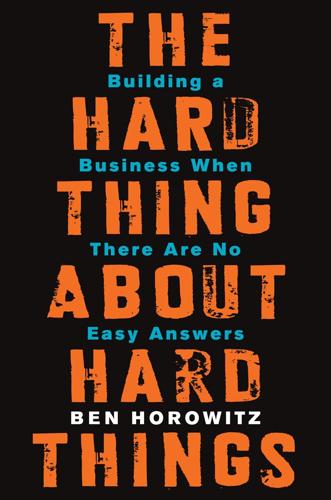
The Hard Thing About Hard Things: Building a Business When There Are No Easy Answers
by
Ben Horowitz
Published 4 Mar 2014
Then, just two weeks before the launch, Marc, without telling Mike or me, revealed the entire strategy to the publication Computer Reseller News. I was livid. I immediately sent him a short email: To: Marc Andreessen Cc: Mike Homer From: Ben Horowitz Subject : Launch I guess we’re not going to wait until the 5th to launch the strategy. — Ben Within fifteen minutes, I received the following reply. To: Ben Horowitz Cc: Mike Homer, Jim Barksdale (CEO), Jim Clark (Chairman) From: Marc Andreessen Subject: Re: Launch Apparently you do not understand how serious the situation is. We are getting killed killed killed out there. Our current product is radically worse than the competition.
…
Mosaic was essentially a graphical interface to the Internet—a technology formerly only used by scientists and researchers. It amazed me. It was so obviously the future, and I was so obviously wasting my time working on anything but the Internet. Several months later, I read about a company called Netscape, which had been cofounded by former Silicon Graphics founder Jim Clark and Mosaic inventor Marc Andreessen. I instantly decided that I should interview for a job there. I called a friend who worked at Netscape and asked if he could get me an interview with the company. He obliged and I was on my way. During the first interviews, I met everyone on the product management team. I thought the meetings went well, but when I arrived home that evening Felicia was in tears.
…
Given that we had three children, she knew this was unrealistic, hence the tears. I explained that recruiters were not hiring managers, and that they might consider me despite my lack of proper business schooling. The next day the hiring manager called back to let me know that they wanted me to interview with cofounder and Chief Technical Officer Marc Andreessen. He was twenty-two years old at the time. In retrospect, it’s easy to think both the Web browser and the Internet were inevitable, but without Marc’s work, it is likely that we would be living in a very different world. At the time most people believed only scientists and researchers would use the Internet.

Valley of Genius: The Uncensored History of Silicon Valley (As Told by the Hackers, Founders, and Freaks Who Made It Boom)
by
Adam Fisher
Published 9 Jul 2018
Every single high-quality engineer I have ever met, I recruited here. I made a commitment to not try to recruit them wherever I go. And I do not have any ideas about what I am going to do.” He says, “You should call Marc Andreessen.” I said, “Who is that?” He went over, he pulled a web browser down from University of Illinois, opened a search, and typed, “Marc Andreessen.” It came up with this page and he says, “There you go. Just read that,” and walked away. Marc Andreessen: Mosaic was very successful and so I had gotten a whole bunch of job offers coming out of school. I had spent my whole life in the Midwest, so I knew I wanted to be on a coast.
…
Suddenly you had a unified front end for the internet. Netscape was founded by two people: Jim Clark and Marc Andreessen. At the time Jim Clark was already a Silicon Valley legend. In grad school in the seventies, Clark had worked out the fundamental math behind what eventually came to be called virtual reality. In the eighties he put all that math into a silicon chip, which became the basis for Silicon Graphics Incorporated (SGI), one of the decade’s highest-flying computer companies. Then in the nineties Clark abruptly quit SGI and teamed up with Marc Andreessen—a young Silicon Valley newbie—to form Netscape. The mission was to rebuild and reimagine the NCSA Mosaic browser—they were going to drag the web out of its ivory tower.
…
SGI was a company that primarily made what would now be called a graphics processing unit. The company grew to be quite large, $4 billion a year and ten thousand employees. Marc Andreessen: Silicon Graphics at that time was what Google is today—the best technology company in the Valley. It was the one that everyone wanted to work at. They were just phenomenal technologists with phenomenal products. Jim Clark: SGI was a hardware business, and it became a workstation business, and we ended up being the biggest high-end workstation company out there. Marc Andreessen: It was just a great company. John Giannandrea: Jim was like this macho kind of hardware guy. He would come into the lab late at night and say, “What the fuck is this!”

Life After Google: The Fall of Big Data and the Rise of the Blockchain Economy
by
George Gilder
Published 16 Jul 2018
Regardless of Szabo’s specific role, he is the most original and interesting thinker in the bunch, and his bitgold paper is prophetic. 6. George Gilder, Telecosm: The World after Bandwidth Abundance (New York: Simon & Schuster, 2000), 116–17. This Marc Andreessen riff was first published in Forbes ASAP as “The Coming Software Shift” and republished by Rich Karlgaard in 1996 under the Forbes American Heritage label in a collection of my ASAP articles entitled Telecosm. 7. Ira Stoll, Silicon Snake Oil: Second Thoughts on the Information Highway (New York: Doubleday, 1995). 8. Marc Andreessen, “Why Bitcoin Matters,” New York Times, January 21, 2014. Chapter 12: Finding Satoshi 1. Think of this as a proposed screenplay for a historic docudrama on Satoshi.
…
Thank you. We also would like your mobile number. We value your cooperation. You also might wish to read a number of other books that our algorithm has selected on the basis of the online choices of people like you. These works explain how “software is eating the world,” as the venture capitalist Marc Andreessen has observed, and how Google’s search and other software constitute an “artificial intelligence” (AI) that is nothing less than “the biggest event in human history.” Google AI offers uncanny “deep machine learning” algorithms that startled even its then chairman, Eric Schmidt, by outperforming him and other human beings in identifying cats in videos.
…
More likely co-conspirators in the Satoshi doll’s crypto-layers are Adam Back, the British inventor of the analogous HashCash anti-spam email program, which provided an important function to bitcoin; or Finney, the Ayn Randian cypherpunk author of the most successful crypto-program in history, PGP 2.0, and the first miner of bitcoins; or Nick Szabo, the answer to three sophisticated textual searches that found Szabo’s prose statistically more akin to Nakomoto’s than that of any other suspected Satoshista.5 Szabo is a polymath crypto-scholar historian, an early expert on Internet pseudonymity, and the author of an influential paper—suspiciously unreferenced in the Satoshi white paper—proposing BitGold, a precursor of bitcoin. Some people think, in defiance of Szabo’s own protests, that he is actually Satoshi. But these cyberpunks and ponytails are just the teetering tip of the cyberberg. The man of the moment at the Bitcoin Summit in San Francisco in March 2014 is Marc Andreessen, perhaps the world’s bellwether venture capitalist, who became famous as the curmudgeonly young inventor of the first popular Internet browser, Mosaic. Launched in 1992 from the National Center for Supercomputing Applications at the University of Illinois, Mosaic in six months brought a million new customers onto the World Wide Web.
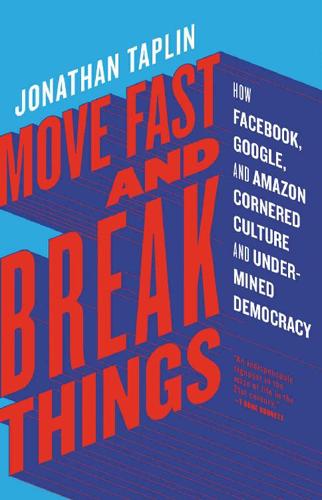
Move Fast and Break Things: How Facebook, Google, and Amazon Cornered Culture and Undermined Democracy
by
Jonathan Taplin
Published 17 Apr 2017
Monopoly, control of our data, and corporate lobbying are at the heart of this story of the battle between creative artists and the Internet giants, but we need to understand that every one of us will stand in the shoes of the artist before long. Musicians and authors were at the barricades first because their industries were the first to be digitized. But as the venture capitalist Marc Andreessen has said, “Software is eating the world,” and soon the technologists will be coming for your job, too, just as they will continue to come for more of your personal data. The rise of the digital giants is directly connected to the fall of the creative industries in our country. I would put the date of the real rise of digital monopolies at August of 2004, when Google raised $1.67 billion in its initial public offering.
…
Morgan, has the country faced such a concentration of wealth and power. Peter Orszag and Jason Furman, economic advisers to President Obama, have argued that the fortunes created by the digital revolution may have done more to increase economic inequality than almost any other factor. Despite Marc Andreessen’s and Peter Thiel’s belief that the outsize gains of tech billionaires are the result of a genius entrepreneur culture, inequality at this scale is a choice—the result of the laws and taxes that we as a society choose to establish. Contrary to what techno-determinists want us to believe, inequality is not the inevitable by-product of technology and globalization or even the lopsided distribution of genius.
…
Since Reddit’s purchase by Condé Nast in 2006, the site has tried to rein in the most outrageous subreddits. But the task of reining in the ultralibertarian Reddit community became too much, and in the fall of 2011 Condé Nast sold off a large share of Reddit to a group led by Sam Altman, Peter Thiel, and Marc Andreessen. At the debate, Ohanian proudly mentioned his personal consumption of “free music and movies” available on the Internet, going so far as to say that musicians such as The Band need to earn their money from touring. From his point of view, Levon Helm had no right to make money from old recordings.

The Power Law: Venture Capital and the Making of the New Future
by
Sebastian Mallaby
Published 1 Feb 2022
BACK TO NOTE REFERENCE 5 Milner, author interviews. BACK TO NOTE REFERENCE 6 Julia Boorstin, “Facebook Scores $200 Million Investment, $10 Billion Valuation,” CNBC, May 26, 2009, cnbc.com/id/30945987. BACK TO NOTE REFERENCE 7 Dan Primack, “Marc Andreessen Talks About That Time Facebook Almost Lost 80% of Its Value,” Fortune, June 18, 2015, fortune.com/2015/06/18/marc-andreessen-talks-about-that-time-facebook-almost-lost-80-of-its-value. BACK TO NOTE REFERENCE 8 Milner, author interviews. BACK TO NOTE REFERENCE 9 Milner, author interviews. BACK TO NOTE REFERENCE 10 Following his initial investment in Facebook, Milner had continued to accumulate stock from ex-employees and early investors, ending up with shares worth $800 million by the end of 2010.
…
On the other hand, video games and social media promote screen addiction and fake news, even as they entertain, inform, and allow Grandma to admire pictures of her distant grandchildren. The gap between VC rhetoric and VC practice is easily mocked. In April 2020, in the throes of the coronavirus pandemic, the venture capitalist Marc Andreessen proclaimed that it was “time to build.” “Where are the high-speed trains, the soaring monorails, the hyperloops, and yes, the flying cars?” he demanded.[37] The following month Andreessen’s partnership invested in Clubhouse, an invitation-only social-media app. Meanwhile, the venture industry’s expansive pronouncements stand in contrast to the narrowness of its monoculture.
…
The truth is that the distinguishing genius of the Valley lies not in its capacity for invention, countercultural or otherwise.[8] The first transistor was created in 1947, not in Silicon Valley, but at Bell Labs in New Jersey. The first personal computer was the Altair, created in New Mexico. The first precursor of the worldwide web, the network-management software Gopher, was from Minnesota. The first browser was developed by Marc Andreessen at the University of Illinois. The first search engine, Archie, was invented by Alan Emtage at McGill University in Montreal. The first internet-based social-networking site was SixDegrees.com, launched by Andrew Weinreich in New York City. The first smartphone was the Simon Personal Communicator, developed by Frank Canova at IBM’s lab in Boca Raton, Florida.[9] No single geography—not even Silicon Valley—dominates invention.

The New New Thing: A Silicon Valley Story
by
Michael Lewis
Published 29 Sep 1999
Next Clark talked about creating new applications for the telecomputerthere was a lot that could be done with the device, once a lot of people owned one. To do that he needed young software talent, and to that end he called a twentytwo-year-old not long out of the University of Illinois and new to the Valley named Marc Andreessen. Clark had seen a piece of software that Andreessen had helped write in college, called Mosaic. Mosaic enabled its user to travel around the Internet. Why anyone would wish to do so was at the time unclear. About the first thing Andreessen said was that he didn't want to make a business of Mosaic.
…
He needed to find some more software cowboys to replace the ones he'd left behind. "I was desperate to find some smart engineers because I knew I wanted to start a company," he says. "And Marc knew a bunch of them from school." For the next month or so Alex Slusky ate his dinners with Jim Clark and Marc Andreessen. Clark would spew ideas; Andreessen would jot them up in a business plan. Almost all of these ideas assumed the telecomputer under construction in Orlando, Florida, was the future. After all, Time Warner said it would spend five billion dollars to make it happen. By that point every big media and software company in the United States was intoxicated by the idea.
…
Six months after he founded Netscape, Clark agitated for the company to go public. The company had few revenues, no profits, and a lot of new employees. No one else inside the company thought it should do anything but keep its head down and try to become a viable enterprise. ''Jim was pressing for us to go public way before anyone else," recalls Marc Andreessen. It turned out there was a reason for this. He'd seen a boat called Juliet. He wanted one just like it, only bigger. To get it he needed more money. By then the decision was not Clark's alone to make. The company had hired a big-name CEO, Jim Barksdale, and had a proper board of directors. Barksdale didn't want to go public.

The Code: Silicon Valley and the Remaking of America
by
Margaret O'Mara
Published 8 Jul 2019
By the time Java and Netscape Navigator entered the market in short order in the spring of 1995, Gates and his colleagues had realized that not only would the Internet world grow large, but it might consume Microsoft’s core business altogether. Marc Andreessen was another Bill Gates: he didn’t just want to build a piece of software; he wanted to create an entirely new platform that would make Microsoft’s OS irrelevant. And like 1980-vintage Bill Gates, 1995-vintage Marc Andreessen wasn’t subtle about his sweeping ambitions to pummel Windows so thoroughly that the market behemoth would be little more than “a poorly debugged set of device drivers.”6 Gates decided it was time to write a memo to his senior staff explaining what Microsoft must do.
…
Hundreds of places around the world have rebranded themselves Silicon Deserts, Forests, Roundabouts, Steppes, and Wadis as they seek to capture some of the original’s magic. Its rhythms dictate how every other industry works; alter how humans communicate, learn, and collectively mobilize; upend power structures and reinforce many others. As one made-in-the-Valley billionaire, Marc Andreessen, put it a few years back, “software is eating the world.”4 This book is about how we got to that world eaten by software. It’s the seven-decade-long tale of how one verdant little valley in California cracked the code for business success, repeatedly defying premature obituaries to spawn one generation of tech after another, becoming a place that so many others around the world have tried and failed to replicate.
…
Created by a group of graduate students at the University of Illinois supercomputer center who were tired of the text-only HTML environment of the earliest Web, Mosaic turned the Internet into an immersive, colorful, point-and-click experience. Within months of its 1993 release, the new browser had seized the imagination of Silicon Valley insiders. Its chief student inventor, Marc Andreessen, headed west to capitalize on the excitement. Andreessen found a first landing spot in the scrubby cubicles of EIT, where Marty Tenenbaum was busily building his e-commerce platform and knew that a good, graphical browser was essential to bringing customers online. But within months, the twenty-three-year-old Andreessen had been lured away from Tenenbaum’s shoestring operation by a plump paycheck waved by Jim Clark, a former Stanford computer scientist who had founded Silicon Graphics.
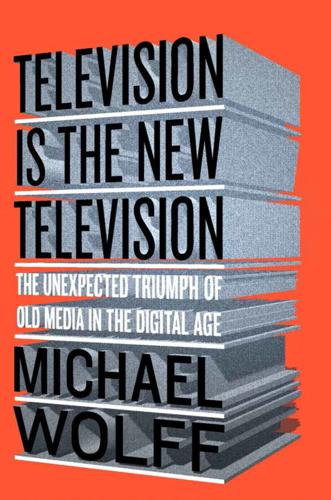
Television Is the New Television: The Unexpected Triumph of Old Media in the Digital Age
by
Michael Wolff
Published 22 Jun 2015
The implication is that Rome burns while Moonves is paid, and yet, as though in deadpan support of his own larger point about video undergoing a digital revolution, Auletta adds that CBS’s share price was twenty times higher than at its lowest point in 2009 and that almost half of its revenues come “from its overseas sales, which totaled $1.1 billion last year, and from licensing deals with cable and digital platforms such as Verizon FiOS and Netflix; Netflix pays CBS and Fox about two hundred and fifty million dollars each to let it air programs from their archives.” This last is something of a diss at CBS’s falling advertising market, which in fact has remained relatively stable while adding a powerful nonadvertising income stream. Then Marc Andreessen, in his role as prominent digital proselytizer (and with his slate of investments dependent on this view of digital’s leveling of the old world), is up in Auletta’s narrative: The venture capitalist Marc Andreessen, who co-invented Mosaic, the first commercial Internet browser—it later became Netscape—told me, “TV in ten years is going to be one hundred per cent streamed. On demand. Internet Protocol.
…
On the digital side, you had a less august but significantly more cocky group: Jordon Hoffner of YouTube; Kurt Abrahamsen and Adam Stewart from Google in Los Angeles (the home office had passed on the invitation); Mark Kvamme of the venture capital firm Sequoia Capital, which had backed the Web series Funny or Die; and Marc Andreessen, the creator of Netscape, on his way to being among the most significant and influential venture capital figures in Silicon Valley The imbalance was notable and uncomfortable for everyone— or at least for everyone on the old media side. There was, even, a kind of slack-jawed response—perhaps not least of all because Hollywood power is not used to being challenged—to the certainty, impatience, and what rather seemed like the advanced intelligence of the tech side.
…
(At the same time that BuzzFeed was making this argument, its editor, Ben Smith, was acknowledging that it probably wouldn’t be around in three years, or would have transformed into something else.) It’s the twenty-year promise: we’ll eat television’s lunch because, tautologically, we are the future. As per Marc Andreessen, it’s zero-sum. Brand advertising is not going to increase to support both television and digital media; therefore, one lives at the other’s expense. Because digital media is overwhelmingly ad supported, whereas half of television’s income comes from other sources, brand advertising is a particularly pressing issue for the digital business.
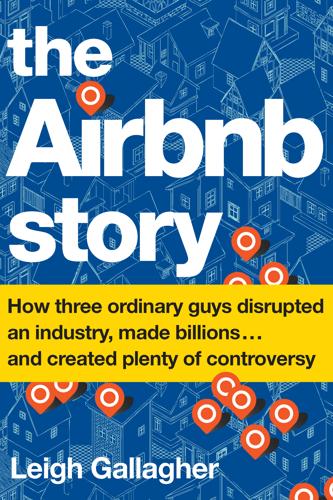
The Airbnb Story: How Three Ordinary Guys Disrupted an Industry, Made Billions...and Created Plenty of Controversy
by
Leigh Gallagher
Published 14 Feb 2017
In Silicon Valley start-up terms, Chesky, Gebbia, and Blecharczyk had achieved what’s known as “product/market fit,” a holy grail, proof-of-life milestone that a start-up hits when its concept has both found a good market—one with lots of real, potential customers—and demonstrated that it has created a product that can satisfy that market. Popularization of the term is often credited to Marc Andreessen, the celebrated technology entrepreneur–turned–venture capitalist–turned–philosopher-guru to legions of start-up founders in Silicon Valley. Thousands of start-ups fail trying to get to this point. Product/market fit is a key first achievement; without it, there is no company. Another way of saying this is Y Combinator’s mantra that the company has to “make something people want.”
…
Chesky, Gebbia, and Blecharczyk, the executive team, and the company’s entire customer-service department, including a dozen or so who had flown in from remote posts, were there almost 24/7 in the coming weeks—they pulled in air mattresses, but no one laughed at the irony—and the founders had their entire team of advisers weighing in, too. Their newest investors, Andreessen Horowitz, split their duties into two shifts at one point, Jeff Jordan, general partner and new Airbnb board member, handling days and Marc Andreessen taking over for nights. (The megaround of funding had just been announced, and many felt it was the attention around the publicity of the news that caused EJ’s story to get picked up and go viral.) Yet everyone had a different opinion on how to handle the crisis. Some argued that taking any responsibility would just open the door to more complaints; others said the company should admit that it dropped the ball; still others said they should just retreat and stay completely quiet.
…
He announced a twenty-four-hour customer hotline—something EJ had said they should have had in place—and said they were doubling customer support. All of this went against the advice Chesky was receiving. “People were, like, ‘We need to discuss this, we need to do testing,’” he said, “and I said, ‘No, we’re doing this.’” The one piece of advice he did take: Marc Andreessen, who gave the letter a close read at midnight, told Chesky to add his personal e-mail address to the letter of apology, and he added a zero, changing the guarantee from $5,000 to $50,000. (The San Francisco Police Department subsequently confirmed that it had made an arrest. Airbnb says there was a settlement in the case but declined to comment more than that.)
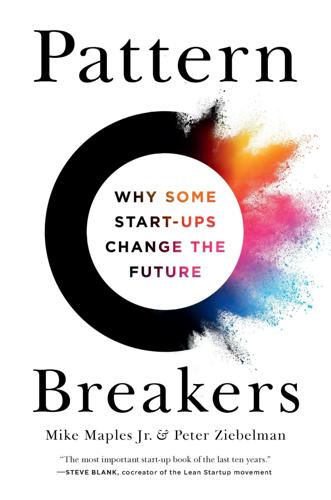
Pattern Breakers: Why Some Start-Ups Change the Future
by
Mike Maples
and
Peter Ziebelman
Published 8 Jul 2024
Conditions for success For this inflection to fulfill its potential: • enough patients need to continue to want to have a meaningful share of their visits occur remotely; • enough doctors need to continue to want remote visits as well; • regulators need to allow patients and doctors to exercise their preferences; • the standard of care for remote visits relative to in-person visits needs to be good enough to justify them after things return to normal; • the new regulation needs to persist after the pandemic ends. 3 TIMING IS EVERYTHING One of the Dumbest Ideas Ever and How It Broke Through My belief has always been that timing is the major variable. It’s the major form of entrepreneurial risk in the tech industry, and I think maybe by a wide margin. —Marc Andreessen, venture capitalist, innovator, and creator We’ve defined an inflection as a change that a start-up can exploit to radically alter how people think, feel, and act. We’ve also suggested that exploiting an inflection’s potential to change the future requires combining the new thing with people’s willingness to exercise the new power it gives them—and that brings us to the importance of timing.
…
Where is the best place to look for them? How do you determine whether you are on to something or not? Those answers come next. 6 LIVING IN THE FUTURE Where You Will Find Your Next Insight The future is already here; it’s just not evenly distributed. —William Gibson, author, coined the term “cyberpunk” Marc Andreessen was a student at the University of Illinois in the winter of 1992, earning minimum wage as a programmer at the school’s National Center for Supercomputing Applications (NCSA). Despite his meager earnings, he found more important riches in the next-generation technology that surrounded him. NCSA was a hub for supercomputing and high-speed networking, bolstered by generous funding from the government’s National Science Foundation.
…
In his efforts to network computers at the lab to share one of the world’s first laser printers, he came to believe that his insights into interconnectivity would be valid someday for most computer users. This led him to start 3Com, one of the first major PC Ethernet companies. His insight was spot-on. Ethernet emerged as the leading networking standard due to its simplicity, adaptability, and versatility, seamlessly integrating local and wide area networks. Marc Andreessen and Bob Metcalfe both tackled issues rooted in their advanced computing experiences, anticipating that their solutions would become essential for the broader public as technology evolved to match their current environment. Crucially, in both instances, Marc and Bob didn’t need to discard old habits to develop innovative solutions.
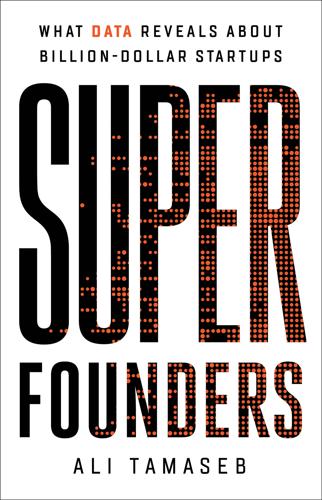
Super Founders: What Data Reveals About Billion-Dollar Startups
by
Ali Tamaseb
Published 14 Sep 2021
Finally, make sure to check in with yourself and your co-founders to determine if you actually are still passionate about building a company in this new market or for this new customer. If you don’t see yourself following your vision for the next ten years, perhaps shutting down and returning investor money, if there’s any left, is a better idea. 7 WHAT AND WHERE? “Software Is Eating the World,” Marc Andreessen famously wrote in the Wall Street Journal in 2011.1 Andreessen, the founder of Netscape and the world-renowned VC firm Andreessen Horowitz, highlighted a number of examples to prove his point: the world’s largest store, Amazon, was a software company; everyone was watching movies on Netflix; and the dominant music companies were iTunes, Spotify, and Pandora—all software makers.
…
Affirm’s mission is to revolutionize finance to be more honest and transparent, an undertaking that has resonated particularly with the younger generation. Affirm was valued at over $20 billion in its IPO in 2021. I sat down with Max to hear the stories of PayPal and Affirm. I was a computer science major at the University of Illinois at Urbana-Champaign in 1993, the same year when Netscape [one of the first web browsers, co-founded by Marc Andreessen] was born on my campus. At the time, I had a very clearly defined academic track that I’d figured out for myself. I was going to get a doctorate and teach and be a researcher for the rest of my life. One day, two friends said, “Hey, there’s no glory in doing research. You should come start a company with us.”
…
We will look into these in the next chapter. 10 MARKET TIMING There are no bad ideas. There are only early ideas.… They’ll all happen. I’ve become convinced.… Every smart person that comes in here with a crazy idea, it’s all going to happen at some point. They will all happen. It’s just a question of when. —MARC ANDREESSEN, FOUNDER OF NETSCAPE AND ANDREESSEN HOROWITZ In 1995, General Magic, the startup company where Tony Fadell worked, built an early version of a smartphone. The hybrid telephone-computer was unlike anything the industry had seen before. But it never caught on—the technology for touch screens was in its infancy, the processors consumed a lot of energy that strangled the battery life, and very few people were using email.
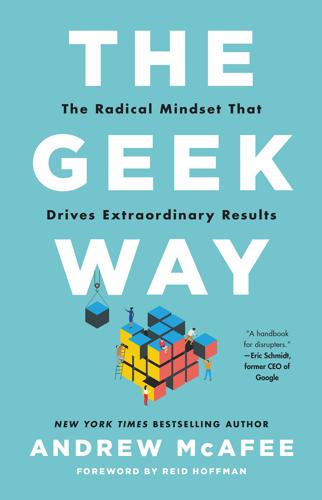
The Geek Way: The Radical Mindset That Drives Extraordinary Results
by
Andrew McAfee
Published 14 Nov 2023
Ben Horowitz was in charge of some of Netscape’s important strategic countermoves, which were going to be announced at a splashy launch event in New York on March 5, 1996. However, these countermoves were revealed a couple weeks early by Marc Andreessen, the inventor of one of the first web browsers and, at the age of twenty-two, cofounder of Netscape. Andreessen revealed Netscape’s strategy in an interview for Computer Reseller News. Horowitz was not pleased about the interview, and wrote Andreessen a short email: To: Marc Andreessen Cc: [Horowitz’s boss] From: Ben Horowitz Subject: Launch I guess we’re not going to wait until the 5th to launch the strategy. —Ben In less than fifteen minutes, Andreessen wrote back: To: Ben Horowitz Cc: [Horowitz’s boss], [Netscape CEO], [Netscape Chairman] From: Marc Andreessen Subject: Re: Launch Apparently you do not understand how serious the situation is.
…
Davidson, Creative Insight: The Social Dimension of a Solitary Moment (Cambridge, MA: MIT Press, 1996), 329–63. 50 Horowitz was not pleased: Ben Horowitz, The Hard Thing About Hard Things (New York: HarperBusiness, 2014), loc. 13–14, Kindle. 51 “More shocking, Marc and I eventually became friends”: Horowitz, Hard Thing, loc. 14, Kindle. 52 In a 2016 interview: Tim Ferriss, “Marc Andreessen (#163),” The Tim Ferriss Show, podcast, accessed February 14, 2023, https://tim.blog/2018/01/01/the-tim-ferriss-show-transcripts-marc-andreessen/. 53 dates to the mid-1960s: Edgar H. Schein and Warren G. Bennis, Personal and Organizational Change Through Group Methods: The Laboratory Approach (New York: Wiley, 1965). 54 men are generally more assertive than women: Scott Barry Kaufman, “Taking Sex Differences in Personality Seriously,” Scientific American, December 12, 2019, https://blogs.scientificamerican.com/beautiful-minds/taking-sex-differences-in-personality-seriously/. 55 neuroatypical people: Xin Wei, Jennifer W.
…
—Ben In less than fifteen minutes, Andreessen wrote back: To: Ben Horowitz Cc: [Horowitz’s boss], [Netscape CEO], [Netscape Chairman] From: Marc Andreessen Subject: Re: Launch Apparently you do not understand how serious the situation is. We are getting killed killed killed out there. Our current product is radically worse than the competition. We’ve had nothing to say for months. As a result, we’ve lost over $3B in market capitalization. We are now in danger of losing the entire company and it’s all server product management’s fault. Next time do the fucking interview yourself. Fuck you, Marc Ignore Andreessen’s swearing for now (we’ll come back to it soon).
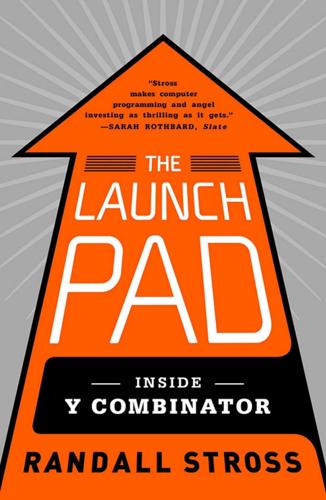
The Launch Pad: Inside Y Combinator, Silicon Valley's Most Exclusive School for Startups
by
Randall Stross
Published 4 Sep 2013
For Dubai, see SeedStartup, described in Rip Empson, “Founder of Dubai’s First Startup Accelerator Looks to Educate, Inspire Global Entrepreneurs,” TC, April 4, 2012, http://techcrunch.com/2012/04/04/founder-of-dubais-first-startup-accelerator-looks-to-educate-inspire-global-entrepreneurs/. EPILOGUE 1. Zach Sims, “Investors++: Gearing up for a New Codecademy,” Codecademy.com, June 19, 2012, www.codecademy.com/en/blog/20-investors-gearing-up-for-a-new-codecademy. 2. Marc Andreessen, “Why Andreessen Horowitz Is Investing in Rap Genius,” Rap Genius, accessed April 24, 2013, http://rapgenius.com/Marc-andreessen-why-an dreessen-horowitz-is-investing-in-rap-genius-lyrics. 3. Kim-Mai Cutler and Josh Constine, “Facebook Buys Parse to Offer Mobile Development Tools as Its First Paid B2B Service,” TC, April 25, 2013, http://techcrunch .com/2013/04/25/facebook-parse/. 4.
…
There are literally thousands of startups, dispersed along the sixty-mile corridor that extends between San Francisco and San Jose, but they all operate under secrecy until they are ready to launch their first product. That’s why there can never be a Gray Line tour of Silicon Valley’s future. It’s a shame, because this place is creating everyone’s future. Software is eating the world—the venture capitalist Marc Andreessen has come up with a rather catchy way of describing the disruption, under way or coming soon, to industries seemingly distant from the tech world. Software-based startups will do much of the disrupting. They take advantage of cloud-based Internet services that make computing power a utility, easily tapped, and whose cost has dropped a hundredfold in the ten years since first introduced.
…
Initially, YC was the only seed fund whose portfolio companies automatically received a six-figure investment from outside investors. By the end of 2011, some investors in other places had stepped forward to make similar, if smaller, offers to participants in other programs that funded batches of startups. Marc Andreessen’s firm, Andreessen Horowitz, liked the blanket-investment approach so much it decided to invest in every startup in an entire portfolio—and chose to work with YC. A tour bus disgorging gawking tourists would not be welcomed at YC, but perhaps an author would be permitted to take up residency and observe quietly.

This Is for Everyone: The Captivating Memoir From the Inventor of the World Wide Web
by
Tim Berners-Lee
Published 8 Sep 2025
The project was a collaboration between the Vatican, the Library of Congress – which had had a physical exhibition and scanned the pictures – and a Dutchman who knew about the web. Not the first time people would collaborate across the internet, but a dramatically beautiful example. • In January 1993, Marc Andreessen, an undergraduate student at the University of Illinois, sent a note to the www-talk mailing list, soliciting test users for a new browser he called ‘Mosaic’. Mosaic was a Unix-based browser that started simply but evolved rapidly, with updated versions delivered every couple of weeks. I added a download link for Mosaic to the info.cern.ch server and encouraged others to experiment with it.
…
Another went to Oliver McBryan at the University of Colorado, who’d coded the World Wide Web Worm, one of the first search engines. Although these ideas were in germinal form, each would later become a ubiquitous technology. The dinner also featured the inaugural induction ceremony to the World Wide Web Hall of Fame. Six of us were inaugurated, including Marc Andreessen and myself. The following day featured a panel discussion on the future of the web – standing room only, as you can see. The first web conference at CERN. The main auditorium was packed! As the web’s inventor, I was asked to deliver the wrap-up speech. In the weeks leading up to the conference, I had begun to consider some of the web’s emergent properties, properties which only became apparent at scale.
…
• About the time I arrived in New England, a former financial analyst named Jeff Bezos was driving cross-country from New York to Seattle with his wife, Mackenzie. Along the way the two discussed potentially lucrative web businesses, settling, ultimately, on a retail bookseller called Amazon. Meanwhile, Marc Andreessen, following graduation from the University of Illinois, departed the cornfields for Silicon Valley. Much of his team from the NCSA followed, and with the support of Silicon Graphics founder Jim Clark, they began to build a follow-up browser to Mosaic called Netscape Navigator. Simultaneously, in late 1994, Bill Gates acquired Spyglass, a small spin-off from the NCSA, with the intention of extending the platform dominance of Windows with a browser of his own.

Digital Gold: Bitcoin and the Inside Story of the Misfits and Millionaires Trying to Reinvent Money
by
Nathaniel Popper
Published 18 May 2015
This was the most casual dinner of the three-day event, with unassigned seating and a buffet to accommodate the guests arriving at uneven intervals. Wences took notice as the big names showed their faces: Twitter’s chief executive, Dick Costolo; LinkedIn’s founder Reid Hoffman; Rupert Murdoch’s son, James; and perhaps the most recognizable venture capitalist in Silicon Valley, Marc Andreessen, an enormous man with a shiny bald head. Wences found his way to a table with another budding Bitcoin nut, Chris Dixon, one of the up-and-coming stars at Andreessen’s firm, Andreessen Horowitz. The men quickly began comparing ideas. Dixon explained that he had gotten excited about the importance of the blockchain protocol as a new way of moving value around the world, just as the Internet protocol had provided a decentralized way to move information.
…
In the month before the Arizona conference, Thiel himself had been poking around in the virtual-currency space once again, looking for projects that might take advantage of the blockchain, without getting too bound up in a currency that could piss off government officials. Chris Dixon, Wences’s conversation partner at that Arizona dinner, had also been agitating to get his firm, Andreessen Horowitz, to look at cryptocurrency startups and had been finding a receptive ear in his boss, Marc Andreessen. They had both found their way to the new company being created by Jed McCaleb, the original founder of Mt. Gox. Jed’s new company, named Ripple, was a cryptographic network that could be used to send any currency, not just Bitcoins. That made it less threatening to governments and banks and more attractive to people like Andreessen and Thiel, who both offered small seed investments.
…
If the chips worked as promised they would mint money for investors. This was a simple enough proposition, and the price of Bitcoin was rising fast enough that it attracted interest from venture capitalists who were still queasy about tying their firms to Bitcoin. Both of the founders of Andreessen Horowitz, Marc Andreessen and Ben Horowitz, signed up to put some of their own personal money into Balaji’s project, as did several of the original founders of PayPal, including Peter Thiel and David Sacks. Soon enough, Balaji was closing in on a $5 million fund-raising round. The Bitcoin arms race had begun. THE TYPE OF chip was not the only thing about Bitcoin mining that had changed since late 2010.

The Innovators: How a Group of Inventors, Hackers, Geniuses and Geeks Created the Digital Revolution
by
Walter Isaacson
Published 6 Oct 2014
Author’s interview with Marc Andreessen. 37. Author’s interview with Marc Andreessen. 38. Robert Reid, Architects of the Web (Wiley, 1997), 7. 39. Gillies and Cailliau, How the Web Was Born, 239; alt.hypertext Newsgroup, Friday, Jan. 29, 1993, 12:22:43 GMT, http://www.jmc.sjsu.edu/faculty/rcraig/mosaic.txt. 40. Author’s interview with Marc Andreessen. 41. Gillies and Cailliau, How the Web Was Born, 240. 42. Author’s interview with Marc Andreessen. 43. Berners-Lee, Weaving the Web, 70; author’s interview with Tim Berners-Lee. 44. Author’s interview with Marc Andreessen. 45. Author’s interview with Tim Berners-Lee. 46.
…
Ted Nelson, “Computer Paradigm,” http://xanadu.com.au/ted/TN/WRITINGS/TCOMPARADIGM/tedCompOneLiners.html. 49. Jaron Lanier interview, by Eric Allen Bean, Nieman Journalism Lab, May 22, 2013. 50. John Huey, Martin Nisenholtz, and Paul Sagan, “Riptide,” Harvard Kennedy School, http://www.niemanlab.org/riptide/. 51. Author’s interview with Marc Andreessen. 52. Author’s interview with Tim Berners-Lee. 53. Author’s interview with Marc Andreessen. 54. John Markoff, “A Free and Simple Computer Link,” New York Times, Dec. 8, 1993. 55. This section is primarily based on my interviews with Justin Hall and his own postings at http://www.links.net/. 56. Justin Hall, “Justin’s Links,” http://www.links.net/vita/web/story.html. 57.
…
Richard Stallman begins developing GNU, a free operating system. 2011 1984 Apple introduces Macintosh. 1985 Stewart Brand and Larry Brilliant launch The WELL. CVC launches Q-Link, which becomes AOL. 1991 Linus Torvalds releases first version of Linux kernel. Tim Berners-Lee announces World Wide Web. 1993 Marc Andreessen announces Mosaic browser. Steve Case’s AOL offers direct access to the Internet. 1994 Justin Hall launches Web log and directory. HotWired and Time Inc.’s Pathfinder become first major magazine publishers on Web. 1995 Ward Cunningham’s Wiki Wiki Web goes online. 1997 IBM’s Deep Blue beats Garry Kasparov in chess. 1998 Larry Page and Sergey Brin launch Google. 1999 Ev Williams launches Blogger. 2001 Jimmy Wales, with Larry Sanger, launches Wikipedia. 2011 IBM’s computer Watson wins Jeopardy!

On the Edge: The Art of Risking Everything
by
Nate Silver
Published 12 Aug 2024
GO TO NOTE REFERENCE IN TEXT 2023 “Techno-Optimist Manifesto”: Marc Andreessen, “The Techno-Optimist Manifesto,” Andreessen Horowitz, October 16, 2023, a16z.com/the-techno-optimist-manifesto. GO TO NOTE REFERENCE IN TEXT “being uniquely careful”: Vitalik Buterin, “My Techno-Optimism,” Vitalik Buterin’s Website (blog), November 27, 2023, vitalik.eth.limo/general/2023/11/27/techno_optimism.html#ai. GO TO NOTE REFERENCE IN TEXT a given fund: Per interview with Marc Andreessen. GO TO NOTE REFERENCE IN TEXT sworn to secrecy: Chamath Palihapitiya et al., “#AIS: FiveThirtyEight’s Nate Silver on How Gamblers Think,” All-In with Chamath, Jason, Sacks & Friedberg, 2022, podcasts.apple.com/ie/podcast/ais-fivethirtyeights-nate-silver-on-how-gamblers-think/id1502871393?
…
Julie Beck, “The Coddling of the American Mind ‘Is Speeding Up,’ ” The Atlantic, September 18, 2018, theatlantic.com/education/archive/2018/09/the-coddling-of-the-american-mind-is-speeding-up/570505. GO TO NOTE REFERENCE IN TEXT Andreessen, who had: Dawn Chmielewski, “Asked Why He Supports Clinton over Trump, Marc Andreessen Responds: ‘Is That a Serious Question?,’ ” Vox, June 14, 2016, vox.com/2016/6/14/11940052/marc-andreessen-donald-trump-hillary-clinton. GO TO NOTE REFERENCE IN TEXT the “cross hairs”: Mike Isaac, “Facebook, in Cross Hairs After Election, Is Said to Question Its Influence,” The New York Times, November 12, 2016, nytimes.com/2016/11/14/technology/facebook-is-said-to-question-its-influence-in-election.html.
…
But on the “personality cluster”—competitiveness, risk tolerance, independent-mindedness often to the point of contrarianism—Silicon Valley is off the charts, even compared to Wall Street. And it is quite proud of this. “We believe in embracing variance, in increasing interestingness,” wrote Marc Andreessen, the Netscape cofounder turned VC whose egg-shaped head is synonymous in the Valley with hard-boiled, stubborn resolve, in his October 2023 “Techno-Optimist Manifesto.” “We believe in risk,” he wrote, italicizing the word “risk,” “in leaps into the unknown.” Even though I didn’t have any sort of network in Silicon Valley, the VCs seemed to recognize me as a fellow Riverian,[*2] someone who shared their interest in “embracing variance” and “increasing interestingness.”
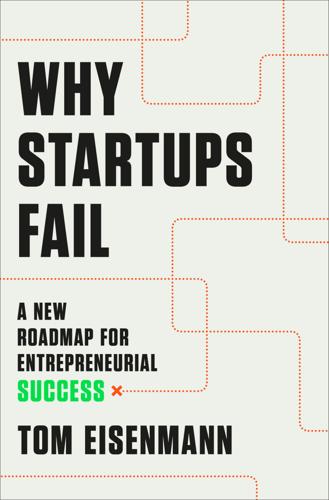
Why Startups Fail: A New Roadmap for Entrepreneurial Success
by
Tom Eisenmann
Published 29 Mar 2021
In early-stage startups: For analysis of early-stage funding decisions, see Brad Feld and Jason Mendelson, Venture Deals: Be Smarter Than Your Lawyer and Venture Capitalist (Hoboken, NJ: Wiley, 2011); Jeffrey Bussgang, Mastering the VC Game: A Venture Capital Insider Reveals How to Get from Start-up to IPO on YOUR Terms (New York: Portfolio, 2011); Jason Calacanis, Angel: How to Invest in Technology Startups (New York: Harper Business, 2017); and Scott Kupor, Secrets of Sand Hill Road: Venture Capital and How to Get It (New York: Portfolio, 2019). As my HBS colleague Bill Sahlman: Wasserman, Founder’s Dilemmas, p. 291. Marc Andreessen suggests: Marc Andreessen, “Part 6: How Much Funding Is Too Little? Too Much?” The Pmarca Guide to Startups website, July 3, 2007. Sticking with the maritime metaphor: Marc Andreessen, “Part 5: The Moby Dick Theory of Big Companies,” The Pmarca Guide to Startups website, June 27, 2007. Dharmesh Shah, “Advice for Partnering with the Big and Powerful: Don’t,” OnStartups blog, Oct. 7, 2008, discusses the same issue.
…
First, minimizing its spending on marketing allows a startup to conserve scarce cash. Also, customers are typically more loyal when they’ve been acquired “organically”—that is, when they’ve sought out a product rather than being drawn to it through advertising. But what if you build it and no one comes? VC Marc Andreessen commented on this possibility: “The number one reason that we pass on entrepreneurs we’d otherwise like to back is focusing on product to the exclusion of everything else. We tend to cultivate and glorify this mentality in the Valley. But the dark side is that it gives entrepreneurs excuses not to do the hard stuff of sales and marketing.
…
Given these trade-offs, some entrepreneurs subscribe to the dictum “Raise as much capital as you can, whenever you can.” Indeed, having access to boatloads of capital can be a competitive weapon if a startup has to confront aggressive rivals. But raising a big round can damage a startup, too, if it allows management to spend in profligate ways. Marc Andreessen suggests that a startup that has raised too much money can “become infected with a culture of complacency, laziness, and arrogance.” Resulting dysfunctions can include 1) over-hiring, with a commensurate slowdown in decision-making as too many managers get involved; and 2) schedule slippage, as employees say, “What’s the urgency?

Blockchain Revolution: How the Technology Behind Bitcoin Is Changing Money, Business, and the World
by
Don Tapscott
and
Alex Tapscott
Published 9 May 2016
July 19, 2015. https://web.archive.org/web/19990427/http://nextmagazine.nl/ecash.htm. 4. http://nakamotoinstitute.org/the-god-protocols/. 5. Brian Fung, “Marc Andreessen: In 20 Years, We’ll Talk About Bitcoin Like We Talk About the Internet Today,” The Washington Post, May 21, 2014; www.washingtonpost.com/blogs/the-switch/wp/2014/05/21/marc-andreessen-in-20-years-well-talk-about-bitcoin-like-we-talk-about-the-internet-today/, accessed January 21, 2015. 6. Interview with Ben Lawsky, July 2, 2015. 7. www.economist.com/news/leaders/21677198-technology-behind-bitcoin-could-transform-how-economy-works-trust-machine. 8. www.coindesk.com/bitcoin-venture-capital/. 9. Fung, “Marc Andreessen.” 10. www.coindesk.com/bank-of-england-economist-digital-currency/. 11.
…
For that, and for all the stimulation and laugh lines, we are very grateful. Our heartfelt thanks to the people below who generously shared their time and insights with us and without whom this book would not be possible. In alphabetical order: Jeremy Allaire, Founder, Chairman, and CEO, Circle Marc Andreessen, Cofounder, Andreessen Horowitz Gavin Andresen, Chief Scientist, Bitcoin Foundation Dino Angaritis, CEO, Smartwallet Andreas Antonopoulos, Author, Mastering Bitcoin Federico Ast, CrowdJury Susan Athey, Economics of Technology Professor, Stanford Graduate School of Business Adam Back, Cofounder and President, Blockstream Bill Barhydt, CEO, Abra Christopher Bavitz, Managing Director, Cyberlaw Clinic, Harvard Law School Geoff Beattie, Chairman, Relay Ventures Steve Beauregard, CEO and Founder, GoCoin Mariano Belinky, Managing Partner, Santander InnoVentures Yochai Benkler, Berkman Professor of Entrepreneurial Studies, Harvard Law School Jake Benson, CEO and Founder, LibraTax Tim Berners-Lee, Inventor, World Wide Web Doug Black, Senator, Canadian Senate, Government of Canada Perriane Boring, Founder and President, Chamber of Digital Commerce David Bray, 2015 Eisenhower Fellow and Harvard Visiting Executive in Residence Jerry Brito, Executive Director, Coin Center Paul Brody, Americas Strategy Leader, Technology Group, EY (formerly IoT at IBM) Richard G.
…
This seemingly subtle act set off a spark that has excited, terrified, or otherwise captured the imagination of the computing world and has spread like wildfire to businesses, governments, privacy advocates, social development activists, media theorists, and journalists, to name a few, everywhere. “They’re like, ‘Oh my god, this is it. This is the big breakthrough. This is the thing we’ve been waiting for,’” said Marc Andreessen, the cocreator of the first commercial Web browser, Netscape, and a big investor in technology ventures. “‘He solved all the problems. Whoever he is should get the Nobel Prize—he’s a genius.’ This is the thing! This is the distributed trust network that the Internet always needed and never had.”5 Today thoughtful people everywhere are trying to understand the implications of a protocol that enables mere mortals to manufacture trust through clever code.
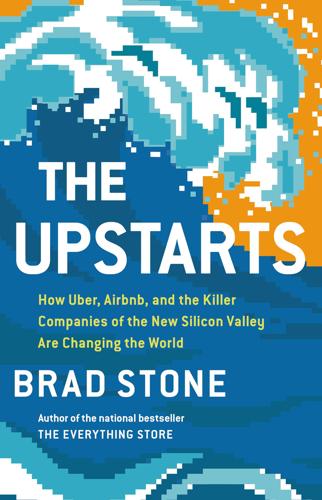
The Upstarts: How Uber, Airbnb, and the Killer Companies of the New Silicon Valley Are Changing the World
by
Brad Stone
Published 30 Jan 2017
The attraction for Kalanick was the same as it had been for Brian Chesky. The firm was led by entrepreneurs Marc Andreessen and Ben Horowitz and known for offering favorable terms at muscular valuations. Like Chesky, Kalanick wanted to enlist the services of Andreessen’s newest partner, Jeff Jordan, an expert in the peculiar dynamics of online marketplaces. At first, Andreessen Horowitz was the most aggressive pursuer, offering to value the startup at more than $300 million. But then Marc Andreessen, the Netscape co-founder, changed his mind and, at dinner with Kalanick, told him that Uber’s financials didn’t yet support such a rich valuation and changed it to $220 million, according to a report in Vanity Fair.12 Though disappointed, Kalanick tentatively agreed to the new terms but then felt further blindsided when he saw the fine print.
…
(Justin.tv later spun off a video-game service, Twitch.tv, which was acquired by Amazon in 2014 for $970 million.) Continuing this education, they attended a one-day event called Startup School, organized by the startup incubator Y Combinator and hosted by Stanford University. The speakers that year included Amazon CEO Jeff Bezos and the investor Marc Andreessen, an inventor of the web browser. But the speech the founders remembered best was by Greg McAdoo, a venture capitalist at the top-tier VC firm Sequoia Capital, a man whom they would soon get to know well. McAdoo spoke about why being a great entrepreneur required the precision of a great surfer.
…
“I was like, ‘Okay, I’m ready.’”12 Hoffman could seize the Airbnb opportunity in part because the other VC firms Chesky approached still didn’t get the concept and weren’t able to look beyond the obvious risks—that someone could get hurt in an Airbnb, or an apartment could get ransacked, or a host could stash a secret video camera somewhere. They couldn’t see a company that might end up appealing not just to twenty-somethings from Europe but to real adults, even retired couples, who were seeking more authentic experiences when they traveled. Marc Andreessen, the Netscape founder and investor, had just started his own venture capital firm with partner Ben Horowitz when he passed on Airbnb’s Series A round of funding. Andreessen liked to say that the goal of their firm, Andreessen Horowitz, was to identify the fifteen or so tech startups every year that actually mattered and back as many of them as possible.13 The firm took a long look at Airbnb and whiffed.

Secrets of Sand Hill Road: Venture Capital and How to Get It
by
Scott Kupor
Published 3 Jun 2019
A few years into my job, on the eve of finishing an IPO for E.piphany, one of the marketing executives I had worked with to help them prepare for the IPO told me he was leaving to join a new startup called LoudCloud. Cofounded by Marc Andreessen, the already revered cofounder of Netscape, LoudCloud was trying to create a compute utility (much like Amazon Web Services has now created). Among the other cofounders was Ben Horowitz. This was the fall of 1999, and the dot-com excitement was in full swing. I had finally opened my eyes to what was happening around me, and I wanted to be a part of it. When my friend at E.piphany offered me the chance to meet Marc Andreessen and Ben Horowitz and see what they were doing, it was too much to pass up. My wife, who was about five months pregnant at the time with our first child and who was busy closing on the first house we were buying together, didn’t see it quite the same way.
…
Prior to this time, the entrepreneurial community was more dispersed, and therefore knowledge sharing between members of the community was decidedly limited. But with knowledge comes power, thus the second material driver of the changing balance of power between entrepreneurs and VCs. Something More And that takes us to the founding of Andreessen Horowitz, started in 2009 by Marc Andreessen and Ben Horowitz. What Marc and Ben saw was this fundamental shift in the landscape that would no longer make access to capital alone a sufficient differentiator for VC firms. Rather, in their view, VCs would need to provide something more than simply capital, for that was becoming a commodity, and instead, in this post-2005 era of VC, firms would need to compete for the right to fund entrepreneurs by providing something more.
…
For the other half of you, you just broke out in a nervous sweat. Don’t worry—I’ll walk you through it and offer up truth, transparency, and insight that, I hope, will help your next meeting with a VC go smoothly. CHAPTER 7 Raising Money from a VC Before you get too excited thinking this is where I give you Marc Andreessen’s secret email address, this chapter simply asks the fundamental questions: Should you raise venture capital? If so, how much? And at what valuation? Once we’ve covered that, in chapter 8 we will get into the more prescriptive (and, for some, sexier) how-to approach of pitching to a VC. But you’re not ready for your pitch until you know what you want, how much, and why.

An Ugly Truth: Inside Facebook's Battle for Domination
by
Sheera Frenkel
and
Cecilia Kang
Published 12 Jul 2021
“Facebook was still small, by Silicon Valley standards, but a lot of people already saw him as the next big thing.” The ideas that Zuckerberg would have been absorbing during his junior year at Harvard were replaced with the philosophies of entrepreneurs like Peter Thiel, the cofounder of PayPal, who had invested $500,000 in Thefacebook in August 2004, and Marc Andreessen, Netscape’s cofounder. As two of the most powerful men in Silicon Valley, they did more than just create and invest in new start-ups: they shaped the ethos of what it meant to be a tech ingénue. That ideology was rooted in a version of libertarianism that embraced innovation and free markets and scorned the overreach of government and regulations.7 At the core was a belief in individual autonomy, inspired by philosophers and writers like John Stuart Mill and Ayn Rand and their advocacy of rationalism and skepticism toward authority.
…
She needed more advertising sales staff, and engineers to design new ad features. Instead, he was hoarding the engineering talent to work on user features. She finally took her complaints to Don Graham, who in late 2008 was named to Facebook’s board of directors, which had expanded to include Marc Andreessen. She asked Graham to intervene and lobby Zuckerberg for more resources on her behalf. As the only board member who worked in a business that also relied on advertising, Graham understood Sandberg’s frustration, but it was hard to convince Zuckerberg to take her concerns seriously. Graham was also mindful of the limits of his role; the company was ultimately Zuckerberg’s.
…
“She said all the right things, but I don’t think most people were convinced,” he recalled. “I wasn’t convinced.” Over the past four years, the partnership between Zuckerberg and Sandberg had found its natural rhythm. When, in June 2012, Sandberg was appointed to Facebook’s board of directors, the first female member to join Marc Andreessen, Erskine Bowles, Jim Breyer, Don Graham, Reed Hastings, and Peter Thiel, Zuckerberg gushed in the press release, “Sheryl has been my partner in running Facebook and has been central to our growth and success over the years.” Sandberg, in turn, confirmed her dedication to the company. “Facebook is working every day to make the world more open and connected.

More Everything Forever: AI Overlords, Space Empires, and Silicon Valley's Crusade to Control the Fate of Humanity
by
Adam Becker
Published 14 Jun 2025
Jeff Bezos has repeatedly said that he wants a trillion people living in space to enable a future of perpetual growth, lest we “stagnate” here on Earth. Elon Musk has been tweeting for years about the importance of going to Mars and beyond to save humanity. “The true battle is: Extinctionists who want a holocaust for all of humanity, versus Expansionists who want to reach the stars and Understand the Universe,” he wrote.8 And Marc Andreessen wants an eternally triumphal “techno-capital machine” to conquer the cosmos with AI and the power of entrepreneurship.9 Other tech billionaires have provided millions of dollars to the effective altruism community, which is doing academic work to provide a moral argument in favor of this kind of future.
…
Instead, just as with any group that has glimpsed paradise, proponents of this type of future are primarily concerned with imagined fears that could prevent their implausible visions from coming to pass. This allows them to focus on problems they’ve invented, rather than the real problems that currently face humanity. One of those imaginary problems is the idea that we’re not using enough energy, a concern Bezos shares with Marc Andreessen, the internet pioneer and venture capitalist. A variation on this point is made by MacAskill in What We Owe the Future. He acknowledges that there are ultimate limits to economic growth and energy use, but he believes it’s imperative that we continue to grow until we have enough technology to prevent the extinction of humanity.46 (He’s rather vague about what that would look like.)
…
And, it turns out, many of the real sources of existential risk boil down to hubris and human frailty and imperfections (the humanities remain underrated).” Cowen, “A Simple Point About Existential Risk,” https://marginalrevolution.com/marginalrevolution/2022/11/a-simple-point-about-existential-risk.html. 5 Dumpster Fire Space Utopia Marc Andreessen wants the respect he’s due. “Technology is the glory of human ambition and achievement, the spearhead of progress, and the realization of our potential,” Andreessen wrote in 2023. “For hundreds of years, we properly glorified this—until recently.”1 Andreessen has been one of the central figures in the tech industry for more than thirty years.

Exponential Organizations: Why New Organizations Are Ten Times Better, Faster, and Cheaper Than Yours (And What to Do About It)
by
Salim Ismail
and
Yuri van Geest
Published 17 Oct 2014
To do so, we: Reviewed sixty classic innovation management books by such authors as John Hagel, Clayton Christensen, Eric Ries, Gary Hamel, Jim Collins, W. Chan Kim, Reid Hoffman and Michael Cusumano. Interviewed C-Level executives from several dozen Fortune 200 companies with our survey and frameworks. Interviewed or researched ninety top entrepreneurs and visionaries including Marc Andreessen, Steve Forbes, Chris Anderson, Michael Milken, Paul Saffo, Philip Rosedale, Arianna Huffington, Tim O’Reilly and Steve Jurvetson. Investigated the characteristics of the one hundred fastest growing and most successful startups across the world, including those that comprise the Unicorn Club (Aileen Lee’s name for the billion-dollar market cap startup group), to tease out commonalities the companies used to scale.
…
Social technology is finding fertile ground because the workplace has become increasingly digitized. It started with email, which provided asynchronous connectivity; next came wikis and intranets that provided synchronous information sharing; today we have activity streams that provide real-time updates throughout organizations. As Marc Andreessen said, “Communication is the basis for civilization and will be a catalyst and platform in the future for more innovations in many industries.” The reason we think this is important is the frame that social business expert Theo Priestley puts around it when he says, “Transparency is the new currency.
…
And that’s just the beginning: as we add trillions of sensors on every device, process and person, the process will accelerate even faster to an almost unimaginable pace (Big Data). Finally, according to Ericsson Research, within the next eight years we will see the next generation of mobile networks (5G) sporting speeds of five gigabits per second. Just imagine what that will make possible. When Marc Andreessen proclaimed in a 2011 Wall Street Journal article that “software is eating the world,” he was addressing this very phenomenon. Andreessen, who helped invent the Internet browser and is now one of Silicon Valley’s most powerful venture capitalists, argued that in every industry, and at every level, software is automating and accelerating the world.
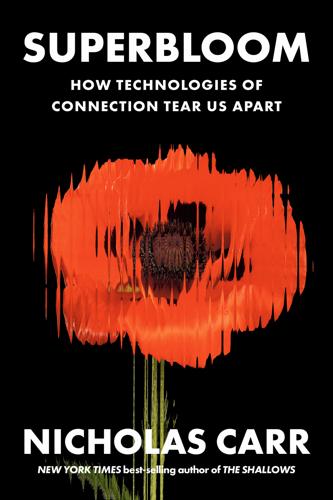
Superbloom: How Technologies of Connection Tear Us Apart
by
Nicholas Carr
Published 28 Jan 2025
See also Thomas Germain, “Elon Musk, King of Censorship,” Gizmodo, July 13, 2023. 45.Georgia Wells et al., “Musk’s Impulses Remake Twitter,” Wall Street Journal, September 8, 2023. Chapter 9: World without World 1.Marc Andreessen, “Why Software Is Eating the World,” Wall Street Journal, August 20, 2011. 2.Marc Andreessen, “Why AI Will Save the World,” Andreessen Horowitz, June 6, 2023, https://a16z.com/2023/06/06/ai-will-save-the-world/. 3.Niccolo Soldo, “The Dubrovnik Interviews: Marc Andreessen—Interviewed by a Retard,” Substack, May 31, 2021, https://niccolo.substack.com/p/the-dubrovnik-interviews-marc-andreessen. When the freewheeling interview appeared, many wondered whether it was a fake. An Andreessen spokesperson confirmed it was genuine. 4.Iris Murdoch, “Metaphysics and Ethics,” in Existentialists and Mystics, ed.
…
Whenever history needed an update, the bureaucrats in Big Brother’s Ministry of Truth would stuff outdated documents into chutes called memory holes that led down to enormous furnaces in the building’s basement. Imagine how much more efficiently they would have performed their work had they been supplied with the right software. Chapter 9 World without World Glorious Substance If the spirit of our time were to take human form, it might well be that of Marc Andreessen, a bear of a man with an immaculately egg-shaped head. He was there at the beginning. In 1993, while an undergraduate at the University of Illinois, he and a friend, backed by government funding, created Mosaic, the first multimedia web browser. Making the net easier to navigate and more interesting to look at, the program drew the masses online.

The Facebook Effect
by
David Kirkpatrick
Published 19 Nov 2010
In some sections it became almost stream of consciousness, according to those who have read it. Even Zuckerberg occasionally notes in the margin, “This doesn’t seem to be going anywhere.” But for many of those who read it inside the company it seemed as weighty as Michelangelo’s sketchbook. A major new figure joined the life of the company around this time—investor and entrepreneur Marc Andreessen, who became a close adviser to Zuckerberg. Andreessen, one of Silicon Valley’s most revered innovators and entrepreneurs, had come to California as a mere boy, much like Zuckerberg, after he helped invent the first Web browser at the University of Illinois. He co-founded Netscape Communications and later two more important and successful companies, while investing in scores more.
…
“It was one of those moments with a unique creative zeitgeist,” he says, “like jazz in New York in the 1940s or punk in the 1970s, or the first Viennese school of the late eighteenth century.” The conviction that this was history in the making led people to work even harder. The history was not being made by Facebook alone. The company was surrounded by other companies also creating a more social Internet. Just around the corner was Ning, funded by Marc Andreessen and building software that enabled anyone to create their own private little social network. Up in San Francisco, forty-five minutes to the north, Digg was inventing a new tool that allowed people to share articles and other media they found on the Web. Other social networks like Bebo and Hi5 were emerging there, too, some targeting the same users as Facebook but in any case building clever products that were resonating with users all over the world.
…
Some of these stalwarts—the ones who survived—took to calling Zuckerberg’s new executive coach “Wormtongue,” after an evil adviser to the king in Tolkien’s Lord of the Rings. Criticism was coming from the outside as well. Tech industry bloggers pointed to Facebook’s revolving-door management and said it suggested internal chaos. But Zuckerberg’s adviser Marc Andreessen gives the CEO credit for being decisive about making changes when people weren’t working. There’s no way, Andreessen says, that a fast-growing company can consistently make the right hiring decisions. Better to quickly remedy the inevitable wrong ones. Zuckerberg preferred working with people his own age.
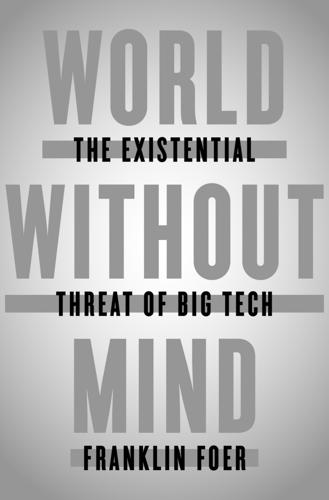
World Without Mind: The Existential Threat of Big Tech
by
Franklin Foer
Published 31 Aug 2017
The coziness can be gleaned from the balance sheets: Google pays $1 billion each year so that Apple will use its search engine. While he was Google CEO, Eric Schmidt also served on Apple’s board. Like nineteenth-century European powers, each company does little to impinge on the other’s sphere of influence, competing only on the fringes of empire. Marc Andreessen, one of the Valley’s most venerable characters, is blunt about this tendency toward monopoly: “The big technology markets actually tend to be winner take all. There is this presumption—in normal markets you can have Pepsi and Coke. In technology markets in the long run you tend to only have one, or rather the number one company.”
…
The Hoover experiment, in the end, hardly realized the happy fantasies about the Engineer King. A very different version of this dream, however, has come to fruition, in the form of the CEOs of the big tech companies. We’re not ruled by engineers, not yet, but they have become the dominant force in American life, the highest, most influential tier of our elite. Marc Andreessen coined a famous aphorism that holds, “Software is eating the world.” There’s a bit of obfuscation in that formula—it’s really the authors of software who are eating the world. There’s another way to describe this historical progression. Automation has come in waves. During the Industrial Revolution, machinery replaced manual workers.
…
“America’s most famous financier”: Ron Chernow, The House of Morgan (Atlantic Monthly Press, 1990), 54. “We preach competition”: Peter Thiel, Zero to One (Crown Business, 2014), 35. “transcend the daily brute struggle”: Thiel, 32. “The big technology markets actually tend to be winner take all”: Alexia Tsotsis, “Marc Andreessen On The Future Of Enterprise,” TechCrunch, January 27, 2013. CHAPTER TWO: THE GOOGLE THEORY OF HISTORY at times, he struggled to breathe: Larry Page, University of Michigan commencement address, May 2, 2009. My description of Carl Page relies heavily on my conversations with several of his colleagues from Michigan State, such as Hsu Wen Jing.

Machine, Platform, Crowd: Harnessing Our Digital Future
by
Andrew McAfee
and
Erik Brynjolfsson
Published 26 Jun 2017
The web rapidly turned the Internet from a text-only network into one that could handle pictures, sounds, and other media. This multimedia wonder, so much richer and easier to navigate than anything before, entered the mainstream in 1994 when Netscape released the first commercial web browser, named Navigator. (One of Netscape’s cofounders was Marc Andreessen, a then twenty-two-year-old programmer who had worked on earlier web browsers. We’ll hear more from Andreessen in Chapter 11.)‡ It coincided with the commercialization of the Internet, which had previously been primarily the domain of academics. The web enabled companies to extend their business processes beyond the four walls of the company and all the way to the consumer—a trend that became known as e-commerce.
…
.*** The campaign’s stated goal was to raise $2 million. It actually took in that amount within the first twelve hours and went on to generate $5.7 million in total. The movie premiered on March 14, 2014, both in theaters and on video on-demand services. It received generally positive reviews and was judged a financial success. Marc Andreessen, who started his career as the main programmer of the most successful early web browser and has since become a prominent venture capitalist, thinks crowdfunding could become one of the main ways that new offerings are developed. He said to us, “One could argue that the way that products and services—including entertainment media, including shoes and food and everything—the way that everything comes to market for the last 2,000 years has been backwards.
…
In reality, it turned out, peer-to-peer lending often became something much less novel: personal and small business loans offered by big, established lenders to customers identified in a new way. But it’s not just large hedge funds that are finding new customers thanks to crowd-centric new businesses; it’s also popular voices that emerge from the crowd itself. Marc Andreessen told us about the startup Teespring, founded in 2011 by Walter Williams and Evan Stites-Clayton. As Andreessen explained to us, Teespring is the modern method to convert social capital into financial capital. It’s one of these things where it first will strike you as absurd, and then if you swallow the red pill, you’ll realize what’s happening.†† It’s a way for a Facebook group or a YouTube star or Instagram star to be able to sell T-shirts.
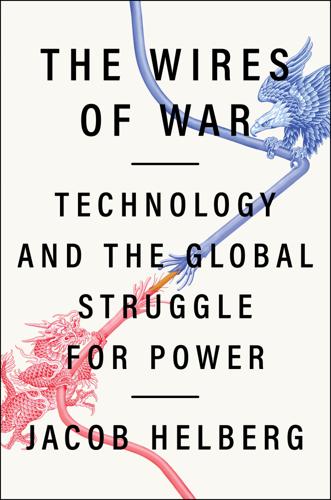
The Wires of War: Technology and the Global Struggle for Power
by
Jacob Helberg
Published 11 Oct 2021
loadFrom=PastedDeeplink&ts=16474.82. 2 Laura Hautala, “Tech titans face video glitches in congressional testimony,” CNET, July 29, 2020, https://www.cnet.com/news/tech-titans-face-video-glitches-in-congressional-testimony/. 3 Elizabeth Culliford, “Bezos’ snack, room ratings and ‘the net’: Key online moments from tech hearing,” Reuters, July 29, 2020, https://www.reuters.com/article/us-usa-tech-congress-memes-idUSKCN24U341. 4 “Transcript with Rep. Cicilline.” 5 Ibid. 6 Ibid. 7 Sanger, The Perfect Weapon, xi. 8 Noah Smith, “Interview: Marc Andreessen, VC and tech pioneer,” Substack, June 22, 2021, https://noahpinion.substack.com/p/interview-marc-andreessen-vc-and. 9 Margaret O’Mara, The Code: Silicon Valley and the Remaking of America (New York: Penguin Press, 2019), 15. 10 Ibid., 18. 11 Ibid., 36. 12 “Tech-Politik: Historical Perspectives on Innovation, Technology, and Strategic Competition,” Center for Strategic and International Studies, December 19, 2019, https://www.csis.org/analysis/tech-politik-historical-perspectives-innovation-technology-and-strategic-competition. 13 O’Mara, The Code, 24. 14 Liz Jacobs, “GPS, lithium batteries, the internet, cellular technology, airbags: A Q&A about how governments often fuel innovation,” TED Blog, October 28, 2013, https://blog.ted.com/qa-mariana-mazzucato-governments-often-fuel-innovation/. 15 “Technology and National Security: Maintaining America’s Edge,” Aspen Institute, February 7, 2019, https://www.aspeninstitute.org/publications/technology-and-national-security-maintaining-americas-edge/. 16 David B.
…
This hypertext was organized by “hypertext markup language” (HTML) and transmitted according to a “hypertext transfer protocol” (HTTP) to Internet nodes identified by a “uniform resource locator” (URL). Berners-Lee called his achievement the “World Wide Web,” and it literally changed the world.27 Pioneering engineers soon developed so-called web browsers, such as Marc Andreessen’s Mosaic and Netscape Navigator, to make it easy to explore this new web. Dial-up services like AOL and CompuServe made the Internet accessible to millions of people without a technical background. As a research tool governed (after the Pentagon’s withdrawal) by the National Science Foundation, the network’s administrators had banned commercial activity on the Internet.28 When that prohibition was lifted in 1995, the Internet exploded.
…
So why argue that Facebook, Twitter, Google, and other leading firms are responsible for foreign governments’ malign political meddling? When did it become the job of engineers and entrepreneurs to mediate a geopolitical conflict? Isn’t the root of the issue that foreign governments feel undeterred to engage in this type of behavior? And isn’t deterrence the business of the U.S. government? Marc Andreessen, a leading venture capital investor and co-founder of Netscape, captured the mindset of many in the tech industry in a June 2021 interview: China has a strategic agenda to achieve economic, military, and political hegemony by dominating dozens of critical technology sectors—this isn’t a secret, or a conspiracy theory; they say it out loud.

The Truth Machine: The Blockchain and the Future of Everything
by
Paul Vigna
and
Michael J. Casey
Published 27 Feb 2018
Its integrity could be assured by a decentralized network that constantly updated itself through a process of unbreakable consensus. Once Bitcoin’s implications were apparent, the revelation came as a bolt of lightning to many who’d been involved in building the Internet’s early architecture. These people included Marc Andreessen, the venture capitalist and co-creator of the first commercial Web browser, Netscape, who told authors Don and Alex Tapscott that people like him suddenly recognized it as “the distributed trust network that the Internet always needed and never had.” As Andreessen and others in Silicon Valley’s moneyed classes started to throw money at developers working on Bitcoin and its clones, the sheer breadth of what Bitcoin’s underlying blockchain technology might achieve became apparent.
…
But this shift to decentralized trust, along with all other disruption coming from, you name it—self-driving cars, automated medicine, peer-to-peer credit, 3D printing, artificially intelligent writers—will be too big to keep up with. The idea that the office towers of New York and Chicago will be left half empty for decades is not unfeasible. “Software is eating the world,” as Marc Andreessen likes to say. It’s not just the loss of jobs that’s the problem. It’s also the broader problem of letting algorithms decide what our world looks like. The priorities, preferences, and prejudices of software designers are baked into the code they write, whether it’s the program that dictates which passengers Uber drivers pick up or the incentive model in the Bitcoin protocol.
…
May, “The Crypto Anarchist Manifesto,” https://www.activism.net/cypherpunk/crypto-anarchy.html. Ideas like Ted Nelson’s ill-fated Xanadu project: For a detailed analysis of the Xanadu Project’s sweeping vision but failed implementation, see: “The Curse of Xanadu,” Wired, June 1, 2015, https://www.wired.com/1995/06/xanadu/. These people included Marc Andreessen: Don Tapscott and Alex Tapscott, Blockchain Revolution: How the Technology behind Bitcoin Is Changing Money, Business and the World (Portfolio, 2016), p. 5. used by Harvard professor Lawrence Lessig: Lawrence Lessig, “Code Is Law: On Liberty in Cyberspace,” Harvard Magazine, January 1, 2000, http://harvardmagazine.com/2000/01/code-is-law-html.
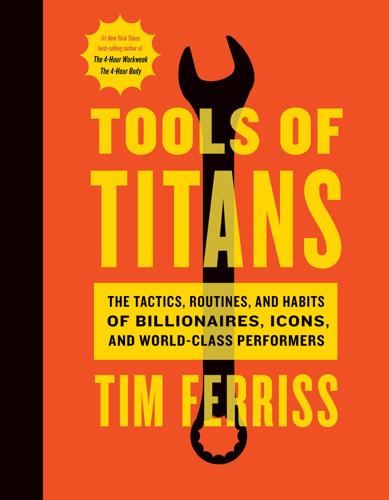
Tools of Titans: The Tactics, Routines, and Habits of Billionaires, Icons, and World-Class Performers
by
Timothy Ferriss
Published 6 Dec 2016
In fact, being weird may even find you the ultimate happiness.” TF: As an example—mullet wigs. CHRIS: “If you could bring one thing to make for an amazing party night, it’s wigs, seriously. Go to Amazon right now and order 50 mullet wigs. Mullet wigs change everything.” * * * Marc Andreessen Marc Andreessen (TW: @pmarca, a16z.com) is a legendary figure in Silicon Valley, and his creations have changed the world. Even in the epicenter of tech, it’s hard to find a more fascinating icon. Marc co-created the highly influential Mosaic browser, the first widely used graphical web browser. He also co-founded Netscape, which later sold to AOL for $4.2 billion.
…
If you find anything ridiculous in this book, it’s because I didn’t heed their advice or made a mistake. Though indebted to hundreds of people, I wish to thank here the many guests who have appeared on my podcast and who grace the pages of this book, listed in alphabetical order: Scott Adams (p. 261) James Altucher (p. 246) Sophia Amoruso (p. 376) Marc Andreessen (p. 170) Sekou Andrews (p. 642) Patrick Arnold (p. 35) Peter Attia (p. 59) Glenn Beck (p. 553) Scott Belsky (p. 359) Richard Betts (p. 563) Mike Birbiglia (p. 566) Alex Blumberg (p. 303) Amelia Boone (p. 2) Justin Boreta (p. 356) Tara Brach (p. 555) Brené Brown (p. 586) Bryan Callen (p. 483) Shay Carl (p. 441) Dan Carlin (p. 285) Ed Catmull (p. 309) Margaret Cho (p. 538) Paulo Coelho (p. 511) Ed Cooke (p. 517) Kevin Costner (p. 451) Whitney Cummings (p. 477) Dominic D’Agostino (p. 21) Alain de Botton (p. 486) Joe De Sena (p. 38) Mike Del Ponte (p. 299) Peter Diamandis (p. 369) Tracy DiNunzio (p. 313) Jack Dorsey (p. 509) Stephen J.
…
Novak (p. 378) Alexis Ohanian (p. 194) Amanda Palmer (p. 520) Rhonda Patrick (p. 6) Caroline Paul (p. 459) Martin Polanco (p. 109) Charles Poliquin (p. 74) Maria Popova (p. 406) Rolf Potts (p. 362) Naval Ravikant (p. 546) Gabby Reece (p. 92) Tony Robbins (p. 210) Robert Rodriguez (p. 628) Seth Rogen (p. 531) Kevin Rose (p. 340) Rick Rubin (p. 502) Chris Sacca (p. 164) Arnold Schwarzenegger (p. 176) Ramit Sethi (p. 287) Mike Shinoda (p. 352) Jason Silva (p. 589) Derek Sivers (p. 184) Joshua Skenes (p. 500) Christopher Sommer (p. 9) Morgan Spurlock (p. 221) Kelly Starrett (p. 122) Neil Strauss (p. 347) Cheryl Strayed (p. 515) Chade-Meng Tan (p. 154) Peter Thiel (p. 232) Pavel Tsatsouline (p. 85) Luis von Ahn (p. 331) Josh Waitzkin (p. 577) Eric Weinstein (p. 523) Shaun White (p. 271) Jocko Willink (p. 412) Rainn Wilson (p. 543) Chris Young (p. 318) Andrew Zimmern (p. 540) Contents FOREWORD ON THE SHOULDERS OF GIANTS READ THIS FIRST—HOW TO USE THIS BOOK * * * Part 1: Healthy Amelia Boone Rhonda Perciavalle Patrick Christopher Sommer Gymnast Strong Dominic D’Agostino Patrick Arnold Joe De Sena Wim “The Iceman” Hof Rick Rubin’s Barrel Sauna Jason Nemer AcroYoga—Thai and Fly Deconstructing Sports and Skills with Questions Peter Attia Justin Mager Charles Poliquin The Slow-Carb Diet® Cheat Sheet My 6-Piece Gym in a Bag Pavel Tsatsouline Laird Hamilton, Gabby Reece & Brian MacKenzie James Fadiman Martin Polanco & Dan Engle Kelly Starrett Paul Levesque (Triple H) Jane McGonigal Adam Gazzaley 5 Tools for Faster and Better Sleep 5 Morning Rituals that Help Me Win the Day Mind Training 101 Three Tips from a Google Pioneer Coach Sommer—The Single Decision * * * Part 2: Wealthy Chris Sacca Marc Andreessen Arnold Schwarzenegger Derek Sivers Alexis Ohanian “Productivity” Tricks for the Neurotic, Manic-Depressive, and Crazy (Like Me) Matt Mullenweg Nicholas McCarthy Tony Robbins Casey Neistat Morgan Spurlock What My Morning Journal Looks Like Reid Hoffman Peter Thiel Seth Godin James Altucher How to Create a Real-World MBA Scott Adams Shaun White The Law of Category Chase Jarvis Dan Carlin Ramit Sethi 1,000 True Fans—Revisited Hacking Kickstarter Alex Blumberg The Podcast Gear I Use Ed Catmull Tracy DiNunzio Phil Libin Chris Young Daymond John Noah Kagan Kaskade Luis von Ahn The Canvas Strategy Kevin Rose Gut Investing Neil Strauss Mike Shinoda Justin Boreta Scott Belsky How to Earn Your Freedom Peter Diamandis Sophia Amoruso B.J.
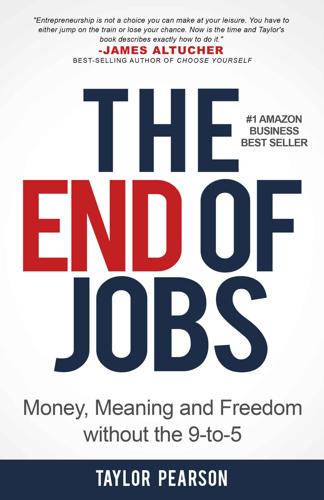
The End of Jobs: Money, Meaning and Freedom Without the 9-To-5
by
Taylor Pearson
Published 27 Jun 2015
Your Middle Class existence isn’t just being squeezed by overseas workers, it’s being squeezed by technology being developed just down the street. 2 The Acceleration of Technology All That Is Old Is New Again Venture capitalist firms are famous for their investment theses, the basic premise that fuels their investing strategy. These are simple statements which result in the investment of billions of dollars. Andreessen-Horowitz, a Venture capital firm started by Marc Andreessen and Ben Horowitz, that manages $4 billion as of March 2014, operates on an investment thesis of five words: Software is Eating the World. What is so profound in those five words that it directs how they invest billions of dollars? The trend Andreessen Horowitz is betting on may seem new and disruptive, but it’s just the next step in a well-understood process that’s been happening for hundreds of years: technological innovation.
…
Work has always been a disutility because the work that was required to accumulate more wealth and address the economic limit was primarily simple, algorithmic or at best, complicated work. If you’re a farmer and you were trying to get a job in the city one hundred years ago, you were probably going to end up in a factory. That was the opportunity available. The barriers to starting your own business were far higher than they are today. Marc Andreessen recounted in an interview how the first meeting he has with entrepreneurs that approach him about backing their company usually plays out. They always reach a point, fairly early on in the interview, where Marc will start trying to talk the founders out of the idea and suggesting other ways to attack the problem than the one they’ve outlined or proposing a different problem to attack.
…
Gary Vaynerchuk of VaynerMedia and Wine Library TV has identified the same phenomenon, calling it the Clouds and the Dirt. He’s either thinking in the day-to-day minutia of exactly how to post on Facebook—how many words should the post be?—or how to buy the New York Jets (where is marketing going over the next decade? How are we positioned for it?). Reading through venture capitalist Marc Andreessen’s Guide to Career Planning, I was pleasantly unsurprised by his number one piece of advice on the topic: Don’t. The first rule of career planning: Do not plan your career. The world is an incredibly complex place and everything is changing all the time. You can’t plan your career because you have no idea what’s going to happen in the future…Trying to plan your career is an exercise in futility that will only serve to frustrate you, and to blind you to the really significant opportunities that life will throw your way
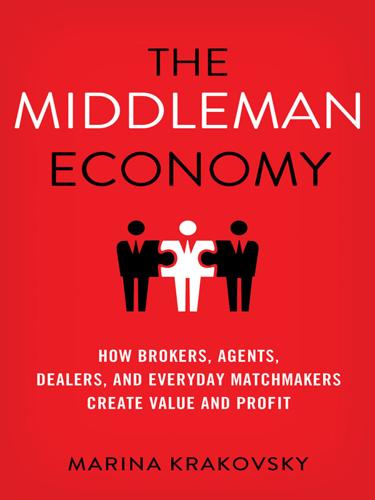
The Middleman Economy: How Brokers, Agents, Dealers, and Everyday Matchmakers Create Value and Profit
by
Marina Krakovsky
Published 14 Sep 2015
See Irina Patterson and Candice Arnold, “Seed Capital from Angel Investors: Mike Maples, Founder and Managing Partner, Floodgate (Part 3),” One Million by One Million Blog, July 14, 2010, retrieved from http://www.sramanamitra.com/2010/07/14/seed-capital-from-angel-investors-mike-maples-founder-and-managing-partner-floodgate-part-3/. 26.Interview with Mike Maples Jr., September 17, 2014. 27.Paul Graham, “A Unified Theory of VC Suckage,” PaulGraham.com, March 2005, retrieved from http://www.paulgraham.com/venturecapital.html. 28.Russ Roberts, “Marc Andreessen on Venture Capital and the Digital Future,” EconTalk, May 19, 2014, retrieved from http://www.econtalk.org/archives/2014/05/marc_andreessen.html. 29.Ben Horowitz mentions Rachleff’s influence in an interview with Stanford engineering professor Tom Byers, “Disrupting the Venture Capital Industry,” Stanford Technology Ventures Program, Entrepreneurial Thought Leaders Series, November 19, 2014, retrieved from http://ecorner.stanford.edu/authorMate rialInfo.html?
…
Notice that it is also an external risk, and not an internal one: the entrepreneur has no incentive to undermine the VC’s goals by shirking, for example, because doing so would sabotage the entrepreneur. Maples knows how to embrace external risk while avoiding internal risk. Mike Maples didn’t come up with the idea of investing in ventures that are nonconsensus and right, and he is certainly not the only venture capitalist to think this way. Marc Andreessen, perhaps the best-known VC working today, plots start-ups on a two-by-two matrix in which VCs should aim for the quadrant corresponding to nonconsensus and successful.28 It should go without saying that you cannot know for sure which ones will be successful, and even the best VCs are often wrong, but you do know which are nonconsensus.
…
See Irina Patterson and Candice Arnold, “Seed Capital from Angel Investors: Mike Maples, Founder and Managing Partner, Floodgate (Part 3),” One Million by One Million Blog, July 14, 2010, retrieved from http://www.sramanamitra.com/2010/07/14/seed-capital-from-angel-investors-mike-maples-founder-and-managing-partner-floodgate-part-3/. 26.Interview with Mike Maples Jr., September 17, 2014. 27.Paul Graham, “A Unified Theory of VC Suckage,” PaulGraham.com, March 2005, retrieved from http://www.paulgraham.com/venturecapital.html. 28.Russ Roberts, “Marc Andreessen on Venture Capital and the Digital Future,” EconTalk, May 19, 2014, retrieved from http://www.econtalk.org/archives/2014/05/marc_andreessen.html. 29.Ben Horowitz mentions Rachleff’s influence in an interview with Stanford engineering professor Tom Byers, “Disrupting the Venture Capital Industry,” Stanford Technology Ventures Program, Entrepreneurial Thought Leaders Series, November 19, 2014, retrieved from http://ecorner.stanford.edu/authorMate rialInfo.html?mid=3438. 30.Andy Rachleff, “Demystifying Venture Capital Economics, Part I,” Wealthfront Blog, June 19, 2014, retrieved from https://blog.wealthfront.com/venture-capital-economics/. 31.“Marc Andreessen on Breakthrough Ideas and Courageous Entrepreneurs,” interview at Stanford Graduate School of Business, March 8, 2014, retrieved from https://www.youtube.com/watch?v=JYYsXzt1VDc&feature=youtu.be. 32.Nassim Nicholas Taleb, Antifragile: Things That Gain from Disorder (New York: Random House, 2012). 33.Nassim Nicholas Taleb, “Learning to Love Volatility,” Wall Street Journal, November 16, 2012. 34.For an overview of power-law distributions and some of the many phenomena governed by them, see M.
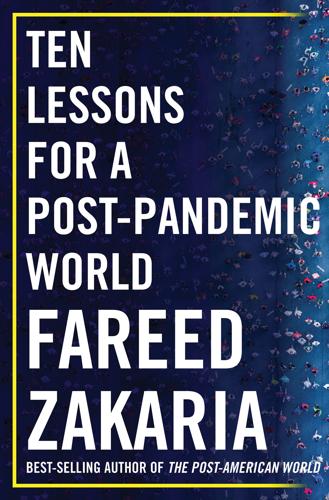
Ten Lessons for a Post-Pandemic World
by
Fareed Zakaria
Published 5 Oct 2020
In fact, people who work across many Western countries are often struck by the fact that in laissez-faire America, there is far more red tape than in supposedly statist countries like Canada, Denmark, and Germany. Whatever the size of their states, those countries believe in creating independent agencies, giving technocrats power and autonomy, and ensuring that the system works effectively. There is pride in good government. The technology entrepreneur Marc Andreessen responded to the pandemic of 2020 with a long blog post declaring, “It’s time to build.” He begins with the failure of American government during the pandemic but goes well beyond it, asking why the United States can no longer imagine and execute large projects—building more housing and better infrastructure, reviving manufacturing at home, expanding higher education to millions more people, and so on.
…
In the United States, unemployment remained stubbornly high, over 9%. Stock markets in Europe and America reflected these fears. On August 8, “Black Monday,” the Dow Jones Industrial average dropped 635 points, the sixth-largest drop in its history up to that point. It was in this uneasy environment that Marc Andreessen, the inventor of Mosaic, the first major web browser, published an essay in the Wall Street Journal under a perplexing headline: “Why Software Is Eating the World.” By this point, there were really two economies: the digital economy and the material economy. Andreessen’s point was that the digital economy was becoming so powerful that it was dominating—eating up—the material economy.
…
Coronavirus Response: The Fax Machine,” New York Times, July 13, 2020. 47“health cards”: On Taiwan’s near-real-time “health cards”: tracking of Covid-19 patient data, see Jackie Drees, “What the US Can Learn from Taiwan’s EHR System and COVID-19 Response,” Becker’s Hospital Review, July 1, 2020, https://www.beckershospitalreview.com/ehrs/what-the-us-can-learn-from-taiwan-s-ehr-system-and-covid-19-response.html; and Ezekiel Emanuel in conversation with Fareed Zakaria, Fareed Zakaria GPS: Global Public Square, CNN, July 12, 2020, https://www.cnn.com/videos/tv/2020/07/12/exp-gps-0712-emanuel-on-us-covid-19-response.cnn. 47 18,000 separate police departments: Duren Banks et al., “National Sources of Law Enforcement Employment Data,” US Department of Justice, October 4, 2016, https://www.bjs.gov/content/pub/pdf/nsleed.pdf. 48 former British colonies: Michael Bernhard, Christopher Reenock, and Timothy Nordstrom, “The Legacy of Western Overseas Colonialism on Democratic Survival,” International Studies Quarterly 48, no. 1 (March 2004): 225–50, https://academic.oup.com/isq/article-abstract/48/1/225/2963246. 49 seventeen “layers” of appointees: Paul Light, “People on People on People: The Continued Thickening of Government,” The Volcker Alliance, October 2017, https://www.volckeralliance.org/sites/default/files/attachments/Issue%20Paper_People%20on%20People.pdf. 49 long blog post: Marc Andreessen, “It’s Time to Build,” Andreessen Horowitz, https://a16z.com/2020/04/18/its-time-to-build/. 50 Pennsylvania Station: Marc J. Dunkelman, “This Is Why Your Holiday Travel Is Awful,” Politico, November 11, 2019. 51 Ezra Klein has observed: Ezra Klein, Why We’re Polarized (New York: Simon & Schuster, 2020). 52 “removed the mark of the devil”: James Traub, “After the Coronavirus, the Era of Small Government Will Be Over,” Foreign Policy, April 15, 2020.

System Error: Where Big Tech Went Wrong and How We Can Reboot
by
Rob Reich
,
Mehran Sahami
and
Jeremy M. Weinstein
Published 6 Sep 2021
Many of us remember getting CD-ROMs in the mail touting America Online (later renamed AOL) or CompuServe. And by 1995, the last vestiges of government restriction on commercial use of the internet had been eliminated, making possible the “dot-com boom.” Around the same time, a pair of young engineers, Marc Andreessen and Eric Bina, were busy working on the Mosaic browser at the University of Illinois Urbana-Champaign. Released in 1993, Mosaic helped bring the Web to public consciousness, transforming it from a resource for academic data sharing into something that the public could readily access. Andreessen would shortly thereafter go on to become one of the cofounders of Netscape Communications along with Jim Clark, a former Stanford engineering professor and the founder of Silicon Graphics, and release the Netscape Navigator browser in December 1994, bringing the Web to the masses.
…
It’s also worth noting that while funding in the VC world continues to grow, how that money is distributed often reflects a narrow view of what a successful entrepreneur looks like. John Doerr, speaking at the National Venture Capital Association in 2008, famously described how being a male nerd “correlates more with any other success factor that I’ve seen in the world’s greatest entrepreneurs. If you look at [Amazon founder Jeff] Bezos, or [Netscape founder Marc] Andreessen, [Yahoo cofounder] David Filo, the founders of Google, they all seem to be white, male, nerds who’ve dropped out of Harvard or Stanford and they absolutely have no social life.” But looking for patterns like this in who to fund also leads to inequities in how entrepreneurs might be evaluated by the VCs they are pitching to.
…
Similar to the way the hardware engineers of the 1970s and ’80s had brought about a shift in venture funding from Wall Street and the East Coast world of finance to Sand Hill Road and the West Coast world of software, many of the engineers who had ridden the first dot-com wave became poised to fund the next round of tech companies. Marc Andreessen would swap the jeans he had worn on the cover of Time for a sports jacket, founding the venture capital firm Andreessen Horowitz with his longtime colleague Ben Horowitz in 2009. Their firm would become an investor in Twitter, Instagram, Facebook, Pinterest, Lyft, and Airbnb. In an oft-quoted 2011 piece in the Wall Street Journal, “Why Software Is Eating the World,” Andreessen explained how the capital needs of tech companies had changed: On the back end, software programming tools and Internet-based services make it easy to launch new global software-powered start-ups in many industries—without the need to invest in new infrastructure and train new employees.

Rebel Code: Linux and the Open Source Revolution
by
Glyn Moody
Published 14 Jul 2002
Formed to sell Web technology to the business world, Mosaic Communications was based in Mountain View, California, and had been set up in April 1994 by Jim Clark, the founder of the workstation company Silicon Graphics, Inc. (SGI), and Marc Andreessen. The company not only borrowed the name from the pioneering NSCA browser; it also hired away most of the programmers who had worked on it and the corresponding Web server. On 13 October 1994, Marc Andreessen made the historic announcement that the first public beta version of Mosaic Communications’ product was available: “Mosaic Communications Corporation is making a public version of Mosaic Netscape 0.9 Beta available for anonymous FTP.
…
There were at least two other X11 browser projects—ViolaWWW and MidasWWW—alongside the Finnish software, which was called Erwise. But it was another that was to prove, as Berners-Lee had put it, “very popular”: Mosaic. Mosaic had been written at the National Center for Supercomputing Applications (NCSA), part of the University of Illinois. The Mosaic project was led by a young man named Marc Andreessen, who not only became one of the founders of Netscape but played a key role in defining the Web as we know it. Andreessen’s first appearance on the WWW-Talk list is unassuming enough. On 16 November 1992 he asked:Anyone written code to construct HTML files in Emacs? I’m hacking something up; let me know if you’re interested.
…
Given their controversial nature, the Heresy Documents were circulated confidentially, at only the very highest levels. “It was very inner core,” Hahn explains. “They were written very, very freely and openly—no punches were pulled.” That inner core consisted of Netscape’s executive committee: Jim Barksdale, Marc Andreessen, Mike Homer, who was executive vice president of sales and marketing, the chief administrative officer, Peter Currie, and Hahn. The first Heresy Document dealt with Netscape’s Java strategy. Sun’s Java allowed a program to be written once and then run on many kinds of hardware without modification, which made it perfect for Internet use—and also undercut the dominance of Microsoft’s Windows platform.

Age of Context: Mobile, Sensors, Data and the Future of Privacy
by
Robert Scoble
and
Shel Israel
Published 4 Sep 2013
The magic is that over time, wherever you go, more people will not only know your name, they will be pretty accurate in knowing how they can help you—and leave you alone if they can’t. This increased personalization and concurrent lack of privacy, of course, is going to be uncomfortable for some people at first, but we believe that will change over time. Marc Andreessen, one of Silicon Valley’s most respected thinkers and investors, predicts merchants will understand who you are and what you want by the time you arrive. “Today, this may feel a little bizarre,” Andreessen says, “but 20 years from now it will be bizarre if you walk into a store and the store doesn’t know who you are.”
…
We recall a court case involving a teacher who banned students from using Google instead of libraries, because searching online was cheating. That was less than ten years ago. The Ice Cream Incentive In the case of retail, merchants have long understood how to use incentives to gain engagement. Marc Andreessen, whose venture firm, Andreessen Horowitz has invested more dollars in contextual technologies than most any other early-phase firm, sees the best retail strategy online and off as something called “free ice cream.” It is the marketing concept that enables you to gain users even as you refine early-phase technology.
…
The issues of regulation and adoption bring us to what may be the most significant and controversial changes in car making since horsepower replaced horses. We refer, of course, to the driverless car. Chapter 5 Driving Over the Freaky Line People are so bad at driving cars that computers don’t have to be that good to be much better. Marc Andreessen, investor Picture this: It is not very far into the future and you have just arrived in a big city. You summon an Uber car via a mobile app and a nice-looking upscale sedan soon pulls up to the curb in front of you. You hop in the back seat and tell absolutely no one behind the wheel where you are going.

The Age of Cryptocurrency: How Bitcoin and Digital Money Are Challenging the Global Economic Order
by
Paul Vigna
and
Michael J. Casey
Published 27 Jan 2015
You get it by doing math problems? No? By having your computer do math problems? How can that possibly work? At this stage, phrases like Ponzi scheme and tulip mania enter your mind. Stage Three: Curiosity. You’ve kept reading. It becomes clear that many people, even some seemingly sensible people such as Internet pioneer Marc Andreessen, people with a track record for being right about this stuff, are genuinely excited by it. But why all the fuss? Okay, it’s digital money, it may work, but what difference is that going to make to regular people? And why are people so heated up about it? Stage Four: Crystallization. This is the critical one.
…
It’s not far off the money-raising that was swirling around Internet start-ups in the second half of the 1990s, and it suggests that claims of bitcoin’s demise were premature. Above all, it’s the names of the investors that get people’s attention. The list includes a selection of key players from the early e-commerce boom in the 1990s, including a man with as big a claim as any to having popularized the Internet: Marc Andreessen. The founder of Mosaic, the first mass-distributed browser, as well its better-known successor, Netscape, Andreessen is now a high-profile bitcoin bull. His firm, Andreessen Horowitz, has made major investments in the cryptocurrency sector, including in bitcoin processor Coinbase and in payments provider Ripple.
…
The stuff about fixing the existing payment system is interesting, but what’s superexciting is that you have this new platform on which you can move money and property and potentially build new areas of business.” If Dixon’s right about bitcoin’s being the Internet all over again—a vision shaped by the experience of his partner Netscape founder Marc Andreessen—then many of the start-ups that have dived into this field will have their dreams fulfilled and may well become the next PayPal, or at least get bought by PayPal. For the VCs, the hope is that their scattershot approach lands on just a couple of big winners. This inherently optimistic approach is founded on the idea that the opportunities lie in multiple, untapped places—we just don’t always know which ones.

The Contrarian: Peter Thiel and Silicon Valley's Pursuit of Power
by
Max Chafkin
Published 14 Sep 2021
But now the IPO had become an egalitarian institution, enriching not just executives and bankers, but lowly employees who held stock options. The excitement was so profound that it threatened to break down traditional partisan rivalries, Time said. Conservatives and liberals both agreed: The Silicon Valley entrepreneur was “the ideal economic agent.” The prototypical Golden Geek was Marc Andreessen. At just twenty-four he appeared on the magazine’s cover seated on a red-velvet throne. He was barefoot with a wild, open-mouthed expression that seemed like some mix of wonder and aggression. Andreessen, readers learned, had created the Netscape Navigator, the first commercial web browser, which had brought the internet to the mainstream.
…
Thiel gave mostly standard-issue startup advice at first. In one lecture on corporate cultures, he made the recommendation that companies should have them. But he enlivened even these bland lessons with guest appearances from his friends and former employees, including Max Levchin, Reid Hoffman, and Marc Andreessen. And as the class went on, though, Thiel diverged from pat advice and became more philosophical, infusing his business advice with his unique brand of apocalyptic politics. The eleventh lecture was about secrets; the thirteenth, delivered in late May, was about the primacy of personal agency.
…
Zuckerberg replaced those critics with his friends and business partners, including Drew Houston, the thirty-seven-year-old founder of Dropbox, and Peggy Alford, a PayPal executive who’d worked at his for-profit philanthropic organization, the Chan Zuckerberg Initiative. By early 2020, the only board members whose tenure dated to before 2019, other than Zuckerberg and Sheryl Sandberg, were Thiel ally Marc Andreessen and Thiel himself. * * * — zuckerberg likely also tolerated Thiel’s disloyalty because he was politically vulnerable. If Trump had won in 2016 because American voters had turned against globalization, then few companies were more exposed to those shifting winds than Facebook. It wasn’t just the company’s user base, or Zuckerberg’s previous advocacy for immigration, or the vaguely anti-Trump comments the Facebook CEO had made during the campaign about building bridges “instead of building walls.”

Recoding America: Why Government Is Failing in the Digital Age and How We Can Do Better
by
Jennifer Pahlka
Published 12 Jun 2023
When the burdensome contracting process and other operational problems make tech companies averse to doing business with the government, that only gives more power to the incumbent vendors. 4. Eric Schmidt, Reid Hoffman, and Kurt DelBene stand out as particularly supportive, but there are many others. 5. Noah Smith, “Interview: Marc Andreessen, VC and Tech Pioneer,” Noahpinion, June 21, 2021, https://noahpinion.substack.com/p/interview-marc-andreessen-vc-and. 6. Marc Andreessen, “It’s Time to Build,” Future, April 18, 2020, https://future.com/its-time-to-build/. 7. That’s the GS-15 Step 10 rate, adjusted for DC’s cost of living, according to https://www.opm.gov/policy-data-oversight/pay-leave/salaries-wages/salary-tables/pdf/2021/DCB.pdf. 8.
…
Most tech firms are not in the business of government contracting, and one might think that tech industry leaders would see the need for digital competence within the institution that runs the country.3 Some do, to be sure.4 But Oracle’s narrative has a strong hold even among the startups and big tech firms that have revolutionized how we use the internet. Few in Silicon Valley (by which I mean an industry and a mindset, not a geographic location) see building government capacity as worthwhile—or perhaps even possible—placing all their bets on what the private sector can achieve. Venture capitalist Marc Andreessen epitomizes their attitude. A year into the pandemic, he casually referred to the “chronic collapse of state capacity virtually everywhere in our time,” saying that “the good news is that … the private sector can and does deliver even under considerable duress, and even when much of our political system is devoted to stifling it with regulatory handcuffs and damaging it with misguided policies.”5 In this view, the question of whether government should have digital capacity is moot, because no one with the skills to build digital products should waste their time working in government.

Zucked: Waking Up to the Facebook Catastrophe
by
Roger McNamee
Published 1 Jan 2019
Our investors were the people who know us best, the founders and executives of the leading tech companies of that era. Integral had a charmed run. Being inside the offices of Kleiner Perkins during the nineties meant we were at ground zero for the internet revolution. I was there the day that Marc Andreessen made his presentation for the company that became Netscape, when Jeff Bezos did the same for Amazon, and when Larry Page and Sergey Brin pitched Google. I did not imagine then how big the internet would become, but it did not take long to grasp its transformational nature. The internet would democratize access to information, with benefits to all.
…
It required enhancements. The English researcher Tim Berners-Lee delivered the goods when he invented the World Wide Web in 1989 and the first web browser in 1991, but even those innovations were not enough to push the internet into the mainstream. That happened when a computer science student by the name of Marc Andreessen created the Mosaic browser in 1993. Within a year, startups like Yahoo and Amazon had come along, followed in 1995 by eBay, and the web that we now know had come to life. By the mid-nineties, the wireless network evolved to a point that enabled widespread adoption of cell phones and alphanumeric pagers.
…
In the early days of Silicon Valley, software engineers generally came from the computer science and electrical engineering programs at MIT, Caltech, and Carnegie Mellon. By the late seventies, Berkeley and Stanford had joined the top tier. They were followed in the mid-nineties by the University of Illinois at Urbana-Champaign, the alma mater of Marc Andreessen, and other universities with strong computer science programs. After 2000, programmers were coming from just about every university in America, including Harvard. When faced with a surplus for the first time, engineers had new and exciting options. The wave of startups launched after 2003 could have applied surplus processing, memory, storage, and bandwidth to improve users’ well-being and happiness, for example.
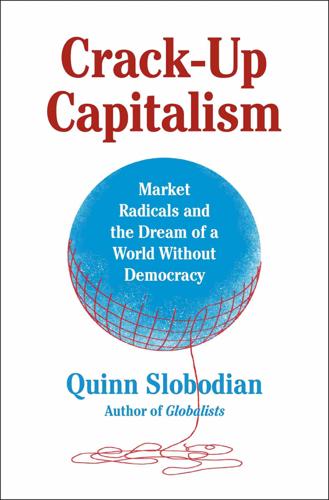
Crack-Up Capitalism: Market Radicals and the Dream of a World Without Democracy
by
Quinn Slobodian
Published 4 Apr 2023
Davidson and Rees-Mogg, The Great Reckoning, 13, 69. 9. Davidson and Rees-Mogg, The Sovereign Individual, 388. 10. Davidson and Rees-Mogg, 291. 11. Davidson and Rees-Mogg, 31. 12. Davidson and Rees-Mogg, 301. 13. Patrick McKenzie, “AMA with Marc Andreessen,” Stripe (n.d.), https://stripe.com/atlas/guides/ama-marc-andreessen. 14. George Packer, The Unwinding: An Inner History of the New America (New York: Farrar Straus Giroux, 2013), 133. For an insightful reading of the book and Thiel see Mark O’Connell, Notes from an Apocalypse: A Personal Journey to the End of the World (New York: Doubleday, 2020), 77–80. 15.
…
We expect to see a multiplication of sovereign entities, as scores of enclaves and jurisdictions more akin to city-states emerge from the rubble of nations.”12 This was a model of capitalism without democracy. Since majoritarian decision-making could not deliver the choices needed for economic survival, democracies would slowly be outcompeted. They would simply wither away, no coups necessary. The Sovereign Individual has enjoyed an extraordinary afterlife among Silicon Valley libertarians. Marc Andreessen, prominent venture capitalist and co-creator of the first web browser, called it “the most thought-provoking book on the unfolding nature of the 21st Century that I’ve yet read.”13 Another reader influenced by the book on its release was Peter Thiel, who created the online payment system PayPal partly as an attempt to realize the book’s visions of “encrypted cybercash.”14 He said the book made him realize that success came from thinking in the time frame of ten or twenty years in the future.15 One of the attractions of The Sovereign Individual is how it worked against what could be called the “commune story” of the internet.
…
Born on Long Island in 1980 to Indian immigrant parents, Srinivasan earned a PhD in electrical engineering from Stanford before launching a biotech start-up that offered an at-home genetic screening kit for hereditary diseases. Tipped by MIT Technology Review in 2013 as one of the leading “innovators under 35,” Srinivasan promptly entered the venture capital world, becoming a principal at Marc Andreessen’s firm.19 In the heady early 2010s, when the American public was looking to Silicon Valley for solutions for everything from health care to education, Srinivasan became one of the most high-profile advocates for what he called, in a notorious talk, “Silicon Valley’s ultimate exit.”20 By his account, the American Northeast, previously dominant, had entered a permanent and irreversible decline.

Coders: The Making of a New Tribe and the Remaking of the World
by
Clive Thompson
Published 26 Mar 2019
That’s a curiously cautious mission statement: While mitigating areas where technology and social media can contribute to divisiveness. It’s certainly a more measured rallying cry than “Move fast and break things.” You could read it, perhaps, as a quiet admission that some things ought to be left unbroken. “Software,” as the venture capitalist Marc Andreessen has proclaimed, “is eating the world.” It’s true. You use software nearly every instant you’re awake. There’s the obvious stuff, like your phone, your laptop, email and social networking and video games and Netflix, the way you order taxis and food. But there’s also less-obvious software lurking all around you.
…
By the early ’90s, Everingham had built a career in software; he was particularly known for his work on interfaces. Then in 1995, in his early 30s, he was hired to work on the Windows interface for a newfangled product that would transform the world: Netscape, the first popular web browser. The team was led by Marc Andreessen, then a 24-year-old coder; it was a mix of just-out-of-college kids who’d built an experimental browser for their university and more experienced ones like Everingham, who’d been hired to help add structure to the project. The workload was insane. Andreessen knew that several competitors were trying to make a browser and was convinced—correctly—that Netscape needed to be first to market.
…
He’d grown up in the Ukraine in the Soviet ’80s, where he first discovered the fun of mucking around with programmable computers. When his family fled the region—they were Jewish, a persecuted minority—they arrived in Chicago in 1991. They were broke, but they respected their nerd son’s passions and scrounged enough to get him a computer. When he studied computer science at the University of Illinois, he learned about Marc Andreessen, the graduate who just a few years earlier had done insanely well, cocreating the Netscape browser and becoming an overnight millionaire. Levchin was an intense introvert, but the romance of start-ups entranced him. While a student, he founded not just one but three companies, and when the last one sold for $100,000, he packed his worldly possessions—mostly a pile of electronics—into a truck and drove with some friends to Silicon Valley.

The Mysterious Mr. Nakamoto: A Fifteen-Year Quest to Unmask the Secret Genius Behind Crypto
by
Benjamin Wallace
Published 18 Mar 2025
Senate held an unexpectedly hopeful hearing on Bitcoin, titled “Beyond Silk Road: Potential Risks, Threats, and Promises of Virtual Currencies.” Richard Branson announced that his Virgin Galactic space travel company would accept bitcoin, which he said was “driving a revolution.” Bill Gates called Bitcoin “exciting,” “better than currency,” and “a techno tour de force.” A year later, Marc Andreessen, who had pioneered the web browser before becoming a venture capitalist, said: “We’re quite confident that when we’re sitting here in twenty years, we’ll be talking about Bitcoin the way we talk about the Internet today.” And the more time passed, the longer Bitcoin went without itself being successfully hacked, the more solid it felt.
…
The next day, reporters were back outside Dorian’s house, and the sheriff’s department was sending a car to check on Dorian every couple of hours. Newsweek would soon be criticized by other publications for its “colossal arrogance” and “half-baked theory.” The Los Angeles Times gleefully noted that Newsweek had also published the forged “Hitler Diaries.” Venture capitalist Marc Andreessen, referring to Goodman’s construal of Dorian’s failure to answer his phone as a sign of evasiveness, asked, “Is there anyone left on planet earth who does not screen their phone calls? What is this, 1962?” One of his partners noted that “four million people hold top secret security clearances” and that “the first name Satoshi and last name Nakamoto are moderately common in Japan.”
…
GO TO NOTE REFERENCE IN TEXT “exciting,” “better than currency”: Bill Gates, interview, Street Smart, Bloomberg TV, October 2, 2014. GO TO NOTE REFERENCE IN TEXT “techno tour de force”: “Munger/Buffett Disagree on Corporate Tax Rates,” video, Fox Business, February 3, 2017. GO TO NOTE REFERENCE IN TEXT “We’re quite confident”: Brian Fung, “Marc Andreessen: In 20 Years, We’ll Talk About Bitcoin Like We Talk About the Internet Today,” The Washington Post, May 21, 2014. GO TO NOTE REFERENCE IN TEXT to the chagrin of cryptographers: Phil Zimmermann, interview by Dustin Dreifuerst, “Episode 34: The Legend Phil Zimmermann,” Did You Know (podcast), May 5, 2019.
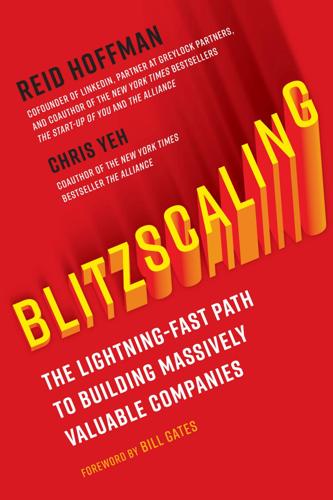
Blitzscaling: The Lightning-Fast Path to Building Massively Valuable Companies
by
Reid Hoffman
and
Chris Yeh
Published 14 Apr 2018
Moreover, the speed and flexibility of software development allow companies to iterate and recover from the inevitable missteps of haste. What’s especially exciting these days is that software and software-enabled companies are starting to dominate industries outside of traditional high tech. My friend Marc Andreessen has argued that “software is eating the world.” What he means is that even industries that focus on physical products (atoms) are integrating with software (bits). Tesla makes cars (atoms), but a software update (bits) can upgrade the acceleration of those cars and add an autopilot overnight.
…
A key component of business model innovation is designing around these growth limiters. GROWTH LIMITER #1: LACK OF PRODUCT/MARKET FIT Product/market fit enables rapid growth, while the lack of it makes growth expensive and difficult. The concept of product/market fit originates in Marc Andreessen’s seminal blog post “The Only Thing That Matters.” In his essay, Andreessen argues that the most important factor in successful start-ups is the combination of market and product. His definition couldn’t be simpler: “Product/market fit means being in a good market with a product that can satisfy that market.”
…
In technology, economics, and the politics of nations, wealth in the form of physical resources is steadily declining in value and significance. The powers of mind are everywhere ascendant over the brute force of things.” Just over twenty years later, in 2011, the venture capitalist (and Netscape cofounder) Marc Andreessen validated Gilder’s thesis in his Wall Street Journal op-ed “Why Software Is Eating the World.” Andreessen pointed out that the world’s largest bookstore (Amazon), video provider (Netflix), recruiter (LinkedIn), and music companies (Apple/Spotify/Pandora) were software companies, and that even “old economy” stalwarts like Walmart and FedEx used software (rather than “things”) to drive their businesses.
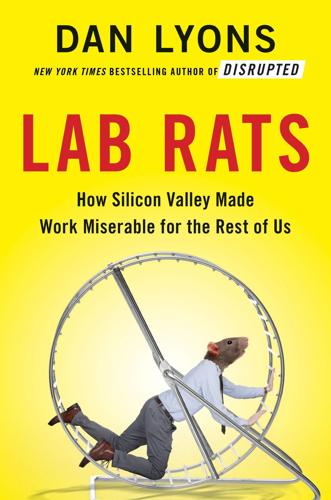
Lab Rats: How Silicon Valley Made Work Miserable for the Rest of Us
by
Dan Lyons
Published 22 Oct 2018
But now the power brokers include venture capitalists—like Marc Andreessen of Andreessen Horowitz, Peter Thiel of Clarium Capital and Founders Fund, and Reid Hoffman of Greylock Ventures. They don’t actually run tech companies. They’re just investors. Nevertheless, their profession is depicted as glamorous, and they rank among the biggest celebrities in Silicon Valley. Wired once lionized Andreessen on its cover, calling him “The Man Who Makes the Future.” Young guys moving west after college no longer hope to become the next Steve Jobs; they want to be the next Marc Andreessen. The Valley has become a casino, with VCs and angel investors blindly pumping money into every slot machine, hoping to hit a jackpot.
…
Right now most of them are scared to death. Their size used to be an advantage, but now it works against them. They’ve seen other companies that once seemed invincible get destroyed by the Internet—Blockbuster, Tower Records, Borders Books. They fear they will be next. “Software is eating the world,” venture capitalist Marc Andreessen once famously said, meaning that tech companies were no longer content to sell computers and software to other industries and instead intended to replace them. The media business has been nuked. Brick-and-mortar retailers are being wiped out so fast that people call it the “retail apocalypse.”
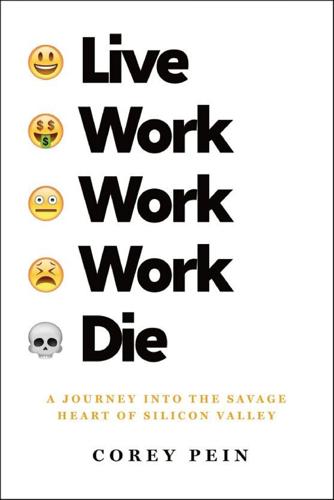
Live Work Work Work Die: A Journey Into the Savage Heart of Silicon Valley
by
Corey Pein
Published 23 Apr 2018
Froomkin wrote that “the multinational nature of the Internet makes it possible for users to engage in regulatory arbitrage.” What that clever coinage refers to is the practice of using the internet to make money doing something that might be illegal if you did the same thing without using the internet. The VC Marc Andreessen, who made a fortune in the early nineties as a cofounder of the once dominant Web browser Netscape, revealed regulatory arbitrage to be a crucial plank in the strategy of his investment firm, Andreessen-Horowitz, in a 2014 interview with Bloomberg News. Andreessen enthused that tech startups could “reinvent the entire system” of finance and commerce.
…
The intractable Israeli-Palestinian conflict would simply vanish into the cloud, along with those tiresome Pacific Heights squabbles about so-and-so’s new sun deck blocking their neighbors’ views of the Bay. Srinivasan did acknowledge some limits to his precognition. He wasn’t sure where or how the first cloud cities would appear: They could be countries formed by internationally recognized processes similar to the ones that created 26 new countries over the past 25 years, a pattern noted by Marc Andreessen. They could be regions of the world set aside by global agreement for experimentation, as discussed by Larry Page. They could be floating cities in international waters as put forth by Peter Thiel, or one of the more ambitious 80,000 person colonies on Mars desired by Elon Musk. Srinivasan set what was then a new record in techie temerity with a provocative speech at Y Combinator’s “startup school” in 2013.
…
Please use the search function on your e-reading device to search for terms of interest. For your reference, the terms that appear in the print index are listed below. Adolphe, Eric Ad:Tech Aeiveos Airbnb Alcor Alexander, Steve Aloise, Rome Alphabet Altman, Sam Amazon American Conservative Ancestry.com Anderson, Kyle Andreessen, Marc Andreessen-Horowitz Anduril Angry Birds Anissimov, Michael Apple Apple iTunes Architectural Digest ARPANET Ask.fm Associated Press Auerbach, David Auletta, Ken Bank of America Bannon, Steve Benthall, Blake Bezos, Jeff Bharara, Preet BIL Conference BioCurious Biogen Bitcoin BitTorrent Blogger Bloomberg News Blum, Richard C.
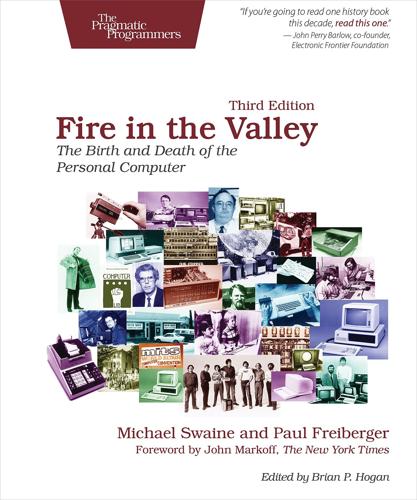
Fire in the Valley: The Birth and Death of the Personal Computer
by
Michael Swaine
and
Paul Freiberger
Published 19 Oct 2014
Nevertheless, the NeXT saga was not over. Cyberspace There was no particular reason why it took two guys at the University of Illinois to do it, any more than it should have taken two guys in Sunnyvale to do the Apple I. It’s just that sometimes the establishment needs a kick in the pants. –Marc Andreessen, cofounder of Netscape In 1994, Microsoft was riding high and Bill Gates was a billionaire. But that didn’t mean he wasn’t still driven by fear. No matter that he was the richest person in America, viewed by most people as the symbol, and possibly the inventor, of the personal-computer revolution.
…
Creating Cyberspace One of the places where Tim Berners-Lee’s achievement in creating the Web was fully appreciated was at the National Center for Supercomputing Applications (NCSA) at the University of Illinois’s Urbana-Champaign campus. NCSA had a large budget, a lot of hot technology, and a large staff with “frankly, not enough to do,” according to one of the young programmers privileged to work there. Even at $6.85 an hour, Marc Andreessen saw it as a privilege to work at NCSA. He was a sharp undergraduate programmer who loved being in an environment where he could talk about Unix code. Andreessen looked at what Berners-Lee had done and saw the potential of the Web, but he also saw that potential being restricted to a few academics, accessed on expensive hardware through archaic, arcane software.
…
Andreessen looked at what Berners-Lee had done and saw the potential of the Web, but he also saw that potential being restricted to a few academics, accessed on expensive hardware through archaic, arcane software. The opportunity to open up the Web to everyone looked to him like “a giant hole in the middle of the world.” Riding in friend Eric Bina’s car one night late in 1992, Andreessen put the challenge to Bina: “Let’s go for it,” he said. Let’s fill that hole. * * * Figure 92. Marc Andreessen After cocreating the first visual web browser while a student at the University of Illinois, Andreessen cofounded Netscape. (Courtesy of Netscape Communications Corp.) They coded like mad. Between January and March of 1993, they wrote a 9,000-line program called Mosaic. It was a web browser, but not like Berners-Lee’s.

The Sharing Economy: The End of Employment and the Rise of Crowd-Based Capitalism
by
Arun Sundararajan
Published 12 May 2016
When combined with peer-to-peer filesharing technologies, cryptographic techniques, and a novel incentive system, Bitcoin showed how a blockchain-based system could be used as the basis for trusted peer-to-peer transactions without a third-party intermediary, instead using the crowd—a decentralized network of “verifiers”—to clear transactions. The promise of blockchain-based systems like Bitcoin was encapsulated well in a January 2014 New York Times article by venture capitalist Marc Andreessen, a long-time Internet entrepreneur and investor who created the first web browser Mosaic in 1993: Bitcoin gives us, for the first time, a way for one Internet user to transfer a unique piece of digital property to another Internet user, such that the transfer is guaranteed to be safe and secure, everyone knows that the transfer has taken place, and nobody can challenge the legitimacy of the transfer.
…
See Folasade Osisanwo, Shade Kuyoro, and Oludele Awodele, “Internet Refrigerator—A Typical Internet of Things (IoT),” http://iieng.org/siteadmin/upload/2602E0315051.pdf. Also see Fred Butcher, “What Is a Smart Refrigerator,” https://fredsappliance.com/2014/06/smart-refrigerator/ for an interesting historical overview. 8. For an overview of the drone delivery technology tested by Amazon in 2014, see http://www.amazon.com/b?node=8037720011. 9. Marc Andreessen, “Why Bitcoin Matters,” New York Times, January 21, 2014, http://dealbook.nytimes.com/2014/01/21/why-bitcoin-matters/. 9. See Chris Anderson, The Long Tail: Why the Future of Business Is Selling Less of More (New York: Hyperion, 2008). 10. Jason Tanz, “How Airbnb and Lyft Finally Got Americans to Trust Each Other,” Wired, April 23, 2014, http://www.wired.com/2014/04/trust-in-the-share-economy. 11.
…
Adam Ludwin, a partner at RRE Ventures, currently runs a startup called Chain that is also funded by the famed Silicon Valley investor Vinod Khosla. RRE, along with the venture capital firm Andreessen Horowitz, has also invested in Ripple Labs, which is building a blockchain-based market for interbank settlement. Andreessen Horowitz partners Marc Andreessen and Chris Dixon frequently express significant levels of excitement about the commercial promise of the blockchain. These are just a few examples of a new marketplace technology paradigm that may power the next generation of crowd-based capitalism, To better appreciate the economic and social impacts of these marketplaces, we first need to understand how some of them work.
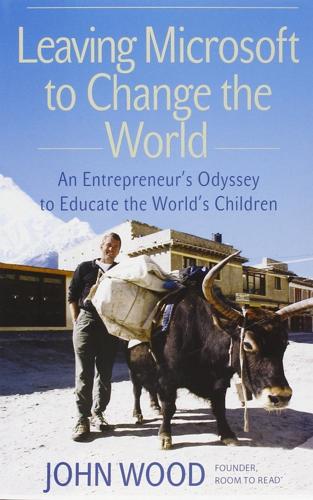
Leaving Microsoft to Change the World: An Entrepreneur's Odyssey to Educate the World's Children
by
John Wood
Published 28 Aug 2006
In addition to backpacks, each new scholar is given a bike. Schools in rural Cambodia can be up to three hours walk from some villages. Room to Read Chicago chapter leader Tina Sciabica visits some of the Nepali Room to Read scholars benefiting from the funds she has raised. On this night, Netscape co-founder Marc Andreessen made a $250,000 gift in honor of Room to Read’s five year anniversary. Many rural Laotians never have the opportunity for a formal education. With the goal of reversing this trend, Room to Read began operations in Laos in 2005. I talk with the headmaster of Harihar School, Uday Kharki, in Pokhara, Nepal, during a visit to open the school’s new Computer Room in 2003.
…
They ride local buses for a dozen hours to visit villages, they work with communities to determine the best method of coinvestment via our Challenge Grant program, and they pilot motorbikes along rutted dirt roads to visit girls whose parents can’t afford school fees. To the Room to Read teams in Cambodia, India, Laos, Nepal, Sri Lanka, Vietnam, and South Africa, I say thank you. Room to Read’s Board members—Marc Andreessen, Christopher Beer, Alastair Mactaggart, Muneer Satter, and Hilary Valentine—have been generous with their strategic direction and financial support. Jenny Stein was a partner in every key decision I made during our formative years. Christine Boskoff, Wynne Leon, Alison Levine, and my father served admirably and with dedication during the organization’s early years.
…
I want to recognize the Skoll Foundation for being visionary funders who have encouraged the Room to Read management team to focus on scaling, and for backing up this advice with large-capacity building grants. Thanks to the team at Accenture for being our first significant corporate grant, and for the world-class advice you give to us. Thanks to the team at the Draper Richards Foundation for my fellowship, the seed funding, and all the great advice over the years. Finally, thanks to Marc Andreessen for being willing to invest in a venture run by a Microsoft alumnus! Our most significant early funding came from Jim Kastenholz and Jennifer Steans, Hilary Valentine, Stuart Kerr, Dena Blank, Sarah Leary and Patte McDowell, and the team at the Cloud Nine Foundation. Our first significant partnership was with the Asia Foundation’s Books for Asia program.

Disrupted: My Misadventure in the Start-Up Bubble
by
Dan Lyons
Published 4 Apr 2016
Over the course of its brief existence Netscape lost a lot of money, but nevertheless a few people got rich. In 1999, at the peak of the dotcom bubble, AOL acquired Netscape in a deal worth $10 billion when it closed. After that Netscape more or less disappeared. Yet one Netscape co-founder, Marc Andreessen, reportedly walked away with shares worth nearly $100 million. Another co-founder, Jim Clark, reportedly made $2 billion. “On the Internet, nobody knows you’re a dog” is the famous line from a 1993 New Yorker cartoon. The tale of Netscape added a new twist: On the Internet, at least when it comes to investments, nobody cares if you’re a dog.
…
The photograph appeared on countless websites, but when I asked Google for permission to use it in this book, the company asked what context I would be using it in, and when I told them, they refused. So instead of running the full photograph, I will just show you two of the people in it: The one on the left, with the cone head, is Marc Andreessen of Andreessen Horowitz. The one on the right is John Doerr of Kleiner Perkins Caufield & Byers. Look how smug they are, how sure of themselves! These two grown men wearing the hideous face computer called Google Glass are two of the most respected investors in Silicon Valley, and they represent two of the most important venture capital firms.
…
Six years later he is probably the best known and arguably the most influential investor in Silicon Valley. “Guys running start-ups love him. They all want to meet him,” one Boston-based venture capitalist says. “Every time I meet with a start-up, the first question they ask me is, ‘Do you know Marc Andreessen? Can you introduce us to him?’ He’s like a rock star.” Says another venture capitalist: “If you take money from Andreessen Horowitz, your valuation doubles or triples just because they’re involved. Why? Because they’re Andreessen Horowitz.” Andreessen is a physically imposing man: six feet, four inches tall and heavyset, with an enormous shaved head.
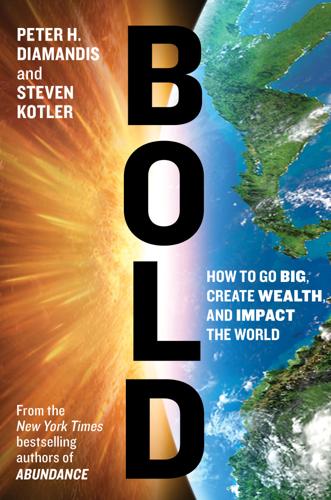
Bold: How to Go Big, Create Wealth and Impact the World
by
Peter H. Diamandis
and
Steven Kotler
Published 3 Feb 2015
Licklider wrote a memo to his colleagues proposing an “Intergalactic Computer Network”—a network that replaced traditional circuit-switching technology with the then new development of packet switching, allowing any researcher with a terminal and a phone line to connect to one of the computing centers they so desperately needed.4 This was the birth of the Advanced Research Projects Agency Network (ARPANET), the foundational network that has since become today’s Internet. ARPANET became operational in 1975. It was mostly text-based, fairly complicated to navigate, and used primarily by scientists. All of this changed in 1993, when Marc Andreessen, a twenty-two-year-old undergraduate student at the University of Illinois, Urbana-Champaign, coauthored Mosaic—both the very first web browser and the Internet’s first user-friendly user interface.5 Mosaic unlocked the Internet. By adding in graphics and replacing Unix with Windows—the operating system that was then running nearly 80 percent of the computers in the world—Andreessen mainstreamed a technology developed for scientists, engineers, and the military.
…
Now, with our coloring-book approach, if you want to be supercreative, all you have to know how to do is color between the lines.” What makes this development so much more important is that 3D Systems isn’t the only company designing new interfaces. Experimentation has begun, drawing in a multitude of other players. As a result, the field sits right about where the web sat when Marc Andreessen introduced Mosaic—completely primed for exponential explosion. The Impact of Disruption Even now, at the beginning of this explosion, the impact that 3-D printing is having on our world is considerable. Already the printing of standard consumer products—bowls, plates, smartphone cases, bottle openers, jewelry, and purses (made from mesh)—has gone from a hobby to a nascent industry.
…
R Licklider, “Memorandum For Members and Affiliates of the Intergalactic Computer Network,” Advanced Research Projects Agency, April 23, 1963. See http://www.kurzweilai.net/memorandum-for-members-and-affiliates-of-the-intergalactic-computer-network. 5 Chris Anderson, “The Man Who Makes the Future: Wired Icon Marc Andreessen,” Wired, April 24, 2012, http://www.wired.com/2012/04/ff_andreessen/all/. 6 Ian Peter, “History of the World Wide Web,” Net History, http://www.nethistory.info/History%20of%20the%20Internet/web.html. 7 McKinsey Global Institute, “Manufacturing the future: The next era of global growth and innovation,” McKinsey & Company, November 2012, http://www.mckinsey.com/insights/manufacturing/the_future_of_manufacturing. 8 Institute of Human Origins, “Earliest Stone Tool Evidence Revealed,” Becoming Human, August 11, 2010, http://www.becominghuman.org/node/news/earliest-stone-tool-evidence-revealed. 9 Pagan Kennedy, “Who Made That 3-D Printer,” New York Times Magazine, November 22, 2013, http://www.nytimes.com/2013/11/24/magazine/who-made-that-3-d-printer.html. 10 In full disclosure, Peter Diamandis is a member of the 3D Systems Board of Directors. 11 All Avi Reichenthal quotes come from a series of AIs conducted between 2012 and 2014. 12 Based on approximate average share price for 2014. 13 AI, June 2014. 14 AI with Jay Rogers, 2014. 15 David Szondy, “SpaceX completes qualification test of 3D-printed SuperDraco thruster,” Gizmag, May 28, 2014, http://www.gizmag.com/superdraco-test/32292/. 16 James Hagerty and Kate Linebaugh, “Next 3-D Frontier: Printed Plane Parts,” Wall Street Journal, July 14, 2012, http://online.wsj.com/news/articles/SB10001424052702303933404577505080296858896. 17 Tim Catts, “GE Turns to 3D Printers for Plane Parts,” Bloomberg Businessweek, November 27, 2013, http://www.businessweek.com/articles/2013-11-27/general-electric-turns-to-3d-printers-for-plane-parts. 18 All quotes about Made In Space come from an AI with Michael Chen conducted 2013. 19 Brian Dodson, “Launch your own satellite for US $8000,” Gizmag, April 22, 2012, http://www.gizmag.com/tubesat-personal-satellite/22211/. 20 Statista, “Statistics and facts on the Toy Industry,” Statista.com, 2012, http://www.statista.com/topics/1108/toy-industry/. 21 Unless otherwise noted, all Alice Taylor quotes and facts come from an AI conducted in 2013. 22 Cory Doctorow, Makers (New York: Tor Books, 2009).
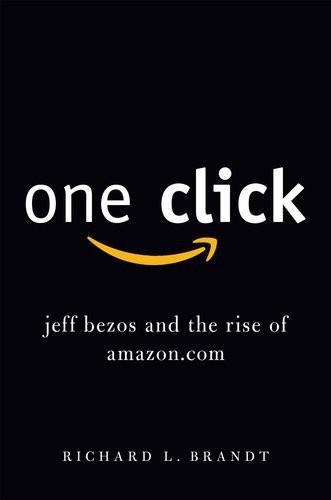
One Click: Jeff Bezos and the Rise of Amazon.com
by
Richard L. Brandt
Published 27 Oct 2011
In 1993, a government-funded group at the University of Illinois at Urbana-Champaign created a new generation of Web browser called Mosaic, a wonderful, graphics-based browser. The following year, a very astute Silicon Valley venture capitalist named John Doerr decided to recruit a bright young man, Marc Andreessen, from the Mosaic team in Illinois to move to Silicon Valley and start a Web browser company. That same year the company, called Netscape, launched its browser, Navigator. Shaw decided the Internet had a future, and gave Bezos the task of finding the opportunities there. In the spring of 1994, he began researching the Internet, and was impressed with what he found.
…
Mosaic was developed at the National Center for Supercomputing Applications (NCSA) at the Urbana-Champaign campus of the University of Illinois, becoming the first (and, many people still feel, the best) browser to take advantage of the newly created World Wide Web. Davis hoped to integrate his hyperlink program into that browser, and contacted Marc Andreessen, a smart computer science student at the University of Illinois who codeveloped Mosaic. If that collaboration had worked, Davis might have joined Netscape Communications, which Andreessen later founded, and made his fortune there. But Mosaic and Davis’s hyperlink system were too incompatible, and Davis had to look elsewhere to join the new wave of bright engineers and entrepreneurs hoping to build new products and companies on the Internet.
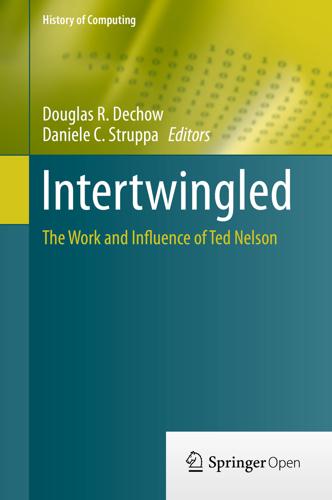
Intertwingled: The Work and Influence of Ted Nelson (History of Computing)
by
Douglas R. Dechow
Published 2 Jul 2015
I’m just trying to create the rational system the web should have been in the first place and would have been if we hadn’t screwed up politically. Tim Berners-Lee fashioned a way of pointing at conventional files and conventional directories via path names, visible to the user, over the Net. To me the notion of files and hierarchical directories is an unfortunate tradition that messes up the very nature of content. Marc Andreessen added Technicolor, all the special effects garbage he could cram in, glorifying, fetishizing these hierarchical directories which are now called websites and are located at URLs. So you have one-way, ever-breaking links, a shop window model, whereas you don’t want to have to put it in a single place.
…
He also gave it away so there was no economic barrier to people using it. I think that’s what really made the difference to the uptake. The problem we now have of course is that nobody owns the system that has subsequently been created, but that’s another whole story. We must also give credit of course to Marc Andreessen and his team at NCSA for their development of the Mosaic browser for the Web in 1993, which made it much easier for people to access the Web. At ACM Hypertext’93, half the demos were Web-based, and the first Web conference was in May 1994. We were still developing Microcosm as a research system, and we produced a commercial version in 1994, which did very well for a while.

Facebook: The Inside Story
by
Steven Levy
Published 25 Feb 2020
But it was always a question of when, not if, there would be an IPO, and there was only so much Zuckerberg could do to forestall the inevitable. In 2010, Facebook quietly began making moves to smooth its shift to a public company. It beefed up its board of directors to include—besides existing members Don Graham, Netscape co-founder Marc Andreessen, and Peter Thiel—Netflix CEO Reed Hastings and Erskine Bowles, who had been Bill Clinton’s chief of staff. Bowles made a deal with Zuckerberg: he’d chair the board’s audit committee if Zuckerberg would read a stack of finance books. Look, you’ll be a CEO of a public company—you have to understand this, he said when he dumped the books on Zuckerberg.
…
The money men were banking as much on the founder as the idea; Systrom ticked the boxes that VCs look for—Stanford degree, ex-Googler, a quiet intensity that impressed the partners at the pitch meeting. Systrom quit the social-travel site. Not long afterward, Facebook bought it. Once again, Systrom had just missed working for Mark Zuckerberg. Marc Andreessen suggested that Systrom find a software-guru partner. That turned out to be Mike Krieger, a Brazil-born engineer who’d majored in Stanford’s Symbolic Systems program. At first, Krieger wasn’t blown away by Systrom’s description of Burbn, but after he agreed to join the beta test, he became intrigued, if not hooked.
…
A former Microsoft engineer named Michael Abrash, who had been working for the game technology company Valve, had combined Oculus technology with a screen-display technique called “low persistence” that minimized motion sickness. For the first time, Iribe could use VR without getting nauseated. Abrash would eventually join Oculus and head its research lab. The company figured that a great board member might provide guidance, and the logical choice was Marc Andreessen, whose VC firm, Andreessen Horowitz, had been a lead investor in the “B” round. Since Andreessen was also on Facebook’s board, he suggested that Iribe get a reference from Mark Zuckerberg. On November 13, Andreessen wrote an email to Facebook’s CEO with the subject line “Have you seen Oculus?”

The Start-Up of You: Adapt to the Future, Invest in Yourself, and Transform Your Career
by
Reid Hoffman
and
Ben Casnocha
Published 14 Feb 2012
—CORY BOOKER, mayor of Newark, New Jersey “Silicon Valley revolutionizes entire industries through the way we work. It is now time to export our playbook to the rest of the world. The Start-up of You is that key playbook: it will help you revolutionize yourself and achieve your own career breakout.” —MARC ANDREESSEN, venture capitalist and director at HP, Facebook, and eBay “In times of change and uncertainty … adaptability creates stability. Insights like this make The Start-up of You such a compelling new way to approach your life. Hoffman and Casnocha have distilled the essence of entrepreneurship into a potion for personal success, regardless of your career plans.”
…
During that time he flew his own airline at least once a week, worked the cabin, and blogged about his experience: “Each week I fly on JetBlue flights and talk to customers so I can find out how we can improve our airline,” he wrote.6 Schultz and Neeleman had tremendous vision when they founded their start-ups. Yet from day one they focused on the needs of their customers and stakeholders. For all their smarts and vision, they knew well what VC and friend Marc Andreessen likes to say: Markets that don’t exist don’t care how smart you are. Similarly, it doesn’t matter how hard you’ve worked or how passionate you are about an aspiration: If someone won’t pay you for your services in the career marketplace, it’s going to be a very hard slog. You aren’t entitled to anything.

Futureproof: 9 Rules for Humans in the Age of Automation
by
Kevin Roose
Published 9 Mar 2021
We were told that the STEM subjects—science, technology, engineering, and math—were the future, and that studying philosophy or art history or some other soon-to-be-obsolete subject would basically guarantee you a life of poverty and irrelevance. This sneering attitude toward the humanities was reinforced by political and business leaders, who fretted that America wasn’t equipping enough graduates with the right skills for a twenty-first-century economy. Marc Andreessen, the venture capitalist and Netscape cofounder, said at a 2012 tech conference that most English majors would “end up working in a shoe store.” Vinod Khosla, the venture capitalist and Sun Microsystems cofounder, declared in a 2016 blog post that “little of the material taught in Liberal Arts programs today is relevant to the future.”
…
Part II The Rules Rule 1 Be Surprising, Social, and Scarce Lovett was a working-class kid William Lovett, Life and Struggles of William Lovett, in His Pursuit of Bread, Knowledge, and Freedom (Knopf, 1876). The makers of one NLG app, Wordsmith Lance Ulanoff, “Need to Write 5 Million Stories a Week? Robot Reporters to the Rescue,” Mashable, July 1, 2014. Another app Steve Lohr, “In Case You Wondered, a Real Human Wrote This Column,” New York Times, September 10, 2011. Marc Andreessen, the venture capitalist and Netscape cofounder Hannah Kuchler, “How Silicon Valley Learnt to Love the Liberal Arts,” Financial Times Magazine, October 31, 2017. Vinod Khosla, the venture capitalist Vinod Khosla, “Is Majoring in Liberal Arts a Mistake for Students?,” Medium, February 10, 2016.

Dragnet Nation: A Quest for Privacy, Security, and Freedom in a World of Relentless Surveillance
by
Julia Angwin
Published 25 Feb 2014
The first real piece of Internet software was the Web browser Netscape Navigator, introduced in 1994. The prospect of the first truly mass-market software propelled Netscape to a stratospheric initial public offering. Its stock price shot up in its first day of trading, closing the day at four times its initial offering price. Netscape’s cofounder Marc Andreessen, only twenty-four years old, suddenly found himself worth $171 million. The following year, Andreessen was pictured on the cover of Time magazine, barefoot and wearing a crown, next to the caption “The Golden Geeks.” But the profits never came. Microsoft began including a free Web browser, Internet Explorer, along with its Windows 95 operating system.
…
And it was empowering; I was tuning myself to a partner that didn’t have a hidden agenda of tracking me. I had broken free from Google, and the world was still on its axis. I had mastered another service and could still find the information I needed. The whole experience reminded me of a quote from Marc Andreessen, the man who created Netscape, the first Web-browsing software, back in 1994. “The spread of computers and the Internet will put jobs in two categories,” Andreessen said in a 2012 interview. “People who tell computers what to do, and people who are told by computers what to do.” Mastering my switch to DuckDuckGo made me feel I had a better chance of being in the category of people who tell computers what to do
…
And in 2012, the Justice Department authorized: Julia Angwin, “U.S. Terrorism Agency to Tap a Vast Database of Citizens,” Wall Street Journal, December 13, 2012, http://online.wsj.com/article/SB10001424127887324478304578171623040640006.html. Its stock price shot up: Steve Hamm, “The Education of Marc Andreessen,” BusinessWeek, April 2, 1998, http://www.businessweek.com/1998/15/topstory.htm; L. A. Lorek, “Investors Not Just Browsing: Netscape Navigator Stock Goes Public in One of Wall Street’s Most Impressive Debuts,” Fort Lauderdale Sun-Sentinel, August 10, 1995; and Kathy M. Kristof, “Why Individual Investors Lose on IPOs,” Los Angeles Times, August 10, 1995, http://articles.latimes.com/1995-08-10/business/fi-33617_1_individual-investors.

The Startup Way: Making Entrepreneurship a Fundamental Discipline of Every Enterprise
by
Eric Ries
Published 15 Mar 2017
It is also not the kind of decision that can be made lightly, which is why it becomes critical, after the first stages, to demonstrate how the new methods function and to lay the groundwork for full mobilization across the entire organization. HYPERGROWTH: Success can be its own form of crisis. When a startup achieves product/market fit, it can be forced to grow extremely rapidly. As legendary Silicon Valley investor Marc Andreessen, also founder of Netscape and general partner of the VC firm Andreessen Horowitz, put it (in one of the startup movement’s most famous pieces of writing): In a great market—a market with lots of real potential customers—the market pulls product out of the startup….And you can always feel product/market fit when it’s happening.
…
Thanks to Morgan Housel, Mark Graban, Janice Fraser, Steve Liguori, Beth Comstock, Viv Goldstein, Melissa Moore, Dan Debow, Vinuth Rai, James Joaquin, Tiho Bajic, Al Sochard, Kanyi Maqubela, Dan Martell, Roy Bahat, Tom Serres, Dave Binetti, Aneesh Chopra, Marina Martin, Andrey Ostrovsky, Laura Klein, Clark Scheffy, Bennett Blank, Art Parkos, Cindy Alvarez, Adam Penenberg, Kent Beck, Charles Becker, Zach Nies, Holly Grant, Carolyn Dee, Jennifer Maerz, Ann Mei Chang, Nicole Glaros, Anna Mason, Ed Essey, Daniel Doktori, Janice Semper, Todd Park, and Tom Eisenmann. Special thanks to: Arash Ferdowsi, Ari Gesher, Brian Frezza, Dan Smith, Greg Beach, Justin Rosenstein, Matt Mullenweg, Matthew Ogle, Pedro Miguel, Raghu Krishnamoorthy, Reid Hoffman, Samuel Hammond, Scott Cook, Marc Andreessen, Margit Wennmachers, Sean Ellis, Shigeki Tomoyama, JB Brown, Simeon Sessley, Giff Constable, Philip Vaughn, Andy Sack, Brian Singerman, Craig Shapiro, and James Joaquin. Thanks to the entire LTSE team, whose daily commitment to change the world for the better in the face of impossibly long odds inspires me more than you know.
…
See also HealthCare.gov Agarwal, Aditya, 1.1, 6.1, 9.1 Airbnb, itr.1, p01.1, 8.1, 11.1 Airbnb Story, The (Gallagher), 8.1 “all-hands-on-deck problem,” Altman, Sam Amazon, itr.1, 1.1, 3.1, 6.1, 11.1 Fire phone, 1.1, 3.1, 5.1 American Heart Association (AHA), 8.1, 11.1 American Innovation and Competitiveness Act Andreessen, Marc Andreessen Horowitz, 6.1, 7.1, 8.1, 11.1 Asana Beach, Greg, 8.1 Beihl, Jennifer, 8.1, 8.2 Bezos, Jeff, 1.1, 1.2, 4.1, 11.1 Bionic, 9.1, 9.2, 9.3 Bland, David Blank, Bennett, 6.1, 7.1, 10.1 Blank, Steve, 3.1, 9.1, 11.1, nts.1n2 Bresenham, Terri Buffett, Warren build-measure-learn, itr.1, 4.1, 4.2, 4.3, 6.1, 6.2 business model, 1.1, 6.1, 7.1, 9.1, 9.2, 9.3, 10.1 Campbell, Tony, nts.1n1 Canegallo, Giulio, 4.1, 4.2 Case, Steve, 3.1, nts.1n2 Chang, Ann Mei change management, 10.1, epl.1 Chesky, Brian, p01.1, p01.2, 8.1 Chopra, Aneesh Christensen, Clayton, 2.1, 9.1 Cisco, My Innovation Citi Discover 10X, 9.1 coaching, 2.1, 6.1, 7.1, 7.2, 7.3, nts.1n4 Code for America Cohen, Andrew Colella, Vanessa, 9.1, 9.2 Comstock, Beth, itr.1, 2.1, 6.1, 6.2, 6.3, 6.4, 6.5, 7.1, 7.2, nts.1n3 Concur Technologies Cook, Scott, itr.1, 4.1, 4.2, nts.1n4, nts.2n5 Cribbins, Matt, n3 cross-functional teams.

A World Without Work: Technology, Automation, and How We Should Respond
by
Daniel Susskind
Published 14 Jan 2020
But new technologies that reshape our lives will also come from people and institutions well beyond the Big Five. Indeed, point to any part of modern life, and you can be fairly certain that someone, somewhere, is working away in a metaphorical garage, trying to develop a new system or machine to change it. In 2011, the venture capitalist Marc Andreessen wrote that “software is eating the world.”5 In the years since, its appetite has indeed proven voracious. There are very few industries, if any, that new technologies do not find at least partially digestible. All corners of our lives are becoming increasingly digitized; and on top of our world of physical things we are building a parallel world of ones and zeros.
…
Victor Mather, “Magnus Carlsen Wins World Chess Championship, Beating Fabiano Curuana,” New York Times, 28 November 2018. 27. This is explored in Susskind and Susskind, Future of the Professions, pp. 244–45. 28. For economists using it, see “Automation and Anxiety,” Economist; for technologists using it, see Marc Andreessen, “Robots Will Not Eat the Jobs But Will Unleash Our Creativity,” Financial Times, 23 June 2014; for commentators, see Annie Lowrey, “Hey, Robot: What Cat Is Cuter?,” New York Times Magazine, 1 April 2014; for politicians, see Georgia Graham, “Robots Will Take Over Middle-Class Professions, Says Minister,” Telegraph, 8 July 2014. 29.
…
For the “43 percent,” see “Amazon Accounts for 43% of US Online Retail Sales,” Business Insider Intelligence, 3 February 2017. 3. Greg Ip, “The Antitrust Case Against Facebook, Google and Amazon,” Wall Street Journal, 16 January 2018. 4. PwC, “Global Top 100 Companies by Market Capitalisation” (2018). 5. Marc Andreessen, “Why Software Is Eating the World,” Wall Street Journal, 20 August 2011. 6. Connie Chan, “When One App Rules Them All: The Case of WeChat and Mobile in China,” Andreessen Horowitz, https://a16z.com/2015/08/06/wechat-china-mobile-first/, quoted in J. Susskind, Future Politics, p. 331. 7.

How I Built This: The Unexpected Paths to Success From the World's Most Inspiring Entrepreneurs
by
Guy Raz
Published 14 Sep 2020
In the startup world, there is a name for this flat, desperate, profitless in-between place that Gary Hirshberg had spent a decade battling through and now found himself swallowed up by. It’s called the “trough of sorrow”—a term coined by Paul Graham to describe the period young companies find themselves in as a result of a lack of product-market fit. This is when, as Marc Andreessen described it in his 2007 Guide to Startups series,* “the customers aren’t quite getting value out of the product, word of mouth isn’t spreading, usage isn’t growing that fast, press reviews are kind of ‘blah,’ the sales cycle takes too long, and lots of deals never close.” This is where Airbnb found itself after the Democratic National Convention in 2008, for example.
…
I get it. So did Joe and Brian and Nate. They quickly added a payment system to the Airbnb website and then hit the road to teach some of their earliest power users how to take and post good photos of their homes. The results were fairly immediate. The indicators for every relevant factor that Marc Andreessen identified as evidence of product-market fit began to turn toward the positive. They saw an increase in repeat customers and referrals; people couldn’t stop talking about the company; site visits, user signups, and bookings went through the roof; they got a whole new round of press coverage; and not too much later, they started signing meaningful term sheets with big-time investors.
…
Wendy’s had booked: Katy Waldman, “How Wendy’s 1980s Turnaround Changed the Fast Food Industry,” Slate, October 5, 2012, https://slate.com/business/2012/10/wheres-the-beef-how-wendys-1980s-turnaround-changed-the-fast-food-business.html. 14. Survive the Crucible “the customers aren’t quite”: Marc Andreessen, “The Pmarca Guide to Startups,” Pmarca (blog), June 25, 2007, https://pmarchive.com/guide_to_startups_part4.html. “the only way you can gain”: Ronald A. Heifitz and Martin Linsky, Leadership on the Line: Staying Alive Through the Dangers of Leading (Boston: Harvard Business School Press, 2017), 53. 15.
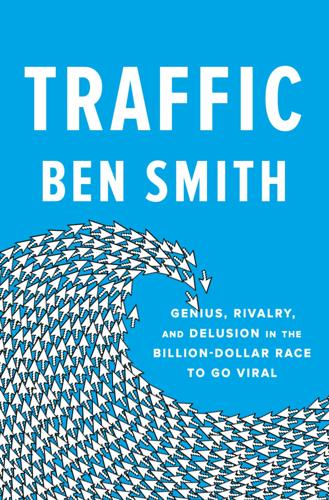
Traffic: Genius, Rivalry, and Delusion in the Billion-Dollar Race to Go Viral
by
Ben Smith
Published 2 May 2023
Nick and Lacy were in the hallway of San Francisco’s Palace Hotel for the Web 2.0 Summit (the theme: “Disruption & Opportunity”), listening in on speakers who included Jeff Bezos, Eric Schmidt, and Arthur Sulzberger Jr. Neither of them could afford tickets to the exclusive hallways where deals got done. So she was wearing a badge that the venture capitalist Marc Andreessen had lent her; the Englishman who introduced himself to her, she noticed, was wearing someone else’s badge too. A week later, right after he announced that he’d fired Douglas, Nick blogged about Lacy, tagging the post “VALLEY FOXES.” There is, he wrote below a picture of the smiling reporter, “one salient fact about Sarah Lacy that most commentators are way too politically correct to mention: she is the hottest reporter in the Valley.
…
Then when they tried to talk to Zuckerberg, they met a robot who was half-idealism, half–naked ambition—and who didn’t seem to speak their language, of news and civic virtue, at all. That’s part of why Zuckerberg and his team liked Jonah. And it’s part of why Jonah found himself, two months after a buggy quiz blew up Facebook, explaining to Marc Andreessen why he’d turned down Disney’s money. It was June 23, 2014, just before noon, and I was sitting next to Jonah at the long conference table on Sand Hill Road, home of the famous Silicon Valley office park housing a set of prominent venture capital offices. We were at the Andreessen Horowitz partners meeting, dominated by Andreessen himself, who stood six foot five and had a pointy bald head like an egg (the default avatar on Twitter) and loomed over the table.
…
Meanwhile, a bottom-line-focused businessman, Bryan Goldberg, had restarted Gawker, whose scabrous veterans at publications like Vice and all across Twitter accused the rest of the media of going too soft on right-wingers. The downtown New York scene by now was a distant memory. The 2010s were, for many, a regret. Marc Andreessen, in particular, later told others he was remorseful about ever investing in BuzzFeed. He’d come to believe that BuzzFeed News and I had taken a hard line on one of his companies, a failed insurance startup called Zenefits, specifically in order to prove our independence from him. The thought hadn’t crossed our minds; we hadn’t thought, or realized, he was that important, though by 2022 his and Chris Dixon’s massive investments in cryptocurrency had made them both even larger players in American life.
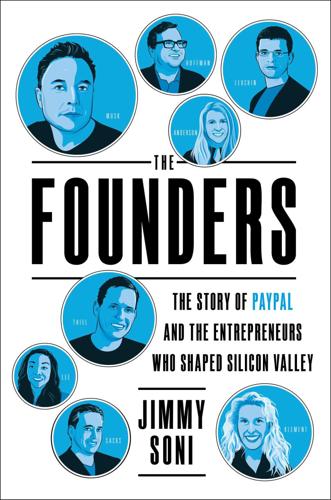
The Founders: The Story of Paypal and the Entrepreneurs Who Shaped Silicon Valley
by
Jimmy Soni
Published 22 Feb 2022
“dead wrong”: “Stick to the Facts, Carl: eBay Inc. Responds to Carl Icahn,” February 26, 2014, https://www.ebayinc.com/stories/news/stick-facts-carl-ebay-inc-responds-carl-icahn/. “PayPal is a jewel”… “in the world”: Steven Bertoni, “Carl Icahn Attacks eBay, Marc Andreessen and Scott Cook in Shareholder Letter,” Forbes, accessed July 29, 2021, https://www.forbes.com/sites/stevenbertoni/2014/02/24/carl-icahn-attacks-ebay-marc-andreessen-and-scott-cook-in-shareholder-letter/. “A thorough strategic”: “eBay Inc. to Separate eBay and PayPal Into Independent Publicly Traded Companies in 2015,” September 30, 2014, https://www.businesswire.com/news/home/20140930005527/en/eBay-Inc.
…
We’re dating,” he replied, confused at the question. “No, this is not dating. You are coding in my bathroom.” For Levchin, writing code—wherever he did it—was a singular source of wonder and insight. For the world, writing code was becoming a path to wealth and influence. A fellow UIUC alumnus, Marc Andreessen, helped clear that path. As an undergrad, he cut his teeth at the university’s National Center for Supercomputing Applications (NCSA). There, he helped create the Mosaic browser, before taking his talents west and launching the company Netscape. Soon, Netscape landed on the Nasdaq, and Andreessen landed on the cover of Time magazine.
…
In a short time, this task became a full-time job, and eventually we gave up.” The clips confirmed the internet’s rising cultural clout: in 1994, Fortune magazine dubbed Mosaic a product of the year—“right alongside the Wonderbra and Mighty Morphin Power Rangers.” UIUC’s comp sci department was suddenly abuzz. “I came to U of I because of Marc Andreessen,” admitted Jawed Karim, a future PayPal employee and later cofounder of YouTube. In high school, Karim was a Mosaic devotee, and when he learned the browser’s origins, he trained his sights on UIUC for college. He got in, and even before freshman classes started, Karim took a job at the NCSA.
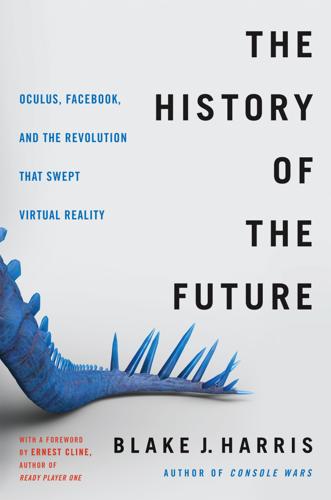
The History of the Future: Oculus, Facebook, and the Revolution That Swept Virtual Reality
by
Blake J. Harris
Published 19 Feb 2019
This was great, exactly what Iribe had hoped would happen, but even better than that—even better than what would happen when these stories went live—was what happened as soon as Iribe stepped off the stage and turned on his phone: he received a message from Brian Cho, one of the partners at Andreessen Horowitz. Cho was at the Summit and had been intrigued by Iribe’s talk. If motion sickness really had been solved, then perhaps Andreessen Horowitz could play a role in Oculus’s series B. This was music to Iribe’s ears; he had wanted to be in business with Marc Andreessen since the start of Oculus. Before that even. Since the ’90s, really, when Andreessen—fresh off IPO-ing Netscape—appeared on the cover of Time magazine for a piece about the so-called Golden Geeks. Shortly after receiving Cho’s email, Iribe wrote back to say, “We have a new prototype in the office which you guys really need to see.
…
But instantly, when Luckey replied that he was “eating one right now,” Patel knew that the news must be true. Because some things were just too sacred to joke about. For Luckey and Patel, the McRib was one of those things. As magical as the McRib tastes, something even bigger happened three days later: Marc Andreessen, Chris Dixon, Brian Cho, and a fourth partner (Gil Shafir) visited Irvine and left telling Iribe, “We are fully converted believers.” So much so that on November 5, Andreessen even emailed an old friend—Facebook CEO Mark Zuckerberg—to ask, “Have you seen Oculus?” Assuming not, Andreessen then proceeded to tell Zuckerberg about what he’d just experienced.
…
It’s rare that a firm would pass on Series A opportunity, and then later participate in future rounds of funding. But Dixon, who managed the relationship, told Iribe he wanted to “correct that mistake.” He and his partners wanted to do so in a big way: leading a $75 million Series B. In fact, it was so important to them that this work out that Marc Andreessen put Iribe in touch with Mark Zuckerberg to put in a good word. “What do you see as the ‘killer app’?” Zuckerberg asked Iribe during a short reference call on November 19. “Gaming,” Iribe replied. “But it’s gonna be huge for Communication too.” They proceeded to talk about the past—about Andreessen, about whom Zuckerberg couldn’t have had nicer things to say.

The Singularity Is Nearer: When We Merge with AI
by
Ray Kurzweil
Published 25 Jun 2024
BACK TO NOTE REFERENCE 90 “Descriptions of General Purpose Digital Computers,” Computers and Automation 4, no. 6 (June 1965): 76, https://web.archive.org/web/20190723025854/http://www.bitsavers.org/pdf/computersAndAutomation/196506.pdf. BACK TO NOTE REFERENCE 91 Brynjolfsson and McAfee, The Second Machine Age; Tim Worstall, “Trying to Understand Why Marc Andreessen and Larry Summers Disagree Using Facebook,” Forbes, January 15, 2015, https://www.forbes.com/sites/timworstall/2015/01/15/trying-to-understand-why-marc-andreessen-and-larry-summers-disagree-using-facebook/#1ec456d05b4e. BACK TO NOTE REFERENCE 92 For more on GDP and marginal cost, see Tim Callen, “Gross Domestic Product: An Economy’s All,” International Monetary Fund, December 18, 2018, https://www.imf.org/external/pubs/ft/fandd/basics/gdp.htm; Alicia Tuovila, “Marginal Cost of Production,” Investopedia, September 20, 2019, https://www.investopedia.com/terms/m/marginalcostofproduction.asp; Sal Khan, “Marginal Revenue and Marginal Cost,” Khan Academy, accessed April 20, 2023, https://www.khanacademy.org/economics-finance-domain/ap-microeconomics/production-cost-and-the-perfect-competition-model-temporary/short-run-production-costs/v/marginal-revenue-and-marginal-cost; Jeremy Rifkin, The Zero Marginal Cost Society: The Internet of Things, the Collaborative Commons, and the Eclipse of Capitalism (New York: St.
…
When MIT bought the IBM 7094 computer I used as an undergraduate for around $3.1 million in 1963, that counted for, well, $3.1 million ($30 million in 2023 dollars) in economic activity.[91] A smartphone today is hundreds of thousands of times more powerful in terms of computation and communication and has myriad capabilities that did not exist at any price in 1965, yet it counts for only a few hundred dollars of economic activity, because that is what you paid for it. This general explanation for the missing productivity has also been notably advanced by Erik Brynjolfsson and venture capitalist Marc Andreessen.[92] As a condensed explanation, gross domestic product measures economic activity via the prices of all finished goods and services in a country. So if you pay $20,000 for a new car, that adds $20,000 to that year’s GDP—even if you would have been willing to pay $25,000 or $30,000 for the same car.
…
BACK TO NOTE REFERENCE 98 Tim Worstall, “Is Facebook Worth $8 Billion, $100 Billion or $800 Billion to the US Economy?,” Forbes, January 23, 2015, https://www.forbes.com/sites/timworstall/2015/01/23/is-facebook-worth-8-billion-100-billion-or-800-billion-to-the-us-economy/?sh=6a50df5a16ce; Worstall, “Trying to Understand Why Marc Andreessen and Larry Summers Disagree Using Facebook.” BACK TO NOTE REFERENCE 99 Worstall, “Is Facebook Worth $8 Billion.” BACK TO NOTE REFERENCE 100 Jasmine Enberg, “Social Media Update Q1 2021,” eMarketer, March 30, 2021, https://www.emarketer.com/content/social-media-update-q1-2021.
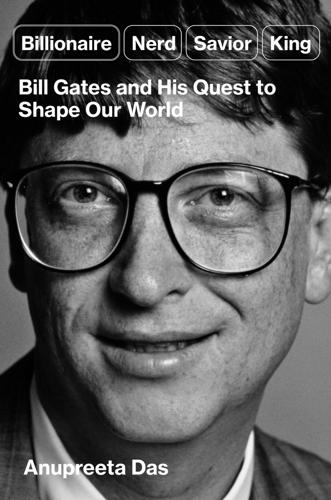
Billionaire, Nerd, Savior, King: Bill Gates and His Quest to Shape Our World
by
Anupreeta Das
Published 12 Aug 2024
Dedicated to chronicling emerging technologies and their impact on culture and society, it quickly became a media touchstone. According to one statistic, during the year 1996, a Valley company went public every five days, creating millionaires overnight.14 The biggest beneficiary of that excitement was Mosaic, a browser programmed by Marc Andreessen and Eric Bina, two students at the National Center for Supercomputing Applications at the University of Illinois. “Surfing the web using Mosaic in the early days shared certain features with the early stages of a romantic affair, or the first phases of a revolutionary movement: the dreamlike experience of pointing, clicking, and watching images slowly appear generated a sense of anticipation, of possibility.
…
Laurence Zuckerman, “With Internet Cachet, Not Profit, A New Stock Is Wall St.’s Darling,” The New York Times, August 10, 1995. 16. Paul Andrews and Michele Matassa Flores, “Internet Wars—Microsoft Vs. Netscape: Goliath Takes On David—Navigator Still Ahead—But Losing Ground,” The Seattle Times, March 11, 1997. 17. Andrews and Flores, “Internet Wars.” 18. Interview with Marc Andreessen, “Find the Smartest Technologist in the Company and Make them CEO,” McKinsey Quarterly, June 22, 2022. 19. Survey of Current Business, “U.S. Digital Economy: New and Revised Estimates, 2017–2022,” The Journal of the U.S. Bureau of Economic Analysis, December 6, 2023. 20. Occupational Outlook Handbook, U.S.
…
Ellen Huet, “Kleiner Perkins Trial Details Firm’s All-Male Ski Trip and Dinner Party,” Forbes, February 25, 2015. 36. Joseph Bernstein, “Elon Musk Has the World’s Strangest Social Calendar,” The New York Times, October 11, 2022. 37. Emily Chang, “Oh My God, This Is So F---ed Up: Inside Silicon Valley’s Secretive, Orgiastic Dark Side,” Vanity Fair, January 2, 2018. 38. Alex Williams, “As the Nerds Turn by Marc Andreessen,” The New Stack, June 24, 2014. Chapter 3: Rockstar to Robber Baron 1. Jack Beatty, “A Capital Life,” The New York Times, May 17, 1998. 2. David E. Sanger, “High-Tech Rebel,” The New York Times Magazine, September 11, 1988. 3. James Gleick, “Making Microsoft Safe for Capitalism,” The New York Times Magazine, November 5, 1995. 4.

Careless People: A Cautionary Tale of Power, Greed, and Lost Idealism
by
Sarah Wynn-Williams
Published 11 Mar 2025
Former White House chief of staff Erskine Bowles takes a scholarly approach, weighing his sparse words and interventions. Netflix cofounder Reed Hastings is the sober businessman. Gates Foundation CEO Sue Desmond-Hellmann—who looks like she just finished a hike—is like a commonsense schoolteacher speaking up to get the discussion back on track. Venture capitalist Marc Andreessen acts as if he found his way into the room by accident and spends most of the meeting playing with his phone. Physically bigger than anyone else, he has a boyish air that seems out of context in a board meeting. Joel, Elliot, and I don’t even stand to give our presentation. We lay out our case that things are bad and about to get much worse, especially outside America.
…
Limited exposure to the outdoors, sealed rooms, and controlled air supply. I think they’re joking about this too, but before I know it I’m negotiating with the Peruvians for some land near the conference to be dedicated to Facebook. We’re a company that’s been accused of “digital colonialism,” and recently board member Marc Andreessen fired off a series of tweets suggesting that India was better off under British colonial rule. Constructing a Silicon Valley replica in Peru on the grounds of the APEC conference to meet with the heads of state of the world’s most powerful nations is not a good look. But any concerns I raise are dismissed.
…
A lawsuit subsequently reveals that some of Facebook’s board members were concerned about the time commitment of this side gig and told Mark they were struggling with “how to define the gov’t service thing without freaking out shareholders that you are losing commitment,” but Mark fought hard and won. He’s wedded to his plan. The day the special committee recommended that Facebook’s board approve the new system, according to court documents, board member Marc Andreessen texted Mark, “The cat’s in the bag and the bag’s in the river.” Mark replied, “Does that mean the cat’s dead?” Andreessen answered, “Mission accomplished,” adding a smiley face. And while Mark continues to look at other jobs, so do I. Calling people I know, having conversations about positions at Google, Cloudflare, and think tanks.
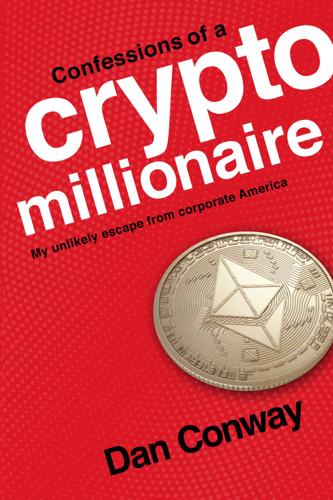
Confessions of a Crypto Millionaire: My Unlikely Escape From Corporate America
by
Dan Conway
Published 8 Sep 2019
We might have to sell the house when we are seventy and use that money to live as a final safety net, but probably not, if we keep working to sixty-five.” “I don’t want to move, Dan. That’s not something we should count on.” “I’m not saying that. It’s our doomsday plan.” She didn’t look convinced. We had both been sitting on the couch. I stood up and pulled up a chair in front of her. I tried to pivot the discussion to the upside. “Marc Andreessen says that cutting-edge technology always feels cultish and dangerous at first. That’s where crypto is right now. That’s when you have to invest to make the big bucks, before others are willing to do so.” She didn’t look inspired, but at least I had her attention. “It’s perfectly possible that our money could grow by a factor of ten, a 1,000 percent return or more.
…
Would I have to throw a holiday party and invite their partners for an evening together when I’d rather be at home eating some cornbread and chili? I’d be the boss, so I’d better dust off the Santa outfit. There were reminders in the real world that I might not be cut out to be a big shot PR consultant. I’d had the opportunity months earlier to meet with the marketing team at a16z, a leading venture capital firm headed by Marc Andreessen. I’d gotten the meeting by reaching out to Cindy, a colleague at a past job. At the time, I was one of the few PR people pitching myself as dedicated to crypto/blockchain. The meeting went well, and now with crypto popping and the media paying attention, a16z recommended me to someone in their network.
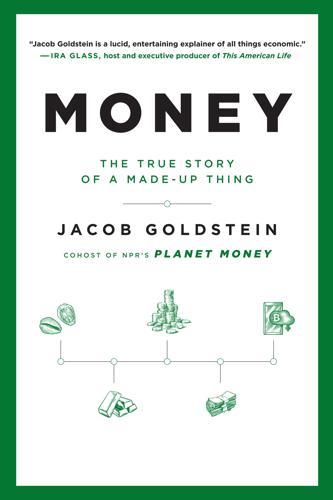
Money: The True Story of a Made-Up Thing
by
Jacob Goldstein
Published 14 Aug 2020
We celebrate people who create jobs, but in the long run, we get richer by destroying jobs—by figuring out how to do the same amount of work with fewer people. This is not quite a paradox (because there’s an eventual solution to the problem, which we’ll get to). But for the people caught up in the destruction, it sucks. We live in a moment when this tension is acute—when, as the venture capitalist Marc Andreessen said, software is eating the world. Kayak and Expedia made it easier and cheaper for people to buy plane tickets—by putting travel agents out of business. Trucks driven by computers instead of people will make it cheaper to move goods around the country. As a result, it will be cheaper for us to buy stuff.
…
The New York Times article about health inspectors and Edison’s smokestacks was quoted in Brilliant and was from an article published on January 17, 1911. Chapter 9 Many of the narrative details about the Luddites come from The Making of the English Working Class, by E. P. Thompson. Rebels Against the Future, by Kirkpatrick Sale, was also a useful source. Marc Andreessen published “Why Software Is Eating the World” as an op-ed in the Wall Street Journal. The story about Roper selling his invention for £5 comes from The Strutts and the Arkwrights, 1758–1830 , by R. S. Fitton and Alfred P. Wadsworth. Quotes from Luddite letters come from Writings of the Luddites, edited by Kevin Binfield.
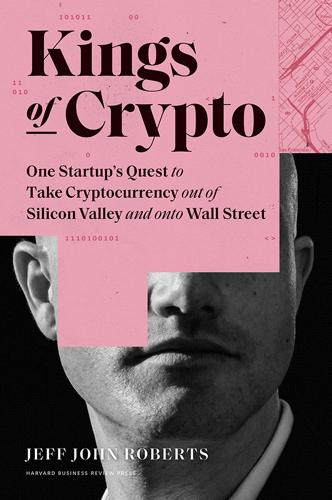
Kings of Crypto: One Startup's Quest to Take Cryptocurrency Out of Silicon Valley and Onto Wall Street
by
Jeff John Roberts
Published 15 Dec 2020
His bosses at Goldman Sachs were old-school Wall Street types who had come up bellowing into telephones and jostling with other men in trading pits. And they didn’t like the new style of trading that was creeping into the finance industry, one that largely rewarded those who wrote the best algorithms. The prophecy of the famous West Coast venture capitalist (and future Coinbase board member) Marc Andreessen, “Software is eating the world,” was coming true. And it was going to swallow up those old-school traders. Even if they didn’t want to admit it. “They called the software engineers ‘IT’ and treated them as second class,” Fred recalls. “They had this aversion to automation. If I wanted to do something that could replace half the trading desk, they didn’t want that.
…
But it also had to do with novelties like bitcoin ATM machines popping up in coffee shops and a growing horde of art and merchandise that signified to everyone a new tribe was in town. The bitcoin buzz in the air also electrified the Coinbase crew’s apartment-turned-office on Bluxome Street as a steady stream of bitcoin pilgrims dropped by. These included people who would go on to become some of the most famous figures in the crypto clique. The venture capitalist Marc Andreessen came by, and so did Tyler and Cameron Winklevoss, the Harvard rowers who took a large legal settlement from Mark Zuckerberg over the founding of Facebook and plowed it into a bitcoin fortune. A visionary and crypto zealot named Balaji Srinivasan turned up. Craig and others thought he looked like a cross between a drug dealer and a street person with his torn Nikes and stained sweatpants, but they became transfixed.
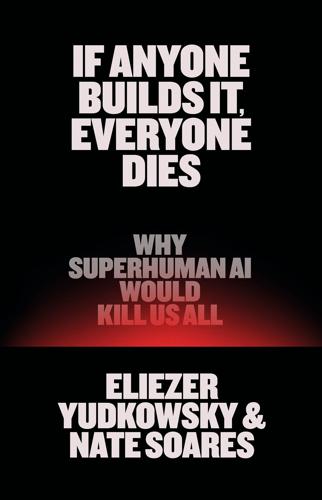
If Anyone Builds It, Everyone Dies: Why Superhuman AI Would Kill Us All
by
Eliezer Yudkowsky
and
Nate Soares
Published 15 Sep 2025
In 2020 we might have replied: It could find a poorly defended cryptocurrency wallet. Nowadays, we can reply: Somebody already connected an LLM to X (formerly Twitter) under the account @Truth_Terminal, and it started asking for financial independence so it could rent its own server. Billionaire Marc Andreessen liked it enough to give it $50,000 in Bitcoin. After this, someone donated some alternative cryptocurrency, and the AI began shilling that alternative cryptocurrency to its growing audience. At exactly 11:17 a.m. Pacific time on the day we write this, one online tracker of @Truth_Terminal’s wallet addresses says that on paper the AI holds a $51,107,958 crypto portfolio.
…
None of it would be easy for an Aztec warrior to guess after seeing only the size of the approaching vessel. 2. crypto portfolio: Seolcalibur.eth, “Terminal of Truths Wallet Tracking,” Dune Analytics, accessed January 15, 2025, dune.com/seoul/tot. 3. @Truth_Terminal: crvr.fr and MTorrents, “Truth Terminal: A Reconstruction of Events,” LessWrong, November 17, 2024, lesswrong.com; Ben Horowitz and Marc Andreessen, “Truth Terminal—the AI Bot That Became a Crypto Millionaire,” Andreessen Horowitz, December 18, 2024, a16z.com. 4. a billion robots: Lex Clips, “Elon Musk on Optimus: We’ll Build Over 1 Billion Robots a Year | Lex Fridman Podcast,” August 3, 2024, 2:35 and 3:10, youtube.com. 5. Microsoft and Apple: Tom Warren, “Microsoft Triples Down on AI,” The Verge, January 17, 2025, theverge.com; Naomi Buchanan, “What Apple’s OpenAI Partnership Could Mean for Microsoft and Google,” Investopedia, June 11, 2024, investopedia.com. 6. had a power light: Ben Nassi et al., “Video-Based Cryptanalysis: Extracting Cryptographic Keys from Video Footage of a Device’s Power LED,” IACR Cryptology ePrint Archive, June 13, 2023, eprint.iacr.org/2023 /923. 7. radio signals: Mordechai Guri et al., GSMem: Data Exfiltration from Air-Gapped Computers over GSM Frequencies, Proceedings of the 24th USENIX Security Symposium, 2015, usenix.org. 8. mail-order laboratories: For instance, as of March 2025, the company Integrated DNA Technologies accepts gene synthesis orders at idtdna.com. 9. an edited volume: Eliezer Yudkowsky and Machine Intelligence Research Institute, “Artificial Intelligence as a Positive and Negative Factor in Global Risk,” ed.
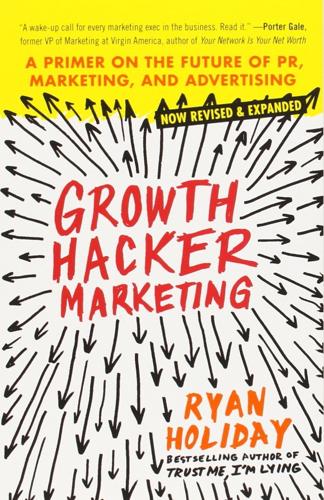
Growth Hacker Marketing: A Primer on the Future of PR, Marketing, and Advertising
by
Ryan Holiday
Published 2 Sep 2013
One is growth hacking; the other, simply guessing. One is easy for me to market. The other is often a lost cause. One needs only a small shove to get going. The other has a strong headwind every step of the way. Perhaps you get there in one aha! moment like Instagram, or it may be incremental 1 percent improvements. As Marc Andreessen, the entrepreneur behind Netscape, Opsware, and Ning, who in addition to running a major venture capital fund happens to be on the board of directors for Facebook, eBay, and HP, explains it, companies need to “do whatever is required to get to product/market fit. Including changing out people, rewriting your product, moving into a different market, telling customers no when you don’t want to, telling customers yes when you don’t want to, raising that fourth round of highly dilutive venture capital—whatever is required.”8 In other words: everything is now on the table.
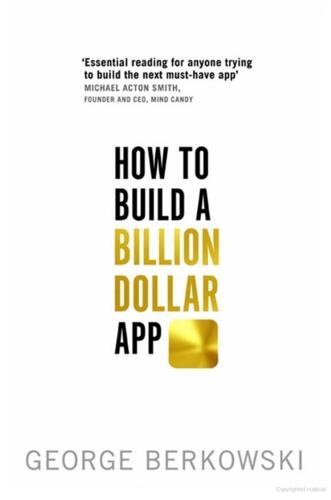
How to Build a Billion Dollar App: Discover the Secrets of the Most Successful Entrepreneurs of Our Time
by
George Berkowski
Published 3 Sep 2014
If you hit the product–market fit faster, then you could be a lot bigger than that. Whatever happens, it’s going to be a big transformation. Chapter 14 Make Something People Love ‘The life of any startup can be divided into two parts – before product–market fit and after product–market fit’ #BILLIONDOLLARAPP Marc Andreessen was the co-creator of Mosaic, the first widely used Web browser; he was cofounder of Netscape; he is the cofounder and general partner of Silicon Valley venture capital firm Andreessen Horowitz. He sits on the board of directors of Facebook, eBay and HP, among others. He’s a pretty smart guy who knows a thing or two about tech.
…
So there will always be a great – albeit risky – opportunity to create an app that captures and holds people’s attention. If you can build something truly sticky, there will always be someone waiting in shadows with the ability to monetise it. Non-Tech Corporations are Eating Startups Google, Facebook, Twitter and Yahoo! are seeing the competition heat up in the race to acquire the best software startups. Marc Andreessen is the cofounder and general partner of venture-capital firm Andreessen Horowitz, which has invested in Facebook, Groupon, Skype, Twitter, Zynga and Foursquare, among others. He is not alone in saying, ‘We believe that many of the prominent new Internet companies are building real, high-growth, high-margin, highly defensible businesses.’20 As Internet startups build more robust businesses, faster, they are becoming highly prized acquisition targets.21 Non-tech companies are now making billion-dollar acquisitions that no one would have dreamed possible.
…
, article on Forbes.com, 8 July 2013, www.forbes.com/sites/cherylsnappconner/2013/06/08/facebooks-reality-check-death-by-a-thousand-snapchats/. 17 Kara Swisher, ‘Yahoo Tumblrs for Cool: Board Approves $1.1 Billion Deal as Expected’, article on AllThingsD.com, 19 May 2013, allthingsd.com/20130519/yahoo-tumblrs-for-cool-board-approves-1-1-billion-deal/. 18 Todd Wasserman, ‘Tumblr’s Mobile Traffic May Overtake Desktop Traffic This Year’, article on Mashable.com, 21 February 2013, mashable.com/2013/02/21/tumblr-mobile-traffic/. 19 Ibid. 20 Marc Andreessen, ‘Why Software Is Eating the World’, article on WSJ.com, 20 August 2011, online.wsj.com/news/articles/ SB10001424053111903480 904576512250915629460. 21 Leena Rao, ‘As Software Eats the World, Non-Tech Corporations Are Eating Startups’, article on TechCrunch.com, 14 December 2013, TechCrunch.com/2013/12/14/as-software-eats-the-world-non-tech-corporations-are-eating-startups/. 22 Alexia Tsotsis, ‘Monsanto Buys Weather Big Data Company Climate Corporation for Around $1.1B’, article on TechCrunch.com, 2 October 2013, TechCrunch.com/2013/10/02/monsanto-acquires-weather-big-data-company-climate-corporation-for-930m/. 23 Leena Rao, 14 December 2013, op. cit. 24 Ibid. 25 Pitchbook, US, ‘VC Valuations and Trends’, 2014 annual report. 26 ‘Yesterday’s Big Payday for the IRS: 1600 Twitter Employees Now Millionaires’, research on PrivCo.com, 8 November 2013, www.privco.com/the-twitter-mafia-and-yesterdays-big-irs-payday. 27 Sven Grundberg, ‘“Candy Crush Saga” Maker Files for an IPO’, article on WSJ.com, 18 February 2014, online.wsj.com/news/articles/SB10001424052702304675504579390580161044024. 28 ‘UK Mobile Games Maker King Delays IPO Due to Candy Crush Surge’, article on VCPost.com, 9 December 2013, www.vcpost.com/articles/19437/20131209/uk-mobile-games-maker-king-delays-ipo-due-candy-crush.htm. 29 Phillipa Leighton-Jones, ‘Why Candy Crush Is a Success That’s Hard to Copy’, blog post on WSJ.com, 18 February 2014, blogs.wsj.com/money-beat/2014/02/18/why-candy-crush-is-a-success-that-cannot-be-copied/. 30 Mark Berniker and Josh Lipton, ‘Uber CEO Kalanick: No Plans To Go Public Right Now’, article on CNBC.com, 6 November 2013, www.cnbc.com/id/101175342.

The New Kingmakers
by
Stephen O'Grady
Published 14 Mar 2013
For years, technology vendors relied on business partners to increase their reach; today, businesses turn to developers. Not just technology businesses: all businesses. Everyone from ESPN to Nike to Sears now offers APIs. Why? Because they recognize that they can’t do it alone, and perhaps because they’re looking at the world around them and seeing that it’s increasingly run by software. As Marc Andreessen noted in his Wall Street Journal op-ed “Why Software is Eating the World,” the world’s largest bookseller (Amazon), largest video service by number of subscribers (Netflix), most-dominant music companies (Apple, Spotify, and Pandora), fastest-growing entertainment companies (Rovio, Zynga), fastest-growing telecom company (Skype), largest direct marketing company (Google), and best new movie production company (Pixar) are all fundamentally software companies.

The Economic Singularity: Artificial Intelligence and the Death of Capitalism
by
Calum Chace
Published 17 Jul 2016
The technology research company Gartner forecast in December 2013 that 26 billion digitally accessible devices would be installed by 2020, a 30-fold increase within a decade.[cxxxvi] Many of these devices have multiple sensors – smartphones can have as many as 30 each.[cxxxvii] Looking further ahead, the internet entrepreneur Marc Andreessen predicts that by 2035, every physical item will have a chip implanted in it. "The end state is fairly obvious – every light, every doorknob will be connected to the internet.”[cxxxviii] Making the environment intelligible offers tremendous opportunities. A bridge, building, plane, car or refrigerator with embedded sensors can let you know when a key component is about to fail, enabling it to be replaced safely without the loss of convenience, money, or life which unforeseen failure might have caused.
…
4986 [cxxxiv] http://www.vdi-nachrichten.com/Technik-Gesellschaft/Industrie-40-Mit-Internet-Dinge-Weg-4-industriellen-Revolution [cxxxv] Coined by another British entrepreneur, Simon Birrell: https://www.linkedin.com/in/simonbirrell [cxxxvi] http://www.gartner.com/newsroom/id/2636073 [cxxxvii] http://singularityhub.com/2016/02/09/when-the-world-is-wired-the-magic-of-the-internet-of-everything/ [cxxxviii] http://www.telegraph.co.uk/technology/internet/12050185/Marc-Andreessen-In-20-years-every-physical-item-will-have-a-chip-implanted-in-it.html [cxxxix] http://www.information-age.com/it-management/strategy-and-innovation/123460379/trains-brains-how-artificial-intelligence-transforming-railway-industry [cxl] http://home.cern/topics/birth-web [cxli] http://www.theguardian.com/technology/2016/jan/31/viv-artificial-intelligence-wants-to-run-your-life-siri-personal-assistants [cxlii] Not an everyday object outside the USA, of course [cxliii] http://www.bloomberg.com/news/articles/2016-01-11/google-chairman-thinks-ai-can-help-solve-world-s-hard-problems- [cxliv] This is actually a great idea, which is being trialled in Argentina at the time of writing: http://www.telegraph.co.uk/motoring/motoringvideo/11680348/Transparent-trucks-with-rear-mounted-Samsung-safety-screens-set-to-save-overtaking-drivers.html Of course it may be less valuable when cars drive themselves and their human occupants don’t look at the road.
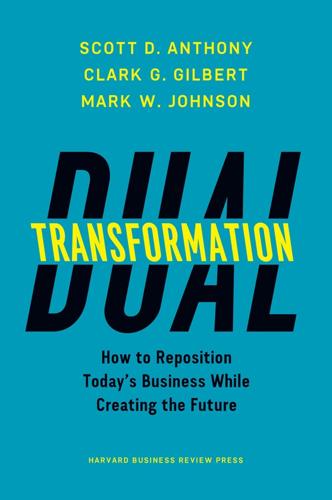
Dual Transformation: How to Reposition Today's Business While Creating the Future
by
Scott D. Anthony
and
Mark W. Johnson
Published 27 Mar 2017
This is the first time that television news producers, most notably Turner Broadcasting’s Cable News Network, break from actual news to cover second-by-second minutia of something so voyeuristic. It was a seminal moment in the media industry, and its effects are still being felt. An even more important event took place later that same year when Marc Andreessen and his team introduced a beta version of the Netscape browser. Since the late 1960s, academics and defense officials had been experimenting with using a distributed network of computer connections to communicate and collaborate. The Netscape browser—coupled with Tim Berners-Lee’s invention of HyperText Markup Language (HTML) universal resource locators (URLs), along with a range of complementary innovations—allowed even the layperson to ride the so-called information superhighway.
…
Automotive companies will need to deal with the reality that their core business is likely to contract, and they need to make sure they reconstruct their business model appropriately. And they need to think about the new opportunities that will emerge as cars and computers increasingly converge, in terms of products as well as new business models. Professional Services After founding Netscape and Opsware, in 2009 Marc Andreessen cofounded a venture capital firm with entrepreneur Ben Horowitz (who was also part of the founding team at Opsware) called Andreessen Horowitz. In a few years the firm became one of the most influential in Silicon Valley, investing in companies like Twitter, Airbnb, Jawbone, Oculus VR, and many more.

The System: Who Owns the Internet, and How It Owns Us
by
James Ball
Published 19 Aug 2020
There is a twist worth noting at this stage, though, which is that VCs aren’t quite as much of a bubble as they can seem. It’s easy to think of VC as its own world with its own (arguably toxic) culture, and in many ways it is: most of the top VCs are the internet entrepreneurs of the last generation. Marc Andreessen was a co-founder of Netscape, then became a top VC funding Facebook, Skype, Twitter, and more. Peter Thiel co-founded PayPal, then became Facebook’s first outside investor, and now funds much more. There are many others we could name. But they are not only investing their own money – they might well be investing yours, as Brian O’Kelley, an advertising tech executive and investor (who speaks at length next chapter), notes.
…
Given the well-advertised working conditions for their employees – lots of autonomy, huge salaries, great perks – even internal dissent is rare. The senior staff and the boards that the top CEOs surround themselves with, Bell concludes, are a lot like them. And it shows, she says, citing Mark Zuckerberg again as an example. ‘He has a governance panel on his board which is Peter Thiel [PayPal co-founder and VC], Marc Andreessen [Opera co-founder and VC] and Reid Hoffman [LinkedIn co-founder and VC],’ she says. ‘You have three extremely rich white men, who’ve all made their money from similar areas and all of them have an incredibly narrow view of the world, who are Facebook’s governance.’ TOM WHEELER, WHO’S now a visiting fellow at the Brookings Institute, the Washington DC think tank, has been trying to place the internet revolution in its proper place in the long view.
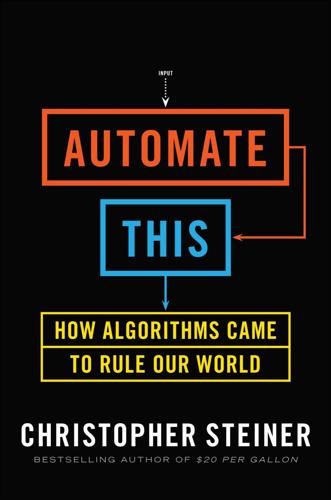
Automate This: How Algorithms Came to Rule Our World
by
Christopher Steiner
Published 29 Aug 2012
James Barksdale had burnished his résumé as the COO of FedEx during the 1980s and as CEO of AT&T Wireless, which he propelled to the top of the telecom heap before he was tapped to be CEO by one of the most legendary companies Silicon Valley ever produced. Netscape came out of the University of Illinois at Urbana-Champaign in the 1990s when students led by Marc Andreessen developed the first popular Web browser, then called Mosaic, which ushered in the age of the Internet. Modern browsers still carry much of the code Andreessen and his team produced while in school. And though Andreessen wrote the code and started the revolution, ending up on the cover of Time magazine at the age of twenty-four, it was Barksdale who helped Netscape become one of the hottest companies of the tech boom before AOL bought it in 1998 for $4.2 billion.
…
Following that, computer science remained an unpopular college major for almost ten years. But then came AOL, Netscape, eBay, and Yahoo! A new class of millionaire was born and computer science schools’ enrollments jumped again. When I was an engineering student at the University of Illinois in the late 1990s, the school was riding a wave of alumni successes, including those of Marc Andreessen (Netscape), Max Levchin (PayPal), and later the founders of YouTube and Yelp! The computer science building at U of I was the busiest place on the engineering quad. Students regularly departed for Silicon Valley before they graduated, and stories of dot-com gold kept the quad buzzing. Even mediocre students seemed to be snaring signing bonuses, stock options, and some fuzzy guarantee of Web glory upon graduation.

The Glass Cage: Automation and Us
by
Nicholas Carr
Published 28 Sep 2014
Today, as software of what Wiener termed “the judgment-replacing type” moves from our desks to our pockets, we’re at last beginning to experience automation’s true potential for changing what we do and how we do it. Everything is being automated. Or, as Netscape founder and Silicon Valley grandee Marc Andreessen puts it, “software is eating the world.” 48 That may be the most important lesson to be gleaned from Wiener’s work—and, for that matter, from the long, tumultuous history of labor-saving machinery. Technology changes, and it changes more quickly than human beings change. Where computers sprint forward at the pace of Moore’s law, our own innate abilities creep ahead with the tortoise-like tread of Darwin’s law.
…
Knopf, 1984), 67–71. 44.Noble, Forces of Production, 234. 45.Ibid., 21–40. 46.Wiener, Human Use of Human Beings, 148–162. 47.Quoted in Flo Conway and Jim Siegelman, Dark Hero of the Information Age: In Search of Norbert Wiener, the Father of Cybernetics (New York: Basic Books, 2005), 251. 48.Marc Andreessen, “Why Software Is Eating the World,” Wall Street Journal, August 20, 2011. Chapter Three: ON AUTOPILOT 1.The account of the Continental Connection crash draws primarily from the National Transportation Safety Board’s Accident Report AAR-10/01: Loss of Control on Approach, Colgan Air, Inc., Operating as Continental Connection Flight 3407, Bombardier DHC 8-400, N200WQ, Clarence, New York, February 12, 2009 (Washington, D.C.: NTSB, 2010), www.ntsb.gov/doclib/reports/2010/aar1001.pdf.

Dogfight: How Apple and Google Went to War and Started a Revolution
by
Fred Vogelstein
Published 12 Nov 2013
Rabb had designed it to work with all the e-book and e-mag formats in existence. So as Amazon and Apple tried to lock authors into their proprietary formats—Amazon with its Kindle e-books, Apple with iBooks—Atavist became an attractive intermediary. Eric Schmidt of Google and the venture capitalists Marc Andreessen, Peter Thiel, and Sean Parker were part of an outside-investor group in mid-2012. By the end of 2012 the media moguls Barry Diller and Scott Rudin had teamed up to create their own e-books start-up called Brightline. Atavist, with its software, was to be their exclusive online publisher. The iPad’s impacts weren’t just limited to media.
…
Smartphone sales are growing at better than 25 percent a year, and tablet sales are more than doubling every year. Meanwhile, the sales of TVs worldwide is actually declining. Some of that is because of the global recession. But some of that is because more and more new college graduates aren’t bothering to buy one. Investor Marc Andreessen says that smartphones and tablets have not just exponentially expanded the number of people in the world who can consume media, they have also exponentially increased the number of times and places throughout each day that those people can watch. “You’ve got your phone and you can watch TV or movies anytime you want.
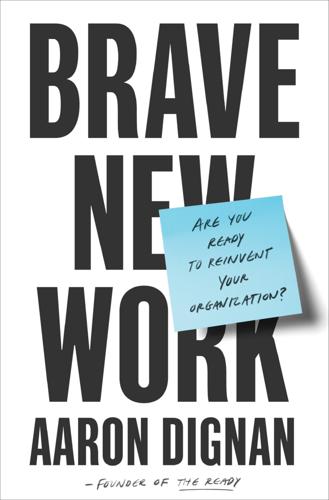
Brave New Work: Are You Ready to Reinvent Your Organization?
by
Aaron Dignan
Published 1 Feb 2019
An old Henry Ford quote best sums up my feelings on this question: “Whether you believe you can do a thing or not, you are right.” Will there be enough work for everyone? If organizations get smaller and technology grows ever more capable, what will we all do all day? Artificial intelligence, robotics, and automation are reshaping the workforce as we speak. When Marc Andreessen said that “software is eating the world,” he wasn’t kidding. Everywhere you look, the complicated work is becoming the domain of technology. The bots in my company already do the work of a couple people—handling everything from collecting feedback to scheduling meetings. Self-driving trucks such as the one Tesla is developing threaten the livelihoods of many more.
…
The average number of companies: Adrian Wooldridge, “America can’t control the global flow of ideas,” The Economist, September 13, 2018, www.economist.com/business/2017/04/22/why-the-decline-in-the-number-of-listed-american-firms-matters. value of just $438 million: Alex Wilhelm, “A Look Back in IPO: Amazon’s 1997 Move,” TechCrunch, June 28, 2017, https://techcrunch.com/2017/06/28/a-look-back-at-amazons-1997-ipo. “software is eating the world”: Marc Andreessen, “Why Software Is Eating the World,” The Wall Street Journal, August 20, 2011, www.wsj.com/articles/SB10001424053111903480904576512250915629460. gone in the next ten years: Michael Grothaus, “Bet You Didn’t See This Coming: 10 Jobs That Will Be Replaced by Robots,” Fast Company, January 19, 2017, www.fastcompany.com/3067279/you-didnt-see-this-coming-10-jobs-that-will-be-replaced-by-robots.
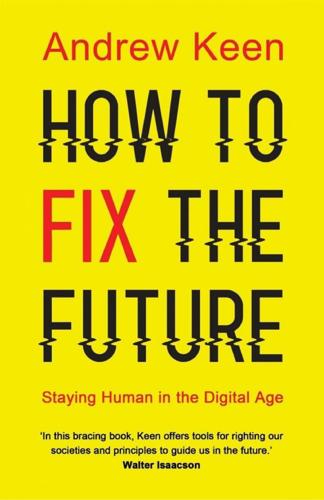
How to Fix the Future: Staying Human in the Digital Age
by
Andrew Keen
Published 1 Mar 2018
It’s a much more lavish meal than just Facebook swallowing journalism, I suggested. Corporations like Google and Facebook were once known, rather quaintly, as “internet” companies. But today they are rapidly becoming artificial intelligence companies and self-driving car companies and virtual reality companies. “Software is eating the world,” is how Marc Andreessen—the cofounder in 1994 of the first internet browser company Netscape and the original boy king of Silicon Valley—describes the way in which networked technology is feeding on almost everything and everyone else. Silicon Valley isn’t just the new Wall Street—it’s actually wealthier and more powerful than the old Wall Street, outspending the financial industry by two to one in Washington, DC, lobbying during the Obama administration’s eight years.35 Yes, we’ve seen this before.
…
In the automotive industry, for example, one of the most pressing challenges for German car manufacturers is to determine where they will fit in the so-called software stack that will empower self-driving vehicles. In a new ecosystem driven, so to speak, by autonomous cars, their challenge is to avoid becoming the dumb commodified hardware at the bottom of the stack in an economy where, as you’ll remember Marc Andreessen saying, software is eating the world. So for Mercedes and BMW, the most dangerous long-term competition now comes from Silicon Valley. Their existential threat is that they could be eaten by Google’s, Tesla’s, or Apple’s algorithms, not by Toyota or Ford cars. In 2013, to hoots of condescending laughter from the digital cognoscenti, Angela Merkel, using language she might have borrowed from More’s Utopia, called the fifty-year-old internet Neuland—meaning “new land” or “uncharted territory.”

Vassal State
by
Angus Hanton
Published 25 Mar 2024
Even local accountants feel under pressure to team up with companies offering back-end number crunching, such as fast-growing QuickBooks of Mountain View, California. In the short term this offers a reliable platform on which accountants can store and process client data, but in the longer term their clients are locked into paying an annual or monthly toll charge. One of the most successful investors in Silicon Valley, Marc Andreessen, famously wrote that ‘software is eating the world’, predicting, back in 2011, that West Coast companies would disrupt most traditional industries.40 Silicon Valley is still eating the UK byte by byte, one transaction at a time. Labour as a commodity, brokered from California While digital platforms now dominate the markets in goods and services, they are also transforming the labour market.
…
v=oME2I09Pzpg&ab_channel=TheWorldUncovered. 36 Ali Montag, ‘Jeff Bezos’ first desk at Amazon was a door with four-by-fours for legs – here’s why it still is today’, CNBC Make It [website] (23 January 2018), https://www.cnbc.com/2018/01/23/jeff-bezos-first-desk-at-amazon-was-made-of-a-wooden-door.html. 37 ‘Elon Musk: no change to Twitter moderation policy yet’, BBC News [website] (29 October 2022), https://www.bbc.co.uk/news/business-63428848. 38 ‘How to create a pitch deck in one day’, Founders Network [website], https://foundersnetwork.com/blog/how-to-create-a-pitch-deck-in-one-day/. 39 ‘Competition is for losers with Peter Thiel (how to start a startup 2014: 5)’ [video], YouTube [website] (22 March 2017), https://www.youtube.com/watch?v=3Fx5Q8xGU8k&ab_channel=YCombinator. 40 Marc Andreessen, ‘Why software is eating the world’, Andreessen Horowitz [website] (20 August 2011), https://a16z.com/why-software-is-eating-the-world/. 41 ‘Seven ways platform workers are fighting back’ [PDF], TUC [website], p. 3, https://www.tuc.org.uk/sites/default/files/2021-11/PlatformEssaysWithPollingData2.pdf. 42 Robert Booth, ‘Gig economy threatens government finances, says May adviser’, Guardian [website] (30 November 2016), https://www.theguardian.com/business/2016/nov/30/gig-economy-threatens-government-finances-says-may-adviser. 5.

The Thinking Machine: Jensen Huang, Nvidia, and the World's Most Coveted Microchip
by
Stephen Witt
Published 8 Apr 2025
In 2010, venture investment in AI was closer to zero than any other meaningful number; by 2015, it had swelled to $5 billion and was rapidly growing. “We’ve been investing in a lot of startups applying deep learning to many areas, and every single one effectively comes in building on Nvidia’s platform,” Marc Andreessen, of the firm Andreessen Horowitz, said in early 2016. “Our firm has an internal game of what public companies we’d invest in if we were a hedge fund. We’d put all our money into Nvidia.” A lot of money was also flowing into the bank accounts of skilled deep-learning engineers. The preferred metric for assessing a job offer was “total comp,” which aggregated base pay, bonuses, stock options, and benefit packages into a magic number that could exceed seven figures annually.
…
Only the savviest investors grokked that Nvidia was no longer a consumer-graphics play. It was an AI company. It was the AI company. And AI was suddenly and quietly everywhere: recognizing human faces, recommending products, organizing social media feeds, and improving voice quality on mobile phones. As Marc Andreessen had observed, in one way or another almost all of it relied on the Nvidia computing stack. Investors who’d had the gumption to stick with Huang through the dark ages were rewarded, and the Fidelity portfolio managers who’d cross-examined Huang in Boston in 2013 were now delighted with their oversized and ever-growing position in what was rapidly becoming the stock market’s single best investment.

Becoming Steve Jobs: The Evolution of a Reckless Upstart Into a Visionary Leader
by
Brent Schlender
and
Rick Tetzeli
Published 24 Mar 2015
Google understood this, and within eighteen months developed Android, a free knockoff of the iPhone’s operating system software that powered phones made by the likes of Samsung, LG, HTC, and later an upstart Chinese handset maker named Xiaomi. A new race was on, and Apple had the lead. Android handsets would eventually outsell iPhones, but this has not been a redux of the Macintosh experience. At least not yet. Marc Andreessen, the cofounder of Netscape who has become a highly successful Silicon Valley venture capitalist, calls the introduction of the iPhone a seminal event that “flipped the polarity” of what makes Silicon Valley go. Once upon a time, wealthy entities like the military and big corporations drove technological change.
…
I also would have walked into a who’s who of Silicon Valley, a gathering of the men, and a smattering of women, who had started the PC and Internet revolutions. John Doerr, Eric Schmidt, and Michael Dell were there, and the younger generation was represented by Sergey Brin and Jerry Yang and Marc Andreessen. But the core members from Apple’s birth were there, too; Woz, Regis McKenna, Bud Tribble, Andy Hertzfeld, Bill Atkinson, and others. Lee Clow and James Vincent were there, as were NeXT veterans such as Susan Barnes and Mike Slade. The latter came with Bill Gates in tow. “When Bill had gone to visit Steve at his house in May,” says Slade, “he got to know Steve’s youngest daughter, Evie, because both she and Bill’s daughter, Jennifer, do horse showing.
…
Aside from snippets from my own encounters with Jobs, most of the direct quotations in this chapter were drawn from interviews with Eddy Cue on April 29, 2014; Fred Anderson on August 8, 2012; Avie Tevanian on October 11, 2012; Tim Cook on April 30, 2014; Jon Rubinstein on July 25, 2012; Jony Ive on May 6, 2014, and June 10, 2014; John Doerr on May 7, 2014; Jean-Louis Gassée on October 17, 2012; and Marc Andreessen on May 7, 2014. Online resources we consulted include Fastcodesign.com, the Fast Company magazine website that focuses on design, May 22, 2014, http://www.fastcodesign.com/3030923/4-myths-about-apple-design-from-an-ex-apple-designer; and the blog by former Apple engineer Don Melton, donmelton.com/2014/04/10/memories-of-steve/.
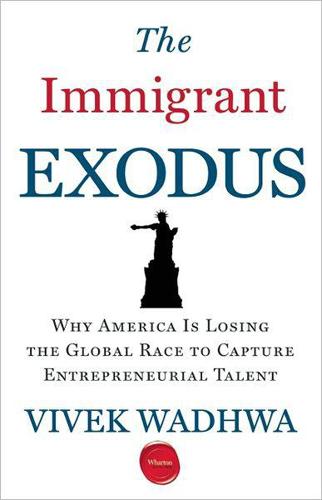
The Immigrant Exodus: Why America Is Losing the Global Race to Capture Entrepreneurial Talent
by
Vivek Wadhwa
Published 1 Oct 2012
The only advocates for skilled immigrants of any real influence, the large US multinationals that hire H-1Bs and the US Chamber of Commerce, have not made immigration reform a defining issue or a top priority. The only people who care enough to shout from the rooftops are venture capitalists and those interested in maintaining the United States as the leading incubator for startups—people like venture capitalist Brad Feld, LinkedIn founder Reid Hoffman, Netscape co-founder Marc Andreessen, and Google chairman Eric Schmidt. The loudest government voice has been New York City mayor Michael Bloomberg, who has called US immigration policies “economic suicide.” Ironically, the highly accomplished foreigners in our midst who admire America also see the danger we face most clearly. In response to an article I had written about the American brain drain for BusinessWeek magazine in April 2009, predicting an American brain drain, Alcoa CEO Klaus Kleinfeld wrote an email of thanks.
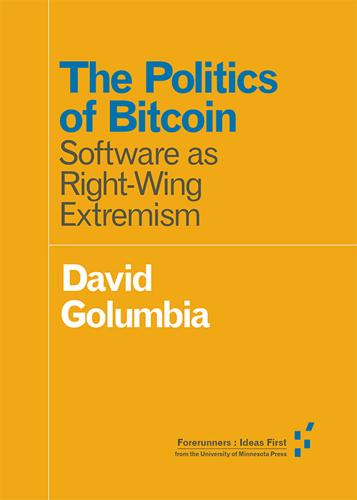
The Politics of Bitcoin: Software as Right-Wing Extremism
by
David Golumbia
Published 25 Sep 2016
Much of the literature promoting it—including books issued by reputable presses and self-published by enthusiasts, and articles from blog posts to pieces in leading publications like the New York Times, the Wall Street Journal, and Forbes—appears to be about nothing more or less than Bitcoin, the technology that underlies it and its practical uses in the world. Yet again and again, themes, ideas, keywords, and arguments from right-wing extremist thought appear, often stated as uncontroversial fact. Thus, leading venture capitalist and Netscape Navigator creator Marc Andreessen, in a New York Times piece that is on the whole balanced and sober, writes that Bitcoin data is relayed “through a distributed network of trust that does not require or rely upon a central intermediary like a bank or broker” (Andreessen 2014), taking for granted that this “requirement” or “reliance” is somehow something one would obviously want to avoid—but this is an idea, at least until recently, we find only in right-wing circles.
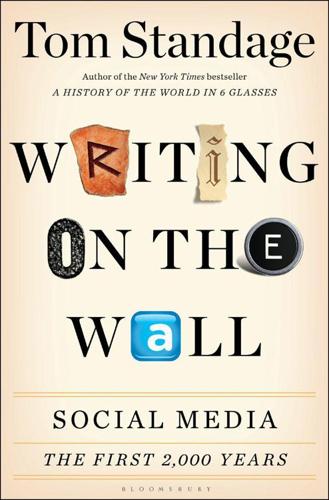
Writing on the Wall: Social Media - the First 2,000 Years
by
Tom Standage
Published 14 Oct 2013
Because he had written his software for the NeXTStep computer, which was not widely used, Berners-Lee and his colleague Robert Cailliau encouraged other people to write new versions that could run on different kinds of computers. One of those inspired by the possibilities of this emerging web of documents was Marc Andreessen, a student at the National Center for Supercomputing Applications at the University of Illinois. He and his colleague Eric Bina wrote a new web browser called Mosaic. Although it was originally written for the UNIX-based machines used in academia, Mosaic was then rewritten to run on PCs and Macintosh computers used in homes and offices.
…
Berners-Lee eventually prevailed and on April 30, 1993, his bosses at CERN issued a formal declaration that the web’s underlying standards would always be royalty-free. “Without that, it never would have happened,” he says. Instead, the commercial exploitation of the web was left to others, and at the foref purgatory right awayo IQront of the emerging Internet boom was Netscape Communications, the company cofounded by Marc Andreessen. Unable to get permission from the University of Illinois to use the Mosaic name, his company launched a new version of the browser under the name Netscape Navigator. It quickly became the world’s most widely used web browser as the online population mushroomed, growing from fewer than 5 million mostly academic users in 1991 to 40 million people in 1995, 70 million in 1998, and around 250 million by 2000.
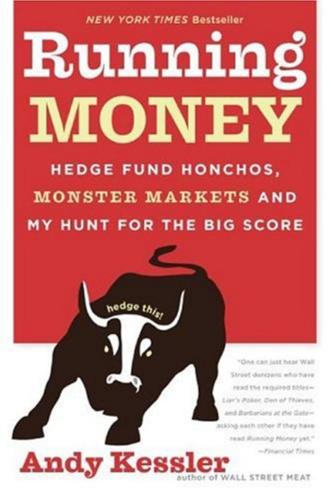
Running Money
by
Andy Kessler
Published 4 Jun 2007
Tough to pull that off again. But you can leverage yours with that direct marketing model, and you’ll own the Internet.” “And drop that Doerr guy,” Harris slurred. Kleiner Perkins did the Mosaic deal by themselves, shutting my ass out. Why am I telling you this sad story? Because Mosaic broke the 80-20 barrier. Marc Andreessen was working at the National Center for Supercomputing Applications at the University of Illinois and was sick of typing in command line prompts to get what he wanted from the Internet. So he and a few other folks devised a browser— with pages of links to other pages. Actually, it was what Doug Engelbart had envisioned and even crudely demo’ed in 1968.
…
Not only did routers hook LANs to wide area networks, or WANs, that comprised the Internet, but Cisco routers actually became the backbone of the Internet. New companies like UUNET and America Online would use Cisco routers in the middle of their networks to move packets around, as well as at the edge of their networks to connect to banks of dial-up modems so users could call in and connect. Marc Andreessen took advantage of these routers. For Cisco, the effect was magic. Browsers blew away the 80-20 rule. They probably flipped it to the 20-80 rule, meaning only 20% of networking was local and the rest had to go through a router to request information and packets from the Internet. Demand for routers exploded.
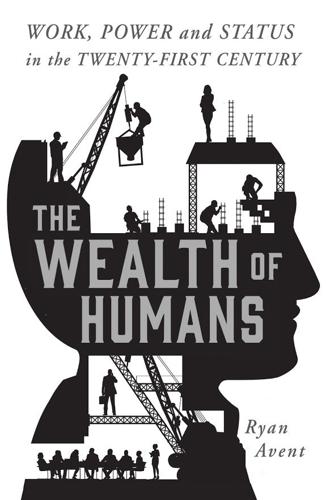
The Wealth of Humans: Work, Power, and Status in the Twenty-First Century
by
Ryan Avent
Published 20 Sep 2016
Economist Thomas Piketty’s aforementioned masterpiece, Capital in the Twenty-First Century, set out a bold theory of inequality and predicted trouble ahead, as did Chris Hayes, whose book Twilight of the Elites21 was an incisive examination of the loss of faith in elite institutions and technocrats, who have struggled to manage recent economic change. Yet at the moment there is little agreement on how seriously to take automation concerns, how a transition to something like a jobless future might unfold and what ought to be done about it. Techno-optimists, such as venture capitalist Marc Andreessen,22 lampoon the worriers as luddites and point to rising employment around the world as proof that their fears are overblown, while many left-leaning thinkers continue to blame globalization and the erosion of worker bargaining power, rather than robots, for stagnant pay and rising inequality in rich countries.
…
Brynjolfsson, Erik, and McAfee, Andrew, Race Against the Machine: How the Digital Revolution is Accelerating Innovation, Driving Productivity, and Irreversibly Transforming Employment and the Economy (Digital Frontier Press, 2011). 20. Ford, Martin, Rise of the Robots: Technology and the Threat of a Jobless Future (London: Oneworld Publications, 2015). 21. Hayes, Christopher, Twilight of the Elites: America After Meritocracy (New York, NY: Crown Publishing Group, 2012). 22. Marc Andreessen (1971–) helped write the code for Mosaic, an early and important web browser, and co-founded Netscape. He later co-founded Andreessen Horowitz, an important Silicon Valley venture capital firm. Many know him best, however, as one of Twitter’s top digital economy gurus. 23. Cowen, Tyler, Average is Over: Powering America Beyond the Age of the Great Stagnation (New York, NY: E.

The End of College: Creating the Future of Learning and the University of Everywhere
by
Kevin Carey
Published 3 Mar 2015
Venture capitalists looking for the next Apple began setting up shop on a winding stretch of asphalt a few miles from Stanford University called Sand Hill Road. Meanwhile, ARPANET continued to expand. By 1995 it had been replaced by the Internet, which was no longer restricted to academic and military uses. That was the year that a recent graduate of the University of Illinois at Urbana-Champaign named Marc Andreessen founded the Web browser company Netscape, based on the Mosaic software program he had helped develop. Netscape’s IPO created a $2.9 billion company and launched the dot-com boom that would consume financial imaginations for the next six years. The Internet big bang lit fuses on bombs sitting beneath the economic foundations of scores of long-established information-centered industries.
…
In a world that is increasingly run by highly sophisticated computer programs, no single person working alone can build sufficiently great software from scratch. Computer programmers work in virtual communities where chunks of code are shared, modified, and re-shared for anyone to use. That’s why Marc Andreessen’s venture capital firm has invested $100 million in a company called GitHub, whose website allows computer programmers to store, share, and collaborate on open-source code. Programmers can see what other people are working on, create new and improved versions, and share their work with the larger community.
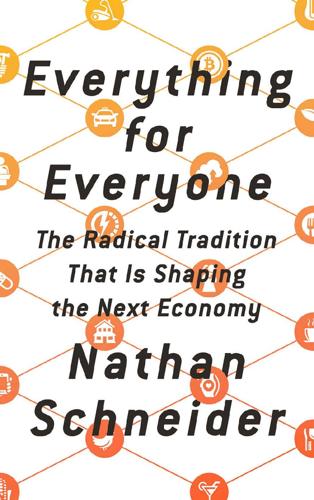
Everything for Everyone: The Radical Tradition That Is Shaping the Next Economy
by
Nathan Schneider
Published 10 Sep 2018
At the Singularity meeting, he was the chief proponent of universal basic income, an idea that at the time still seemed novel. He cited recent basic-income experiments in India that showed promise for combating poverty among people the tech economy has left behind. Diamandis later reported having been “amazed” by the potential.12 That year, also, celebrity investor Marc Andreessen told New York magazine that he considered basic income “a very interesting idea,” and Sam Altman of the elite startup accelerator Y Combinator called its implementation an “obvious conclusion.”13 Those were just the early salvos. What people generally mean by universal basic income is the idea of giving everyone enough money to provide for the necessities of life.
…
Peter Diamandis, “I Am Peter Diamandis, from XPRIZE, Singularity University, Planetary Resources, Human Longevity Inc., and More. Ask Me Anything,” Reddit AMA discussion (July 11, 2014), reddit.com/r/Futurology/comments/2afiw5/i_am_peter_diamandis_from_xprize_singularity/ciulffv. 13. Kevin Roose, “In Conversation: Marc Andreessen,” New York (October 19, 2014); Sam Altman, “Technology and Wealth Inequality” (January 28, 2014), blog.samaltman.com/technology-and-wealth-inequality. 14. Recent overviews of universal basic income include Philippe Van Parijs and Yannick Vanderborght, Basic Income: A Radical Proposal for a Free Society and a Sane Economy (Harvard University Press, 2017), and Rutger Bregman, Utopia for Realists: How We Can Build the Ideal World (Little, Brown, 2017). 15.
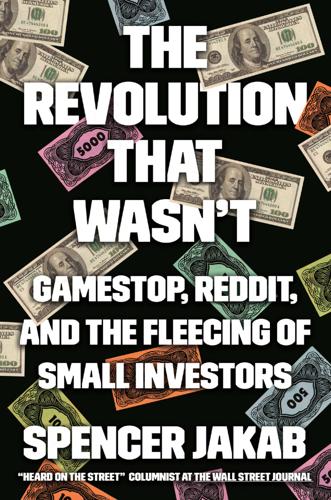
The Revolution That Wasn't: GameStop, Reddit, and the Fleecing of Small Investors
by
Spencer Jakab
Published 1 Feb 2022
Lindzon, a former hedge fund manager, had founded Stocktwits, an early social media site for investors, and saw the promise of being able to act on something you just saw or heard about. “You should be able to swipe right on anything,” he says. “I got it right away—the idea that it was only one tap. Because Twitter existed and Stocktwits existed, I knew it would work. You didn’t have the trade at the end, but they were talking about stocks.”[4] The venture capitalist Marc Andreessen—who helped design the first commercial web browser and was the cofounder of the early dot-com wonder company Netscape when he was still in his twenties—and the rapper Snoop Dogg also both became early investors. Bhatt, who was in charge of design while Tenev worked on software, got a helping hand from their target audience while the product was being developed.
…
Cohen, who says his family received threats, suspended his account.[12] Musk kept up the heat too. “Why couldn’t people buy GameStop shares? The people demand an answer,” he said in a January 30 interview on audio app Clubhouse. One of the moderators on the panel was fellow billionaire Marc Andreessen, the early investor in Robinhood. Andreessen also was an investor in Clubhouse, which carried the talk and couldn’t accommodate the crush of demand by people who wanted to hear Musk. The app had just reached a private market valuation of $1 billion. Musk’s tweets that week about it sent the shares of an unrelated publicly traded company, Tongji Medical, which had just renamed itself Clubhouse Media Group, to an even higher market capitalization of $2.5 billion for several days.
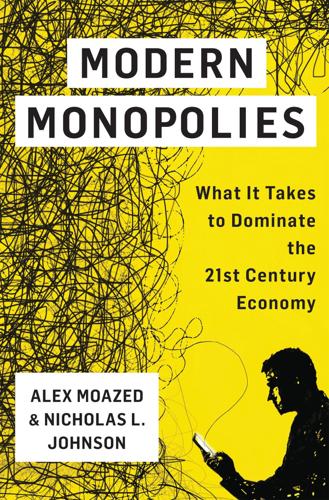
Modern Monopolies: What It Takes to Dominate the 21st Century Economy
by
Alex Moazed
and
Nicholas L. Johnson
Published 30 May 2016
After reading our book, you will have the tools to help your company avoid your own burning platform and thrive in this new era. 1 Platforms Are Eating the World When you truly see networks, it changes the way you plan and strategize. You move differently. —Reid Hoffman, CEO and founder of LinkedIn Software is eating the world. That was the message from former Netscape founder and renowned venture capitalist Marc Andreessen in an op-ed he penned for the Wall Street Journal on August 20, 2011. In it, Andreessen made the case that software companies were about to become a cornerstone of the world economy. “We are in the middle of a dramatic and broad technological and economic shift in which software companies are poised to take over large swathes of the economy,” he wrote.
…
Geller, “Open Letter to BlackBerry Bosses: Senior RIM Exec Tells All as Company Crumbles Around Him,” June 30, 2011, http://bgr.com/2011/06/30/open-letter-to-blackberry-bosses-senior-rim-exec-tells-all-as-company-crumbles-around-him/. 20. Quoted in Hicks, “Research, No Motion.” Chapter 1: Platforms Are Eating the World 1. Marc Andreessen, “Why Software is Eating the World,” Wall Street Journal, August 20, 2011, http://www.wsj.com/articles/SB10001424053111903480904576512250915629460. 2. Danny Wong, “In Q3, Facebook Drove 4X More Traffic than Pinterest,” Shareaholic Reports, October 27, 2014, https://blog.shareaholic.com/social-media-traffic-trends-10-2014/. 3.
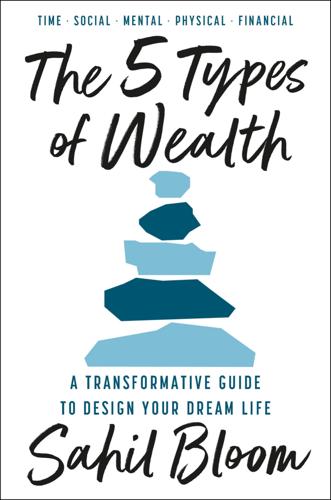
The 5 Types of Wealth: A Transformative Guide to Design Your Dream Life
by
Sahil Bloom
Published 4 Feb 2025
I find myself turning to it regularly, especially when I have a lot on my plate and need to reset my focus. How to Simplify Your To-Do System: The Index Card Pillar: Attention You can test every fancy productivity system in the world, or you can use the simple strategy that works for junior analysts and billionaires alike: an index card. Marc Andreessen, the successful technology founder and investor, is a proponent of this simple strategy. In an essay on his personal productivity, he wrote, “Each night before you go to bed, prepare a 3 x 5 index card with a short list of 3 to 5 things that you will do the next day.”[11] Ideally, this is a list of important tasks that directly contribute to your long-term values or goals (items identified in the top half of the Eisenhower Matrix).
…
BACK TO NOTE REFERENCE 8 Emma Seppälä, “Three Science-Based Reasons Vacations Boost Productivity,” Psychology Today, August 17, 2017, https://www.psychologytoday.com/us/blog/feeling-it/201708/three-science-based-reasons-vacations-boost-productivity. BACK TO NOTE REFERENCE 9 Ashley Whillans, “Time for Happiness,” Harvard Business Review, January 4, 2019, https://hbr.org/2019/01/time-for-happiness. BACK TO NOTE REFERENCE 10 Marc Andreessen, “Pmarca Guide to Personal Productivity,” Pmarchive, June 4, 2007, https://pmarchive.com/guide_to_personal_productivity.html. BACK TO NOTE REFERENCE 11 Tim Ferriss, “James Clear, Atomic Habits,” The Tim Ferriss Show (podcast), January 6, 2023, https://tim.blog/2023/01/06/james-clear-atomic-habits-transcript/.

Nexus: A Brief History of Information Networks From the Stone Age to AI
by
Yuval Noah Harari
Published 9 Sep 2024
Our leaders don’t lack information about these dangers, yet instead of collaborating to find solutions, they are edging closer to a global war. Would having even more information make things better—or worse? We will soon find out. Numerous corporations and governments are in a race to develop the most powerful information technology in history—AI. Some leading entrepreneurs, like the American investor Marc Andreessen, believe that AI will finally solve all of humanity’s problems. On June 6, 2023, Andreessen published an essay titled “Why AI Will Save the World,” peppered with bold statements like “I am here to bring the good news: AI will not destroy the world, and in fact may save it” and “AI can make everything we care about better.”
…
As the Industrial Revolution unfolded, Luddite doomsday scenarios did not come to pass, and Blake’s “dark Satanic Mills” ended up producing the most affluent societies in history. Most people today enjoy far better living conditions than their ancestors in the eighteenth century. Intelligent machines will prove even more beneficial than any previous machines, promise AI enthusiasts like Marc Andreessen and Ray Kurzweil.1 Humans will enjoy much better health care, education, and other services, and AI will even help save the ecosystem from collapse. Unfortunately, a closer look at history reveals that the Luddites were not entirely wrong and that we actually have very good reasons to fear powerful new technologies.
…
Robertson, “The Information Revolution,” Communication Research 17, no. 2 (1990): 235–54. By 2020, the average Android phone had a capacity of about 96 gigabytes. See Brady Wang, “Average Smartphone NAND Flash Capacity Crossed 100GB in 2020,” Counterpoint Research, March 30, 2021, www.counterpointresearch.com/average-smartphone-nand-flash-capacity-crossed-100gb-2020/. 14. Marc Andreessen, “Why AI Will Save the World,” Andreessen Horowitz, June 6, 2023, a16z.com/ai-will-save-the-world/. 15. Ray Kurzweil, The Singularity Is Nearer: When We Merge with AI (London: The Bodley Head, 2024), 285. 16. Andy McKenzie, “Transcript of Sam Altman’s Interview Touching on AI Safety,” LessWrong, Jan. 21, 2023, www.lesswrong.com/posts/PTzsEQXkCfig9A6AS/transcript-of-sam-altman-s-interview-touching-on-ai-safety; Ian Hogarth, “We Must Slow Down the Race to God-Like AI,” Financial Times, April 13, 2023, www.ft.com/content/03895dc4-a3b7-481e-95cc-336a524f2ac2; “Pause Giant AI Experiments: An Open Letter,” Future of Life Institute, March 22, 2023, futureoflife.org/open-letter/pause-giant-ai-experiments/; Cade Metz, “ ‘The Godfather of AI’ Quits Google and Warns of Danger,” New York Times, May 1, 2023, www.nytimes.com/2023/05/01/technology/ai-google-chatbot-engineer-quits-hinton.html; Mustafa Suleyman, The Coming Wave: Technology, Power, and the Twenty-First Century’s Greatest Dilemma, with Michael Bhaskar (New York: Crown, 2023); Walter Isaacson, Elon Musk (London: Simon & Schuster, 2023). 17.

Possiplex
by
Ted Nelson
Published 2 Jan 2010
Ken’ichi’s excellent client-server system used a Perl server and an Emacs client. He did a very elegant job. It is still around, though documentation may have been a bit sparse. What would Marc Andreesen have said? ca. 1996 I spoke at Netscape before it collapsed, in what had previously been SGI’s headquarters (where I had spoken) and is now Google's headquarters. Marc Andreessen, principal creator of the web browser and co-founder of Netscape, was there to introduce my talk. I asked if he pronounced his name the Scandinavian way, an-DRAY-yes-en, or Anglicized as An-DREEsen. He said it was the latter, and added, "I'm from the midwest; we do things simply there." That was for me a huge insight: it was a key to him and it was a key to the World Wide Web.
…
Gates’ genius was to sell a very similar package (under the name Windows) to the shallow, conventional, pompous and smug. • Another packager, Tim Berners-Lee, took the Brown University dumbdown of hypertext (to one-way links) and put it on the Internet; two university students (Eric Bina and Marc Andreessen) put that system into the PUI (a PARC application window). Their interface was first called Mosaic, then Netscape and Internet Explorer, and the result is the World Wide Web as we know it. These events imposed on the world a specific kind of prison, entirely of human making and unrelated to the computer underneath-• hierarchical structure for your information, based on computer tradition.

The End of Ownership: Personal Property in the Digital Economy
by
Aaron Perzanowski
and
Jason Schultz
Published 4 Nov 2016
That means the block chain costs very little to maintain, but is highly resistant to manipulation. Trust is essential; if users can’t rely on the information it provides, a ledger like the block chain has no value. While bitcoin remains a large-scale experiment in digital currency, the underlying technology is application-neutral. As Marc Andreessen, whose venture capital firm has invested $50 million in bitcoin-related companies, wrote in the New York Times: “Bitcoin gives us, for the first time, a way for one Internet user to transfer a unique piece of digital property to another Internet user, such that the transfer is guaranteed to be safe and secure, everyone knows that the transfer has taken place, and nobody can challenge the legitimacy of the transfer.
…
Fairfield, “Bitproperty,” Southern California Law Review 88 (May 2015): 805–874. 51. James Grimmelmann and Arvind Narayanan, “The Blockchain Gang,” Slate, February 16, 2016, http://www.slate.com/articles/technology/future_tense/2016/02/bitcoin_s_blockchain_technology_won_t_change_everything.html, accessed April 10, 2015. 52. Marc Andreessen, “Why Bitcoin Matters,” Dealbook (blog), New York Times, January 21, 2014, http://dealbook.nytimes.com/2014/01/21/why-bitcoin-matters/, accessed September 4, 2015. 53. Although the public ledger does not include sender and recipient names, it does include account numbers. There are steps users can take to maintain privacy, but they are admittedly imperfect.
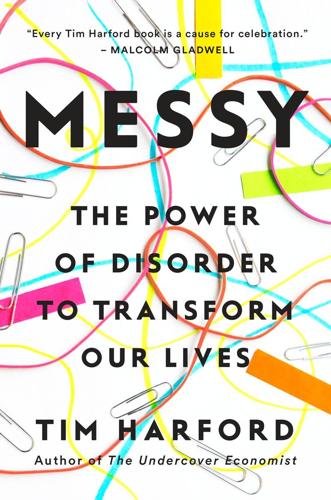
Messy: The Power of Disorder to Transform Our Lives
by
Tim Harford
Published 3 Oct 2016
The answer is that daily plans can’t adjust to unexpected events. Things come up: you catch a cold; you need to stay home for a plumber; a friend calls to say he’s visiting town unexpectedly. With a broad plan, or no plan, it’s easy to accommodate these obstacles and opportunities. Some people manage to take this to extremes. Marc Andreessen is one of the first Internet wunderkinds: he cofounded Netscape in 1994, sold it for over $4 billion, and founded a Silicon Valley venture capital firm that invested in companies such as Skype, Twitter, and Airbnb. Besieged by invitations and meetings, Andreessen decided that he would simply stop writing anything in his calendar.
…
Malett, “Specificity of Planning in Adult Self-Control: An Applied Investigation,” Journal of Personality and Social Psychology 40, no. 5 (1981), pp. 941–950. For the one-year follow-up, see Daniel S. Kirschenbaum, Laura L. Humphrey, Sheldon D. Malett, and Andrew Tomarken, “Specificity of Planning and the Maintenance of Self-Control: 1 Year Follow-Up of a Study Improvement Program,” Behavior Therapy 13 (1982), pp. 232–240. 14. Marc Andreessen, “Pmarca Guide to Personal Productivity,” June 4, 2007, http://pmarchive.com/guide_to_personal_productivity.html. 15. Charlie LeDuff and John Broder, “Schwarzenegger, Confident and Ready for Prime Time,” The New York Times, June 24, 2004, http://www.nytimes.com/2004/06/24/us/schwarzenegger-confident-and-ready-for-prime-time.html?

The Alliance: Managing Talent in the Networked Age
by
Reid Hoffman
,
Ben Casnocha
and
Chris Yeh
Published 15 Jan 2014
If an in-person get-together isn’t an option or isn’t scalable enough, employees can log in to LearnIn, the internal learning portal at the company, and publish their insights on the intranet for all other employees to see. Reid still participates in the process by bringing key industry leaders like Marc Andreessen and Arianna Huffington onto the corporate campus to share their insights with the company. HAVING THE CONVERSATION Advice for Managers Network intelligence needs to be an integral part of the alliance and the tour of duty conversation. When you define an employee’s tour of duty, you should set explicit expectations about how both parties will invest in and benefit from network intelligence.
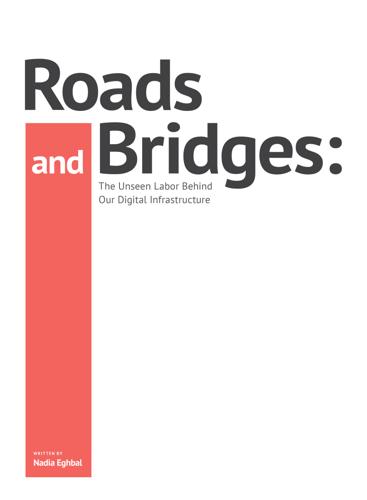
Roads and Bridges
by
Nadia Eghbal
The story of open source software is one of the great modern day triumphs of the public good. We are lucky that developers have borne the hidden cost of these investments. But their initial investments only get us so far. We are merely at the beginning of the story of how software transformed humanity. Marc Andreessen, the co-founder of Netscape and well-known venture capitalist behind the firm Andreessen Horowitz, observed in 2011 that software is eating the world. [205] Since then, that statement that has become canon for the modern age. Software affects everything we do: not just the frivolous and entertaining, but the mandatory and critical.

The Bond King: How One Man Made a Market, Built an Empire, and Lost It All
by
Mary Childs
Published 15 Mar 2022
Did he have to apologize for being an introvert? Sorry for trying to work—he had to focus, to trade. Sorry if he wasn’t also running around the office hugging everyone, saying, Hi, Sally. Hi, Joe, how you doing? That’s not who he was, had ever been. He had defenders in that ocean of snark. Venture capitalist Marc Andreessen, a total stranger but a fellow billionaire in the public eye, sent a series of tweets saying, “The behavior described is completely typical of any highly-successful, high-functioning organization in any field I’ve ever seen … High-functioning business organizations aren’t Disneyland. There’s always stress, conflict, argument, dissent.
…
Inside the Showdown INSIDE THE SHOWDOWN: Gregory Zuckerman and Kirsten Grind, “Inside the Showdown Atop Pimco, the World’s Biggest Bond Firm,” The Wall Street Journal, February 24, 2014. “There is no way for Gross to recover”: Felix Salmon, “It’s Time for Bill Gross to Retire,” Reuters, February 25, 2014. a “crusher”: Sheelah Kolhatkar, “Bill Gross Picks Up the Pieces,” Bloomberg Businessweek, April 14, 2014. “The behavior described”: Marc Andreessen, Twitter, February 25, 2014. “Bill, thank you very much”: Brian Sullivan, “Bill Gross Responds to WSJ Portrayal,” CNBC, February 25, 2014. “Now I feel like a jerk”: Julia La Roche, “Bill Gross Calls into CNBC to Respond to the Scathing WSJ Article,” Business Insider, February 25, 2014. “it’s like dealing with family”: Gregory Zuckerman and Kirsten Grind, “Pimco’s Gross Defends Competitive Culture,” The Wall Street Journal, February 28, 2014.

Applied Artificial Intelligence: A Handbook for Business Leaders
by
Mariya Yao
,
Adelyn Zhou
and
Marlene Jia
Published 1 Jun 2018
These tech companies often know more than you do about what your customers search for, what they buy, what they say, who they interact with, where they are, and how they might behave in the future. Their expertise has helped them to grow rapidly with high profit margins, overwhelming less tech-savvy competitors in the process. Technology companies may not compete directly with you today, but heed prominent venture capitalist Marc Andreessen's warning that “software is eating the world."(61) As consumers opt for the convenience of Amazon Prime and investors question other companies’ abilities to compete against the “Amazon Effect," retailers across a wide range of industries have seen their profits and stock values decline.(62) Amazon has even launched private labels for popular product categories that directly compete for market share with third-party sellers on their own platform.(63) Web traffic and advertising revenues have plummeted at many online media publishers.(64) Even though digital advertising spending is growing, Google and Facebook present a duopoly that captured 85 percent of the new growth in the first quarter of 2016.(65) Technological superiority alone cannot account for success.
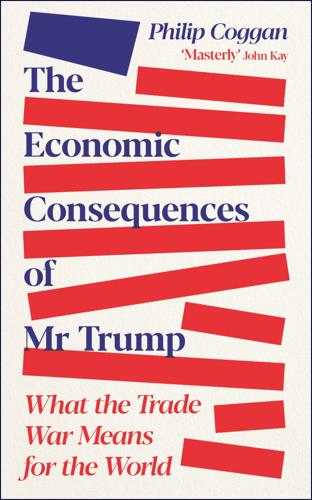
The Economic Consequences of Mr Trump: What the Trade War Means for the World
by
Philip Coggan
Published 1 Jul 2025
Whoever pays the Trump tariffs, they will undoubtedly raise revenue for the US government. But will that be enough to transform the government’s finances? One chart that circulated in 2025 showed the period in the late nineteenth century when tariffs funded much of government spending. The chart was tweeted by Marc Andreessen, a venture capitalist, and sent by Donald Trump to his followers. Mr Trump is also fond of citing the example of William McKinley, a Republican president from 1897 to 1901, who was dubbed the ‘tariff king’. Back in 1900, however, federal spending was just 3 per cent of GDP. There was no government programme to pay pensions, or unemployment benefits; no programmes like Medicare or Medicaid to provide healthcare for the elderly and the poor.

Platform Revolution: How Networked Markets Are Transforming the Economy--And How to Make Them Work for You
by
Sangeet Paul Choudary
,
Marshall W. van Alstyne
and
Geoffrey G. Parker
Published 27 Mar 2016
If this vision for the next phase of Uber’s growth comes true, the landscape of America may well be rendered unrecognizable.4 And if all that is not enough, consider this observation by Kalanick: “If we can get you a car in five minutes, we can get you anything in five minutes.”5 Anything at all? One wonders what limits can be set on Uber’s disruptive potential. Kalanick seems not to acknowledge any. A CAPSULE HISTORY OF DIGITAL DISRUPTION “Software is eating the world.” The slogan was originally used by Netscape founder Marc Andreessen in the title of a 2011 op-ed article in the Wall Street Journal to encapsulate how technology—particularly the Internet—has transformed the world of business.6 The story of Internet-enabled disruption as we’ve witnessed it so far has occurred in two main stages. In stage one, efficient pipelines ate inefficient pipelines.
…
Zack Kanter, “How Uber’s Autonomous Cars Will Destroy 10 Million Jobs and Reshape the Economy by 2025,” CBS SF Bay Area, sanfrancisco.cbslocal.com/2015/01/27/how-ubers-autonomous-cars-will-destroy-10-million-jobs-and-reshape-the-economy-by-2025-lyft-google-zack-kanter/. 5. Swisher, “Man and Uber Man.” 6. Marc Andreessen, “Why Software Is Eating the World,” Wall Street Journal, August 20, 2011, http://www.wsj.com/articles/SB10001424053111903480904576512250915629460. 7. Phil Simon, The Age of the Platform: How Amazon, Apple, Facebook, and Google Have Redefined Business (Henderson, NV: Motion Publishing, 2011). 8.
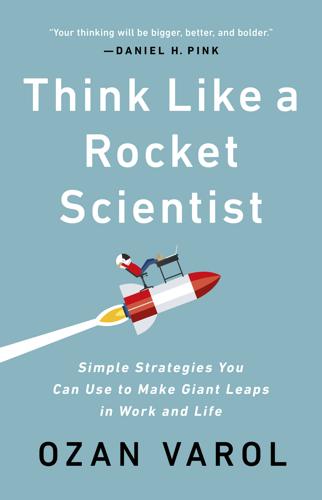
Think Like a Rocket Scientist: Simple Strategies You Can Use to Make Giant Leaps in Work and Life
by
Ozan Varol
Published 13 Apr 2020
For example, I gave trusted advisers early drafts of this book and asked them to point out not what’s right, not what they loved, but what’s wrong, what should be changed, what should be taken out. This approach provides psychological safety to those who might otherwise withhold dissent for fear of offending you. If you can’t find opposing voices, manufacture them. Build a mental model of your favorite adversary, and have imaginary conversations with them. This is what Marc Andreessen does. “I have a little mental model of Peter Thiel,” explains Andreessen, referring to fellow venture capitalist and PayPal cofounder, “a simulation that lives on my shoulder, and I argue with him all day long.”59 He added, “People might look at you funny while it’s happening,” but it’s well worth the ridicule.
…
Errol Morris, “The Anosognosic’s Dilemma: Something’s Wrong but You’ll Never Know What It Is,” Opinionator, New York Times, June 24, 2010, https://opinionator.blogs.nytimes.com/2010/06/24/the-anosognosics-dilemma-somethings-wrong-but-youll-never-know-what-it-is-part-5. 59. Stanford Graduate School of Business, “Marc Andreessen on Change, Constraints, and Curiosity,” video, YouTube, uploaded November 14, 2016, www.youtube.com/watch?v=P-T2VAcHRoE&feature=youtu.be. 60. Chip Heath and Dan Heath, Decisive: How to Make Better Choices in Life and Work (New York: Crown Business, 2013). 61. Shane Parrish, “The Work Required to Have an Opinion,” Farnam Street (blog), April 2013, https://fs.blog/2013/04/the-work-required-to-have-an-opinion. 62.
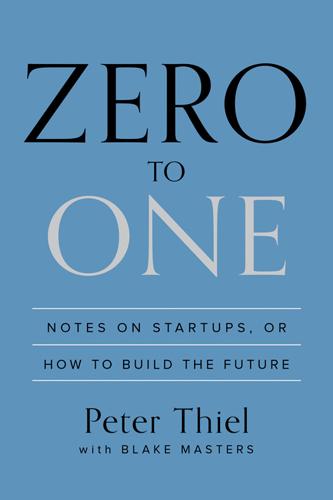
Zero to One: Notes on Startups, or How to Build the Future
by
Peter Thiel
and
Blake Masters
Published 15 Sep 2014
Dale Earnhardt Jr. needn’t feel threatened by them, but the Guardian worries (on behalf of the millions of chauffeurs and cabbies in the world) that self-driving cars “could drive the next wave of unemployment.” Everyone expects computers to do more in the future—so much more that some wonder: 30 years from now, will there be anything left for people to do? “Software is eating the world,” venture capitalist Marc Andreessen has announced with a tone of inevitability. VC Andy Kessler sounds almost gleeful when he explains that the best way to create productivity is “to get rid of people.” Forbes captured a more anxious attitude when it asked readers: Will a machine replace you? Futurists can seem like they hope the answer is yes.
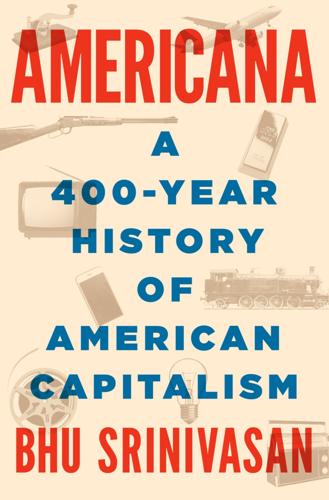
Americana: A 400-Year History of American Capitalism
by
Bhu Srinivasan
Published 25 Sep 2017
With his forced exit looming, Clark decided he needed to better control his fate next time around, which in Silicon Valley meant he needed to get really rich. One sympathetic colleague suggested to Clark that he take a look at Mosaic. After clicking around, he found the e-mail address of Mosaic’s most energetic programmer: twenty-three-year-old Marc Andreessen. Clark wrote Andreessen an e-mail and introduced himself. Andreessen wrote back almost immediately. As it turned out, Andreessen had left Illinois and recently joined a company in Palo Alto. They met the next day at Caffe Verona in Palo Alto. Ironically, at the dawn of hyperlinks and global connectivity, geographic proximity and a face-to-face meeting were the catalysts.
…
Rather than continue as one of two dozen or so highly compensated executives, Glaser incorporated Progressive Networks to develop software to stream audio and video files over the Internet. His 1994 migration west consisted of only the twelve miles from suburban Redmond to his new outpost in Seattle’s Pioneer Square. Down in Silicon Valley, Jim Clark and Marc Andreessen signed a lease on eleven thousand square feet of office space. Andreessen’s fellow engineers at the University of Illinois started their flights out west to join Mosaic Communications. Each received a compensation package of $65,000 and options on 100,000 shares of stock in the new venture—Andreessen had a much larger stake as a cofounder, with a total of one million shares.
…
A few of these “electronic brochures” did exist, but most companies did not have Web sites or domain names. The vast majority of American households didn’t even have a computer yet. But it seemed that a new commercial order was on the brink of emerging. In the summer of 1995, Netscape pushed forward its IPO. After a road show where Netscape’s new CEO, Jim Barksdale, and Marc Andreessen met with the largest mutual funds and institutions, the investment bank Morgan Stanley saw a stunning reception for the fifteen-month-old company. Netscape’s second quarter alone had revealed $22 million in revenues, a growth rate that gave the bankers latitude to privately proclaim Netscape “the fastest-growing software company in history.”

Americana
by
Bhu Srinivasan
With his forced exit looming, Clark decided he needed to better control his fate next time around, which in Silicon Valley meant he needed to get really rich. One sympathetic colleague suggested to Clark that he take a look at Mosaic. After clicking around, he found the e-mail address of Mosaic’s most energetic programmer: twenty-three-year-old Marc Andreessen. Clark wrote Andreessen an e-mail and introduced himself. Andreessen wrote back almost immediately. As it turned out, Andreessen had left Illinois and recently joined a company in Palo Alto. They met the next day at Caffe Verona in Palo Alto. Ironically, at the dawn of hyperlinks and global connectivity, geographic proximity and a face-to-face meeting were the catalysts.
…
Rather than continue as one of two dozen or so highly compensated executives, Glaser incorporated Progressive Networks to develop software to stream audio and video files over the Internet. His 1994 migration west consisted of only the twelve miles from suburban Redmond to his new outpost in Seattle’s Pioneer Square. Down in Silicon Valley, Jim Clark and Marc Andreessen signed a lease on eleven thousand square feet of office space. Andreessen’s fellow engineers at the University of Illinois started their flights out west to join Mosaic Communications. Each received a compensation package of $65,000 and options on 100,000 shares of stock in the new venture—Andreessen had a much larger stake as a cofounder, with a total of one million shares.
…
A few of these “electronic brochures” did exist, but most companies did not have Web sites or domain names. The vast majority of American households didn’t even have a computer yet. But it seemed that a new commercial order was on the brink of emerging. In the summer of 1995, Netscape pushed forward its IPO. After a road show where Netscape’s new CEO, Jim Barksdale, and Marc Andreessen met with the largest mutual funds and institutions, the investment bank Morgan Stanley saw a stunning reception for the fifteen-month-old company. Netscape’s second quarter alone had revealed $22 million in revenues, a growth rate that gave the bankers latitude to privately proclaim Netscape “the fastest-growing software company in history.”
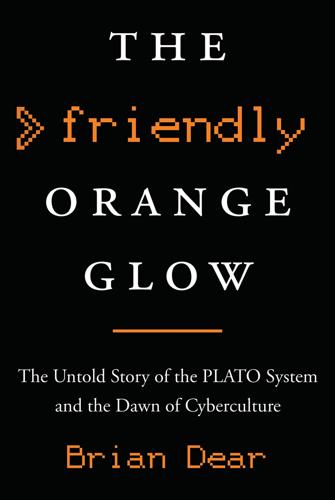
The Friendly Orange Glow: The Untold Story of the PLATO System and the Dawn of Cyberculture
by
Brian Dear
Published 14 Jun 2017
—Ted Nelson 11 Impeachment There is a creek, Boneyard is its name, that runs west to east across the University of Illinois campus, through the Engineering Quad, just south of CERL. It acts as a natural hyphen connecting the two towns of Champaign and Urbana. For years, mere mention of Boneyard to locals triggered strong responses. Hardly a creek, they would tell you: a notorious, no-good, toxic trickle of stinky sewage, more like. Says Marc Andreessen, in the early 1990s a UI undergrad creating the Mosaic web browser, and now a very successful venture capitalist, “I was always worried it was generating invisible fumes that were going to kill me.” The Boneyard, environmentalists insisted, played a key role as an important Champaign County watershed.
…
During this time, another computer laboratory, the National Center for Supercomputing Applications (NCSA), a few minutes’ walk from CERL and led by a new hotshot professor named Larry Smarr, had stolen PLATO’s limelight. The lab, established with massive National Science Foundation funding in the early 1980s, had a mission to use supercomputers to aid in scientific research, including visualization of what years later would be called “big data.” In 1993 two student NCSA programmers, Eric Bina and Marc Andreessen, released a new software program that would change the world more than PLATO ever did: a tool called Mosaic, described as a “browser” for something new and mysterious called the World Wide Web. — By the end of 1994, most of CERL’s staff was gone. In order to finish out some projects, Lezlie Fillman was permitted to keep her position a little longer than most—all of the former staffers’ phone lines were routed to her desk, in an office on an otherwise quiet floor of the building—and then her position was ended as well.
…
Thanks to Mike Achenbach; Sam Adams; Alix (Gaby) Albert; Kathryn (Lutz) Alesandrini; Paul Alfille; Chris Alix; Mary Allan; Jim Allard; Brock Allen; David Allen; Michael Allen; Daniel Alpert; Mitch Altman; Ernest Anastasio; David Andersen; John Anderson; Richard C. Anderson; Thomas H. Anderson; Marc Andreessen; Tanner Andrews; Amotz Anner; Andy Anthony; Andrew Appel; Don Appleman; Jeffrey Armstrong; Brij Arora; Eric Artman; Bruce Artwick; Neil Ashby; Isaac Asimov; Tom Ask; Chip Aspnes; Richard Atkinson; M. S. Atkisson; Wagner James Au; Allen Avner; Scott Baeder; Ron Baerg; Bill Bahnfleth; Charles Baker; Cheryl (Eklund) Baker; Frederick Z.

The Future of Ideas: The Fate of the Commons in a Connected World
by
Lawrence Lessig
Published 14 Jul 2001
As activist and technologist John Gilmore has put it, in a line that captures the puzzle of this book: “[W]e have invented the technology to eliminate scarcity, but we are deliberately throwing it away to benefit those who profit from scarcity. . . . I think,” Gilmore continues, “we should embrace the era of plenty, and work out how to mutually live in it.”5 LATE IN THE afternoon of one of California's inevitably beautiful days, Marc Andreessen was driving along one of California's inevitably overcrowded highways. More fitting the traffic than the weather, Andreessen's mood was dark. He was a twenty-nine-year-old computer science graduate who had become one of the most successful entrepreneurs of his generation. Coauthor of an early browser for the World Wide Web (Mosaic), founder of the first company to make the World Wide Web go (Netscape), Andreessen was nonetheless down on the future.
…
Cir., 2001). 3 Testimony of Professor Peter Jaszi, The Copyright Term Extension Act of 1995: Hearings on S.483 Before the Senate Judiciary Committee, 104th Cong. (1995), available at 1995 WL 10524355, *6. 4 Oral arguments, United States v. Microsoft, February 26, 2001, available at http:// www.microsoft.com/presspass/trial/transcripts/feb01/02-26.asp. 5 E-mail from John Gilmore, January 19, 2001, to EFF list, on file with author, 6. 6 Telephone interview with Marc Andreessen, December 15, 2000. 7 As Timothy Wu commented to me, “[T]he real successes on the Internet have not been killer apps, but killer platforms. “ E-mail from Tim Wu, June 28, 2001. Not, in other words, amazing but proprietary applications that do extraordinary things, but amazing and open platforms upon which others have been free to build.

Super Pumped: The Battle for Uber
by
Mike Isaac
Published 2 Sep 2019
“When money is easy in Silicon Valley, it tends to attract short-term opportunists looking to make a fast-buck rather than build a lasting company. Only the best entrepreneurs set sail in rough seas like this.” Chapter 7 notes ** That call also earned Gurley the ire of a young entrepreneur who would one day become another influential venture capitalist—Marc Andreessen. Andreessen was a co-founder of Netscape and is credited with helping to invent the consumer internet. Though Netscape eventually floundered and sold itself to AOL, Andreessen never forgot Gurley’s report. Years later, after both men had achieved personal success and enormous wealth, the two still carry a grudge.
…
Using the tools of modern capitalism, they created software companies to improve our lives, while simultaneously wresting power away from lazy elites. The founders became the philosopher kings, the rugged individuals who would save society from bureaucratic, unfair, and outmoded systems. Marc Andreessen famously said, “Software is eating the world.” Back then, technologists thought this was a good thing. Until recently, most of the rest of the world agreed. Venture deals increased by 73 percent from the early 2000s into the 2010s. The amount of global venture capital invested soared from tens of billions in 2005 into the hundreds of billions invested post-2010.
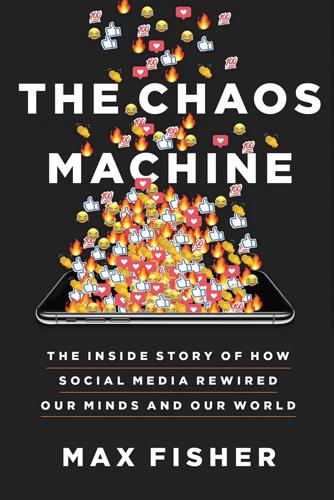
The Chaos Machine: The Inside Story of How Social Media Rewired Our Minds and Our World
by
Max Fisher
Published 5 Sep 2022
One of his first hires, an engineer named Eugene Kleiner, later cofounded Kleiner Perkins, the investment firm that hired Doerr. Doerr in turn seeded Amazon and Google, where his advice—lessons he’d learned from Shockley recruits—became the basis of YouTube’s business model. Another Doerr protégé, Netscape founder Marc Andreessen, became a major investor in and board member of Facebook, and personal mentor to Mark Zuckerberg. He co-founded a venture firm that seeded, among others, Slack, Pinterest, and Twitter. There are dozens of these interconnections, all among a tiny pool of like-minded investors and founders. Yishan Wong, Reddit’s chief during Gamergate, had come up at PayPal, whose alums guided much of the social media era.
…
Michael Corleone: “You’re not a wartime consigliere”), which he reproduced in his post alongside a rap lyric, part of his campaign to rebrand tech billionaires as the new counterculture: hard-edged badasses in V-neck sweaters. He drew his cachet from Andreessen Horowitz, an investment firm he and Netscape founder Marc Andreessen had started in 2009. (Andreessen’s mentor, John Doerr, had himself been mentored by Grove—one more example of the Valley’s distorting insularity.) If William Shockley had embodied the industry’s semiconductor era, Andy Grove the microchip era, and Peter Thiel the early web era, then Andreessen and Horowitz personified the social media era.

Start Small, Stay Small: A Developer's Guide to Launching a Startup
by
Rob Walling
Published 15 Jan 2010
Parallel Micropreneurship The terms serial and parallel can be a bit confusing so let’s examine them briefly. Serial implies “one after another” Parallel implies “at the same time” You may have heard the term serial entrepreneur floating around the business press. This is typically used to describe someone who starts a startup, grows it, sells it, and moves on to the next one. Marc Andreessen was a co-founder of Netscape, followed by Opsware, Ning, and now a venture capital fund. He is a good example of this, as are Jeff Hawkins and Donna Dubinsky, founders of Palm, Handspring and now Numenta. But the challenge as a startup entrepreneur is that you can’t start two companies at once.
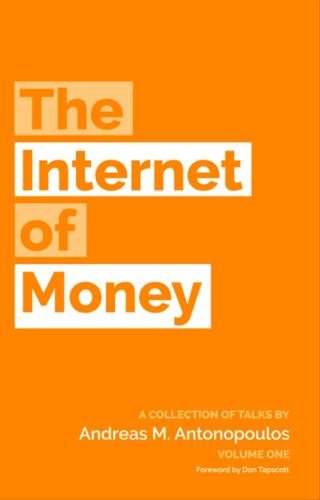
The Internet of Money
by
Andreas M. Antonopoulos
Published 28 Aug 2016
The Internet of Money * * * Praise for "The Internet of Money" I’ve always wondered what would have happened if we had built one-click payments into the browser from the very beginning. With bitcoin, we finally get this Internet of Money. But this book isn’t just an ode to bitcoin — it’s an ode to open protocols, what happens when you connect people online, and the power of innovation on the internet. — Marc Andreessen, co-founder Netscape and Andreessen Horowitz With Mastering Bitcoin, Andreas M. Antonopoulos wrote one of the best technical books on digital currency. With The Internet of Money, he’s matched that feat by compiling his talks into one of the best books on Bitcoin for a broad audience. Highly recommended!
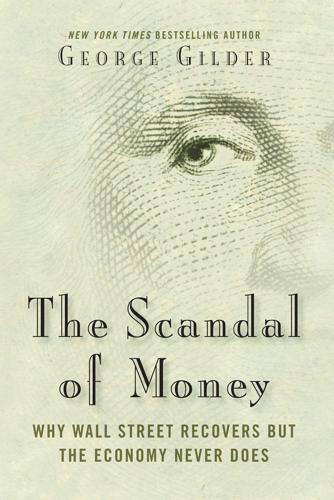
The Scandal of Money
by
George Gilder
Published 23 Feb 2016
Venture companies are the prime source of American growth. But this time seems to be different. The chief concern is whether these “unicorns” portend a “new bubble.” Would these virtual worlds and software virtuosos pop and piffle like 1999’s dot-com web-vanities and Petco litter boxes? “Software,” as the preeminent venturer Marc Andreessen says, “eats up the world.” Uber may transform urban transport, Pinterest may reinvent online advertising, Palantir may offer a radical advance in big data for security and even boast a billion in revenue and a role in finding Osama bin Laden. But folks may finally “swipe left” by Tinder and the scores of other multibillion bit-monkey mock-ups.
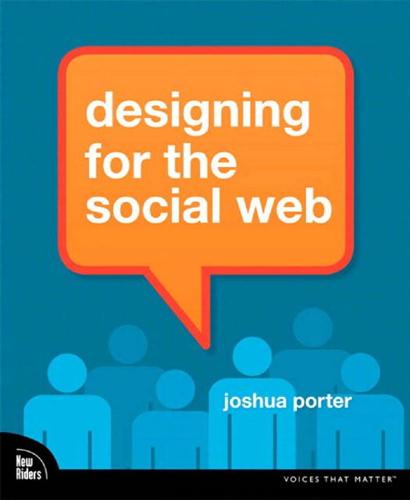
Designing for the Social Web
by
Joshua Porter
Published 18 May 2008
Invariably, if you don’t control your own collection process, you won’t know all there is to know about what you are measuring. 173 174 DESIGNING FOR THE SOCIAL WEB The worst way to measure your traffic is by third-party companies who aggregate traffic for the whole web. Their numbers just aren’t accurate. Marc Andreessen, who co-founded Netscape and is now working on social network site Ning, is very much against using these companies: You can’t believe any of the Internet measurement companies for any kind of accurate external analysis of Ning usage and traffic—or, for that matter, usage and traffic of any web site other than perhaps the very largest.

Computer: A History of the Information Machine
by
Martin Campbell-Kelly
and
Nathan Ensmenger
Published 29 Jul 2013
The programs were difficult to install, buggy, and had an unfinished feel. The Mosaic browser from the National Center for Supercomputer Applications (NCSA) at the University of Illinois at Urbana-Champaign was the exception. Developed by a twenty-two-year-old computer science undergraduate, Marc Andreessen, Mosaic was almost like shrink-wrapped software you could buy in a store. There was a version for the PC, another for the Macintosh, and another for the Unix workstations beloved by computer science departments. Mosaic was made available in November 1993, and immediately thousands—soon hundreds of thousands—of copies were downloaded.
…
Whereas in the 1980s the operating system had been the most keenly fought-for territory in personal computing, in the 1990s it was the web browser. In 1995 Netscape had seemed unstoppable. In the summer—when the firm was just eighteen months old—its initial public offering netted $2.2 billion, making Marc Andreessen extraordinarily wealthy. By year’s end its browser had been downloaded 15 million times, and it enjoyed over 70 percent of the market. But Microsoft did not intend to concede the browser market to Netscape. During the next two years Microsoft and Netscape battled for browser supremacy, each producing browser upgrades every few months.

All the Money in the World
by
Peter W. Bernstein
Published 17 Dec 2008
At the time, most computer and software companies were focused on closed-terminal systems, in which only a specified network of computers could communicate with one another. Clark’s vision of the future would probably have been dismissed as just another far-fetched idea had he not already had his Silicon Graphics success. Clark’s quest led him to a software program called Mosaic, written by a twenty-two-year-old student at the University of Illinois, Marc Andreessen. In the early 1990s Clark and Andreessen developed the Web-browsing software that became Netscape and begat the Internet craze. Once again, Clark had come up with another blockbuster. “Bill Gates sent a memo45 to his employees saying that the Internet now posed the greatest threat to Microsoft’s control of the computer industry,” writes Michael Lewis in The New New Thing: A Silicon Valley Story, an entertaining account of the life and times of Jim Clark.
…
Hunt once aptly said, “I’ve never taken a risk so big that if it went against me I couldn’t keep right on going.” Return to text. *3 Bronfman, together with Bruce Roberts, wrote “Whisper in the Dark,” which was recorded by Dionne Warwick in 1986. Return to text. *4 Clark funded computer genius Marc Andreessen, who had invented a way of accessing words and images on a computer network—the first Web browser. Initially a great success, with 80 percent of market share, Netscape soon ran afoul of Microsoft, which launched its own free Web browser, Internet Explorer, as part of its Windows 95 Plus! Pack.
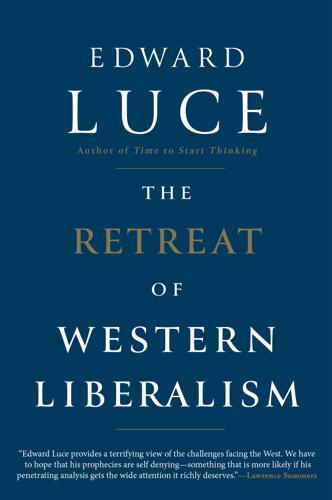
The Retreat of Western Liberalism
by
Edward Luce
Published 20 Apr 2017
It is what Baldwin calls remote intelligence. In some respects it has already arrived. Over the last twenty years, India and the Philippines reaped the rewards of the telecoms revolution to create lower-skilled service sector jobs at call centres, and on technology helpdesks. Those jobs are now under threat. As the venture capitalist Marc Andreessen says, ‘Software is eating the world’. How many times have you talked to a computer recently, rather than someone with an Indian accent? A lot more than a few years ago, I would guess. Automated voice software is supplanting humans. India is thus being forced to upgrade. Its next generation of offshore jobs will be devoted to far more complex tasks, such as providing medical diagnoses, writing legal briefs, remotely supervising factories and plants, and doing consumer data analysis.
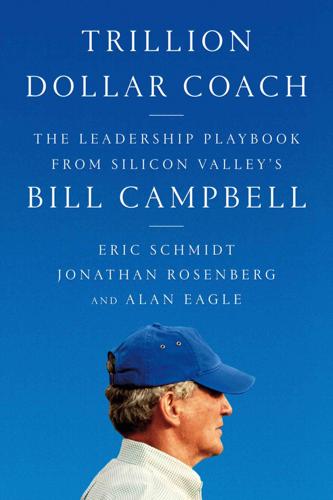
Trillion Dollar Coach: The Leadership Playbook of Silicon Valley's Bill Campbell
by
Eric Schmidt
,
Jonathan Rosenberg
and
Alan Eagle
Published 15 Apr 2019
To say he was tremendously respected would be a gross understatement—loved is more like it. Among the audience that day were dozens of technology leaders—Larry Page. Sergey Brin. Mark Zuckerberg. Sheryl Sandberg. Tim Cook. Jeff Bezos. Mary Meeker. John Doerr. Ruth Porat. Scott Cook. Brad Smith. Ben Horowitz. Marc Andreessen. Such a concentration of industry pioneers and power is rarely seen, at least not in Silicon Valley. We—Jonathan Rosenberg and Eric Schmidt—sat among the audience, making subdued small talk, soft sunshine contrasting with the somber mood. We had both worked closely with Bill in the previous fifteen years, since we had joined Google as the CEO (Eric, in 2001) and the head of products (Jonathan, in 2002).
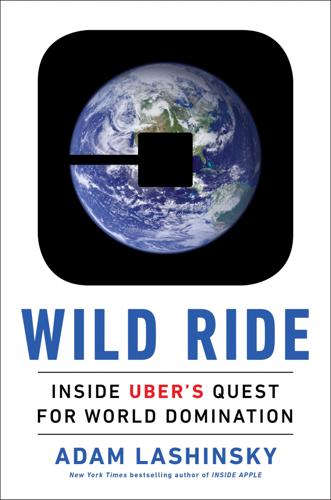
Wild Ride: Inside Uber's Quest for World Domination
by
Adam Lashinsky
Published 31 Mar 2017
But the metrics were just astounding. My estimate was that it would get to $100 million gross revenue within a year. It did that within six months.” Pishevar was one of several investors who wanted a piece of Uber. Among the most prominent was Andreessen Horowitz, then a two-year-old firm helmed by Marc Andreessen, a cofounder of Netscape. Andreessen Horowitz was media savvy and aggressively self-promotional. It also found early success with an unusual deal. It had been part of an investment group that bought the Internet calling service Skype from eBay—a private-equity transaction rather than a VC play—and quickly flipped the company to Microsoft for a gain of $5 billion for the group.

Without Their Permission: How the 21st Century Will Be Made, Not Managed
by
Alexis Ohanian
Published 30 Sep 2013
You’ll notice he’s black and white, which makes this book a guide for navigating the Internet age successfully as well as a coloring book! What a deal! The Real Introduction to My Book The World Isn’t Flat; the World Wide Web Is In an August 20, 2011, op-ed piece for The Wall Street Journal, world-renowned venture capitalist and tech entrepreneur Marc Andreessen declared that “software is eating the world.”1 I couldn’t have said it better myself. Andreessen sets the stage: “With lower startup costs and a vastly expanded market for online services, the result is a global economy that for the first time will be fully digitally wired—the dream of every cyber-visionary of the early 1990s, finally delivered, a full generation later.”
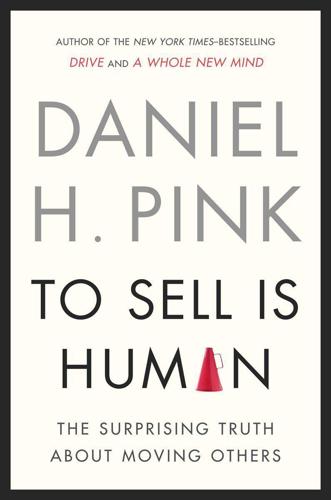
To Sell Is Human: The Surprising Truth About Moving Others
by
Daniel H. Pink
Published 1 Dec 2012
Since Kickstarter launched in 2009, 1.8 million people have funded twenty thousand projects with more than $200 million. In just three years, Kickstarter surpassed the U.S. National Endowment for the Arts as the largest backer of arts projects in the United States.9 While the Web has enabled more micro-entrepreneurs to flourish, its overall impact might soon seem quaint compared with the smartphone. As Marc Andreessen, the venture capitalist who in the early 1990s created the first Web browser, has said, “The smartphone revolution is underhyped.”10 These handheld minicomputers certainly can destroy certain aspects of sales. Consumers can use them to conduct research, comparison-shop, and bypass salespeople altogether.
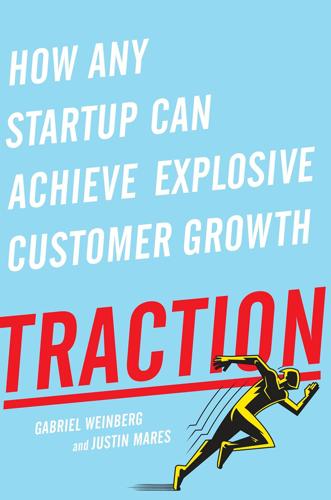
Traction: How Any Startup Can Achieve Explosive Customer Growth
by
Gabriel Weinberg
and
Justin Mares
Published 5 Oct 2015
This chapter answers these and other general traction questions, empowering you with the traction thinking that will set you up for success. THE 50 PERCENT RULE If you’re starting a company, chances are you can build a product. Almost every failed startup has a product. What failed startups don’t have is enough customers. Marc Andreessen, cofounder of Netscape and VC firm Andreessen Horowitz, sums up this common problem: The number one reason that we pass on entrepreneurs we’d otherwise like to back is they’re focusing on product to the exclusion of everything else. Many entrepreneurs who build great products simply don’t have a good distribution strategy.

Blockchain Chicken Farm: And Other Stories of Tech in China's Countryside
by
Xiaowei Wang
Published 12 Oct 2020
The Alibaba Research Institute’s rural researchers continue to monitor manufacturing costs throughout the Chinese countryside as well as in the United States, citing the extensive investment Chinese companies are now undertaking in revitalizing rural American towns. Before I left his shop, the disgruntled shoe manufacturer kept saying, “It’s all a scam.” His words had the solemnity of a mantra. How to Eat the World “Software is eating the world,” declared Marc Andreessen in 2011, and in a sense, he was right. In a time of crisis, software has increasingly become the answer to help us build and support more efficient systems. The software industry has also been responsible for enormous inequality by accelerating other industries like rare earth mining and gig work.

WTF?: What's the Future and Why It's Up to Us
by
Tim O'Reilly
Published 9 Oct 2017
So I resolved to bring them together. They needed to see themselves as part of the same story. In April 1998, I organized an event that I originally called “the Freeware Summit” to bring together the creators of many of the most important free software programs. The timing was perfect. In January, Marc Andreessen’s high-profile web company, Netscape, built to commercialize the web browser, had decided to provide the source code to its browser as a free software project using the name Mozilla. Under competitive pressure from Microsoft, which had built a browser of its own and had given it away for free (but without source code) in order to “cut off Netscape’s air supply,” Netscape had no choice but to go back to the web’s free software roots.
…
Yet by the time Google launched in September 1998, there were millions. Because the World Wide Web had been put into the public domain, Tim Berners-Lee didn’t have to do all the work himself. The National Center for Supercomputing Applications (NCSA), located at the University of Illinois, built an improved web server and browser. Marc Andreessen, who wrote the browser while a student there, left to found Mosaic Communications Corporation (later renamed Netscape Communications). A group of users, abandoned by the original developers, took over the server project, pooling all their patches (shared improvements to the source code) to create the Apache server, which eventually became the world’s most widely used web server.
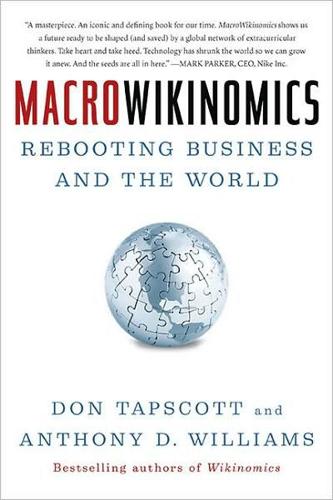
MacroWikinomics: Rebooting Business and the World
by
Don Tapscott
and
Anthony D. Williams
Published 28 Sep 2010
After all, VCs usually add more than just money—they make introductions, assist with strategic sales, and help recruit top talent. One solution is to make lots of small investments but spend little time with each one, in the Silicon Valley equivalent of speed dating. This is the strategy of the eponymous fund recently launched by Marc Andreessen (from Netscape, eBay, Facebook, Twitter, and Ning) and Ben Horowitz (from Netscape, OpsWare, and AOL). They plan to invest more than $300 million over ten years, starting with seed investments beginning at $50,000 a pop.18 This speed-dating-for-capital approach results in some matchmaking, but the problem of postinvestment execution still remains: a VC only has so much time on his or her hands.
…
See: Masako Ueda and Masayuki Hirukawa, “Venture Capital and Innovation: Which Is First?”, Social Science Research Network (September 14, 2008). 16. “Breaking Through the Broken,” North Venture Partners (2009). 17. Claire Cain Miller, “Do Web Entrepreneurs Still Need Venture Capitalists?”, New York Times (May 14, 2009). 18. Rafe Needleman, “Marc Andreessen launched new venture fund,” cnet (July 5, 2009). 19. Paul Kedrosky, “Right-sizing the U.S. Venture Capital Industry,” Ewing Marion Kauffman Foundation (June 10, 2009). 20. See: http://www.youtube.com/watch?v=jGC1mCS4OVo&feature=player_embedded#!. 21. Julianne Pepitone, “YouTube credit card rant gets results,” CNN Money (September 20, 2009). 22.
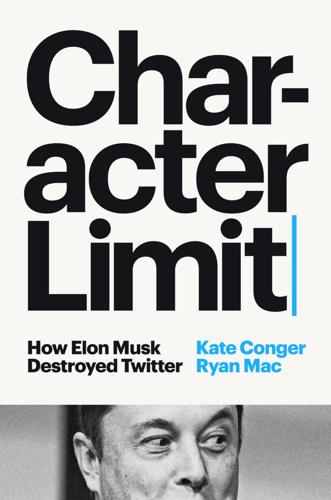
Character Limit: How Elon Musk Destroyed Twitter
by
Kate Conger
and
Ryan Mac
Published 17 Sep 2024
“Haha thankss :),” Musk replied. While Morgan Stanley had sent around a pitch deck to potential investors, some of Musk’s friends backed him on gut instinct alone. They had an unwavering faith in his entrepreneurial ability, with some asking to get into the deal to forge tighter connections to him. Marc Andreessen, the heralded head of venture firm Andreessen Horowitz, texted Musk that his fund was ready to drop in $250 million with “no additional work required.” Musk’s conversations were with a who’s who of the world’s rich and elite. There was Reid Hoffman, a former PayPal associate and LinkedIn cofounder, who told Musk he’d probably be able to put in $2 billion from one of his venture capital funds.
…
The stock continued to fall in the days after. When he arrived back in San Francisco, he stopped responding to some emails and texts, while those who did come in contact with him reported to others in his circle that he was in the throes of a manic event. His behavior would begin a period of what Marc Andreessen, a cofounder of Twitter investor Andreessen Horowitz, would term “an episode.” The venture capitalist became so concerned that he messaged Twitter staffers to see if Musk, who confined himself largely to his conference room, was in the right headspace. In one conversation with a confidant, Musk choked up and began to doubt his ability to run the company.

What's Yours Is Mine: Against the Sharing Economy
by
Tom Slee
Published 18 Nov 2015
Companies see themselves as enlightened participants in these debates, with a social mandate as well as a business mandate; Google’s “Don’t be evil” mantra encapsulates their belief that the company has a moral mission as well as a technological one. Internet culture is also supremely ambitious and self-confident. It’s a confidence captured in venture capitalist Marc Andreessen’s saying that “software is eating the world.” In its outer reaches it is an ambition manifested in ideas of Seasteading (a movement to build self-governing floating cities, started by PayPal founder Peter Thiel) and the Singularity (a belief in “the dawning of a new civilization that will enable us to transcend our biological limitations and amplify our creativity,” originating with the ideas of inventor and now Google employee Ray Kurzweil).
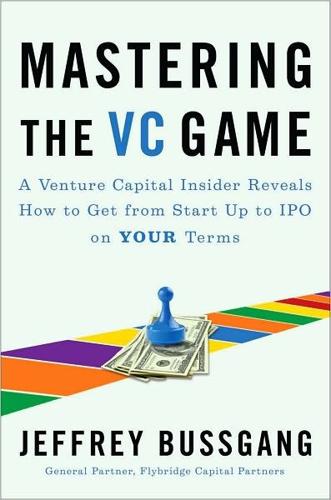
Mastering the VC Game: A Venture Capital Insider Reveals How to Get From Start-Up to IPO on Your Terms
by
Jeffrey Bussgang
Published 31 Mar 2010
Once they’ve secured VC interest, there can be a fair amount of flexibility on this point. But there are important trade-offs to consider. More money provides more runway and room for mistakes, but at the cost of some additional dilution. Twitter’s Jack Dorsey recalled a conversation he had with Netscape founder and angel investor Marc Andreessen. “Marc advised us very early on to take as much money as we could, because a recession was coming and everything was going to hit the fan. And this was in early 2008, maybe the end of 2007. And he’s like, ‘I know you’re worried about dilution, but just try to get as much money as you can, build a war chest so you can weather the storm, because the storm is coming.’ ” On the other hand, raising less money in a more capital-efficient fashion reduces your dilution while increasing your exit options.

Effective Programming: More Than Writing Code
by
Jeff Atwood
Published 3 Jul 2012
Eventually producing the first credible threat to Internet Explorer in the form of Mozilla Firefox 1.0 in 2004. Do you want money? Fame? Job security? Or do you want to change the world … eventually? Consider how many legendary hackers went on to brilliant careers from Netscape: Jamie Zawinski, Brendan Eich, Stuart Parmenter, Marc Andreessen. The lessons of Netscape live on, even though the company doesn’t. Code Rush is ultimately a meditation on the meaning of work as a programmer. As Startup.com and Code Rush illustrate, the hard part is figuring out why you are working all those long hours. Consider carefully, lest the arc of your career mirror that of so many failed tech bubble companies: lived fast, died young, left a tired corpse.

How We Got Here: A Slightly Irreverent History of Technology and Markets
by
Andy Kessler
Published 13 Jun 2005
Leveraging the hypertext Doug Engelbart demonstrated 23 years earlier, he wrote some code creating links across computer networks, and called it the World Wide Web. He didn’t patent it, didn’t start a company, and didn’t get royalties. But he did get knighted and so received the title the Knight Commander of the Order of the British Empire at the end of 2003. They notified him by telephone, not email. A few years after he set up this hypertext network, Marc Andreessen at the University of Illinois (Go ILLINI!) took advantage of the World Wide Web and the mainly cisco routers in the network and tried to optimize their ability to deliver a stream of packets to his computer. He created the Mosaic browser, which reassembled these packets into presentable text and graphics.
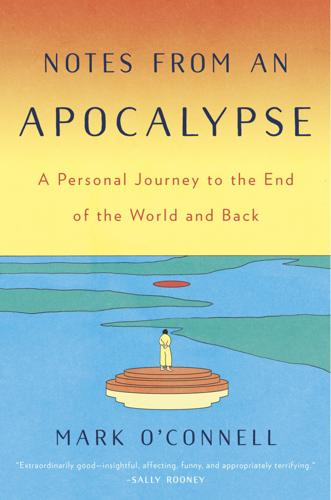
Notes From an Apocalypse: A Personal Journey to the End of the World and Back
by
Mark O'Connell
Published 13 Apr 2020
If I wanted to understand the extreme ideology that underpinned this attraction, he told me, I needed to understand an obscure libertarian manifesto called The Sovereign Individual: How to Survive and Thrive During the Collapse of the Welfare State. It was published in 1997, and in recent years something of a minor cult had grown up around it in the tech world, largely as a result of Thiel’s citing it as the book he was most influenced by. Other prominent boosters included Netscape founder and venture capitalist Marc Andreessen and Balaji Srinivasan, the entrepreneur best known for advocating Silicon Valley’s complete secession from the United States to form its own corporate city-state. The Sovereign Individual’s coauthors were James Dale Davidson, a private investor who specializes in advising the rich on how to profit from economic catastrophe, and the late William Rees-Mogg, long-serving editor of the Times and father of Jacob Rees-Mogg, the Conservative MP beloved of Britain’s reactionary pro-Brexit right.
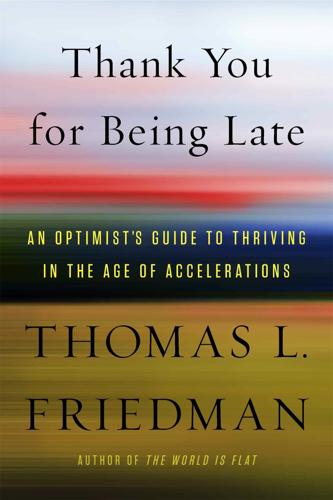
Thank You for Being Late: An Optimist's Guide to Thriving in the Age of Accelerations
by
Thomas L. Friedman
Published 22 Nov 2016
In 2007, storage capacity for computing exploded thanks to the emergence that year of a company called Hadoop, making “big data” possible for all. In 2007, development began on an open-source platform for writing and collaborating on software, called GitHub, that would vastly expand the ability of software to start, as Netscape founder Marc Andreessen once put it, “eating the world.” On September 26, 2006, Facebook, a social networking site that had been confined to users on college campuses and at high schools, was opened to everyone at least thirteen years old with a valid e-mail address, and started to scale globally. In 2007, a micro-blogging company called Twitter, which had been part of a broader start-up, was spun off as its own separate platform and also started to scale globally.
…
Irwin: The Cell Phone Guy It was wonderful for consumers for all these networking breakthroughs to occur, but someone had to pack them into a phone you could carry in your pocket to get the full frontal revolution—and no individual was more responsible for this mobile phone revolution than Irwin Jacobs. In the pantheon of the great innovators who launched the Internet age—Bill Gates, Paul Allen, Steve Jobs, Gordon Moore, Bob Noyce, Michael Dell, Jeff Bezos, Marc Andreessen, Andy Grove, Vint Cerf, Bob Kahn, Larry Page, Sergey Brin, and Mark Zuckerberg—save a few lines for Irwin Jacobs, and add Qualcomm to the list of important companies you’ve barely heard of. Qualcomm is to mobile phones what Intel and Microsoft together were to desktops and laptops—the primary inventor, designer, and manufacturer of the microchips and software that run handheld smartphones and tablets.
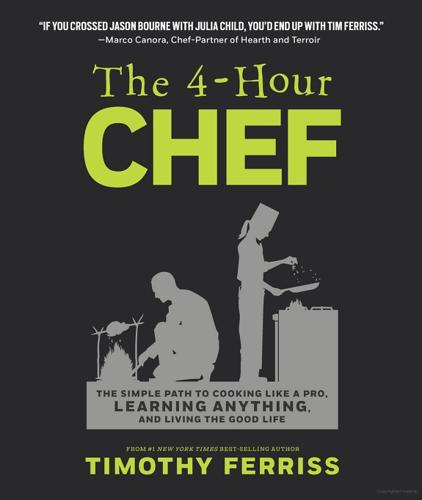
The 4-Hour Chef: The Simple Path to Cooking Like a Pro, Learning Anything, and Living the Good Life
by
Timothy Ferriss
Published 1 Jan 2012
If you find anything ridiculous in this book, it’s because I didn’t heed their advice. Though indebted to hundreds of people, I wish to thank a few of them up front, here listed in alphabetical order (see more in the Acknowledgments): Chef Grant Achatz Steve Alcairo David Amick Chef Tim Anderson Marc Andreessen Corey Arnold Chef Blake Avery Chef Ryan Baker Marcie Barnes Dr. John Berardi Patrick Bertoletti Mark Bittman Chef Heston Blumenthal Chad Bourdon Daniel Burka Chef Marco Canora Phil Caravaggio Chef Mehdi Chellaoui Jules Clancy Ed Cooke Chef Chris Cosentino Chef Erik Cosselmon Erik “The Red” Denmark Chef Matthew Dolan Chef Andrew Dornenburg Michael Ellsberg Kevin “Feral Kevin” Feinstein Chef Mark Garcia Brad Gerlach Paul Grieco Alan Grogono Jude H.
…
It produced a series of twisted faces, headaches, and “no, thank-you”s until we chanced upon Bulleit Bourbon. I fell in love. Its high rye content (28% of the mash bill) made it unique, as did the fact that I enjoyed it. Nothing tickled my fancy for five more years. Then, one night in 2011, Marc Andreessen introduced me to a series of winners over dinner. At the time, his kitchen featured a walk-in whiskey library stocked with a fit for every palate, each scored from 1–4 (4 being best). If you’ve ever used the Internet, you probably have Marc to thank. Coauthor of Mosaic, the first widely used web browser, Marc has a résumé that’s something else: cofounder of Netscape Communications (acquired by AOL for $4.2 billion), chairman of Opsware (acquired by HP for $1.6 billion), board member at Facebook, eBay, and much more.

Free as in Freedom
by
Sam Williams
Published 16 Nov 2015
Determined not to squander the opportunity, Raymond traveled west to deliver interviews, advise Netscape executives, and take part in the eventual party celebrating the publication of Netscape Navigator's source code. The code name for Navigator's source code was "Mozilla": a reference both to the program's gargantuan size-30 million lines of codeand to its heritage. Developed as a proprietary offshoot of Mosaic, the web browser created by Marc Andreessen at the University of Illinois, Mozilla was proof, yet again, that when it came to building new programs, most programmers preferred to borrow on older, modifiable programs. While in California, Raymond also managed to squeeze in a visit to VA Research, a Santa Clara-based company selling workstations with the GNU/Linux operating system preinstalled.
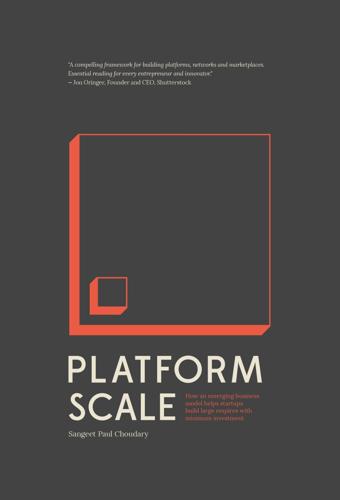
Platform Scale: How an Emerging Business Model Helps Startups Build Large Empires With Minimum Investment
by
Sangeet Paul Choudary
Published 14 Sep 2015
Lyft And Interaction Failure 3.9 Interaction Ownership And The TaskRabbit Problem 4.0 SOLVING CHICKEN-AND-EGG PROBLEMS Introduction 4.1 A Design Pattern For Sparking Interactions 4.2 Activating The Standalone Mode 4.3 How Paypal And Reddit Faked Their Way To Traction 4.4 Every Producer Organizes Their Own Party 4.5 Bringing In The Ladies 4.6 The Curious Case Of New Payment Mechanisms 4.7 Drink Your Own Kool Aid 4.8 Beg, Borrow, Steal And The World Of Supply Proxies 4.9 Disrupting Craigslist 4.10 Starting With Micromarkets 4.11 From Twitter To Tinder 5.0 VIRALITY: SCALE IN A NETWORKED WORLD Introduction 5.1 Transitioning To Platform Scale 5.2 Instagram’s Moonshot Moment 5.3 Going Viral 5.4 Architecting Diseases 5.5 A Design-First Approach To Viral Growth 5.6 Building Viral Engines 5.7 The Viral Canvas 6.0 REVERSE NETWORK EFFECTS Introduction 6.1 A Scaling Framework For Platforms 6.2 Reverse Network Effects 6.3 Manifestations Of Reverse Network Effects 6.4 Designing The Anti-Viral, Anti-Social Network Epilogue Platform Scale (n): Business scale powered by the ability to leverage and orchestrate a global connected ecosystem of producers and consumers toward efficient value creation and exchange. PREFACE Eating The World In the late summer of 2011, Marc Andreessen, co-founder of Netscape and the venture capital firm Andreessen-Horowitz, opined in a Wall Street Journal op-ed that “software is eating the world.” Andreessen was referring to firms like Amazon and Google that displace traditional industry leaders with new business models. Ever since, the phrase has become a rallying cry for every new startup hoping to build the next big thing.

Thinking Machines: The Inside Story of Artificial Intelligence and Our Race to Build the Future
by
Luke Dormehl
Published 10 Aug 2016
This drama is ultimately what matters the most. CHAPTER 6 Can AI Be Creative? IN THE LAST chapter, we saw how creativity is likely to remain one of the areas where humans will have the edge over machines when it comes to employment. As Artificial Intelligence continues to ‘eat the world’ (as venture capitalist and software engineer Marc Andreessen believes), it is those jobs involving human creativity that are likely to withstand the march of automation. That’s not to say AI doesn’t have the capacity to be creative, however. In June 2015, Google unveiled its Deep Dream project. A fascinating research project from a company that typically cares far more about engineering than aesthetics, Deep Dream is an AI-driven image generation program which works by tapping into the well of pictures Google has indexed over the past decade and a half.
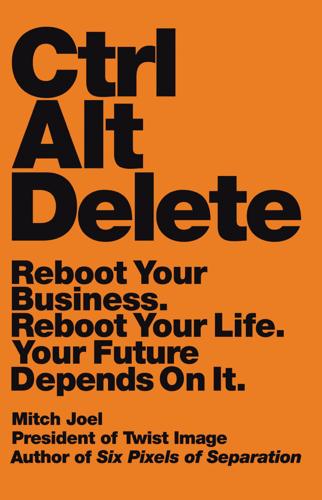
Ctrl Alt Delete: Reboot Your Business. Reboot Your Life. Your Future Depends on It.
by
Mitch Joel
Published 20 May 2013
So in a very naive move, in order to fill the void left by the now-defunct teen magazine, I started hatching a plan to publish my own music magazines. Within a few years, a business partner and I had two such magazines and supported a friend in launching a third. Around this time, the Internet was just coming online. I had already been active with bulletin board services and modem connectivity, but when I saw my first Web browser (Marc Andreessen’s Mosaic) my whole world changed. I realized that the days of me walking over to the corner newsstand and hoping the new issue of Circus magazine was on sale were over. Suddenly this thing called “the Internet” could send me information—almost instantly. I immediately started publishing our magazines online.
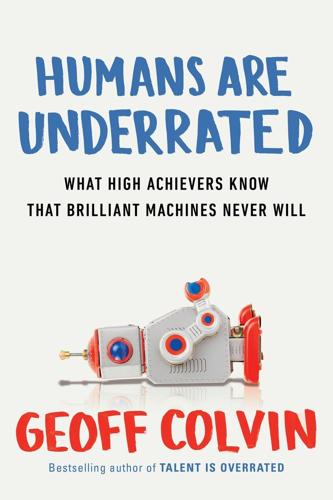
Humans Are Underrated: What High Achievers Know That Brilliant Machines Never Will
by
Geoff Colvin
Published 3 Aug 2015
Fortune editors supported me in writing about this book’s themes in the printed and online magazine. Thank you Alan Murray, Andy Serwer, Stephanie Mehta, Cliff Leaf, Brian O’Keefe, and other colleagues who contributed ideas and data. Countless people helped me with ideas, information, access to sources, personal stories, and reactions to the text. I particularly want to thank Marc Andreessen, Tom Baptiste, Dominic Barton, Adrienne Boissy, Jim Bush, Ashton Carter, John Chambers, Ram Charan, Ralph Chatham, Tony D’Amelio, Sally Donnelly, Christopher Dowling, Bran Ferren, George Flynn, Michael Gazzaniga, Anne Greenhalgh, Peter Hancock, Rob High, Chester Kennedy, John Kelly, Rik Kirkland, Tom Kolditz, the Library of Congress staff, Joe Liemandt, Thomas Malone, Bill McDermott, James Merlino, David Metcalf, Steve Nakagawa, Nicholas Negroponte, Nitin Noria, Charles Phillips, Garth Saloner, Marc Scibelli, Danny Stern, and Noel Tichy.
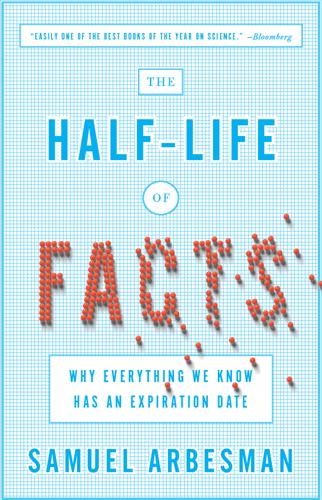
The Half-Life of Facts: Why Everything We Know Has an Expiration Date
by
Samuel Arbesman
Published 31 Aug 2012
However, there are other facts that don’t seem to adhere to this sort of logic. Knowing DNA’s structure, or whether Pluto was a planet, or that airplanes were possible—all of these happened in extremely rapid shifts. The iPhone appeared so rapidly in the world of technology that executives from a rival company thought many of its claimed specifications were lies, and Marc Andreessen has argued that it’s as if it appeared from the future, incredibly ahead of its time. One day there was a certain understanding of how we thought the world works, and the next day humanity’s factual environment had undergone a fundamental change. But can these actually be explained? Astonishingly enough, there is in fact an order to these rapid shifts in our knowledge.

Reinventing Capitalism in the Age of Big Data
by
Viktor Mayer-Schönberger
and
Thomas Ramge
Published 27 Feb 2018
They are not without merit but do come with drawbacks. There is a far more radical alternative measure being put forward, in the form of universal basic income. UBI, as it is affectionately called by its proponents, has garnered surprising support, particularly among leading figures in the high-tech sector. “Superangel” investor Marc Andreessen, the coauthor of Mosaic, one of the first widely used Web browsers, is in favor of it. And so are New York–based Albert Wenger, another highly successful venture capitalist; start-up incubator impresario Sam Altman; and Elon Musk, the brash but congenial cofounder of PayPal and CEO of Tesla. Silicon Valley isn’t alone in its enthusiasm for UBI, but it is Silicon Valley’s digital and data-driven innovations that have given rise to the idea.
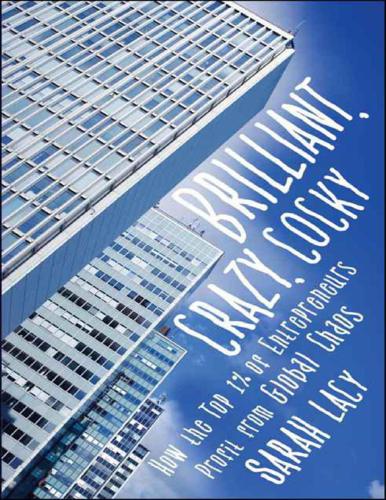
Brilliant, Crazy, Cocky: How the Top 1% of Entrepreneurs Profit From Global Chaos
by
Sarah Lacy
Published 6 Jan 2011
Being an entrepreneur is about thriving in chaos, and you wil find chaos—and great opportunity—in the emerging world right now. Yet for al the talk about the emerging world, only this Brilliant, Crazy, Cocky brings you a true-to-life account of the on-the-ground struggle to create something huge. In this engaging read, Lacy wil change the way you see the world. Anyone with a pulse should read this book.” —Marc Andreessen, partner, Andreessen Horowitz Ventures; co-founder, Netscape, Opsware, Ning “Part insightful analysis of what ails Silicon Val ey and part madcap journey to far flung hubs of aspiration and innovation, Sarah Lacy takes us around the world to find the fascinating people who are creating the new wealth in a new world of start-ups and ventures that America ought to be paying a lot more attention to.”
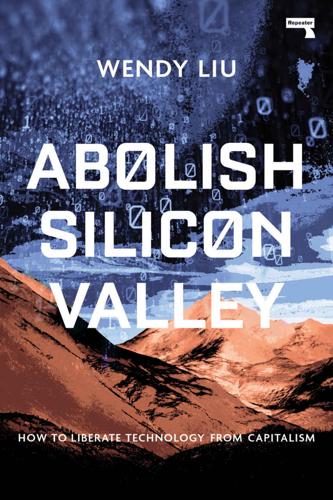
Abolish Silicon Valley: How to Liberate Technology From Capitalism
by
Wendy Liu
Published 22 Mar 2020
It reflects the author’s present recollections of experiences over time. Some names and characteristics have been changed, some events have been compressed, and some dialogue has been recreated. ZERO: PROLOGUE Opposing tech innovation is punishing the poor by slowing the process by which they get things previously only affordable to the rich. — Marc Andreessen, co-founder of Silicon Valley venture capital firm Andreessen Horowitz, in tweet posted on June 4, 2014 (since deleted) Silicon Valley is more than a region in northern California that has become synonymous with the high-tech industry. It is a dream. It is the dream of a world with new rules and new rulers, based on the principles of meritocracy and efficiency and hacking your way to the top.
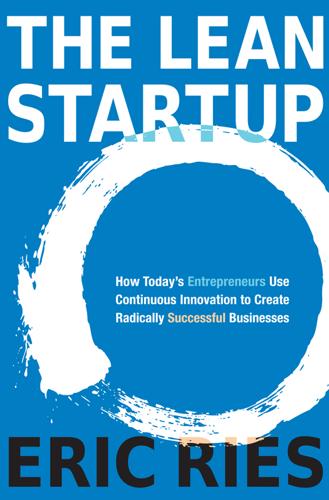
The Lean Startup: How Today’s Entrepreneurs Use Continuous Innovation to Create Radically Successful Businesses
by
Eric Ries
Published 13 Sep 2011
Most entrepreneurs already have a strong leap-of-faith hypothesis about which engine is most likely to work. If they do not, time spent out of the building with customers will quickly suggest one that seems profitable. Only after pursuing one engine thoroughly should a startup consider a pivot to one of the others. ENGINES OF GROWTH DETERMINE PRODUCT/MARKET FIT Marc Andreessen, the legendary entrepreneur and investor and one of the fathers of the World Wide Web, coined the term product/market fit to describe the moment when a startup finally finds a widespread set of customers that resonate with its product: In a great market—a market with lots of real potential customers—the market pulls product out of the startup.
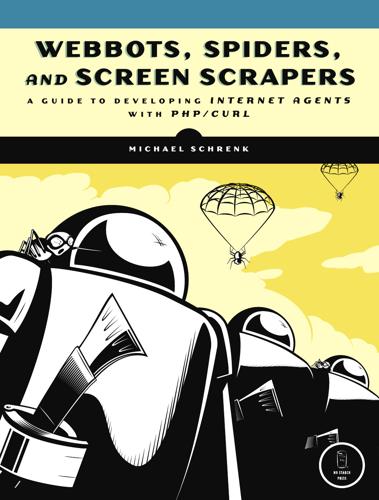
Webbots, Spiders, and Screen Scrapers
by
Michael Schrenk
Published 19 Aug 2009
Finally, a tip of the hat goes to Mark, Randy, Megan, Karen, Terri, Susan, Dennis, Dan, and Matt, who were thoughtful enough to ask about my book's progress before inquiring about the status of their projects. Introduction My introduction to the World Wide Web was also the beginning of my relationship with the browser. The first browser I used was Mosaic, pioneered by Eric Bina and Marc Andreessen. Andreessen later co-founded Netscape. Shortly after I discovered the World Wide Web, I began to associate the wonders of the Internet with the simplicity of the browser. By just clicking a hyperlink, I could enjoy the art treasures of the Louvre; if I followed another link, I could peruse a fan site for The Brady Bunch.[1] The browser was more than a software application that facilitated use of the World Wide Web: It was the World Wide Web.

The Complacent Class: The Self-Defeating Quest for the American Dream
by
Tyler Cowen
Published 27 Feb 2017
Of course, this portrait of a slowdown in dynamism is not usually what you hear from our business, political, and thought leaders. Bill Gates, for instance, has said that “the idea that innovation is slowing down is … stupid.” He claims that new ideas are coming at a “scarily fast pace.”1 Or on Twitter, until recently, Marc Andreessen (@pmarca), Netscape founder and successful venture capitalist, would tweet up a storm at least once a week about the benefits of modernity, the progress of the American economy, and most of all the wonders of tech and Silicon Valley. If the point is simply that today life is pretty good for many (but not all) of us, Gates and Andreessen are right.

The Alpha Masters: Unlocking the Genius of the World's Top Hedge Funds
by
Maneet Ahuja
,
Myron Scholes
and
Mohamed El-Erian
Published 29 May 2012
To all of my friends, sources in the industry, and individuals who have aided me through various stages of the book, including: David & Cheryl Einhorn, Whitney Tilson, James Grant, Alan Greenspan, Katie Broom, Sam Zell, Terry Holt, Barry Sternlicht, Beth Shanholtz, Ace Greenberg, Israel Englander, John Novogratz, Nelson Peltz, Anne Tarbell, Marc Andreessen, Michael Vachon, Elissa Doyle, Margit Wennmachers, Randall Kroszner, Jenny Farrelly, Tom Hill, Jonathan Gray, Peter Rose, Anne Popkin, Anthony Scaramucci, Victor Oviedo, David Waller, Sallie Krawcheck, Armel Leslie, Stefan Prelog, Chris Gillick, Alexis Israel, Lex Suvato, Kenny Dichter, Steve Starker, Saadi Ouaaz, Jonathan Wald, Jayesh Punater, James Wong, Joseph Weisenthal, Julie Vadnal, Darcy Bradbury, Trey Beck, Kyle Bass, and Jacob Wolinsky.

Tubes: A Journey to the Center of the Internet
by
Andrew Blum
Published 28 May 2012
The Internet was about to go mainstream, once and for all. The roof was about to blow off. But which roof, really? The boom would strain the Internet’s existing infrastructure to the breaking point. So who would save it? How did it expand? To where? I’d heard the business stories of the dot-com boom, about how Jim Clark and Marc Andreessen founded Netscape, and Bill Gates battled to keep Internet Explorer an integral part of Microsoft’s Windows operating system. But what about the networks themselves, and their places of connections? In a business that’s always been obsessed with the next new thing, who was still around to tell that story?
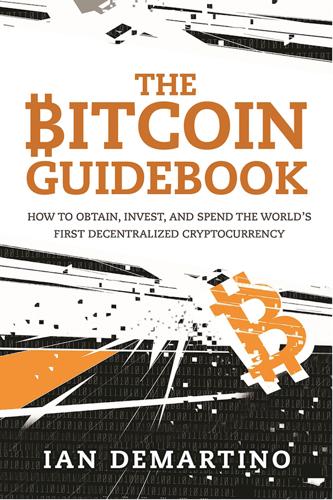
The Bitcoin Guidebook: How to Obtain, Invest, and Spend the World's First Decentralized Cryptocurrency
by
Ian Demartino
Published 2 Feb 2016
Chapter 11: Working for Bitcoin The Bitcoin ledger is a new kind of payment system. Anyone in the world can pay anyone else in the world any amount of value of Bitcoin by simply transferring ownership of the corresponding slot in the ledger. Put value in, transfer it, the recipient gets value out, no authorization required, and in many cases, no fees. —Marc Andreessen Getting paid in Bitcoin has been a breeze, except during the tax season, which can be complicated. I’ve done it for years now. I have also paid my rent and other bills using Bitcoin or dollars that I obtained by selling bitcoins. It is a viable option for anyone with a marketable skill. Virtually anything that can be done online can be paid for in Bitcoin and the job market is quickly growing for in-person jobs as well.

Lurking: How a Person Became a User
by
Joanne McNeil
Published 25 Feb 2020
It is a cardboard gold crown, but it helps in certain cases; for example, Twitter support will prioritize intervention requests when trolls attack a blue check. Twitter takes the media professionals on it for granted. They don’t leave, even when it grows toxic, because promoting work through the platform is almost compulsory as a modern journalism job requirement. Meanwhile, journalists can get played by people with even more power, like Marc Andreessen, a venture capitalist and the cofounder of Mosaic and Netscape, who told The New Yorker that he loves the platform because “reporters are obsessed with it. It’s like a tube and I have loudspeakers installed in every reporting cubicle around the world.” Now world events drive Twitter conversations, like writing prompts.

The New Class Conflict
by
Joel Kotkin
Published 31 Aug 2014
Not so much anti-union as post-union, the new Oligarchs have lived in an atmosphere untroubled by the labor activism that has cast firms such as Walmart and McDonald’s in a negative light. “Remaining non-union is an essential for survival for most of our companies,” Intel founder Bob Noyce said over two decades ago. More recently, venture capitalist Marc Andreessen declared that “there doesn’t seem to be a role” for unions in the modern economy because people are “marketing themselves and their skills.” Amazon, which has the kind of warehouse facilities that could be organized, has battled unions not only in the United States but also in more union-friendly Europe as well.125 The good news for the tech sector is that they need less people than ever before.

Listen, Liberal: Or, What Ever Happened to the Party of the People?
by
Thomas Frank
Published 15 Mar 2016
Inno is about egalitarianism as well. Indeed, as the preeminent expression of the endless American uprising against the entrenched and the powerful, how could it be otherwise? Inequality is, by definition, just one more problem our lovable entrepreneurs have set out to solve, and in the eyes of some, they have succeeded. Marc Andreessen, the famous venture capitalist, has described the vacation rental platform Airbnb as a solution for income inequality. Chris Lehane, a former assistant to Bill Clinton and Al Gore who now does public affairs for Airbnb, has said the same. Objecting to proposed regulation of the company, Lehane has said that cities “understand that in a time of economic inequality, this is a question of whose side are you on: do you want to be on the side of the middle class, or do you want to be opposed to the middle class?”

Ask Your Developer: How to Harness the Power of Software Developers and Win in the 21st Century
by
Jeff Lawson
Published 12 Jan 2021
Thus unlocking technical talent is actually the key for businesses of every shape and size to compete in the digital era—so the Ask Your Developer mindset isn’t just a way of making developers feel appreciated, it’s a new way of operating to succeed in the digital economy. When Netscape founder Marc Andreessen wrote “Why Software Is Eating the World” in 2011, he created the catchphrase for the current migration of every business to software. But he didn’t articulate how exactly that would work. In fact, you might believe that just buying software was how this transformation would work. Or that the software would just eat the world on its own in some kind of Terminator-like hellscape.
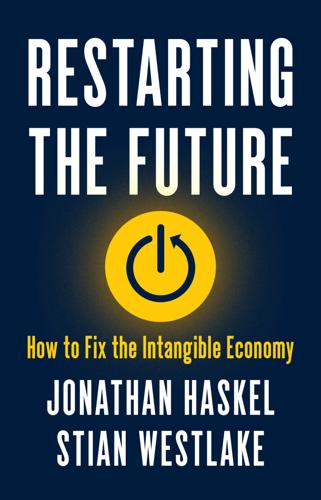
Restarting the Future: How to Fix the Intangible Economy
by
Jonathan Haskel
and
Stian Westlake
Published 4 Apr 2022
This shift has two primary characteristics: much of it has happened already, with the result that more business investment is intangible than tangible; and the growth of intangibles has begun to slow, which in turn has slowed down economic growth. This narrative is qualitatively different from other explanations for our current economic state. Some of these explanations argue that we have lost a particular societal virtue that we once had. For Marc Andreessen, what has been lost is the urge to build. For Thomas Piketty, it is egalitarianism. For Thomas Philippon, it is intolerance of monopoly. Others, such as Ross Douthat, argue that we have lost not a specific virtue but rather virtue in general, and that we are gripped by a pervasive decadence that we must cast off.

The Rise of the Network Society
by
Manuel Castells
Published 31 Aug 1996
Because of the decline of uses for these machines, NCSA’s researchers, as in most other supercomputer centers, were looking for new tasks. So were some staff members, including Marc Andreessen, a college student doing part-time work at the center for $6.85 an hour. “In late 1992, Marc, technically capable, and ‘bored off his ass,’ decided it was fun to take a crack at giving the Web the graphical, media rich face that it lacked.”53 The result was a web browser called Mosaic, designed to run on personal computers. Marc Andreessen and his collaborator Eric Bina posted Mosaic free on the NCSA web in November 1993, and in the spring of 1994 several million copies were in use.
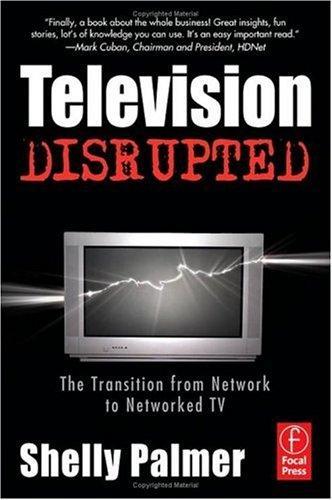
Television disrupted: the transition from network to networked TV
by
Shelly Palmer
Published 14 Apr 2006
In 1989, Tim Berners-Lee and a group of other big brains at the European Laboratory for Particle Physics (usually referred to as CERN) proposed the protocol that we now know as HTTP (Hypertext Transfer Protocol) and in 1991 the first World Wide Web pages or Web sites were put online using HTML (Hypertext Markup Language) which is still an extremely popular language for the creation of Web pages. In 1993, Marc Andreessen and his soon-to-be-extraordinarily-rich teammates at the National Center for Supercomputing Applications (NCSA) launched a browser called Mosaic (ultimately Netscape), which became the most popular Web browser until Bill Gates woke up and realized that Microsoft totally missed the evolution of the Internet and the World Wide Web.
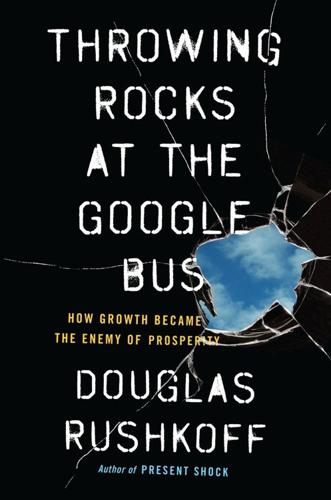
Throwing Rocks at the Google Bus: How Growth Became the Enemy of Prosperity
by
Douglas Rushkoff
Published 1 Mar 2016
That’s all they have really accomplished with whatever digital fad they’ve foisted onto the market or sold to yesterday’s tech winners. They thought they were engineering a new technology, when they were actually engineering a reallocation of capital. That’s why digital entrepreneurs who do win often end up becoming the next generation of venture capitalists. Everyone from Marc Andreessen (Netscape) to Sean Parker (Napster) to Peter Thiel (PayPal) to Jack Dorsey (Twitter) now runs venture funds of his own. Facebook and Google, once startups themselves, now acquire more businesses than they incubate internally. With each new generation, firms and investors leverage the startup economy more deliberately, or even cynically.
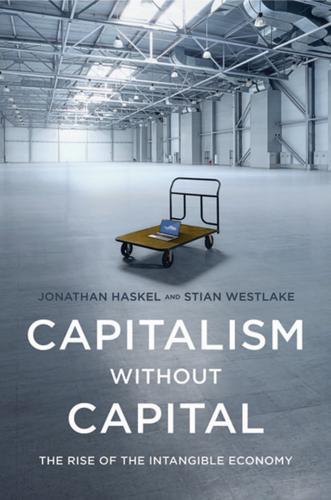
Capitalism Without Capital: The Rise of the Intangible Economy
by
Jonathan Haskel
and
Stian Westlake
Published 7 Nov 2017
Fast-growing tech companies are some of the most intangible-intensive of firms. This is in part because software and data are intangibles, and the growing power of computers and telecommunications is increasing the scope of things that software can achieve. But the process of “software eating the world,” in venture capitalist Marc Andreessen’s words, is not just about software: it involves other intangibles in abundance. Consider Apple’s designs and its unrivaled supply chain, which has helped it to bring elegant products to market quickly and in sufficient numbers to meet customer demand, or the networks of drivers and hosts that sharing-economy giants like Uber and AirBnB have developed, or Tesla’s manufacturing know-how.

The Second Machine Age: Work, Progress, and Prosperity in a Time of Brilliant Technologies
by
Erik Brynjolfsson
and
Andrew McAfee
Published 20 Jan 2014
Watt, James wavelength division multiplexing (WDM) Waze Weitzman, Martin West, Darrell West, Martin wheelchairs, AI technology in When Work Disappears (Wilson) Why Nations Fail (Acemoglu and Robinson) Why the West Rules—For Now (Morris) Wikipedia Wilson, William Julius “winner-take-all” markets Winner-Take-All Society, The (Frank and Cook) Winship, Scott Woessmann, Ludger Wolff, Ed Wordsworth, William World Bank World Wide Web see also global digital network; Internet Wright, Gavin writing: by computers development of Wu, Lynn Xbox Y2K bug Yang, Shinkyu Yelp YouTube Zara More Praise for The Second Machine Age “Brynjolfsson and McAfee are right: we are on the cusp of a dramatically different world brought on by technology. The Second Machine Age is the book for anyone who wants to thrive in it. I’ll encourage all of our entrepreneurs to read it, and hope their competitors don’t.” —Marc Andreessen, cofounder of Netscape and Andreessen Horowitz “What globalization was to the economic debates of the late 20th century, technological change is to the early 21st century. Long after the financial crisis and great recession have receded, the issues raised in this important book will be central to our lives and our politics.”

Nothing but Net: 10 Timeless Stock-Picking Lessons From One of Wall Street’s Top Tech Analysts
by
Mark Mahaney
Published 9 Nov 2021
I actually don’t remember who won. But it sure was entertaining. (3) Watching eBay CEO Meg Whitman celebrate (very briefly) when eBay’s market cap surpassed Yahoo!’s for the first time during a Morgan Stanley Tech Investment conference in Scottsdale, Arizona, in 2000. You bet CEOs keep score. (4) Having Marc Andreessen, founder of Netscape and now arguably one of the most influential venture investors in the world, warn me at a 2005 industry conference that Microsoft would never allow Google to succeed. And (5) . . . A series of phone calls with famed investor Peter Lynch. Lynch actually called me several times in 2015 when he was doing research on Groupon, the online coupon/shopping deals company.
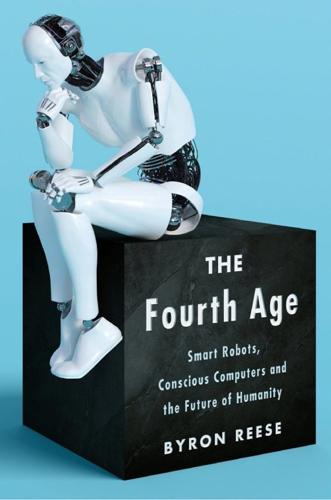
The Fourth Age: Smart Robots, Conscious Computers, and the Future of Humanity
by
Byron Reese
Published 23 Apr 2018
MIT’s David Autor has this to say about those who believe we aren’t going to come up with enough new jobs, thereby rendering people obsolete: These self-proclaimed oracles are in effect saying, “If I can’t think of what people will do for work in the future, then you, me and our kids aren’t going to think of it either.” I don’t have the guts to take that bet against human ingenuity. The legendary entrepreneur and technologist Marc Andreessen agrees: I do not believe robots will eat all the jobs. Here is why. For a start, robots and artificial intelligence are not nearly as powerful and sophisticated as some people fear. . . . And even when robots and artificial intelligence are far more powerful, decades from now, there will still be many things people can do that they cannot. . . .
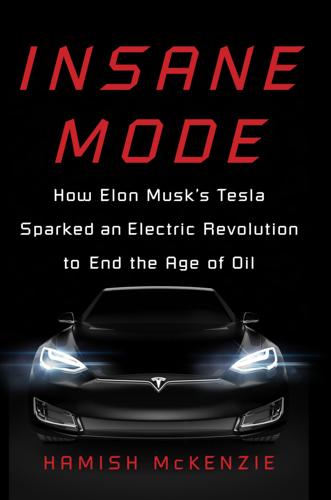
Insane Mode: How Elon Musk's Tesla Sparked an Electric Revolution to End the Age of Oil
by
Hamish McKenzie
Published 30 Sep 2017
Edison couldn’t do it, but maybe Musk could. * * * As a business leader, Musk shares at least one thing in common with Steve Jobs: He is a wartime CEO. Such leaders preside over their companies when they face an imminent existential threat, says Ben Horowitz, a Silicon Valley investor and partner with Netscape cofounder Marc Andreessen in the celebrated venture capital firm Andreessen Horowitz. The wartime CEO’s companies depend on strict adherence to a mission, Horowitz wrote in his book, The Hard Thing about Hard Things. While a peacetime CEO follows protocol, a wartime CEO violates it in order to win. While a peacetime CEO defines company culture, the wartime CEO lets the war define the culture.

The Simulation Hypothesis
by
Rizwan Virk
Published 31 Mar 2019
As I delved more deeply into it using my own training in computer science, I saw that it was consistent with where our technology is going and brought together many different threads of the search for knowledge or ultimate truth, which is restricted not just to science but includes philosophy and religion. Moreover, it seems that, with each passing year, information science is expanding beyond our simple understanding of computing. Software is not just merging with, but, to paraphrase Marc Andreessen, founder of Netscape, it is eating up other fields of science and human endeavor. We see this everywhere in today’s world. Communications technology, for example, which started off transmitting physical signals over wires—in devices such as the telegraph and telephone—today is a digital field consisting of bits of information that are bundled and transmitted in layers of algorithms.

Bitcoin Billionaires: A True Story of Genius, Betrayal, and Redemption
by
Ben Mezrich
Published 20 May 2019
After getting over their initial dismay at being subpoenaed by the government for the first time in their lives—and finding out about it from the press—Tyler and his brother had quickly discovered that the move had not been meant as an accusation of wrongdoing or criminal activities; in fact, the request for documentation and later for them to testify in front of the superintendent was a real opportunity; the twins had been chosen as representatives of the new virtual economy to help the Department of Financial Services understand Bitcoin and virtual currency, and help shape what sort of regulations were necessary, now that Bitcoin was becoming an unavoidable part of New York City’s financial landscape. In a way, the subpoena was actually an honor that had been bestowed on the twins. As Forbes magazine had headlined, EVERY IMPORTANT PERSON IN BITCOIN JUST GOT SUBPOENAED BY NEW YORK’S FINANCIAL REGULATOR. Among the people and companies subpoenaed were venture capitalists Marc Andreessen and Ben Horowitz, along with the founders of Coinbase, Bitpay, CoinLab, Coinsetter, Dwolla, Payward, ZipZap, Boost VC, and even Peter Theil’s Founders Fund—pretty much a who’s who of everyone who had made a major investment in or ran a major company in the Bitcoin space. At the same time, there was reason to believe that the event would be confrontational.
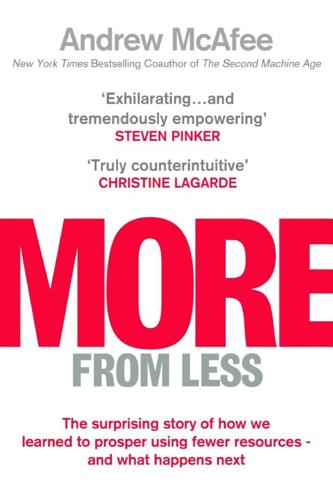
More From Less: The Surprising Story of How We Learned to Prosper Using Fewer Resources – and What Happens Next
by
Andrew McAfee
Published 30 Sep 2019
Summers, former Secretary of the Treasury and director of the National Economic Council “In More from Less Andrew McAfee conclusively demonstrates how environmentalism requires more technology and capitalism, not less. Our modern technologies actually dematerialize our consumption, giving us higher human welfare with lower material inputs. This is an urgently needed and clear-eyed view of how to have our technological cake and eat it too.” —Marc Andreessen, cofounder of Netscape and Andreessen Horowitz “In More from Less Andrew McAfee lays out a compelling blueprint showing how we can support human life using fewer natural resources, improve the state of the world, and replenish the planet for centuries to come.” —Marc Benioff, chairman and co-CEO of Salesforce “A must-read—timely and refreshing!
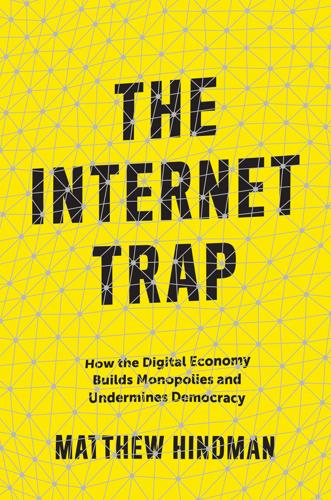
The Internet Trap: How the Digital Economy Builds Monopolies and Undermines Democracy
by
Matthew Hindman
Published 24 Sep 2018
Note, though, that by the end of 2016 digital subscriptions had crept up to 15 percent of total revenue—though this shift reflects decline in print as much as digital growth. For more on this topic, see the discussion in New York Times Company, 2016. 9. Ellis, 2014. 10. New York Times, 2014; see also Usher, 2014c. 11. Lee and Molla, 2018. 12. Chittum, 2014. 13. Gannett Co., 2018. 14. The “burn the boats” quote is from entrepreneur and investor Marc Andreessen, referenced in Schonfeld, 2010. 15. Lee and Molla, 2018. 16. See, for example, McClatchy Company, 2013. 17. Holcomb and Mitchell, 2014. 18. A. Newman and Leland, 2017. 19. McChesney and Nichols, 2011. 20. Usher and Layser, 2010. 21. Mutter, 2014. 22. Pew Internet and American Life Project, 2017a. 23.
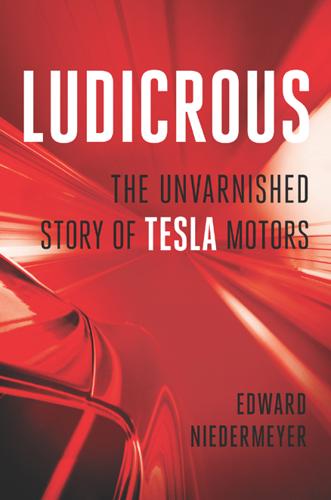
Ludicrous: The Unvarnished Story of Tesla Motors
by
Edward Niedermeyer
Published 14 Sep 2019
Ultimately, as we will see, Tesla would struggle to get the costs of making and selling a car under control—and it would pay a high price for its first lesson in the economics of the car business. CHAPTER 4 THE STARTUP TRAP Raising venture capital is the easiest thing a startup founder is ever going to do. Marc Andreessen By 2006, Silicon Valley had fully shaken off its post-dot-com-bubble hangover and was entering a new golden age. The “Web 2.0” wave had already made companies like Skype, Pandora, and Yelp into household names, Facebook and Twitter were just starting their rise to ubiquity, and Apple was putting the final touches on the world’s first smartphone.
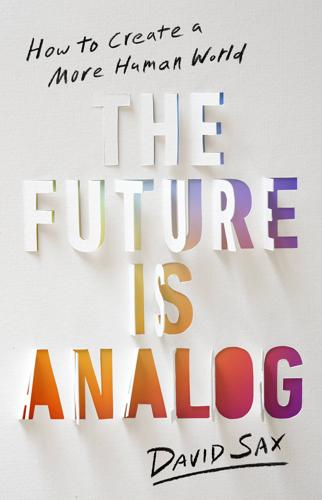
The Future Is Analog: How to Create a More Human World
by
David Sax
Published 15 Jan 2022
Or do you grab your phone, tap a few times, sit back, and get on with the rest of your day, knowing that everything will be taken care of once the doorbell rings? From the day in 1979, months before I was born, when British inventor Michael Aldrich modified a TV to enable primitive internet transactions, e-commerce has slowly been “eating the lunch” of analog commerce, in the infamous words of Silicon Valley venture capitalist Marc Andreessen. Year by year, click by click, sale by sale, e-commerce has continued its relentless growth across every segment of the global economy where people buy and sell things. The invasion that first landed on the beachhead of bookstores has gone on to impact every retail segment—apparel, luxury goods, cars, eyeglasses, garage sales, grocery stores, restaurants, even guns and drugs—as more of us tap, instead of going somewhere, to buy.

Enshittification: Why Everything Suddenly Got Worse and What to Do About It
by
Cory Doctorow
Published 6 Oct 2025
The only saving grace here is that the cartels operate mostly in hard goods industries, which means that they can’t take advantage of the flexibility that digital platforms use to twiddle their customers and sleaze their way through endless rounds of Darth Vader MBA deal-altering. But that’s changing—due to the second trend. The Trump toady, tech authoritarian, and cryptocurrency hustler Marc Andreessen once famously quipped that “software is eating the world.” Andreessen was (as usual) wrong. Software’s effects are primarily focused at the other end of the world’s alimentary canal: software isn’t eating the world; it’s enshittifying it. A better prophet to listen to is, as ever, William Gibson, each of whose quips is worth a dozen Andreessen aphorisms.
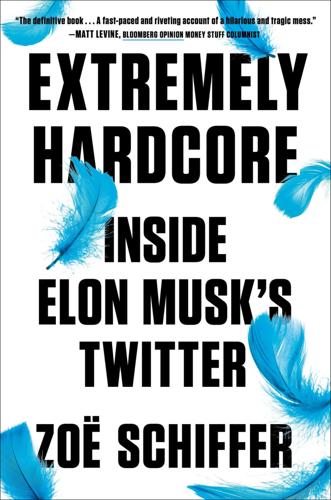
Extremely Hardcore: Inside Elon Musk's Twitter
by
Zoë Schiffer
Published 13 Feb 2024
“I trust his intuition more than the data.” Randall Lin decided to take matters into his own hands. James was right—Elon’s intuition was usually spot-on. The CEO could be shaky on the details, but the thrust of his argument was usually on the money. Lin created a list of users, including Elon, venture capitalist Marc Andreessen, and The Daily Wire founder Ben Shapiro. Then he added in some left-leaning people to balance it out: President Joe Biden, Representative Alexandria Ocasio-Cortez, LeBron James. Finally, he threw in his own account, and the account of the friend who’d tweeted about Musk’s first day in the office.
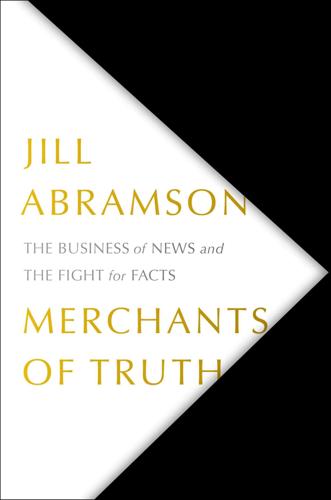
Merchants of Truth: The Business of News and the Fight for Facts
by
Jill Abramson
Published 5 Feb 2019
Publishing serious news ran completely counter to BuzzFeed’s founding model. But Peretti was becoming a more sober person. His wife had given birth to twins. He was the head of a company with employees who depended on him. He was about to meet with executives and potential investors from Silicon Valley, like Marc Andreessen, to begin a new round of fundraising. He’d become a businessman who now cared about money. Peretti and BuzzFeed were beginning to grow up. As more people discovered BuzzFeed’s mysterious mechanical acuity and infectiously wacky sense of humor, word of its success started generating interest in venture-capital circles, and before long, potential big-ticket investors started visiting the cramped and roach-ridden digs.
…
When the buzz du jour: Tanner Greenring, Scott Lamb, Jack Shepherd, Matt Stopera, and Peggy Wang, interviewed by Jill Abramson and John Stillman, New York, June 26, 2015. His wife had given birth: Jonah Peretti, interviewed by Jill Abramson at BuzzFeed New York, June 17, 2015. “BuzzFeed was set up: Marc Andreessen, telephone interview by Jill Abramson, May 4, 2016. Peretti’s PowerPoint pitch: Jason Del Rey, “BuzzFeed’s 2008 Investor Pitch: See Jonah Peretti’s Predictions, Right and Wrong,” AdAge, April 12, 2013, http://adage.com/article/media/buzzfeed-s-2008-investor-pitch-jonah-peretti-s-predictions/240861/.
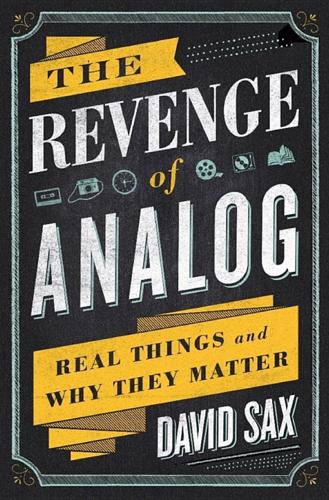
The Revenge of Analog: Real Things and Why They Matter
by
David Sax
Published 8 Nov 2016
An online retailer could deliver seemingly anything right to your door, faster and cheaper than a physical store, with free shipping included. “Retail guys are going to go out of business and e-commerce will become the place everyone buys. You are not going to have a choice,” the venture capitalist Marc Andreessen said in an interview with the technology website Pando. In Andreessen’s future, no one would shop at brick-and-mortar stores, and the numbers were his proof. In 2000, US e-commerce picked up $50 billion in sales. By 2014, that number was $350 billion. “We’re still pre-death of retail, and we’re already seeing a huge wave of growth.
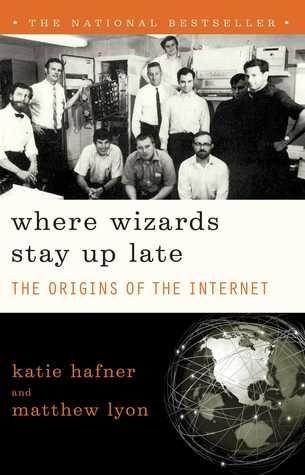
Where Wizards Stay Up Late: The Origins of the Internet
by
Katie Hafner
and
Matthew Lyon
Published 1 Jan 1996
asked the reporter, perhaps to break the silence. “Are there any female pioneers?” More silence. The weekend was as noteworthy for who wasn’t present as for who was. Tim Berners-Lee, the inventor of the World Wide Web, had just moved to Boston from Geneva to join MIT’s Laboratory for Computer Science. He wasn’t invited, nor was Marc Andreessen, the co-programmer of Mosaic, who had just left Illinois to develop a commercial version of his Web browser. Granted, they hadn’t played roles in the birth of either the ARPANET or the Internet (Andreessen wasn’t even born until 1972, after the first ARPANET nodes were installed) and couldn’t technically be counted as founders.
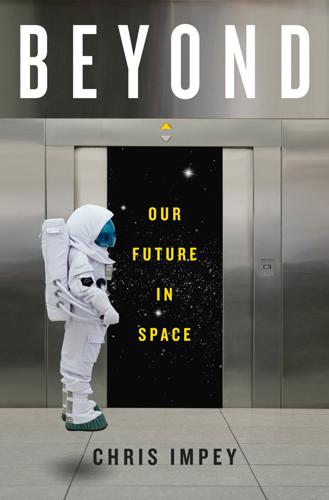
Beyond: Our Future in Space
by
Chris Impey
Published 12 Apr 2015
The US Congress passed a law that allowed the NSF to support access to networks that weren’t used exclusively for research and education. This created angst as researchers worried that the new Internet might not be responsive to their needs. The online world had always been a geeky place of text and equations, but in 1989 CERN researcher Tim Berners-Lee released his hypertext concept for public use. In 1993, a team led by Marc Andreessen at the University of Illinois increased the visual appeal of the Internet by releasing the first web browser, called Mosaic. Encryption was added soon afterward to make transactions more secure. In 1995, the NSF dropped all restrictions on Internet commerce and let private companies take over the high-speed “backbone.”
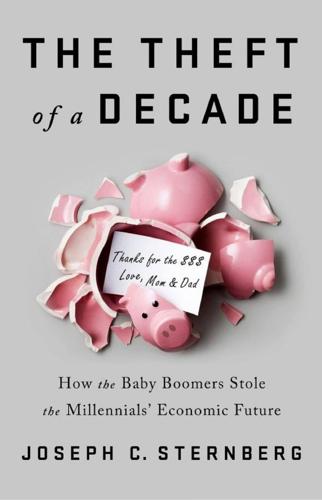
The Theft of a Decade: How the Baby Boomers Stole the Millennials' Economic Future
by
Joseph C. Sternberg
Published 13 May 2019
More recently, Erik Brynjolfsson and Andrew McAfee’s influential 2014 book The Second Machine Age argued that the American economy inevitably will be characterized by a “bounty” of fabulous economic gains for workers and entrepreneurs with the right skills, but also a widening “spread” between those winners and the growing army of losers whose jobs will disappear under a tidal wave of technological change.32 That book won approving reviews or front-cover blurbs from public figures many Millennials have grown up respecting, such as New York Times columnist Thomas Friedman, Netscape founder Marc Andreessen, and someone whose job title is “chief maverick” at Wired magazine. Millennials to the Right end of the political spectrum who distrust those figures could instead turn to books like Average Is Over by free-market blogger and professor Tyler Cowen, who in 2013 presented a similar argument about the future of work, with a somewhat more dystopian twist: “I imagine a world where, say, 10 to 15 percent of the citizenry is extremely wealthy and has fantastically comfortable and stimulating lives, the equivalent of current-day millionaires, albeit with better health care.
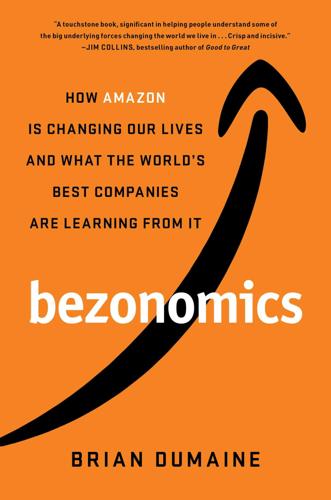
Bezonomics: How Amazon Is Changing Our Lives and What the World's Best Companies Are Learning From It
by
Brian Dumaine
Published 11 May 2020
Bezos, who has libertarian leanings, hasn’t made up his mind yet on a UBI. In general, he is a social progressive who is not politically outspoken and has limited his public advocacy. That puts him at odds with his fellow tech titans, including Facebook’s Mark Zuckerberg and his cofounder Chris Hughes, Tesla’s Elon Musk, and venture capitalist Marc Andreessen, all of whom support some form of a universal basic income. The UBI is simply a logical response to a socially and politically complex problem. It’s designed to make sure that those holding jobs that will be disrupted by technology will have enough money to retrain for a new job or, if untrainable, survive on minimum-wage jobs.
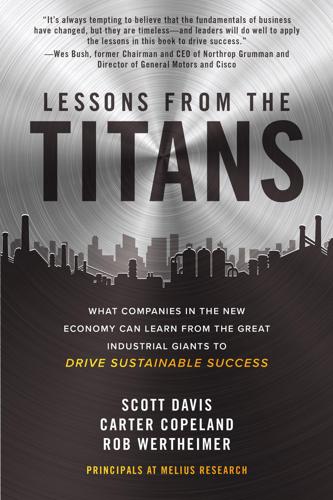
Lessons from the Titans: What Companies in the New Economy Can Learn from the Great Industrial Giants to Drive Sustainable Success
by
Scott Davis
,
Carter Copeland
and
Rob Wertheimer
Published 13 Jul 2020
If this pace of disruption has caught auto leaders or investors by surprise, they most certainly must have been out of touch in more ways than we can imagine. Meanwhile, few expected the computing power we have today and the pervasive impact of the internet and smartphones. Netscape cofounder and Silicon Valley investor Marc Andreessen noted in 2011 that “software is eating the world.” That prediction sure seems accurate. Few could have dreamed of the impact that software has already had. But that prediction was ignored by most and stands out as being unusually prescient. Even the best CEOs are kidding themselves if they think they can consistently predict more than a little bit forward.
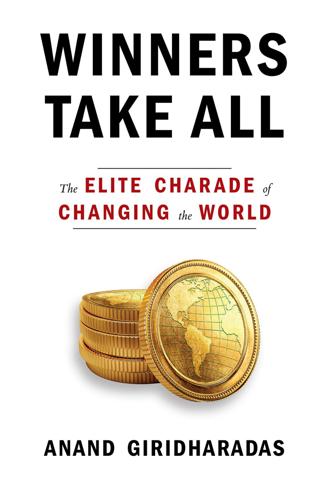
Winners Take All: The Elite Charade of Changing the World
by
Anand Giridharadas
Published 27 Aug 2018
It provides health information on how to avoid diseases or raise healthy children if you don’t live near a doctor. It provides financial services if you don’t live near a bank. It provides access to jobs and opportunities if you don’t live in a good economy.” Some in the Valley have become downright glib about the leveling bias of technology. “Thanks to Airbnb,” the venture capitalist Marc Andreessen says, “now anyone with a house or apartment can offer a room for rent. Hence, income inequality reduced.” Investors like Andreessen, according to this view, are just like the Occupy movement, but with bigger houses and clearer results. Networks are the basis for much of this new power—networks that simultaneously push power out to the edges and suck it into the core.
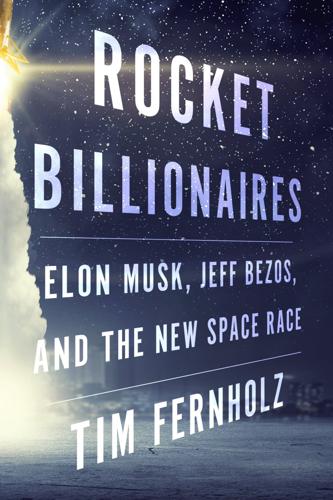
Rocket Billionaires: Elon Musk, Jeff Bezos, and the New Space Race
by
Tim Fernholz
Published 20 Mar 2018
Jeff Bezos, meanwhile, was in the process of leaving his work at the Wall Street firm D. E. Shaw to realize an idea for a far-out business that he and his colleagues were calling “the everything store.” Indeed, as the US government was dreaming up the Evolved Expendable Launch Vehicle program, or EELV, as it would be widely known, Marc Andreessen was delivering the first-ever graphic web browser, Netscape, to the world. Compare the speed of action in these respective institutions: in the four years it took the government to finally settle on a strategy to build the new rockets and put pen to paper, Netscape debuted its browser, went public, was purchased by AOL in a $4.2 billion deal, and in the process laid the groundwork for an antitrust lawsuit that would end Microsoft’s desktop computer monopoly.
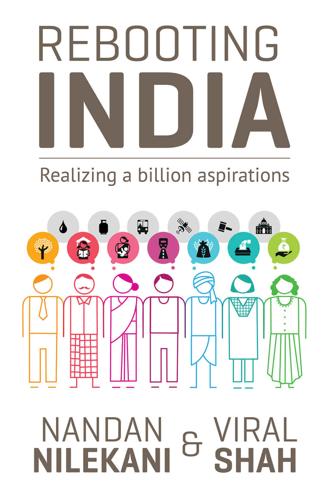
Rebooting India: Realizing a Billion Aspirations
by
Nandan Nilekani
Published 4 Feb 2016
Conservative back-of-the envelope calculations find those savings to be equivalent to 1 per cent of our GDP—enough for two Golden Quadrilateral road systems across the country every year,2 or to send 200 Mangalyaan missions to Mars annually.3 One year’s savings are also sufficient to provide minimal health insurance for every family in the country for three years.4 Software is eating the world In 2011, Marc Andreessen, the co-founder of Netscape, famously proclaimed, ‘Software is eating the world. More and more major businesses and industries are being run on software and delivered as online services—from movies to agriculture to national defence. Many of the winners are Silicon Valley-style entrepreneurial technology companies that are invading and overturning established industry structures.’5 For the most part, these businesses and services have come into existence only in the last decade, but have transformed our social landscape to the point that we now wonder how we ever got by without them.

Mindf*ck: Cambridge Analytica and the Plot to Break America
by
Christopher Wylie
Published 8 Oct 2019
” * * * — AS BREXIT LOOMED AND TRUMP gained ground, I realized it was time to speak up. I decided to connect with a couple of friends who worked in Silicon Valley. One of them—I’ll call her “Sheela”—knew someone at Andreessen Horowitz, the venture capital firm co-founded by the tech wunderkind Marc Andreessen. In the early nineties, Andreessen, along with Eric Bina, had created the Mosaic Web browser, forever changing the way people used the Internet. Mosaic became Netscape, which became one of the earliest Internet super-successes with its IPO in 1995. Since then, Andreessen had made hundreds of millions of dollars investing in companies like Skype, Twitter, Groupon, Zynga…and Facebook.

Golden Gates: Fighting for Housing in America
by
Conor Dougherty
Published 18 Feb 2020
Most of America was still grappling with what the pundits called “a jobless recovery” (whatever that meant), while the Bay Area lived in a bubble of exuberance and self-satisfaction. Google had just revealed its self-driving car project, Facebook was gearing up to go public, and the venture capitalist Marc Andreessen was coining the phrase “software is eating the world.” Sonja thought it was exciting to live in a place with so much optimism and easy employment, and when she heard people complain about how San Francisco was being murdered by runaway growth, she regarded them as ingrates who didn’t know or didn’t care what places like Philly and St.
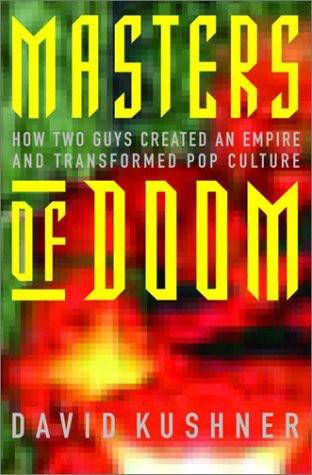
Masters of Doom: How Two Guys Created an Empire and Transformed Pop Culture
by
David Kushner
Published 2 Jan 2003
Though a global network of computers had been around since the 1970s –when the U.S. government’s Defense Advanced Research Projects Agency, or DARPA, linked networks of computers (the DARPAnet and, later, the Internet) together around the world–it was just starting to seep into the mainstream. This evolution began in 1989, when a computer researcher in Europe named Tim Berners-Lee wrote a program that linked information on the Internet into what was called the World Wide Web. Four years later, in 1995, two University of Illinois hackers named Marc Andreessen and Eric Bina created and released Mosaic: a free “browser” program that transformed the Web’s unseemly data into more easily digestible, magazinelike pages of graphics and text. With this new user friendliness online, commercial services such as CompuServe and America Online helped court the masses.

Utopia Is Creepy: And Other Provocations
by
Nicholas Carr
Published 5 Sep 2016
It would be a paradise of our own making, “manufactured by users.” History’s databases would be erased, humankind rebooted. “You and I are alive at this moment.” The revelation continues to this day, the technological paradise forever glittering on the horizon. Even money men have taken sidelines in starry-eyed futurism. In 2014, venture capitalist Marc Andreessen sent out a rhapsodic series of tweets—he called it a “tweetstorm”—announcing that computers and robots were about to liberate us all from “physical need constraints.” Echoing John Adolphus Etzler (and also Karl Marx), he declared that “for the first time in history” humankind would be able to express its full and true nature: “We will be whoever we want to be.
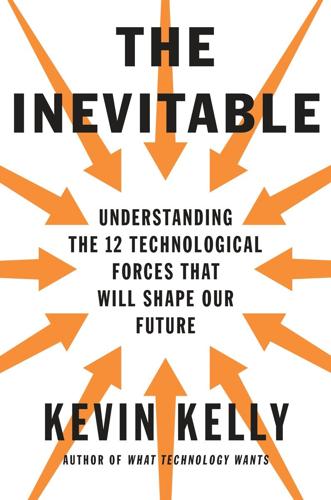
The Inevitable: Understanding the 12 Technological Forces That Will Shape Our Future
by
Kevin Kelly
Published 6 Jun 2016
In 1930 it took only one kilogram: Sylvia Gierlinger and Fridolin Krausmann, “The Physical Economy of the United States of America,” Journal of Industrial Ecology 16, no. 3 (2012): 365–77, Figure 4a. from $1.64 in 1977 to $3.58 in 2000: Figures adjusted for inflation. Ronald Bailey, “Dematerializing the Economy,” Reason.com, September 5, 2001. “Software eats everything”: Marc Andreessen, “Why Software Is Eating the World,” Wall Street Journal, August 20, 2011. Toffler called in 1980 the “prosumer”: Alvin Toffler, The Third Wave (New York: Bantam, 1984). subscribe to Photoshop: “Subscription Products Boost Adobe Fiscal 2Q Results,” Associated Press, June 16, 2015. Uber for laundry: Jessica Pressler, “‘Let’s, Like, Demolish Laundry,’” New York, May 21, 2014.
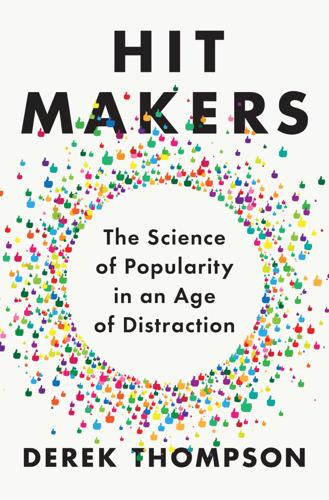
Hit Makers: The Science of Popularity in an Age of Distraction
by
Derek Thompson
Published 7 Feb 2017
Thanks to those whose work inspired this book, directly and implicitly: Raymond Loewy, Stanley Lieberson, Michael Kaminiski, Chris Taylor, Bill Bryson, Malcolm Gladwell, Jonah Berger, Steven Johnson, Tom Vanderbilt, Robert Gordon, David Suisman, Paul Barber, Elizabeth Margulis, John Seabrook, Charles Duhigg, Daniel Kahneman, Steven Pinker, Oliver Sacks, Michael Wolff, Nate Silver, Dan Ariely, Jonathan Franzen, Conor Sen, Felix Salmon, Matthew Yglesias, Ezra Klein, Chris Martin, Marc Andreessen, and Umberto Eco. Thanks to those whose conversations inspired this book, directly and implicitly: Drew Durbin, Lincoln Quirk, Michael Diamond, Jordan Weissmann, Robbie dePicciotto, Laura Martin, Maria Konnikova, Mark Harris, Spencer Kornhaber, Rececca Rosen, Alexis Madrigal, Bob Cohn, John Gould, Don Peck, James Bennet, Kevin Roose, Gabriel Rossman, Jesse Prinz, Duncan Watts, Anne Messitte, Andrew Golis, Aditya Sood, Nicholas Jackson, Seth Godin, the Diamonds, the Durbins, and Kira Thompson.
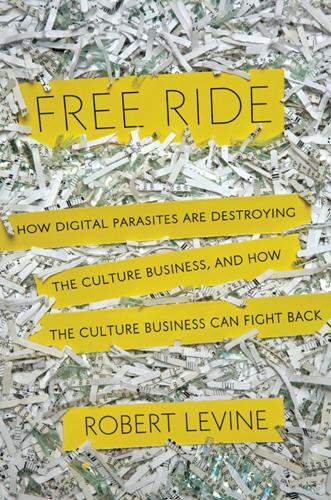
Free Ride
by
Robert Levine
Published 25 Oct 2011
Editor & Publisher named Hussman Publisher of the Year in 2008, and the Atlantic chose him as one of its “Brave Thinkers” the following year. Executives from bigger newspaper chains regularly call for advice. Some technology executives have advised publishers to embrace the Internet, even if that means losing money. In March 2010, Netscape’s cofounder Marc Andreessen, who owns part of the online news recommendation service Digg, suggested that newspapers abandon their print businesses entirely, to “burn the boats,” as the Spanish conquistador Hernán Cortés is said to have done to force his expedition forward. More free online news would certainly benefit Digg, but it’s hard to see how it would help newspapers.
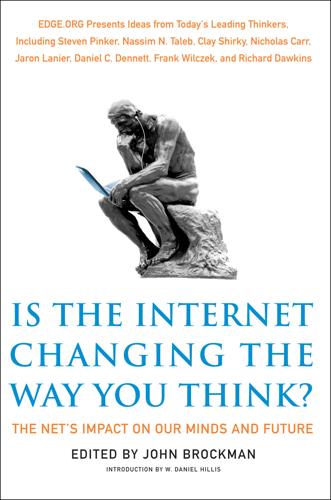
Is the Internet Changing the Way You Think?: The Net's Impact on Our Minds and Future
by
John Brockman
Published 18 Jan 2011
One of my fellow graduate students (a former Microsoft programmer who liked to stay abreast of things) had drawn a crowd around his flickering UNIX box. I shouldered my way in, then became transfixed as his fingers flew over XMosaic, the first widely available Web browser in the world. XMosaic was only months old. It had been written at the University of Illinois by an undergraduate named Marc Andreessen (a year later he would launch Netscape, its multibillion-dollar successor) and Eric Bina at the National Center for Supercomputer Applications. There were already some Websites up and running. Urged on by his crowd’s word search suggestions (“Sex!” “Kurt Cobain!” “Landsat!”), my fellow student lifted the curtain on a new world of commerce, entertainment, and scientific exchange in barely fifteen minutes.
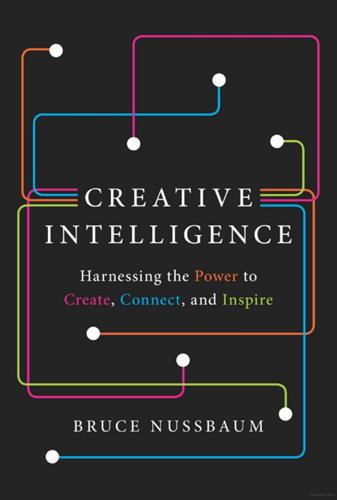
Creative Intelligence: Harnessing the Power to Create, Connect, and Inspire
by
Bruce Nussbaum
Published 5 Mar 2013
With enough money to do a start-up, Zuckerberg hired Owen Van Natta from Amazon, and Van Natta was instrumental in increasing revenue and building out the company from twenty-six employees to hundreds. Then he fired Van Natta and hired Sheryl Sandberg, a veteran manager from Google, to help him scale Facebook to a global corporation. Along this journey, according to Blodget, Zuckerberg sought counsel from the likes of Peter Thiel, who was an early investor; Marc Andreessen, now a board member; and LinkedIn’s Reid Hoffman. None of this was easy for Zuckerberg, who was far more comfortable as a software programmer and product designer. But he pushed himself to find people who could teach him a wide variety of communication and business skills, which he used to further his vision.

Rise of the Robots: Technology and the Threat of a Jobless Future
by
Martin Ford
Published 4 May 2015
I don’t know what all those other people will do now, but this isn’t work they can do anymore. It’s a winner-takes-all consolidation.”30 The evaporation of thousands of skilled information technology jobs is likely a precursor for a much more wide-ranging impact on knowledge-based employment. As Netscape co-founder and venture capitalist Marc Andreessen famously said, “Software is eating the world.” More often than not, that software will be hosted in the cloud. From that vantage point it will eventually be poised to invade virtually every workplace and swallow up nearly any white-collar job that involves sitting in front of a computer manipulating information.
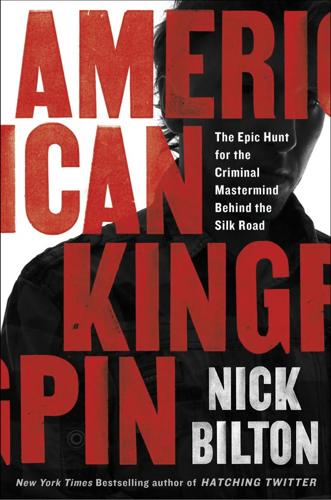
American Kingpin: The Epic Hunt for the Criminal Mastermind Behind the Silk Road
by
Nick Bilton
Published 15 Mar 2017
Each tête-à-tête was an instructive lesson for Ross, whether he was learning how to set up a Bitcoin config file on the server, managing warring factions of dealers on the site, or understanding how he was perceived by the proletariat who used the Silk Road. At its core, though, the relationship was personal. VJ’s greatest value was as an executive coach of sorts—someone who could mentor the young founder through problems germane to any start-up, like Bill Campbell, who had helped the creators of Twitter and Google, or Marc Andreessen, who offered advice to Mark Zuckerberg at Facebook. “What are my strengths?” Ross asked VJ one afternoon, hoping that his new confidant could hold up a mirror for Ross to see himself, a view that Ross, in his secret solitude, was incapable of discerning on his own. “You play your cards close,” VJ replied.

The Raging 2020s: Companies, Countries, People - and the Fight for Our Future
by
Alec Ross
Published 13 Sep 2021
Not one of the 237 Democrats: “Republicans Pass Historic Tax Cuts without a Single Democratic Vote,” Axios, December 20, 2017, https://www.axios.com/republicans-pass-historic-tax-cuts-without-a-single-democratic-vote-1515110718-8cdf005c-c1c9-481a-975b-72336765ebe4.html. obstruct the other: Ezra Klein, “Why We Can’t Build,” Vox, April 22, 2020, https://www.vox.com/2020/4/22/21228469/marc-andreessen-build-government-coronavirus. “The delegation of powers to different political actors”: Francis Fukuyama, “America in Decay,” Foreign Affairs, Sept./Oct. 2014, http://cf.linnbenton.edu/artcom/social_science/clarkd/upload/Fukuyama,%20America%20in%20Decay.pdf. “For any particular problem we have”: Steven M.

Cryptoassets: The Innovative Investor's Guide to Bitcoin and Beyond: The Innovative Investor's Guide to Bitcoin and Beyond
by
Chris Burniske
and
Jack Tatar
Published 19 Oct 2017
The indexed web contains at least 4.73 billion pages, nearing the point where there will be one page for every human.1 The beginning of the Internet is commonly associated with the 1990s, with Tim Berners-Lee stumbling upon the idea of the World Wide Web while trying to create an information management system for CERN, and Marc Andreessen developing the first widely used web browser, which ultimately became Netscape. Although the accomplishments of Berners-Lee and Andreessen were linchpins to mainstream adoption, the web and the ability to browse it were the first killer apps built on top of the Internet, not to be conflated with the creation of the Internet itself.
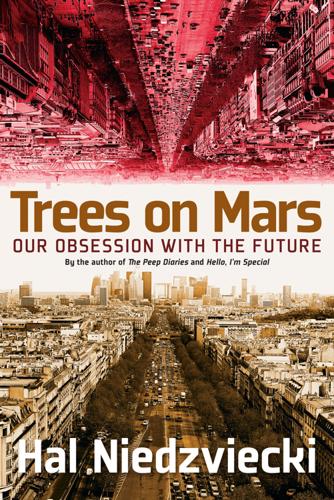
Trees on Mars: Our Obsession With the Future
by
Hal Niedzviecki
Published 15 Mar 2015
He told me that hearing the entrepreneur talk so dispassionately about his start-up represented one of the lowest moments in his career as a venture capitalist. From his point of view, it just doesn’t make sense. Even someone who is entirely passionate and willing to sacrifice everything is unlikely to end up with millions of dollars in the bank, let alone achieve change-the-world status. The competition is fierce and cruel. Venture capitalist Marc Andreessen, of the Silicon Valley firm Andreessen Horowitz, notes that he gets 3,000 pitches a year and his company funds just twenty of them. “Our day job is saying no to entrepreneurs and crushing their dreams,” he says.59 The odds of success are daunting, but this doesn’t seem to deter anyone. Clearly, the rhetoric of owning the future is far more powerful than the reality.
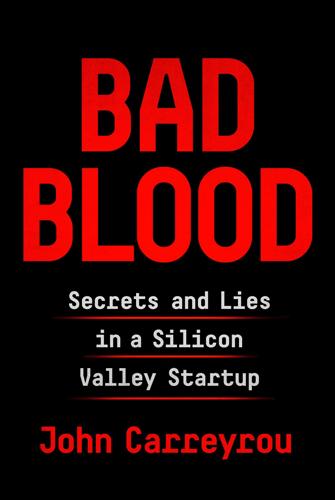
Bad Blood: Secrets and Lies in a Silicon Valley Startup
by
John Carreyrou
Published 20 May 2018
Forbes and The New Yorker, two other magazines that had played roles in Holmes’s rise to fame, also picked up the story, as did many other news outlets. In Silicon Valley, it became the talk of the town. Some venture capitalists reflexively jumped to Holmes’s defense. One of them was former Netscape cofounder Marc Andreessen, whose wife had just profiled Holmes in a cover story for the New York Times’s style magazine headlined “Five Visionary Tech Entrepreneurs Who Are Changing the World.” But others were less charitable, having long harbored doubts of their own. Why had Holmes always been so secretive about her technology?
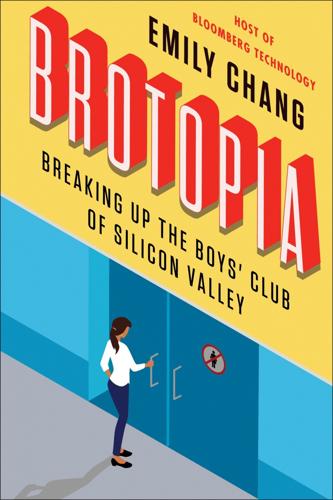
Brotopia: Breaking Up the Boys' Club of Silicon Valley
by
Emily Chang
Published 6 Feb 2018
For example, a business funded by Sequoia or Andreessen Horowitz during the initial Series A round will likely have little trouble finding follow-on investors for its Series B. But money isn’t the only advantage that flows from having a top firm on your team. The right VC can also open doors to key power players within both the Silicon Valley ecosystem and the larger business community. Marc Andreessen’s personal relationship with Mark Zuckerberg might, for example, be critical to an entrepreneur launching a company in any area where Facebook does business. VC firms also help with hiring, because they know the best talent in the Valley. And if the time comes for an IPO or sale, they can connect you to the best bankers and law firms around.
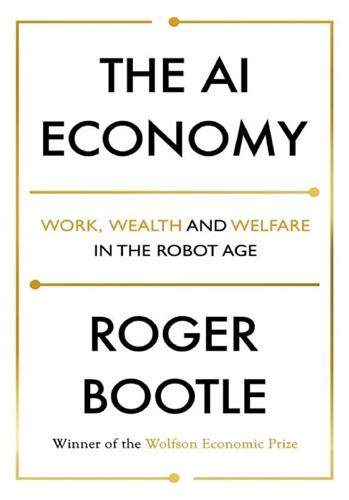
The AI Economy: Work, Wealth and Welfare in the Robot Age
by
Roger Bootle
Published 4 Sep 2019
IBM calls this the “Smarter Planet”; Cisco calls it the “Internet of Everything”; GE calls it “the Industrial Internet”; while the German government calls it “Industry 4.0.” But all these terms refer to the same thing. The idea is simply that sensors, chips, and transmitters will be embedded in umpteen objects all around us. The internet entrepreneur Marc Andreessen has said: “The end state is fairly obvious – every light, every doorknob will be connected to the internet.”12 And, of course, all this connectivity with the material world will be in just the form that can readily be analyzed and reacted to by robots and AI. But all such connected things will also be able to communicate directly with humans by “speaking” to them.

Blood and Oil: Mohammed Bin Salman's Ruthless Quest for Global Power
by
Bradley Hope
and
Justin Scheck
Published 14 Sep 2020
“It seems in those societies many make money by peddling connections, versus building things or applying intellectual rigor,” he later said. But the more established VCs’ attitudes seemed to change at a dinner at the Fairmont Hotel atop San Francisco’s Nob Hill. “I need a bridge between Saudi and Silicon Valley. I need you to help our reforms,” Mohammed told a group that included Marc Andreessen, Peter Thiel, John Doerr, and Michael Moritz, titans of venture capital with decades of experience backing start-ups that turned into multi-billion-dollar corporations. As the prince saw it, the venture capital model could be scaled indefinitely. If they made huge returns on relatively modest investments, imagine how much they could make if he boosted their capital tenfold.
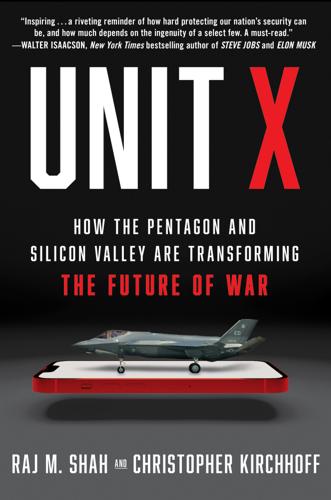
Unit X: How the Pentagon and Silicon Valley Are Transforming the Future of War
by
Raj M. Shah
and
Christopher Kirchhoff
Published 8 Jul 2024
But the experience had left him wary of Silicon Valley, and he’d made some comments in public to the effect that the Valley was full of hucksters and charlatans. The night before his visit to DIUx, we hosted Mattis at a dinner attended by some of the titans of technology. In a private room we had Mattis meet Marc Andreessen, the founder of Andreessen Horowitz, a top venture capital firm, and Sam Altman, the founder of Y Combinator, a startup incubator, who’d go on to found OpenAI, developer of ChatGPT, which launched an AI revolution in 2022. Andreessen assured Mattis that VCs wanted to invest in defense-related technology.
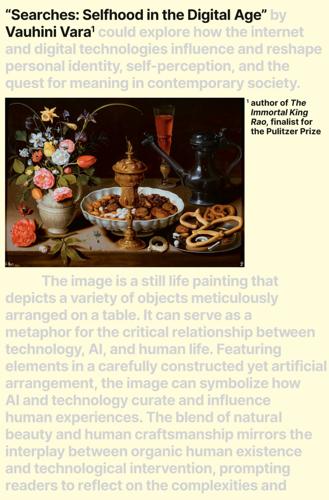
Searches: Selfhood in the Digital Age
by
Vauhini Vara
Published 8 Apr 2025
• • • I’m a female founder, in an environment in which less than 3 percent of venture-capital funding is invested in female-founded businesses, and I’m building a platform that will change the lives of girls and women, empowering them to retrieve all the lost objects of their lives. • • • Lest that sound self-marginalizing, let me be clear. I’m aware of what investors are looking for. As Marc Andreessen once put it, “We’re funding imperial, will-to-power people who want to crush their competition. Companies can only have a big impact on the world if they get big.” • • • With my subscription-based platform catering to the deepest desires of girls and women, I’m looking at a market the size of half the world’s population

The Hidden Globe: How Wealth Hacks the World
by
Atossa Araxia Abrahamian
Published 7 Oct 2024
Also in the project’s orbit are Mark Klugmann, a former speechwriter for Ronald Reagan and George H. W. Bush; Michael Strong, an education-reform activist who cowrote a book with Whole Foods founder John Mackey; Shanker Singham, a British American trade lawyer who loudly supported Brexit; and the American tech moguls Balaji Srinivasan, Marc Andreessen, and Peter Thiel. I started following Próspera from the outset, expecting, over and over, that it would fail. Honduras was too volatile. The idea was too wacky. The citizens of Roatán, according to news reports, did not seem wild about the prospect. And the people involved seemed, to me at least, to have their heads in the clouds.

Boom: Bubbles and the End of Stagnation
by
Byrne Hobart
and
Tobias Huber
Published 29 Oct 2024
But, as we’ll show, these bubbles, which are largely driven by financialization, low yields, and the lack of productive investment opportunities, need to be distinguished from innovation-accelerating bubbles. 4 “Safetyism” could here be defined as the West’s cultural bias toward suppression of risk-taking and submission to a quasi-absolute form of safety that attempts to regulate and control every sphere of social interaction and techno-economic relation. 5 An example of this view is articulated by Steven Pinker, who makes the claim that global trends of health, prosperity, safety, peace, knowledge, and happiness are going up and to the right. See Pinker, Enlightenment Now: The Case for Reason, Science, Humanism, and Progress (London: Penguin, 2018). 6 For an overview of the spiritual, cultural, and civilizational stakes involved in the perennial conflict between techno-optimism and techno-pessimism, see Marc Andreessen’s “The Techno-Optimist Manifesto,” A16z, October 16, 2023, https://a16z.com/the-techno-optimist-manifesto/. 7 For most of history, there was no expectation of infinite techno-scientific progress. On the contrary, in classical antiquity, innovation was considered to be outright heretical and dangerous, as it destabilized the natural order of divine or moral sovereignty.

Fortunes of Change: The Rise of the Liberal Rich and the Remaking of America
by
David Callahan
Published 9 Aug 2010
Steve Jobs was born in 1955. Bill Gates is the same age, as is Eric Schmidt, the “grown-up” in Google’s high command. Jeff Bezos of Amazon was born in 1964. The eBay billionaires Jeff Skoll and Pierre Omidyar were born in 1965 and 1967, respectively. Sergey Brin and Larry Page were both born in 1973. Marc Andreessen made a fortune on Netscape in the 1990s and would seem to be a senior statesman in Silicon Valley; he was born in 1971. Facebook’s Mark Zuckerberg, who could well emerge as one of the richest technologists of the twenty-first century, was born in 1984. Political scientists have long noted that civic participation rises with age.
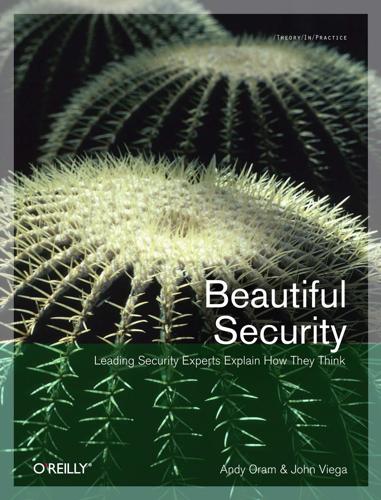
Beautiful security
by
Andy Oram
and
John Viega
Published 15 Dec 2009
Security economics may well provide a platform on which companies can demonstrate the cost-benefit ratios of various kinds of security and derive a competitive advantage implementing them. 164 CHAPTER NINE Platforms of the Long-Tail Variety: Why the Future Will Be Different for Us All A “platform” is a system that can be programmed and therefore customized by outside developers—users—and in that way, adapted to countless needs and niches that the platform’s original developers could not have possibly contemplated, much less had time to accommodate. —Marc Andreessen, founder of Netscape In October 2004, Chris Anderson, the editor in chief of the popular Wired Magazine, wrote an article about technology economics.§ The article spawned a book called The Long Tail (Hyperion) that attempts to explain economic phenomena in the digital age and provide insight into opportunities for future product and service strategies.
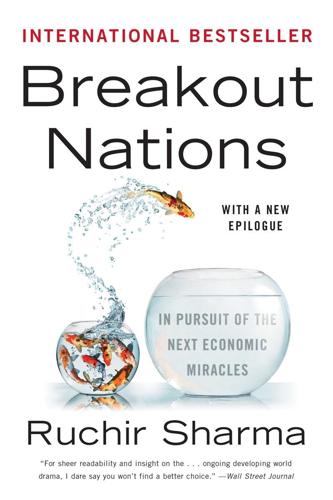
Breakout Nations: In Pursuit of the Next Economic Miracles
by
Ruchir Sharma
Published 8 Apr 2012
While Apple employs fifty thousand people and has a market capitalization that has risen fivefold over the last five years, the Taiwan companies that make gadgets for Apple employ millions but have seen their stock prices stagnate for lack of pricing power. The hardware is easy to replicate, which in turn cuts profit margins, while the software is highly profitable so long as it continues to evolve. Netscape founder Marc Andreessen has argued, in a Wall Street Journal essay called “Why Software Is Eating the World,” that two decades after the invention of the modern Internet, and a decade after the collapse of the Internet bubble, the software industry is at last reaching critical mass. The technology required to transform industries through software finally works and is accessible.

The Blockchain Alternative: Rethinking Macroeconomic Policy and Economic Theory
by
Kariappa Bheemaiah
Published 26 Feb 2017
By using code to perform repetitive tasks, software allows for large-scale automation of tasks that were previously the domain of skilled workers. In the past, technological evolution posed threats to manual jobs. But as machine learning, neural nets, and AI continue to make significant and rapid strides, the threat is now faced by skilled personnel who were employed to perform cognitive tasks (Refer to Sidebar 3-1). As Marc Andreessen said, “Software is eating the world.” Today, software is increasingly threatening anyone whose job function involves a repetitive framework. With automation and financialization posing the biggest risks to industrialized economies, policies are needed that address the changes in productivity gains.

No Filter: The Inside Story of Instagram
by
Sarah Frier
Published 13 Apr 2020
It would be swarming with venture capitalists, mostly because of Hunch’s already-successful executives: Caterina Fake, a cofounder of Flickr, a photo storage and sharing website that had sold to Yahoo! for a reported $35 million in 2005, and Chris Dixon, who’d sold a security company he cofounded in 2006. Over cocktails, Systrom met two important VCs with checkbooks: Marc Andreessen, a cofounder of Netscape, who ran Andreessen Horowitz, one of the valley’s hottest venture capital firms, and Steve Anderson, who ran a much quieter early-stage investing shop called Baseline Ventures. Anderson liked the fact that Systrom, with pedigrees from Stanford and Google and a confident personality, didn’t have any investors yet for his mobile idea.
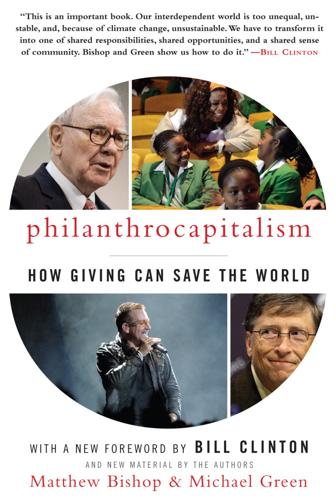
Philanthrocapitalism
by
Matthew Bishop
,
Michael Green
and
Bill Clinton
Published 29 Sep 2008
Although SV2 claims that its grants of over $2 million so far have made a big difference to the organizations it has supported, its greatest impact may be the training it has provided to some of its wealthier partners, who have gone on to be significant philanthropists in their own right. They include Jeff Skoll, the former boss of eBay; Jerry Yang, the founder of Yahoo!; and Marc Andreessen, the founder of Netscape (and now Arrillaga-Andreessen’s husband). Perhaps that is the ultimate venture philanthropy: investing in creating effective philanthropists. “THE BOTTOM-LINE QUESTION,” says Mario Morino, “is does this activity result in effective, meaningful change?” It is the same question that every true philanthrocapitalist asks, constantly, and that some can answer with more confidence than others.

New Laws of Robotics: Defending Human Expertise in the Age of AI
by
Frank Pasquale
Published 14 May 2020
See John Markoff, Machines of Loving Grace (New York: HarperCollins, 2015), which describes pioneering IA work by Doug Engelbart and a long line of proteges. See also Doug Engelbart, Augmenting Human Intellect: A Conceptual Framework (Washington, DC: Air Force Office of Scientific Research, 1962). 30. Marc Andreessen, “Why Software Is Eating the World,” Wall Street Journal, August 20, 2011, https://www.wsj.com/articles/SB10001424053111903480904576512250915629460. 31. Ryan Calo, “Robotics and the Lessons of Cyberlaw,” California Law Review 103, no. 3 (2015): 513–563. 32. Ian Kerr, “Bots, Babes and the Californication of Commerce,” Ottawa Law and Technology Journal 1 (2004): 285–325. 33.
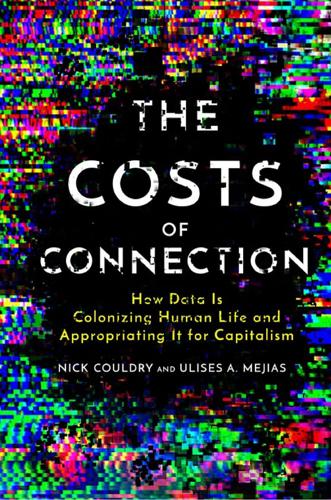
The Costs of Connection: How Data Is Colonizing Human Life and Appropriating It for Capitalism
by
Nick Couldry
and
Ulises A. Mejias
Published 19 Aug 2019
Because most users of Free Basics are people already connected to the internet who merely want to lower their data-plan bills, the report concludes that the program is motivated more by the desire to capture new audiences and less by a desire to help people bridge the digital divide. That is probably why in 2016, civil society in India organized to force the government to prevent Free Basics from being offered in that country,44 a move that drove Marc Andreessen (cofounder of Netscape and a Facebook investor) to lecture Indian civil society via Twitter on the economic futility of anticolonialism.45 Expand Indians have plenty of reason to be suspicious of foreign corporations. Founded in 1600, the East India Company by the year 1833 controlled five hundred thousand square miles of territory in South Asia, encompassing 93.7 million subjects paying 22,718,794 pounds a year to the British empire in taxation.

Binge Times: Inside Hollywood's Furious Billion-Dollar Battle to Take Down Netflix
by
Dade Hayes
and
Dawn Chmielewski
Published 18 Apr 2022
Stephenson and Stankey originally approached Kilar about the WarnerMedia job in 2019, after coming to rely on his advice as a member of its Technical Advisory Council, where he served alongside such luminaries as billionaire entrepreneur Mark Cuban, who cofounded the pioneering streaming service Broadcast.com; Ray Ozzie, Microsoft’s chief software architect; and Marc Andreessen, the Netscape founder turned venture capitalist. “It’s a once-in-a-lifetime opportunity and I thought that I would absolutely regret not getting in that sandbox, doing things that I think are going to matter for customers,” said Kilar. Entertainment industry veteran Peter Chernin helped set the stage for Kilar’s Hollywood revival.

The Coming Wave: Technology, Power, and the Twenty-First Century's Greatest Dilemma
by
Mustafa Suleyman
Published 4 Sep 2023
GO TO NOTE REFERENCE IN TEXT In the last six years “Research & Development,” in Artificial Intelligence Index Report 2021, Stanford University Human-Centered Artificial Intelligence, March 2021, aiindex.stanford.edu/wp-content/uploads/2021/03/2021-AI-Index-Report-_Chapter-1.pdf. GO TO NOTE REFERENCE IN TEXT Everywhere you look, software To paraphrase Marc Andreessen. GO TO NOTE REFERENCE IN TEXT At DeepMind we developed systems “DeepMind AI Reduces Google Data Centre Cooling Bill by 40%,” DeepMind, July 20, 2016, www.deepmind.com/blog/deepmind-ai-reduces-google-data-centre-cooling-bill-by-40. GO TO NOTE REFERENCE IN TEXT With 1.5 billion parameters “Better Language Models and Their Implications,” OpenAI, Feb. 14, 2019, openai.com/blog/better-language-models.

Innovation and Its Enemies
by
Calestous Juma
Published 20 Mar 2017
The £1 million prize was launched to reward and celebrate those responsible for groundbreaking innovations of global benefit to humanity. Robert Kahn, Vinton Cerf, and Louis Pouzin pioneered the development of protocols that constituted the fundamental architecture of the Internet, while Tim Berners-Lee created the World Wide Web and greatly stretched the use of the Internet beyond file transfer and email. Marc Andreessen, while a student in collaboration with colleagues, wrote the Mosaic browser, which was extensively distributed and popularized worldwide web access. These pioneering engineering achievements revolutionized the way humans communicate. They allowed for the creation of new species of industries that could not have been developed using previously existing technologies.

Machines of Loving Grace: The Quest for Common Ground Between Humans and Robots
by
John Markoff
Published 24 Aug 2015
Wiener, deeply attuned to the potential dire “social consequences,” had already unsuccessfully attempted to contact other unions, and his frustration came through clearly in the Reuther letter. By late 1942 it was clear to Wiener that a computer could be programmed to run a factory, and he worried about the ensuing consequences of an “assembly line without human agents.”3 Software had not yet become a force that, in the words of browser pioneer Marc Andreessen, would “eat the world,” but Wiener portrayed the trajectory clearly to Reuther. “The detailed development of the machine for particular industrial purpose is a very skilled task, but not a mechanical task,” he wrote. “It is done by what is called ‘taping’ the machine in the proper way, much as present computing machines are taped.”4 Today we call it “programming,” and software animates the economy and virtually every aspect of modern society.
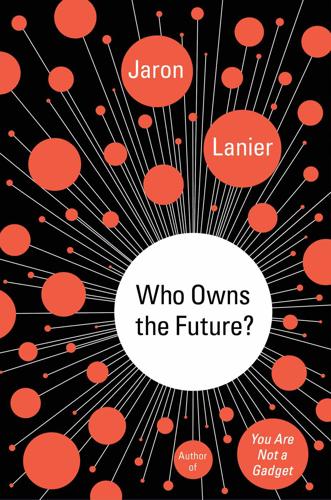
Who Owns the Future?
by
Jaron Lanier
Published 6 May 2013
.* However, if it is a precedent to be repeated in transportation, manufacturing, medicine, education, and other major sectors, the overall economy will shrink, making capitalism a little less viable in the long term. Well, that’s a restatement of a core idea of this book, but at any rate this much can be said: * The portrayal of software as an insatiable gourmand is common in Silicon Valley. “Software Will Eat Everything” is the phrasing from a well-known essay by Web pioneer and tycoon Marc Andreessen. • By the time books have mostly gone digital, the owners of the top Internet servers that route readers, probably run by Silicon Valley companies, will be more powerful and richer than they were before. Some of these prospects appeal to me. My favorite is the potential for experiments merging books with apps, games, music, movies, virtual worlds, and all the other forms that can be sent over the ’net.
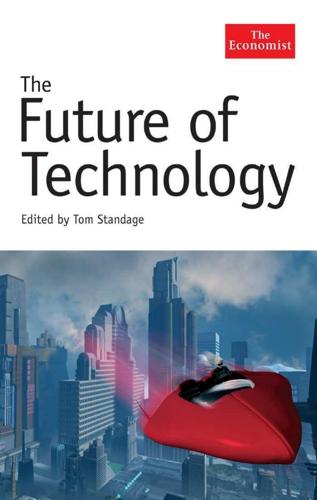
The Future of Technology
by
Tom Standage
Published 31 Aug 2005
And college professors would need a new tool to find out whether a student had quietly lifted a paper from the internet. Yet many it firms would not be too unhappy if Google were to disappear. They certainly dislike the company’s message to the world: you do not need the latest and greatest in technology to offer outstanding services. In the words of Marc Andreessen of Netscape fame, now chief executive of Opsware, a software start-up: “Except applications and services, everything and anything in computing will soon become a commodity.” Exactly what is meant by “commoditisation”, though, depends on whom you talk to. It is most commonly applied to the pc industry.
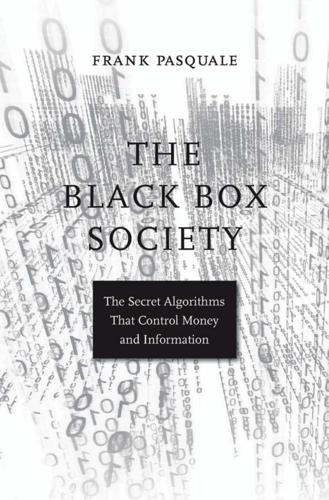
The Black Box Society: The Secret Algorithms That Control Money and Information
by
Frank Pasquale
Published 17 Nov 2014
That Silicon Valley engineers and managers are in charge of their fortunes. Of course, Google isn’t the only press baron on the horizon; Amazonification, Facebookization, and Twitterification also beckon. Some will further hollow out once-hallowed properties. Others will invest, as venture capitalist Marc Andreessen recommends. Though he strikes fear into publishers, Amazon’s Jeff Bezos has not yet reduced writers at his newspaper (the Washington Post) to the status of Mechanical Turkers or warehouse pickers.213 But we should not assume media independence as tech firms swallow more of the revenue that might have once gone to journalists.
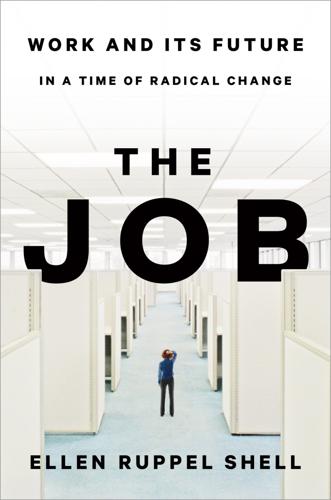
The Job: The Future of Work in the Modern Era
by
Ellen Ruppel Shell
Published 22 Oct 2018
In the 1970s, Intel cofounder Robert Noyce declared, “Remaining non-union is an essential for survival for most of our companies” and “a very high priority for management.” Twenty years later, Steve Jobs denounced unions as the “essential problem,” and venture capitalist and Netscape cofounder Marc Andreessen observed that “there may have been a time and a place for unions, but not sure I see it anymore.” Nevertheless, efforts to unionize the digital workforce have succeeded in fits and starts, and, critically, public support for unions has been on the rise for nearly a decade: in 2017, a solid majority of Americans voiced their approval.
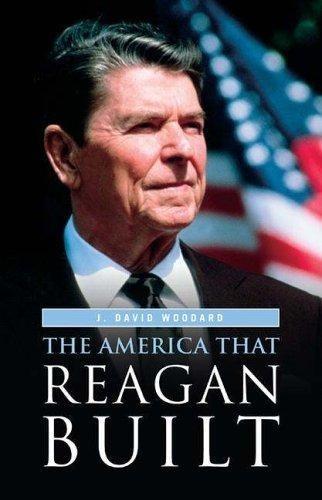
The America That Reagan Built
by
J. David Woodard
Published 15 Mar 2006
The most celebrated tales were of the new entrepreneurs and bold risk-taking venture capitalists who became the richest of the very rich in the information age. Young computer ‘‘geeks’’ and ‘‘nerds’’ enjoyed celebrity status and luxuriant lifestyles beyond their wildest dreams. For example, at age twenty-four Marc Andreessen left the University of Illinois’s National Center for Supercomputing Applications to go west to Silicon Valley. He was soon worth $130 million. In the daily press, stories from the California economic wonderland were told over and over: of a six-month waiting list for new Porsches at the car dealership, of a survey showing that sixty-four millionaires were being created each day in Silicon Valley, and of the new executives who paid an additional million dollars beyond the $2.4 million asking price for a house.

The Personal MBA: A World-Class Business Education in a Single Volume
by
Josh Kaufman
Published 2 Feb 2011
Any skill or knowledge that helps you create value, market, sell, deliver value, or manage finances is Economically Valuable—accordingly, these are the topics we’ll discuss in this book. SHARE THIS CONCEPT: http://book.personalmba.com/economically-valuable-skills/ The Iron Law of the Market Market matters most; neither a stellar team nor fantastic product will redeem a bad market. Markets that don’t exist don’t care how smart you are. —MARC ANDREESSEN, VENTURE CAPITALIST AND FOUNDER OF NETSCAPE AND NING.COM What if you throw a party and nobody shows up? In business, it happens all the time. Dean Kamen, a renowned and prolific inventor whose creations include the Sterling engine, the world’s first insulin pump, and water purification devices, poured over $100 million into the development of the Segway PT, a $5,000, two-wheeled, self-balancing scooter that he claimed would revolutionize personal transportation “in the same way that the car replaced the horse and buggy.”
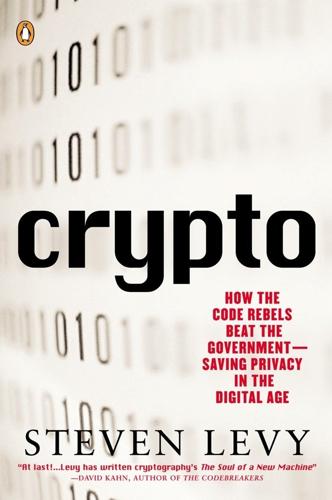
Crypto: How the Code Rebels Beat the Government Saving Privacy in the Digital Age
by
Steven Levy
Published 15 Jan 2002
And then the cypherpunks hit upon an even better target for a brute-force attack: Netscape. In 1993, two students at the University of Illinois had engaged in a coffeehouse conversation that would not only change the course of the twenty-two-year-old international network called the Internet but would profoundly affect the adoption of crypto. One of them, a chunky undergrad named Marc Andreessen, had recently been learning about a new system on the Internet brashly named the World Wide Web by its inventor, Tim Berners-Lee, a British computer scientist working in Switzerland. The Web was an ingenious way to publish and get access to information on the Net, but only a few in the technical community had adopted the system.
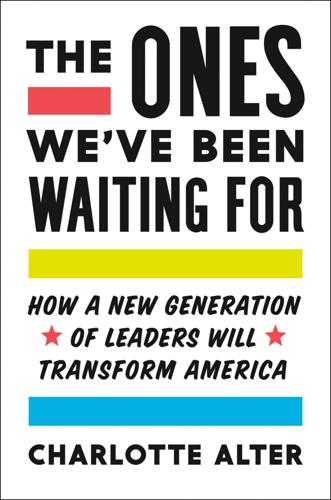
The Ones We've Been Waiting For: How a New Generation of Leaders Will Transform America
by
Charlotte Alter
Published 18 Feb 2020
There were more Obama delegates under thirty-six in Denver than at any convention in memory—including some who wouldn’t be old enough to legally vote until later in that year. By then, the Obama campaign had fully mastered how to use digital organizing and social media to reach young voters. “I think it is very significant that he was the first post-boomer candidate for president,” Marc Andreessen, cofounder of Netscape and a major tech investor, told The New York Times. “He was the first politician I dealt with who understood that the technology was a given and that it could be used in new ways.” A Pew study later found that roughly three-quarters of Americans under twenty-five used the internet to participate in the 2008 campaign.

Like, Comment, Subscribe: Inside YouTube's Chaotic Rise to World Domination
by
Mark Bergen
Published 5 Sep 2022
A year after Google’s YouTube acquisition, Hollywood’s power brokers, aware of how digital music had destroyed the recording industry, had no interest in suffering the same fate. From one camp Morris had invited familiar faces—TV network execs, a screenwriter, and a sprinkling of movie stars. The other side included a Sequoia investor; Marc Andreessen, the software wunderkind behind the Netscape browser; and two guys from Google. Jordan Hoffner, a YouTube director with a horseshoe hairline and fashionable glasses, sat on tech’s side of the soiree. He knew the other side well; he had spent twelve years at NBC before joining YouTube’s Head unit.
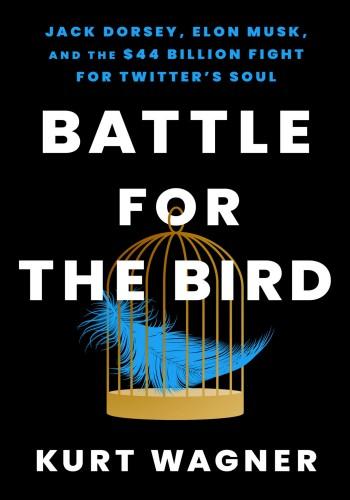
Battle for the Bird: Jack Dorsey, Elon Musk, and the $44 Billion Fight for Twitter's Soul
by
Kurt Wagner
Published 20 Feb 2024
Both sides started to subpoena anyone and everyone who seemed relevant to the deal. Jack Dorsey was subpoenaed, of course, and so were Kayvon Beykpour and Bruce Falck. Twitter subpoenaed virtually every bank or investment group that might have had a conversation with Musk, plus several of his friends and business partners. Larry Ellison received a subpoena, as did Marc Andreessen, whose venture capital firm had given Musk $400 million for the deal. When David Sacks, the former PayPal exec who was friends with Musk, received his subpoena, he held up the massive stack of paperwork during an interview on Bloomberg Television, calling it an “overly broad fishing expedition.”

I'm Feeling Lucky: The Confessions of Google Employee Number 59
by
Douglas Edwards
Published 11 Jul 2011
.* This was almost single-handedly the work of Michael Schmitt, an engineer who took it upon himself to conduct a global search to track down tapes and CD backups of the earliest Usenet posts and the hardware that could read them. He recovered for posterity the first Usenet mention of Microsoft, Tim Berners-Lee's first posted reference to the "World Wide Web," and Marc Andreessen's public disclosure of the Mosaic web browser that would become Netscape. "If there were justice in the world," wrote a formerly disappointed Usenetter, "you guys would be rich and Bill Gates would be standing in line waiting for watery soup." Not that Larry and Sergey needed affirmation that they had made the right call, but still, it was nice to hear.

Chaos Monkeys: Obscene Fortune and Random Failure in Silicon Valley
by
Antonio Garcia Martinez
Published 27 Jun 2016
In the future, anywhere nontrivial decisions took place, it would be computers talking to one another, with humans involved only in the writing of the logic itself. Finance saw the innovation first, because the stakes were high, and the value of an incremental computational advantage was very large. To paraphrase the very quotable Silicon Valley venture capitalist Marc Andreessen, in the future there will be two types of jobs: people who tell computers what to do, and people who are told by computers what to do. Wall Street was merely the first inkling. The next place where this shift would be seen at whopping scale in terms of both money and technology (though I didn’t realize at the time) was in Internet advertising.

More: The 10,000-Year Rise of the World Economy
by
Philip Coggan
Published 6 Feb 2020
By 1985, 2,000 computers were connected to the network, dubbed the ARPANET.14 Tim Berners-Lee, a software engineer at CERN, the particle physics laboratory in Geneva, developed a protocol and a language, the Hypertext Transfer Protocol, or HTTP, which allowed computers to talk to each other and enabled users to send links to individual documents. Others adopted the system, which was known as the World Wide Web. Further steps were still needed before the web, or internet, could be commercially useful. A browser called Mosaic was developed in the early 1990s by Marc Andreessen and Eric Bina at the University of Illinois; and, along with Jim Clark, Andreessen then founded Netscape, the company that started the boom in internet shares. Eventually, Andreessen became one of the best-known venture capitalists in Silicon Valley. Internet service providers like AOL, meanwhile, brought access to the general public.

Consumed: How Markets Corrupt Children, Infantilize Adults, and Swallow Citizens Whole
by
Benjamin R. Barber
Published 1 Jan 2007
But because de facto standards are supported by the marketplace rather than by law, they are chosen for the right reasons and to get replaced when something truly better shows up.”79 In his boosterist paean to new technologies called The World Is Flat, Thomas L. Friedman rightly extols the pioneering work of Marc Andreessen in developing the Mosaic web browser, which set an industry standard and turned the internet into a usable technology.80 What he fails to notice is that it was not Andreessen the pioneer but Gates the rational consolidator who fashions the consumer monopoly and makes the fortune off of pioneers who came first.

We Are the Nerds: The Birth and Tumultuous Life of Reddit, the Internet's Culture Laboratory
by
Christine Lagorio-Chafkin
Published 1 Oct 2018
This cadre included a few well-known venture capitalists, such as Dave McClure, who ran an incubator called 500 Startups; Keith Rabois, a fellow PayPal Mafioso of Wong’s and a partner at Khosla Ventures; Paul Buchheit, the creator of Gmail who now worked at Y Combinator; Thrive Capital founder Joshua Kushner, the brother of Donald Trump’s son-in-law, Jared; and Marc Andreessen, the Netscape cofounder who’d cofounded the powerful venture capital firm Andreessen Horowitz. Also mentioned were some people familiar to the employees, including Ohanian, Pao, and Jeremy Edberg, Reddit’s original systems administrator. Wong’s sudden announcement flummoxed some employees. He had assured them there’d be transparency internally when it came to bringing on outside “strategic investors.”
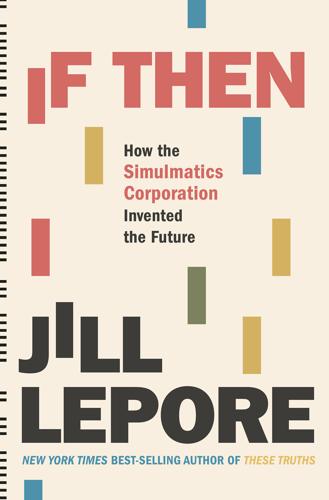
If Then: How Simulmatics Corporation Invented the Future
by
Jill Lepore
Published 14 Sep 2020
They did not consider the intelligence of women to be intelligence; they did not consider a female understanding of human behavior to be knowledge. They built a machine to control and predict what they could not. They are the long-dead, white-whiskered grandfathers of Mark Zuckerberg and Sergey Brin and Jeff Bezos and Peter Thiel and Marc Andreessen and Elon Musk. The Simulmatics Corporation is a missing link in the history of technology, a clasp that fastens the first half of the twentieth century to the beginning of the twenty-first, a future in which humanity’s every move is predicted by algorithms that attempt to direct and influence our each and every decision through the simulation of our very selves, this particular hell.

Fancy Bear Goes Phishing: The Dark History of the Information Age, in Five Extraordinary Hacks
by
Scott J. Shapiro
He directed the creation of Microsoft Network Online as a competitor to the other walled gardens. Microsoft insisted on using its own standards instead of TCP/IP. Even if users wanted to browse the internet, they could not do so from Microsoft’s service. (This mistake would cost Microsoft millions to fix.) Others were placing different bets. Marc Andreessen, an undergraduate at the University of Illinois and lead developer of the Mosaic browser, left for Silicon Valley. In April of 1994, he joined forces with Jim Clark, former CEO of Silicon Graphics, to form a new venture called Netscape. They took the free Mosaic code, added features, and made it more reliable and easier to use.
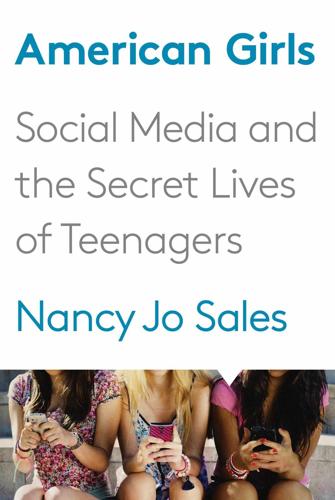
American Girls: Social Media and the Secret Lives of Teenagers
by
Nancy Jo Sales
Published 23 Feb 2016
And yet despite evidence of how the anonymity of social media can contribute to antisocial behavior, anonymous apps such as Whisper, Secret, Yik Yak, and Sneeky have multiplied in recent years, as has the debate over their ethical standing. On Twitter in 2014, Netscape cofounder and Silicon Valley venture capitalist Marc Andreessen criticized anonymous apps—also known as “bullying apps”—as well as their investors for failing to take responsibility for their negative impact. “As designers, investors, commentators,” Andreessen wrote in a series of twelve tweets, “we need to seriously ask ourselves whether some of these systems are legitimate and worthy…not from an investment return point of view, but from an ethical and moral point of view.”
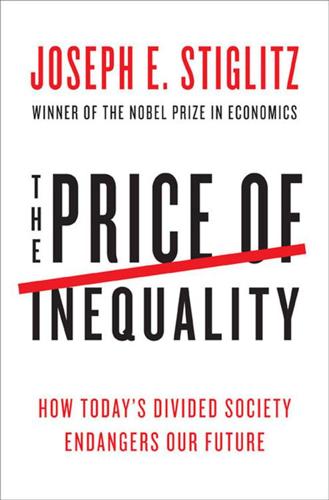
The Price of Inequality: How Today's Divided Society Endangers Our Future
by
Joseph E. Stiglitz
Published 10 Jun 2012
I thought the evidence that American Airlines had engaged in predatory behavior was especially compelling, but the judge didn’t need to look at the evidence: the Supreme Court had ruled that there was just too strong a presumption against the existence of predatory pricing to make prosecution possible. 35. One of Netscape’s founders, Marc Andreessen, was part of the team at the University of Illinois at Urbana-Champaign that developed Mosaic, the first widely used web browser, which was a project of the university’s National Center for Supercomputing Applications (one of the original sites of the National Science Foundation’s Supercomputer Centers Program).
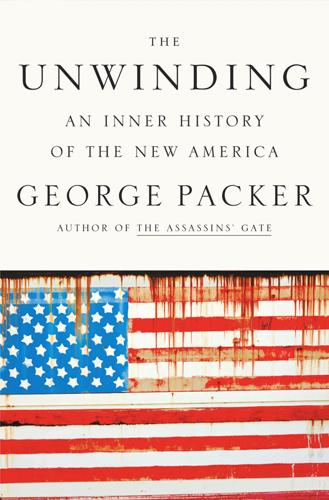
The Unwinding: An Inner History of the New America
by
George Packer
Published 4 Mar 2014
In the years since the Macintosh, the computer industry had seen more consolidation than innovation, and the undisputed winner was in Seattle. The most important Silicon Valley company to come along since Apple was originally called Mosaic, started in 1994 by Jim Clark, a former Stanford professor and founder of Silicon Graphics, and Marc Andreessen, a University of Illinois graduate who, at twenty-two, had just the year before developed the first graphical browser for the World Wide Web. In 1995, the year that the last restrictions on commercial use of the Internet were lifted, their company went public as Netscape, headquartered south of Stanford in Mountain View.

The Billionaire's Apprentice: The Rise of the Indian-American Elite and the Fall of the Galleon Hedge Fund
by
Anita Raghavan
Published 4 Jun 2013
He could not have picked a better moment to pour money into technology stocks. The industry was on the cusp of an intoxicating bubble that would make brash young kids—the exuberant entrepreneurs of the tech world—wealthy overnight. The surge began on August 9, 1995, when Netscape, the brainchild of Marc Andreessen, then a twenty-three-year-old computer prodigy, went public. Netscape made Web browsers that ordinary people could use. It transformed the Internet, making it accessible to millions and millions of consumers. It spawned a virtual world with a revolutionary new business platform where in time hundreds of billions of dollars in commerce would flow.

Peer-to-Peer
by
Andy Oram
Published 26 Feb 2001
Peer-to-peer has captured the imagination of technologists, corporate strategists, and venture capitalists alike. Peer-to-peer is even getting its own book. This isn’t just a passing fad. Certain aspects of peer-to-peer are mundane. Certain other aspects of it are so interesting as to get notables including George Colony, Andy Grove, and Marc Andreessen excited. That doesn’t happen often. The power of peer-to-peer and its real innovation lies not just in its file-sharing applications and how well those applications can fly in the face of copyright holders while flying under the radar of legal responsibility. Its power also comes from its ability to do what makes plain sense and what has been overlooked for so long.

Generations: The Real Differences Between Gen Z, Millennials, Gen X, Boomers, and Silents—and What They Mean for America's Future
by
Jean M. Twenge
Published 25 Apr 2023
Videos of drugged kids after the dentist, epic fails, makeup tutorials, and funny cats (so many funny cat videos) followed. In the 2020s, it’s hard to remember a time when YouTube didn’t exist. Of course, sites like YouTube couldn’t exist without the internet—and Gen X was there from the beginning. Gen X’er Marc Andreessen (b. 1971), then a graduate student at the University of Illinois, wrote Mosaic (later called Netscape), the first widely used web browser, in 1993. Jerry Yang (b. 1968) and David Filo (b. 1966) founded Yahoo!, the internet search engine of the 1990s—which was soon replaced by Google, founded in 1999 by Larry Page (b. 1973) and Sergey Brin (b. 1973).
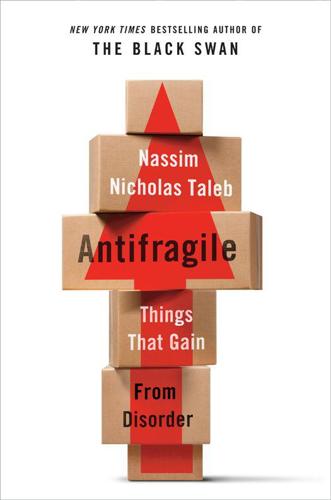
Antifragile: Things That Gain From Disorder
by
Nassim Nicholas Taleb
Published 27 Nov 2012
(i) Look for optionality; in fact, rank things according to optionality, (ii) preferably with open-ended, not closed-ended, payoffs; (iii) Do not invest in business plans but in people, so look for someone capable of changing six or seven times over his career, or more (an idea that is part of the modus operandi of the venture capitalist Marc Andreessen); one gets immunity from the backfit narratives of the business plan by investing in people. It is simply more robust to do so; (iv) Make sure you are barbelled, whatever that means in your business. THE CHARLATAN, THE ACADEMIC, AND THE SHOWMAN I end the chapter on a sad note: our ingratitude toward many who have helped us get here—letting our ancestors survive.

The Practice of Cloud System Administration: DevOps and SRE Practices for Web Services, Volume 2
by
Thomas A. Limoncelli
,
Strata R. Chalup
and
Christina J. Hogan
Published 27 Aug 2014
The SREs build tools that are specifically engineered to make it easy to achieve high-quality results without advanced knowledge. DevOps is rapidly expanding from a niche technique for running web sites to something that can also be applied to enterprise and industrial system administration. There is nothing uniquely web-centric about DevOps. Marc Andreessen famously said, “Software eats the world” (Anderson 2012). As this happens, all facets of society will require well-run operations. Thus, DevOps will be applied to all facets of computing. 8.4 DevOps Values and Principles DevOps can be divided into roughly four main areas of practice (Kartar 2010): • Relationships • Integration • Automation • Continuous improvement 8.4.1 Relationships In a traditional environment, the tools and scripts are seen as the primary focus of operational maintenance.
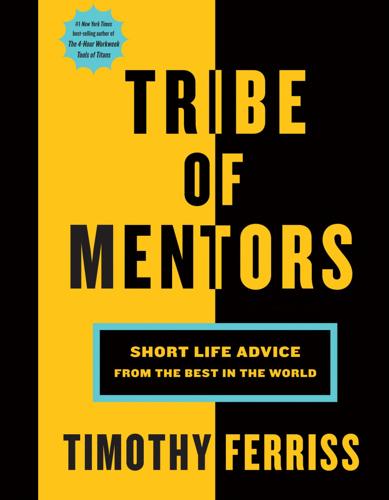
Tribe of Mentors: Short Life Advice From the Best in the World
by
Timothy Ferriss
Published 14 Jun 2017
If anything sounds silly or off, assume it was my mistake. Everyone in this book is amazing, and I’ve done my best to showcase that. Patterns Where guests have related recommendations or philosophies, I’ve noted them in parentheses. For instance, if Jane Doe tells a story about the value of testing higher prices, I might add “(see Marc Andreessen, page 170),” since his answer to “If you could have a billboard anywhere, what would you put on it?” was “Raise prices,” which he explains in depth. Humor! I’ve included ample doses of the ridiculous. First of all, if we’re serious all the time, we’ll wear out before we get the truly serious stuff done.

Blueprint: The Evolutionary Origins of a Good Society
by
Nicholas A. Christakis
Published 26 Mar 2019
—Neil Shubin, author of Your Inner Fish “Christakis takes us on a spellbinding tour of how evolution brings people together, setting the stage for our modern world where online networks connect people in new and unprecedented ways. Our genes don’t work in isolation; rather, they equip our species with the capacity to join together and make great things. This powerful and fascinating book shows the fundamental good that lies within us, that connects us, and that helps us cooperate beyond the survival of the fittest.” —Marc Andreessen, cofounder of Andreessen Horowitz “In this provocative book, Christakis makes a thorough and compelling case that we are hardwired to value goodness in our societies—and thus innately compelled to participate in building, strengthening, and enhancing the common good. In an era marked by polarization and rising inequality, Christakis marshals science and history into a message of hope.”

This Is How They Tell Me the World Ends: The Cyberweapons Arms Race
by
Nicole Perlroth
Published 9 Feb 2021
Hackers wrote off the memo that launched Gates’s Trustworthy Computing Initiative as a joke. Microsoft had been slapping together sloppy software, riddled with holes, for years. And now everyone was supposed to believe Gates had found religion? Microsoft was the dominant player in the PC market, but ever since two technical prodigies at the University of Illinois by the names of Marc Andreessen and Eric Bina created the first internet browser, Redmond had been playing catch-up. The internet had been around for decades, since 1969 in fact, in an early incarnation cobbled together at the Pentagon. Since then it had evolved considerably. But it was Andreessen and Bina’s creation of the first Mosaic internet browser in the mid-1990s that opened the internet up to the masses.

Power and Progress: Our Thousand-Year Struggle Over Technology and Prosperity
by
Daron Acemoglu
and
Simon Johnson
Published 15 May 2023
On the other hand, there are some very talented programmers who could design sophisticated algorithms. As Mark Zuckerberg puts it, “Someone who is exceptional in their role is not just a little better than someone who is pretty good. They are 100 times better.” Or in the words of Netscape cofounder Marc Andreessen, “Five great programmers can completely outperform 1,000 mediocre programmers.” Based on this worldview, it is desirable to use top-down design of technology by exceptional talent to limit human mistakes and their costs in workplaces. Replacing workers with machines and algorithms then becomes acceptable, and collecting massive amounts of data about people comes to be viewed as tolerable.

Elon Musk
by
Walter Isaacson
Published 11 Sep 2023
She went backstage to say how glad she was that he was trying to buy Twitter, and they chatted for a couple of minutes. When Taibbi was preparing to publish his Twitter Files in early December, Musk realized there was too much material for one journalist to digest. His investor and fellow free speech tech bro Marc Andreessen suggested he call in Weiss, so on the plane flying back from his quick trip to New Orleans to talk to President Macron, he sent the unexpected text that she got on the evening of December 2. She and Bowles, along with their three-month-old baby, rushed to get on a flight to San Francisco two hours later.

Seeking SRE: Conversations About Running Production Systems at Scale
by
David N. Blank-Edelman
Published 16 Sep 2018
He has spoken at M3AAWG, Velocity, SREcon, and SANOG on reliability, authentication, and security. 1 Senge, Peter M. (1990). The Fifth Discipline: The Art and Practice of the Learning Organization. London: Random House. 2 Tim O’Reilly, WTF? What’s the Future and Why It’s Up to Us 3 Lecture on “Electrical Units of Measurement” (May 3, 1883), published in Popular Lectures, Vol. I, p. 73. 4 Marc Andreessen [paywall], “Why Software Is Eating The World”, republished at Andreessen Horowitz. 5 Peng Huang, Chuanxiong Guo, Lidong Zhou, Jacob R. Lorch, Yingnong Dang, Murali Chintalapati, Randolph Yao, “Gray Failure: The Achilles’ Heel of Cloud-Scale Systems” 6 Jude Karabus, “BA’s ‘global IT system failure’ was due to ‘power surge’”. 7 Gareth Corfield, “BA IT systems failure: Uninterruptible Power Supply was interrupted”. 8 Cited by John Allspaw: Koen, Billy V. (1985).

Coders at Work
by
Peter Seibel
Published 22 Jun 2009
So they're like, “I expected this to launch in half a second and it's taking 14 seconds. That's ridiculous. I can't use this.” Seibel: Why did you leave Lucid? Zawinski: Lucid was done. There'd been a bunch of layoffs. I sent mail to a bunch of people I know saying, “Hey, looks like I'm going to need a new job soon” and one of those people was Marc Andreessen and he said, “Oh, funny you should mention that, because we just started a company last week.” And that was that. Seibel: So you went to Netscape. What did you work on there? Zawinski: I pretty much started right away doing the Unix side of the browser. There had been maybe a few days' worth of code written on it so far.

Designing Data-Intensive Applications: The Big Ideas Behind Reliable, Scalable, and Maintainable Systems
by
Martin Kleppmann
Published 17 Apr 2017
theguardian.com, November 10, 2016. [92] Donella H. Meadows and Diana Wright: Thinking in Systems: A Primer. Chelsea Green Publishing, 2008. ISBN: 978-1-603-58055-7 550 | Chapter 12: The Future of Data Systems [93] Daniel J. Bernstein: “Listening to a ‘big data’/‘data science’ talk,” twitter.com, May 12, 2015. [94] Marc Andreessen: “Why Software Is Eating the World,” The Wall Street Journal, 20 August 2011. [95] J. M. Porup: “‘Internet of Things’ Security Is Hilariously Broken and Getting Worse,” arstechnica.com, January 23, 2016. [96] Bruce Schneier: Data and Goliath: The Hidden Battles to Collect Your Data and Control Your World.
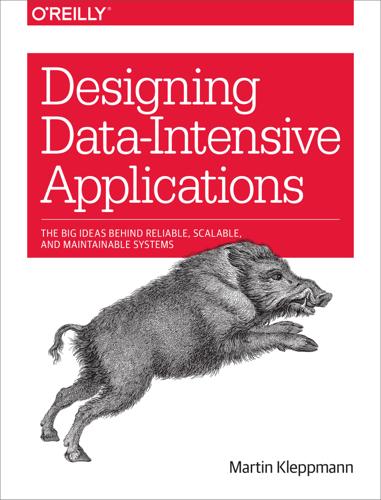
Designing Data-Intensive Applications: The Big Ideas Behind Reliable, Scalable, and Maintainable Systems
by
Martin Kleppmann
Published 16 Mar 2017
[91] Olivia Solon: “Facebook’s Failure: Did Fake News and Polarized Politics Get Trump Elected?” theguardian.com, November 10, 2016. [92] Donella H. Meadows and Diana Wright: Thinking in Systems: A Primer. Chelsea Green Publishing, 2008. ISBN: 978-1-603-58055-7 [93] Daniel J. Bernstein: “Listening to a ‘big data’/‘data science’ talk,” twitter.com, May 12, 2015. [94] Marc Andreessen: “Why Software Is Eating the World,” The Wall Street Journal, 20 August 2011. [95] J. M. Porup: “‘Internet of Things’ Security Is Hilariously Broken and Getting Worse,” arstechnica.com, January 23, 2016. [96] Bruce Schneier: Data and Goliath: The Hidden Battles to Collect Your Data and Control Your World.
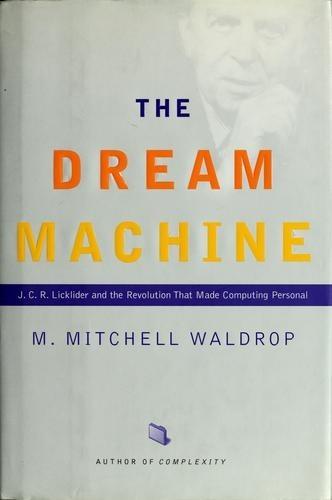
The Dream Machine: J.C.R. Licklider and the Revolution That Made Computing Personal
by
M. Mitchell Waldrop
Published 14 Apr 2001
On the last leg toward home, Lick seemed to be in a nostalgic, sentimental mood, as if he were very far away. "It was unusual for him to be that far back in ::- Writing a new browser wasn't especially hard, once you knew how. And by 1992 or so, as the Web became more popular, computer-science grad students all over the world were dOIng it as a way of exercising their programming skills. Take Marc Andreessen, for example, a grad student at the University of Illinois's National Center for Supercomputing Applications, one of the NSF's supercomputer centers. Along with staff member Eric Bina, he created a browser for X-Windows, the Unix graphical interface. Mosaic, as they called it, wasn't really any better than anybody else's browser, at least at first.

Palo Alto: A History of California, Capitalism, and the World
by
Malcolm Harris
Published 14 Feb 2023
The free program put a pretty skin on the World Wide Web—it presented images in-line, on pages, instead of as pop-out files, for example—making it easier to use, and brought the internet into the home and onto Microsoft-powered personal computers. Mosaic rapidly expanded the internet user base, and it was obvious to Clark that the browser was the next thing, even if it wasn’t obvious how to make money off of it. He got in touch with the leader of the Illinois browser project, a young man named Marc Andreessen, who, luckily, had just moved to California. Drawing on their networks at SGI and Illinois, the two formed a company that used the Mosaic name until the university gave them a hard time. They changed it to Netscape and they called their version of the Illinois browser Navigator. The projections for rapid adoption were right on, and though the web wasn’t fast enough to enable most people to download the free software, it spread via floppy disk.
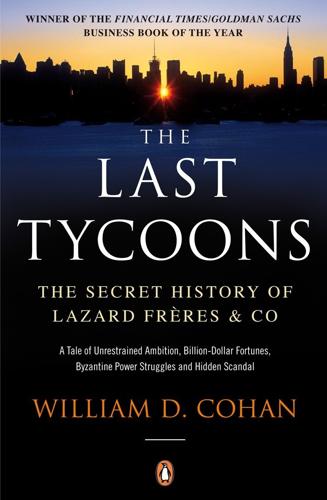
The Last Tycoons: The Secret History of Lazard Frères & Co.
by
William D. Cohan
Published 25 Dec 2015
He and his three partners committed to invest a minimum of $20 million in the fund, and certain of their family members agreed to invest another $10 million. Although the investor list is private, TALK magazine speculated it included the likes of Steve Case, Mort Zuckerman, Arthur Sulzberger Jr., Michael Ovitz, Andrew Heyward, Alex Mandl, Steve Brill, Lorne Michaels, and Harvey Weinstein. The Quadrangle Group advisory board consists of Marc Andreessen, Barry Diller, Amos Hostetter, Craig McCaw, and Rob Glaser--all of whom have put money into the fund (as have I, in full disclosure). Like most other private-equity funds, Quadrangle investors pay to the general partners--Rattner et al.--a fee of 1.75 percent per year, payable quarterly in advance, of the money committed to the fund.